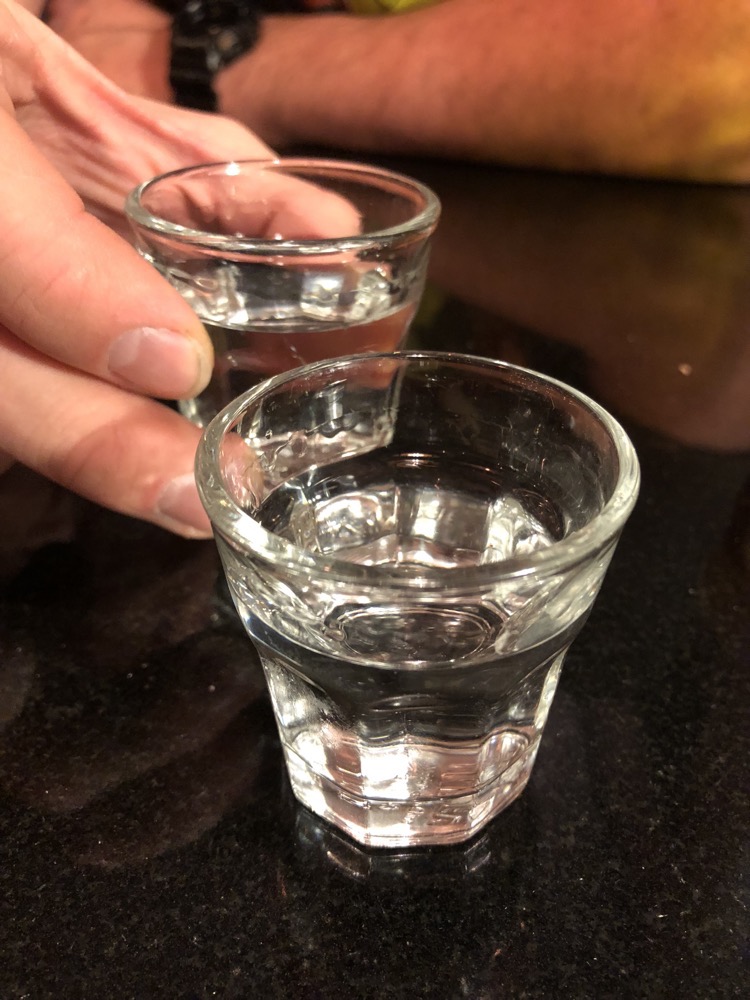New room with new bed proved to be worth its weight in gold. Slept much better, which is to say I feel like I had some sleep compared to last night on the ‘you people knew this stupid bed was broken and I bet it will still be broken next month’. So be it. Someone else’s problem now and a really shitty Trip Advisor review for you guys.
We are heading to Warsaw today, but first, we are planning on heading a ways in the opposite direction to the Wieliczka Salt Mine. Located in the town of the same name, the mine has been open since the 13th century and produced table salt right up until 2007, making it one of the oldest salt mines in operation. Throughout that entire time, the royal mine was run by the Żupy krakowskie Salt Mines company.


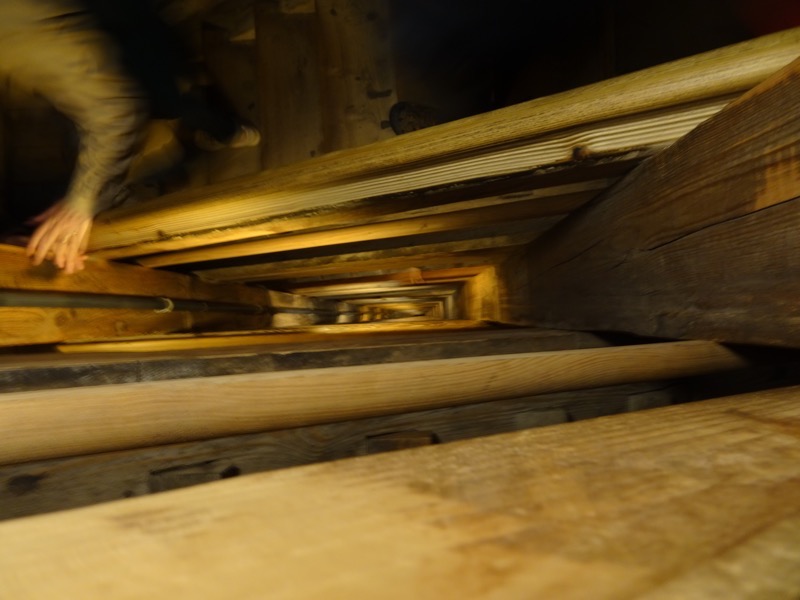 The Wieliczka salt mine reaches a total depth of 327 meters and is over 287 kilometres long. Since the mined ceased commercial operations it has become a major tourist attraction – there are underground chapels and an enormous reception room that is used for private functions, including weddings, loads of statues and some underground brine lakes. The tourist route goes only 135m underground (which is plenty, trust me!) and follows a 3 km guided tour. To initially get down to the first levels of the tours, visitors need to go down 64m via a timber spiral staircase of some 380 steps – which, given the low ceilings and tight space is a bit like walking down a 40 storey building fire escape stairwell. There are many more sets of wooden steps so that visitors end up on the third level down at 135m and a total of approximately 800 steps down to get to that level.
The Wieliczka salt mine reaches a total depth of 327 meters and is over 287 kilometres long. Since the mined ceased commercial operations it has become a major tourist attraction – there are underground chapels and an enormous reception room that is used for private functions, including weddings, loads of statues and some underground brine lakes. The tourist route goes only 135m underground (which is plenty, trust me!) and follows a 3 km guided tour. To initially get down to the first levels of the tours, visitors need to go down 64m via a timber spiral staircase of some 380 steps – which, given the low ceilings and tight space is a bit like walking down a 40 storey building fire escape stairwell. There are many more sets of wooden steps so that visitors end up on the third level down at 135m and a total of approximately 800 steps down to get to that level.
Thankfully, a ridiculously claustrophobic lift returns you to the surface in an elevator that has four cars and holds 36 persons (nine per car) and takes about 45 seconds to make the trip.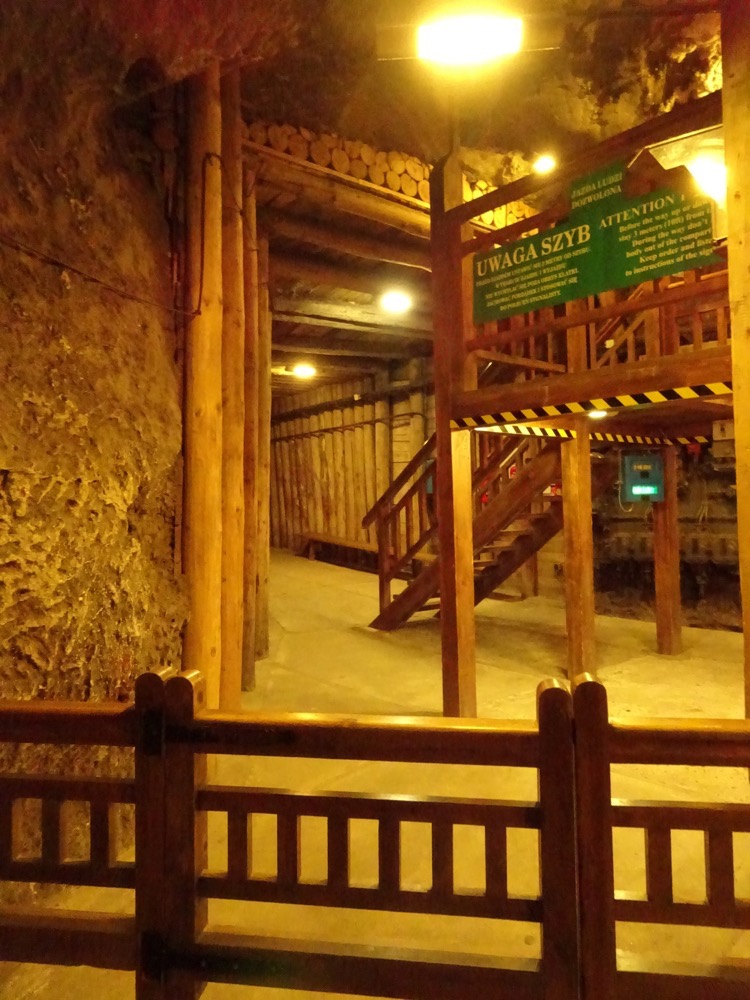 Everywhere we look is salt. Salt walls, salt floors, salt ledges, nooks and crannies. The rock salt naturally occurs in various shades of grey and looks more like unpolished granite.
Everywhere we look is salt. Salt walls, salt floors, salt ledges, nooks and crannies. The rock salt naturally occurs in various shades of grey and looks more like unpolished granite.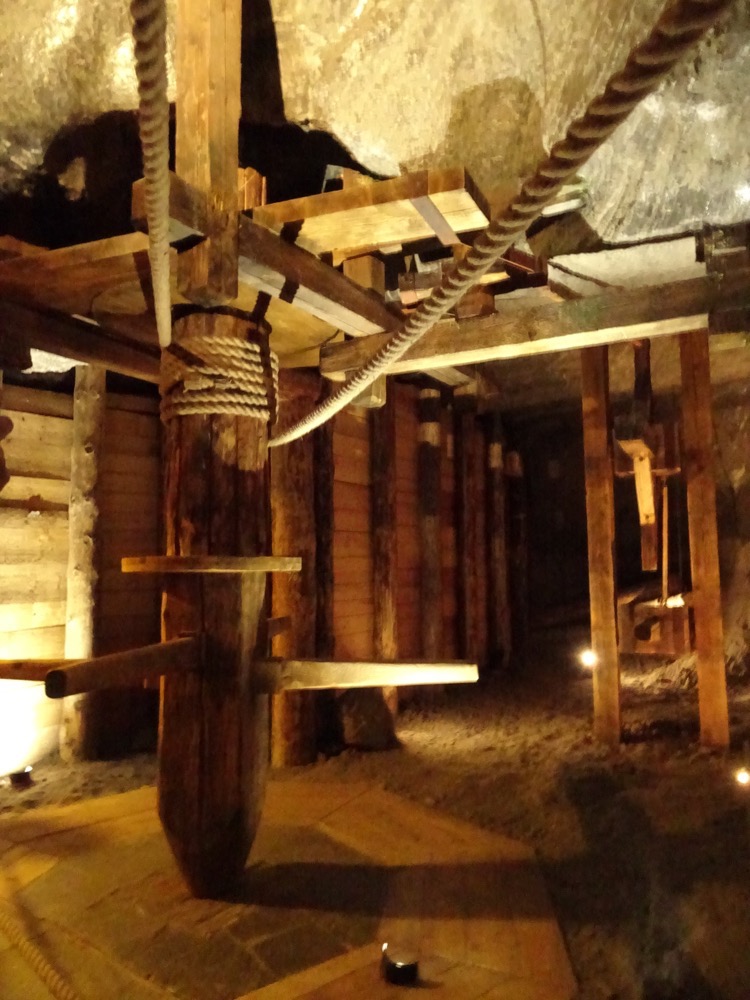 There are many pully systems and horse treadmills throughout the mine to assist miners in moving large amounts of the heavy product to the surface.
There are many pully systems and horse treadmills throughout the mine to assist miners in moving large amounts of the heavy product to the surface.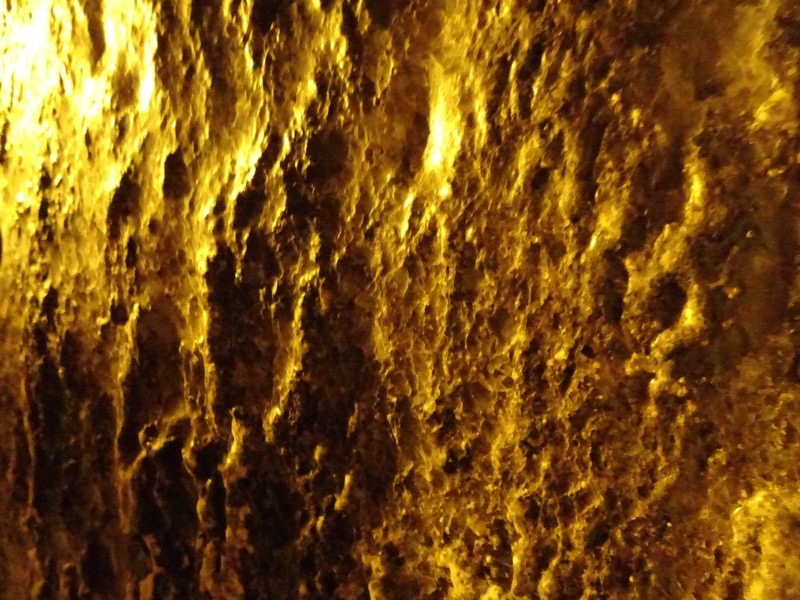 Throughout the mine, there are many statues carved out of salt. Some, more contemporary artworks have been carved by modern sculptors, but many have been carved by amateurs – gifted miners who worked on these sculptures during their own time.
Throughout the mine, there are many statues carved out of salt. Some, more contemporary artworks have been carved by modern sculptors, but many have been carved by amateurs – gifted miners who worked on these sculptures during their own time.
Copernicus statue carved from salt:
The story of how the mine allegedly came into being…
“In the 13the century a young Polish prince, called Bolesław, of the Piast Dynasty, decided to get married and for his wife chose a beautiful Hungarian princess of the Arpad Dynasty, the daughter of King Bela IV, Kinga (or Kunegund, as she is sometimes called).
When Bolesław’s proposal was accepted, the loving father asked Kinga what she would like to get from him as a wedding present, what she would like to take to her husband and the new country. Kinga replied that she wanted no gold and jewels since they only brought unhappiness and tears. She wanted something that could serve the people she was going to live with. Her request surprised the king greatly – she asked for salt.
The king was determined to keep his promise. He offered Kinga the biggest and most prosperous salt deposits in Hungary* – the Marmaros salt mine. However, nobody knew what Kinga could do with the treasure.
On her way to Poland, the princess visited the mine. She kneeled to pray next to the entrance and – to everyone’s surprise – suddenly threw her engagement ring inside. She gathered a group of the best Hungarian salt miners and told them to follow her.
When the party arrived in Poland and was approaching Kraków, Kinga stopped and asked the miners to look for salt. They started digging and suddenly hit something very hard. It was a lump of salt. When they broke it, everyone saw what was hidden inside – Kinga’s engagement ring!
That is how the Hungarian princess brought salt to our country. Right now in Wieliczka, there is the most famous salt mine museum.”
*This area once was in Hungarian territory.
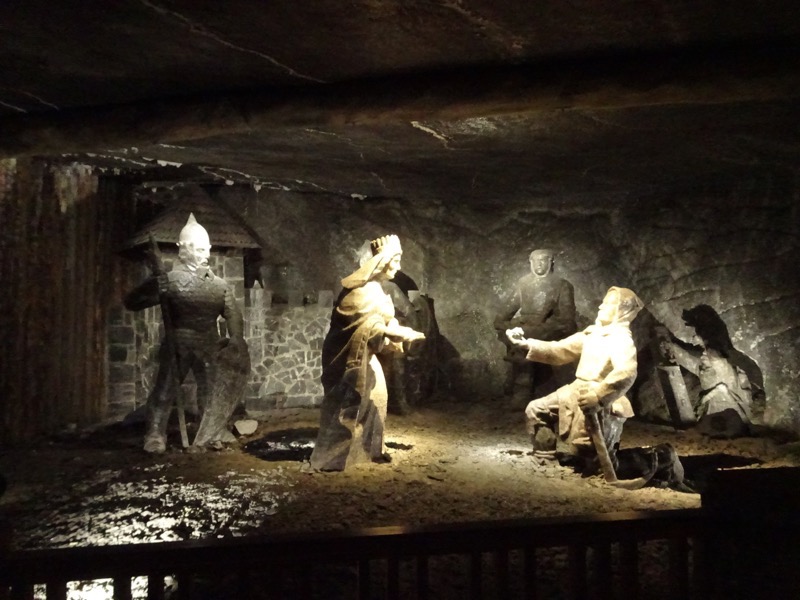 And the scene depicted is a diorama carved of salt.
And the scene depicted is a diorama carved of salt.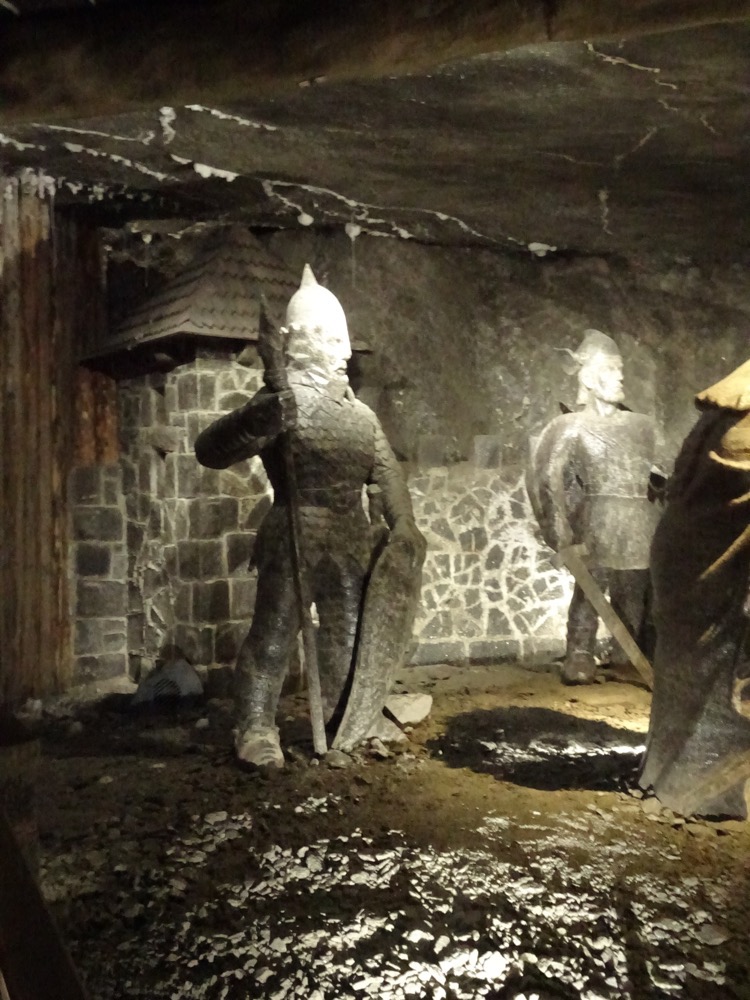 The St Anthony’s Chapel.
The St Anthony’s Chapel.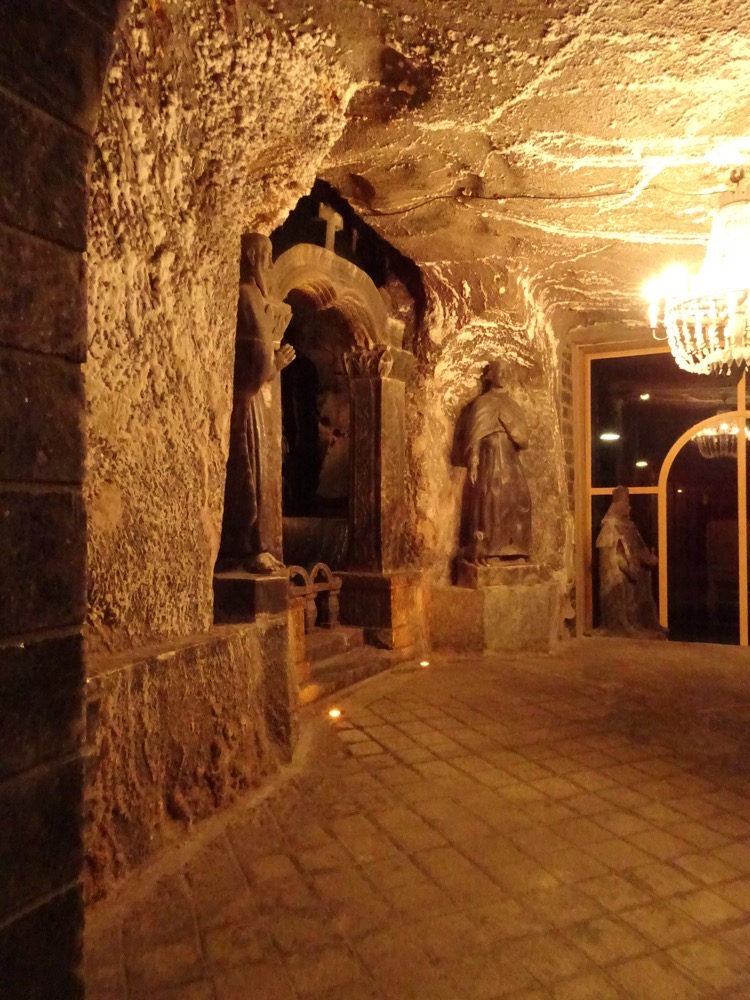
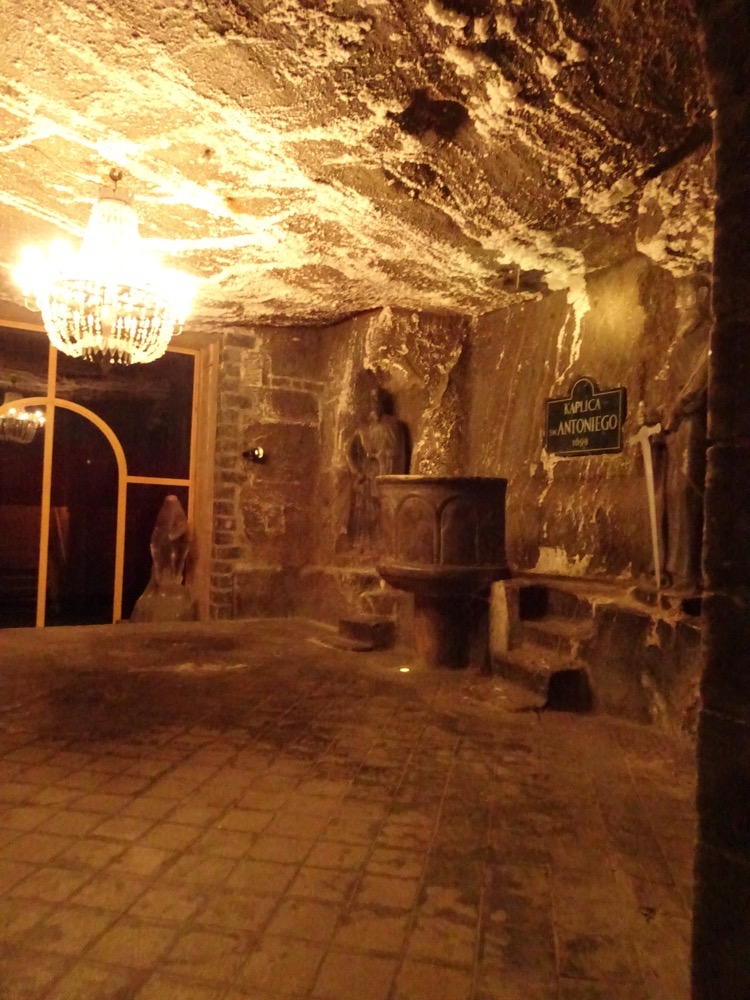 Secondary crystalised salt forms on the walls and ceiling of the mine as water seeps through the rock above.
Secondary crystalised salt forms on the walls and ceiling of the mine as water seeps through the rock above.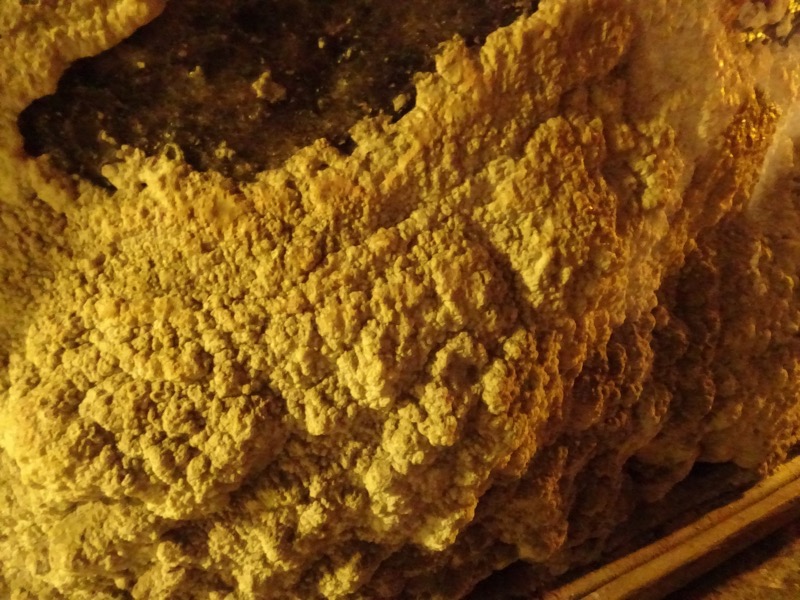
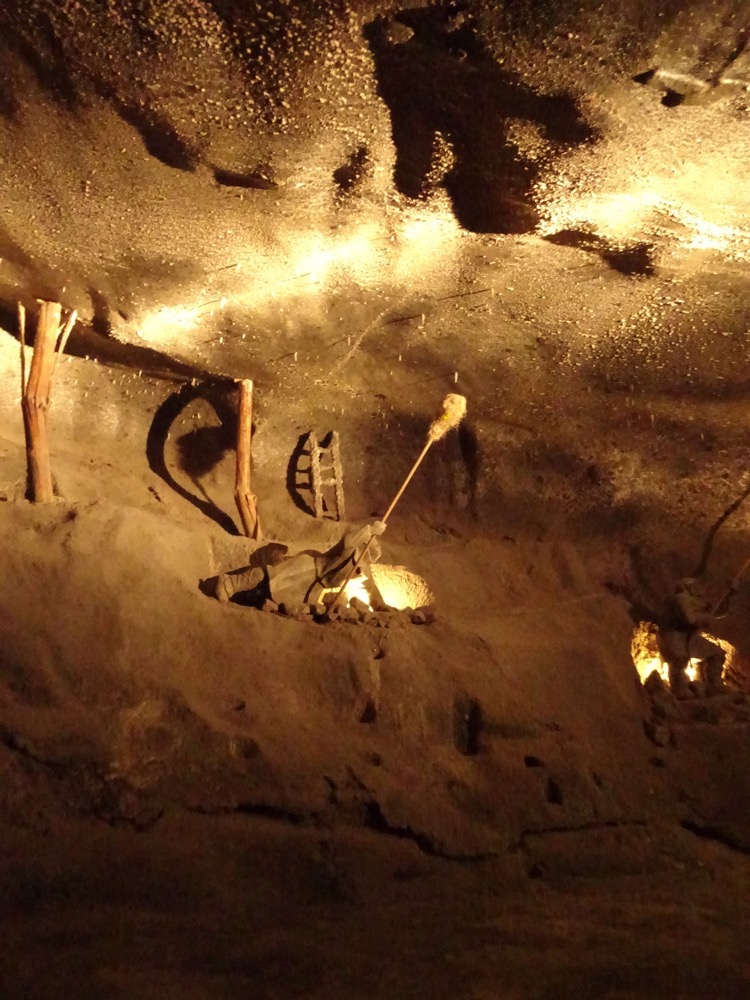 One of the most dangerous things about mining salt (indeed about mining anything this far underground) is the risk of fire. The salt mines were particularly prone to fires from gas escaping as new veins of salt were mine. Therefore one of the most dangerous jobs down the mine was to crawl down the newly created tunnels with a long flaming torch literally burning out pockets of colourless gas, which could cause explosions if the gas deposits were large enough. It was a very dangerous job but apparetly very well paid work.
One of the most dangerous things about mining salt (indeed about mining anything this far underground) is the risk of fire. The salt mines were particularly prone to fires from gas escaping as new veins of salt were mine. Therefore one of the most dangerous jobs down the mine was to crawl down the newly created tunnels with a long flaming torch literally burning out pockets of colourless gas, which could cause explosions if the gas deposits were large enough. It was a very dangerous job but apparetly very well paid work.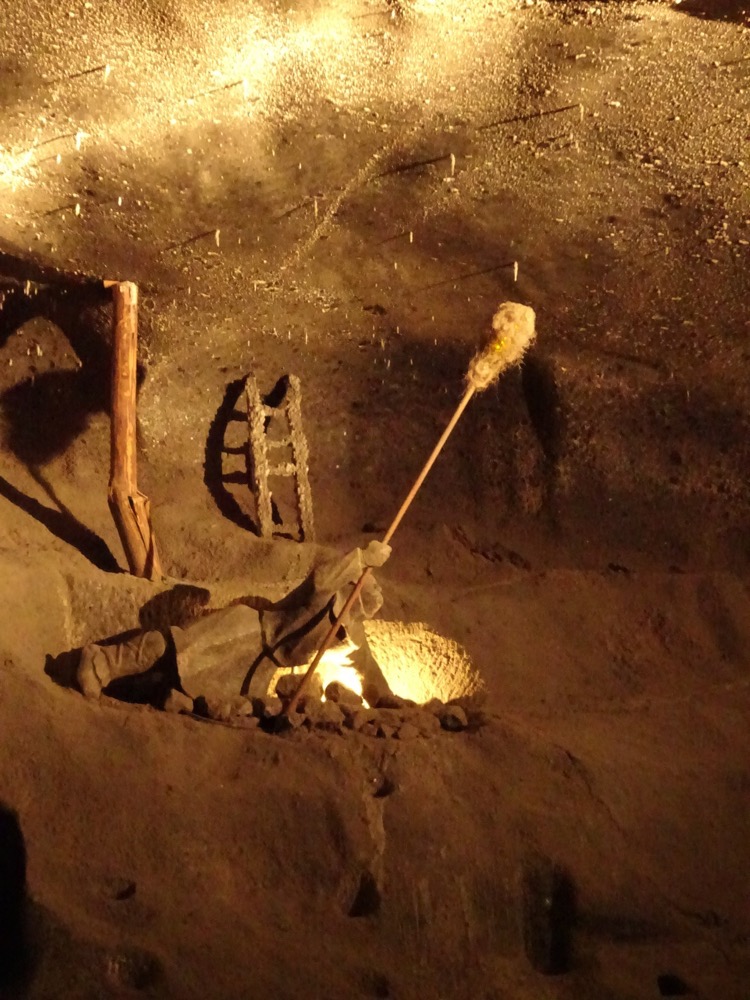 The visible patterns and designs have been hand cut into the walls and floors.
The visible patterns and designs have been hand cut into the walls and floors.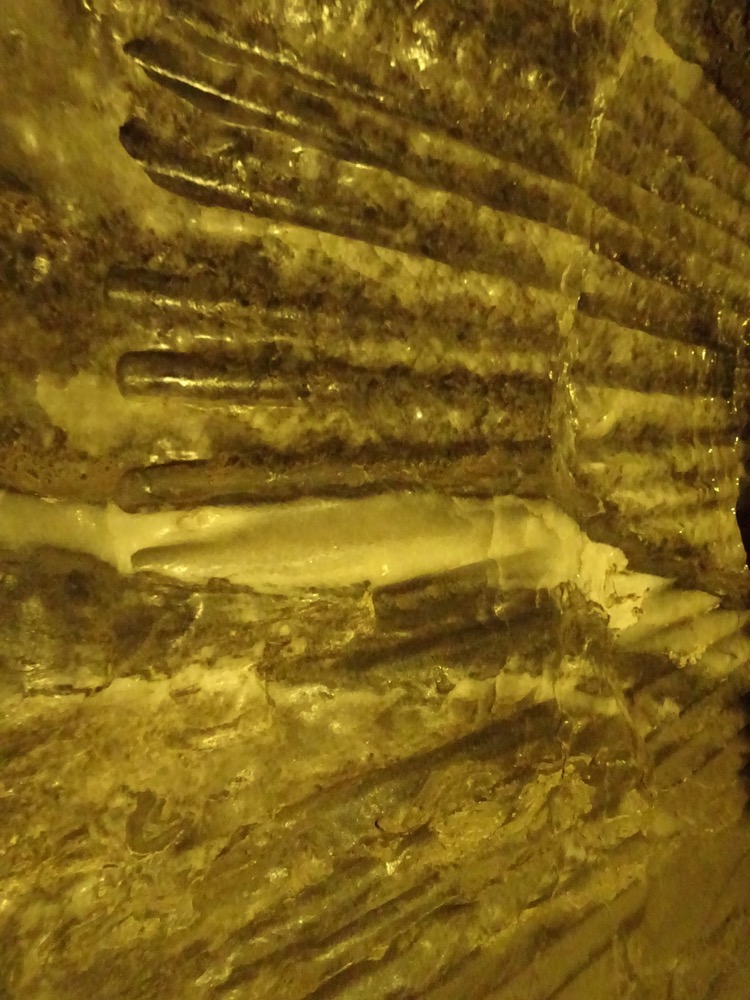 There were many workhorses used in the salt mines – once down the mine, they spent their entire lives down there as it was difficult to get them in or out. So naturally, they needed stables, with feed storage and all sorts. Hay stocks would bring mice, which meant they eventually brought down cats and the whole place sounded like a bit of a menagerie.
There were many workhorses used in the salt mines – once down the mine, they spent their entire lives down there as it was difficult to get them in or out. So naturally, they needed stables, with feed storage and all sorts. Hay stocks would bring mice, which meant they eventually brought down cats and the whole place sounded like a bit of a menagerie. 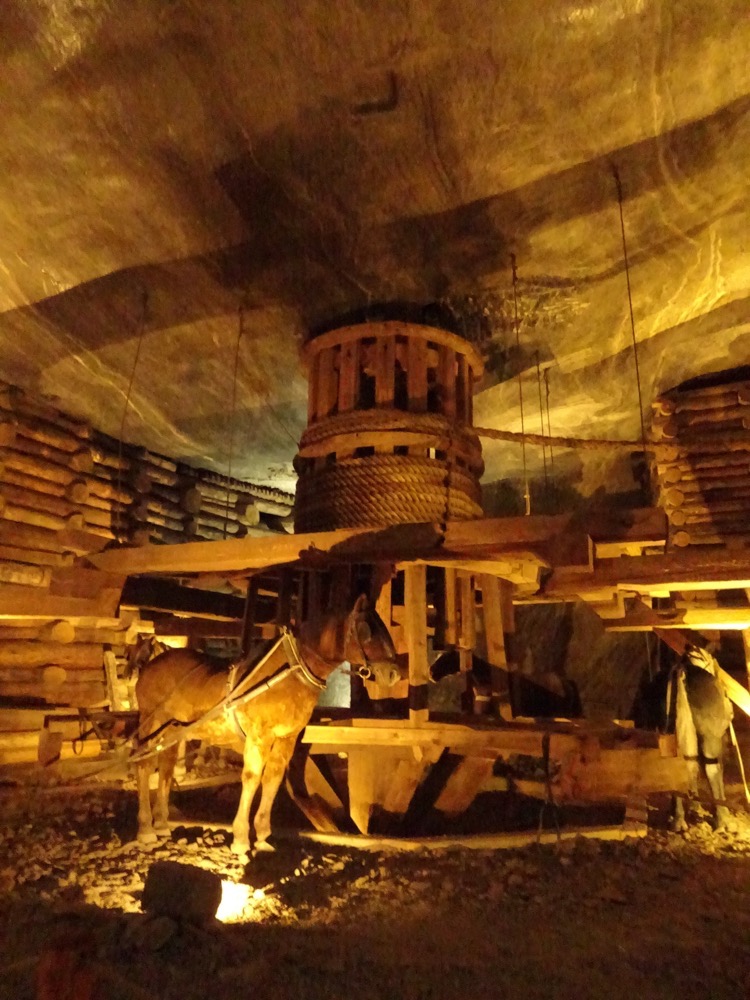
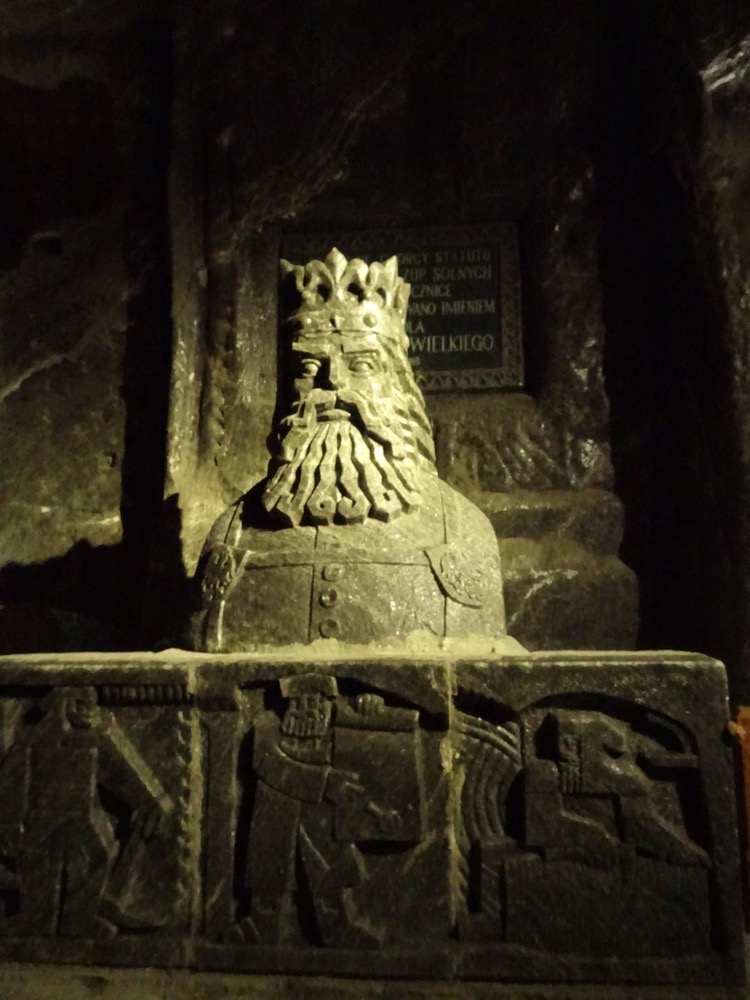 An old winch system:
An old winch system: This photo is unfortunately not very clear, but these were 14th century stairs that miners would use to descend the mine, carved into the salt.
This photo is unfortunately not very clear, but these were 14th century stairs that miners would use to descend the mine, carved into the salt.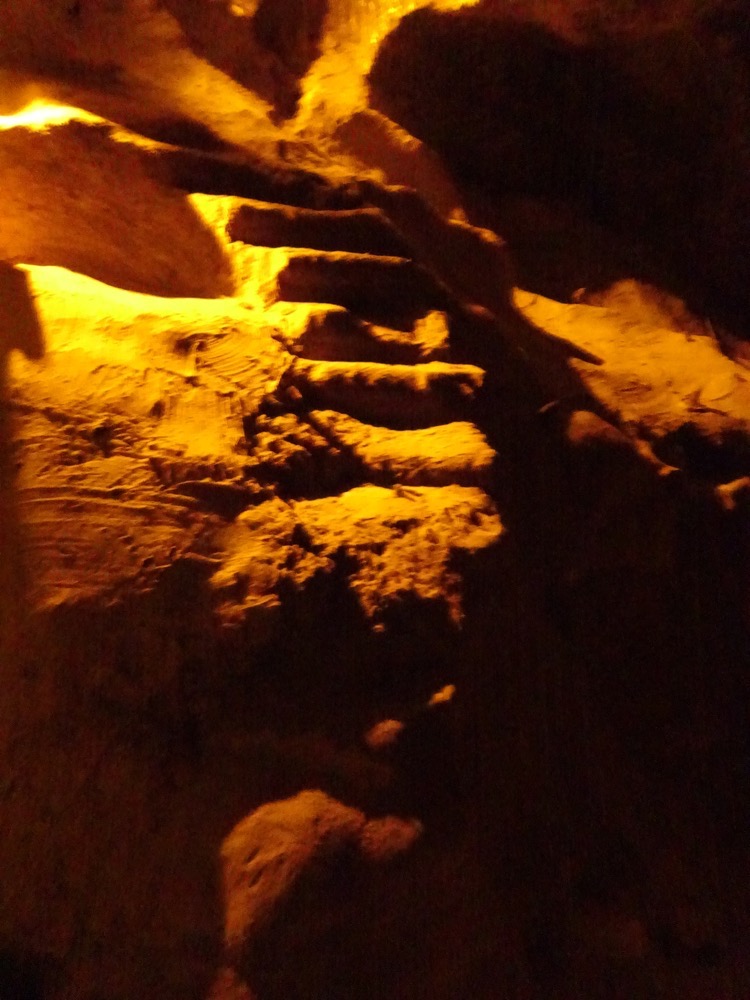 Looking down to the second level:
Looking down to the second level: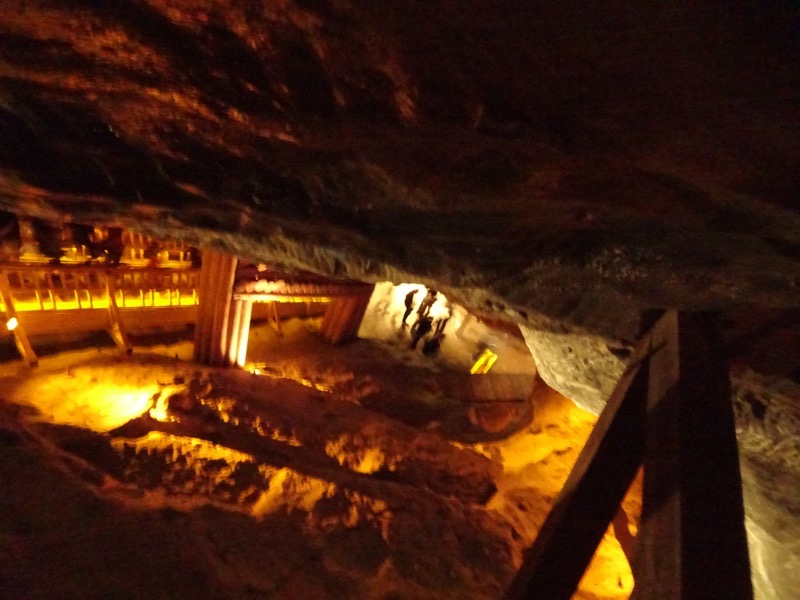 Gnomes start to appear dotted around the place, carved out of very clear white rock salt.
Gnomes start to appear dotted around the place, carved out of very clear white rock salt.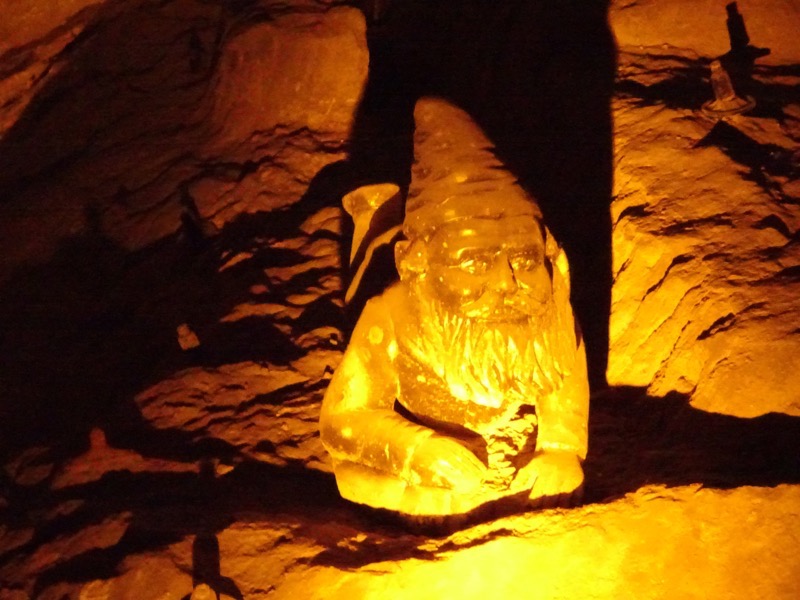 Where we just came from:
Where we just came from: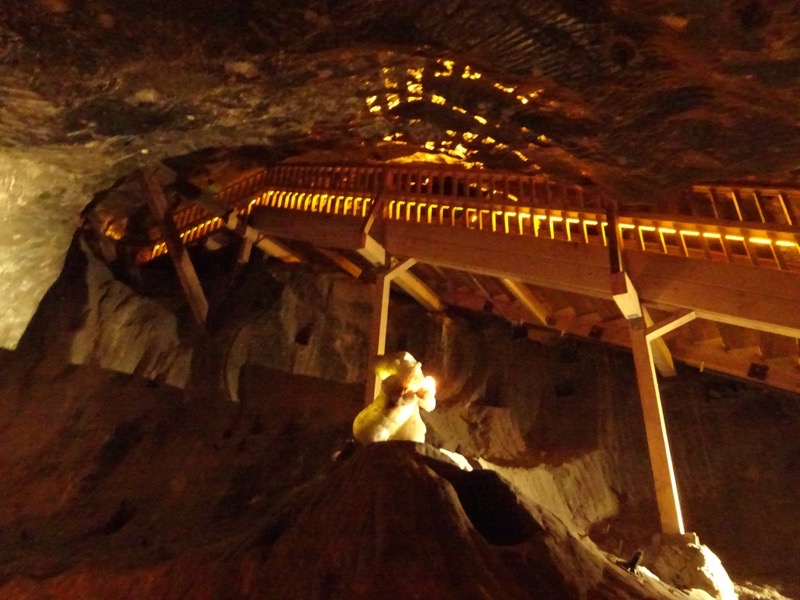 A brine creek directed to a bowl. Our guide kept telling us to lick the walls or taste the water – it’s so salty that no bacteria can survive on the surface, and even though the mine has over 1.2 million visitors a year, she assures us that no one ever gets sick from licking the walls. I kinda believe her, but didn’t feel the need to try it. The water however was extremely salty.
A brine creek directed to a bowl. Our guide kept telling us to lick the walls or taste the water – it’s so salty that no bacteria can survive on the surface, and even though the mine has over 1.2 million visitors a year, she assures us that no one ever gets sick from licking the walls. I kinda believe her, but didn’t feel the need to try it. The water however was extremely salty.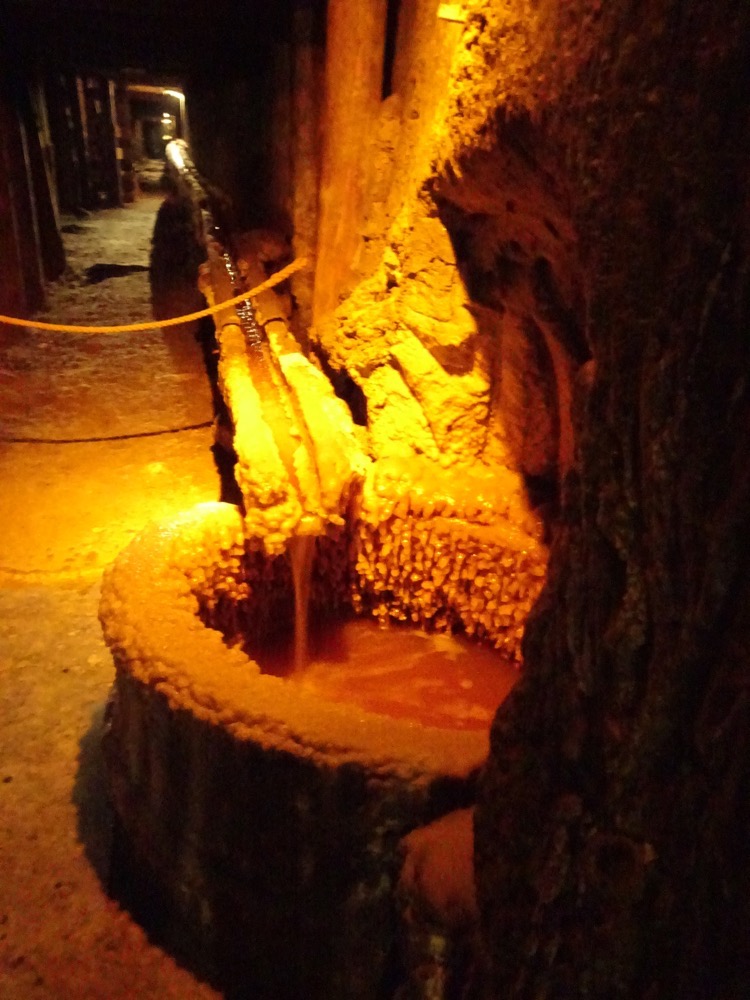
 A recreated foreman’s office off a mine tunnel:
A recreated foreman’s office off a mine tunnel: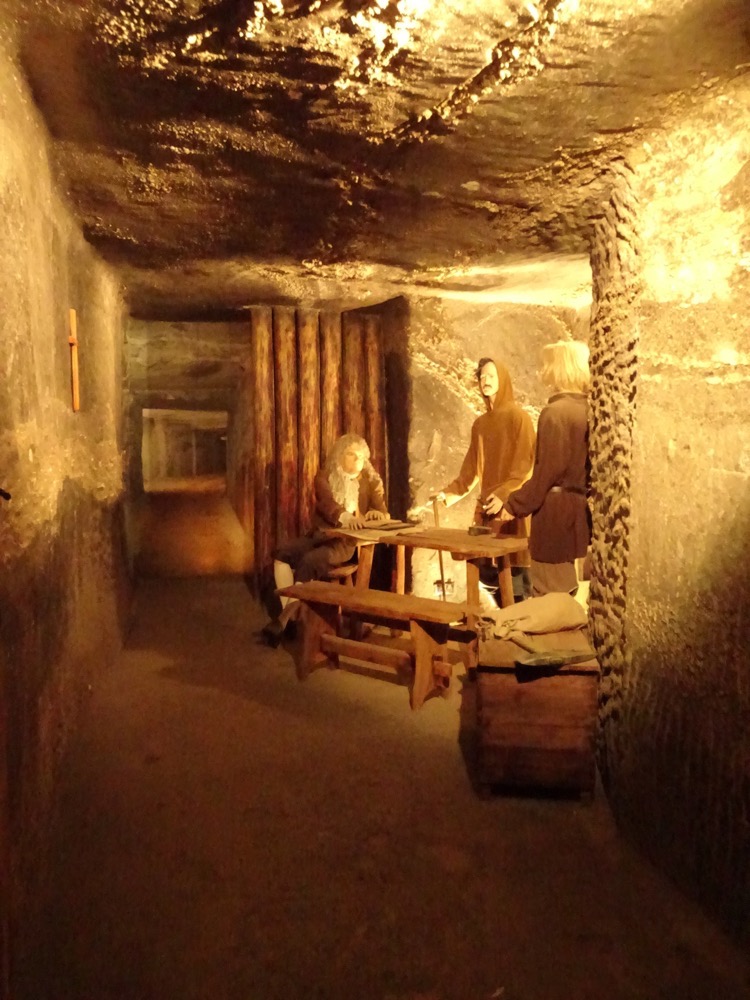 A vignette of many gnomes doing various mine jobs:
A vignette of many gnomes doing various mine jobs: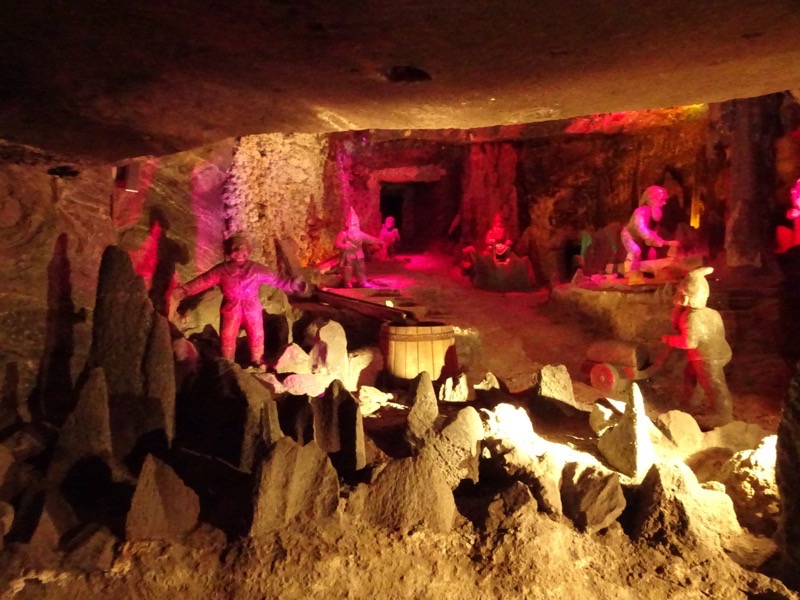 Another small chapel space to the virgin Mary:
Another small chapel space to the virgin Mary:
Love the salt floor ’tiles’… 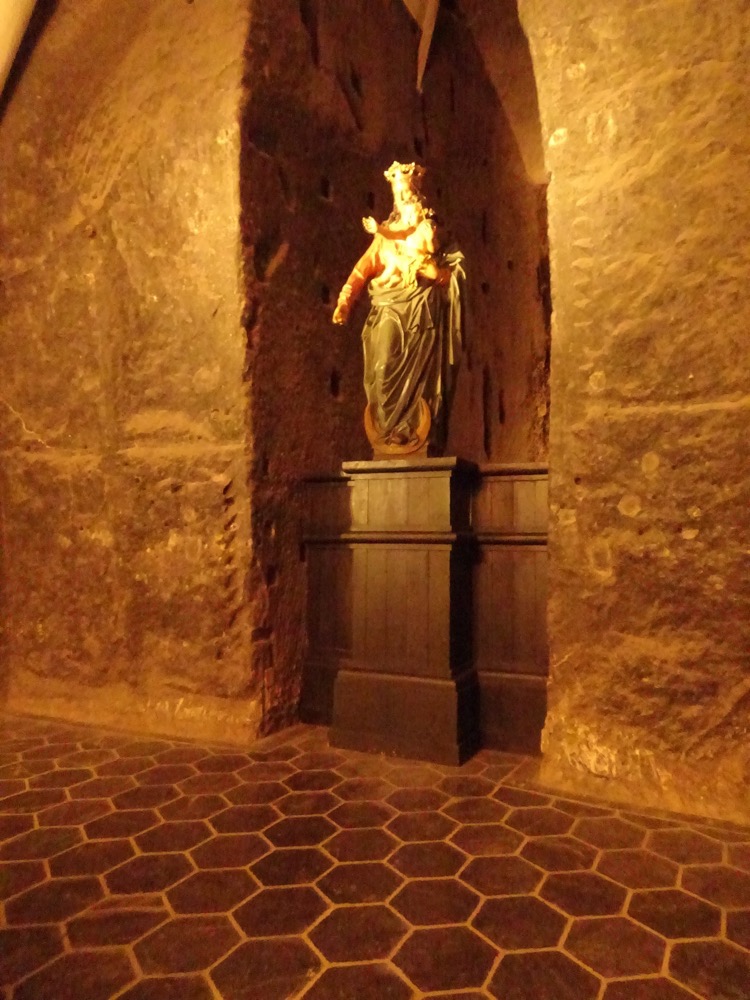 Some of the chambers have been reinforced with timber, which miners kept painted white. They had no electric lighting down here and had small tallow lamps or torches only. The white allowed for the light to be reflected around more easily and create better lit conditions.
Some of the chambers have been reinforced with timber, which miners kept painted white. They had no electric lighting down here and had small tallow lamps or torches only. The white allowed for the light to be reflected around more easily and create better lit conditions.
A chandelier made of salt rock crystals: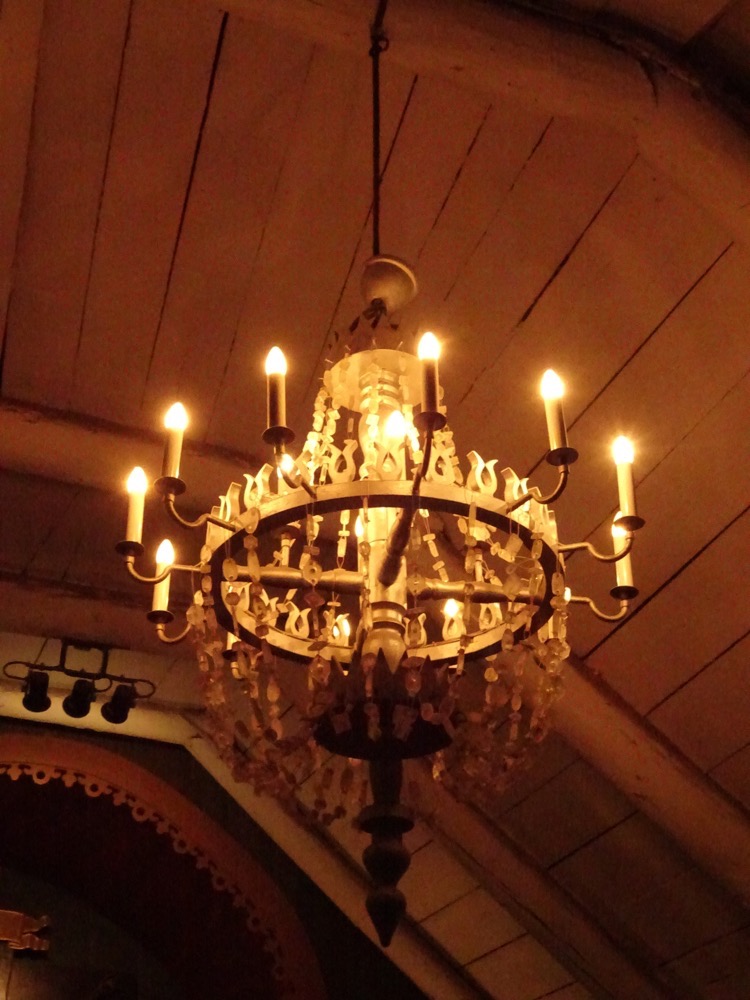 Another small chapel. Mining is serious business that needs a lot of praying.
Another small chapel. Mining is serious business that needs a lot of praying. So then we enter the King’s Chapel – a chamber which has the world’s largest underground church.
So then we enter the King’s Chapel – a chamber which has the world’s largest underground church. 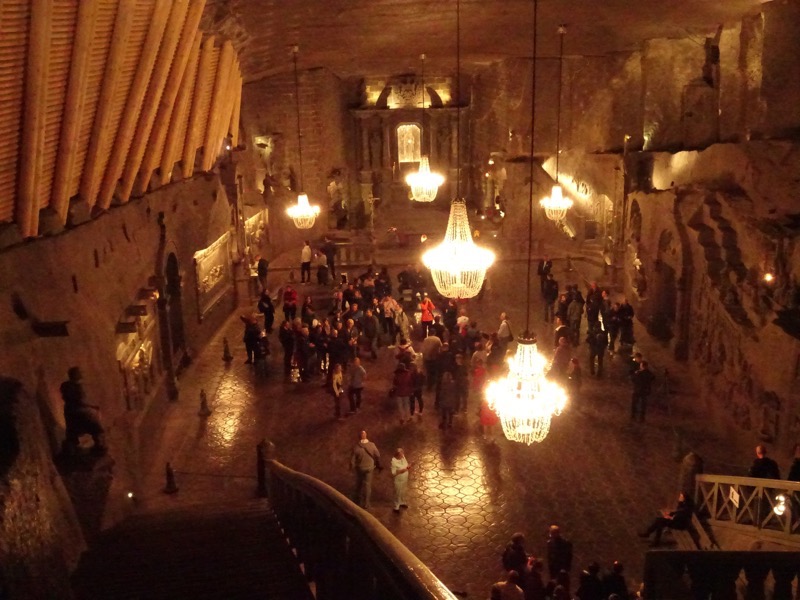 Lit by five enormous rock salt chandeliers, a huge wooden staircase bring visitors to the salt floor which is 64m underground now.
Lit by five enormous rock salt chandeliers, a huge wooden staircase bring visitors to the salt floor which is 64m underground now.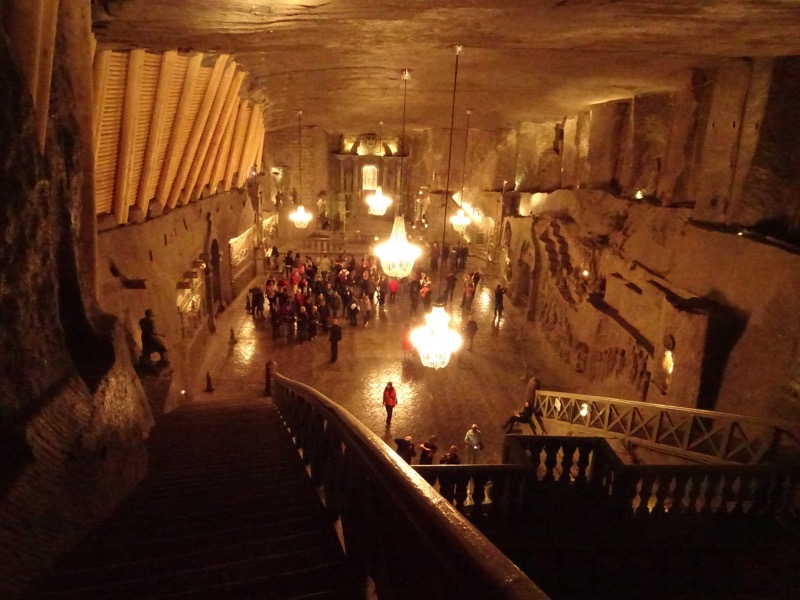 Lining the walls are carvings of various artistic execution done by miners:
Lining the walls are carvings of various artistic execution done by miners:
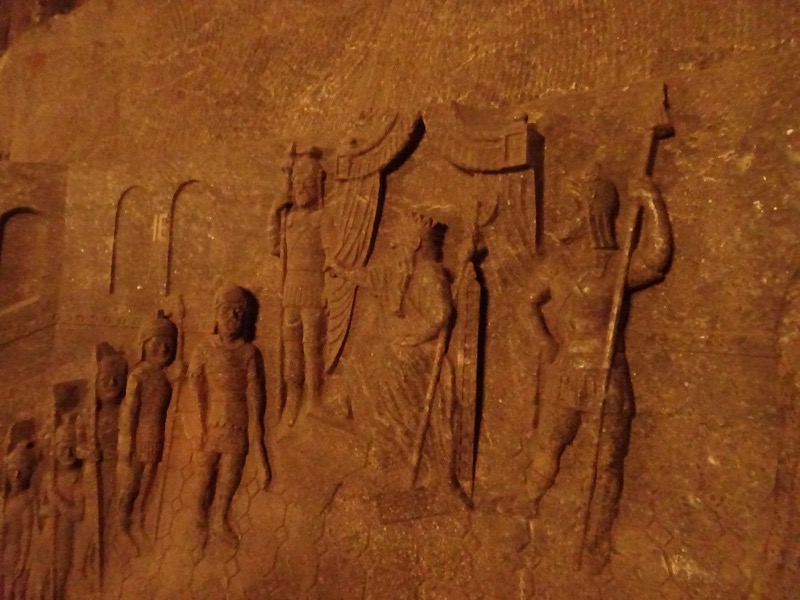 I love the floor!
I love the floor!
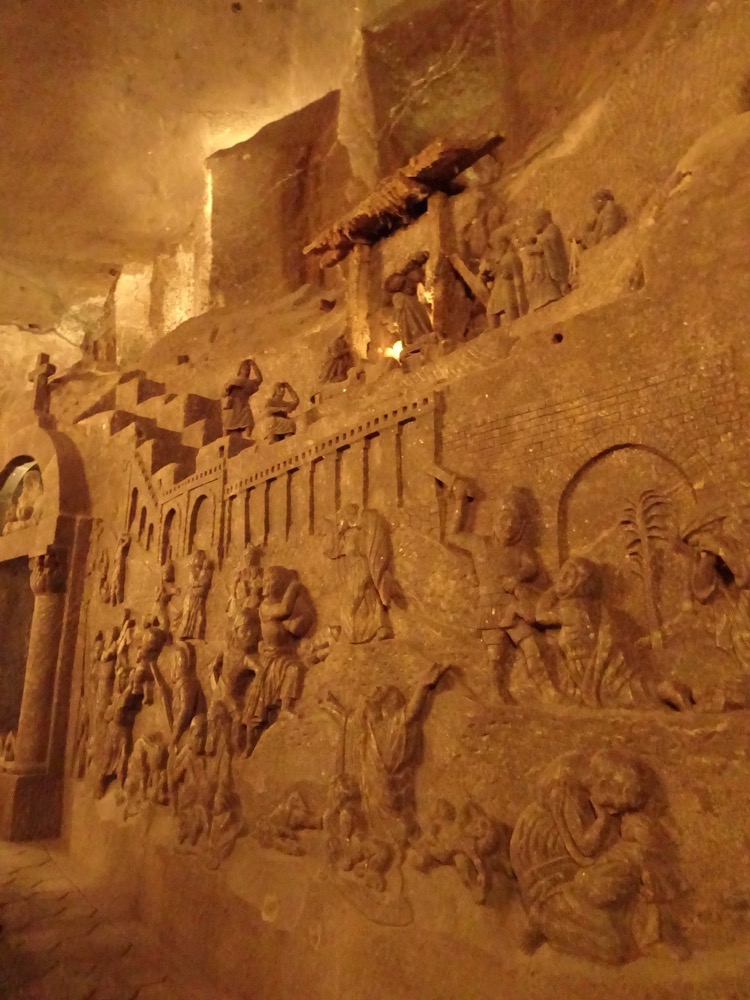 The salt rock crystal chandeliers are over two meters in drop:
The salt rock crystal chandeliers are over two meters in drop: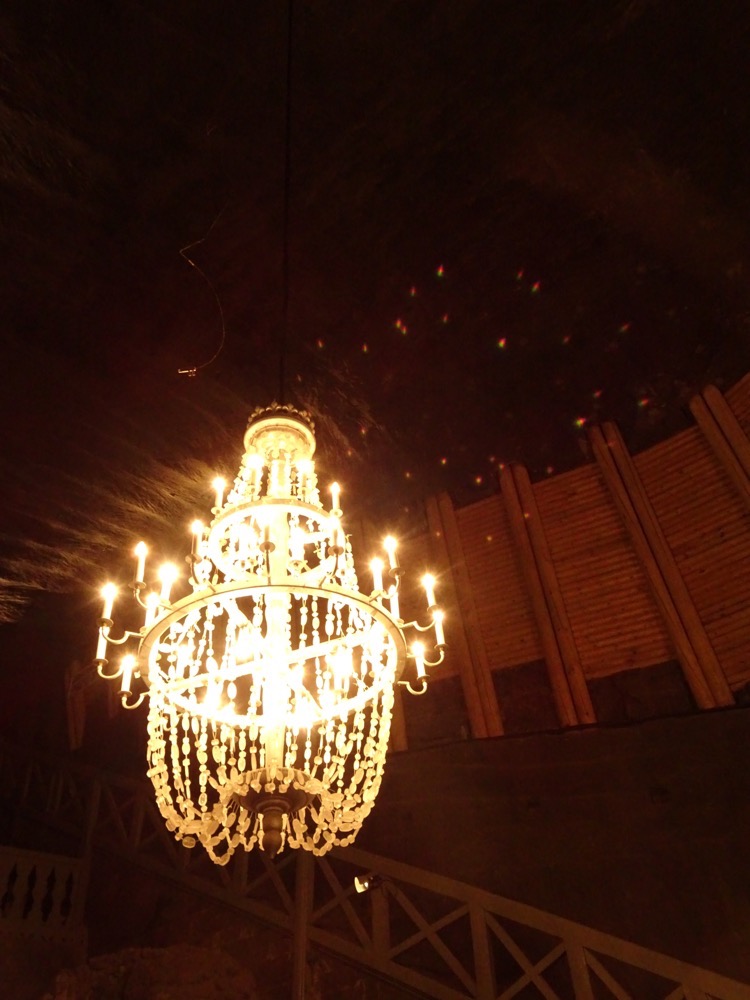 The King’s Chapel.
The King’s Chapel.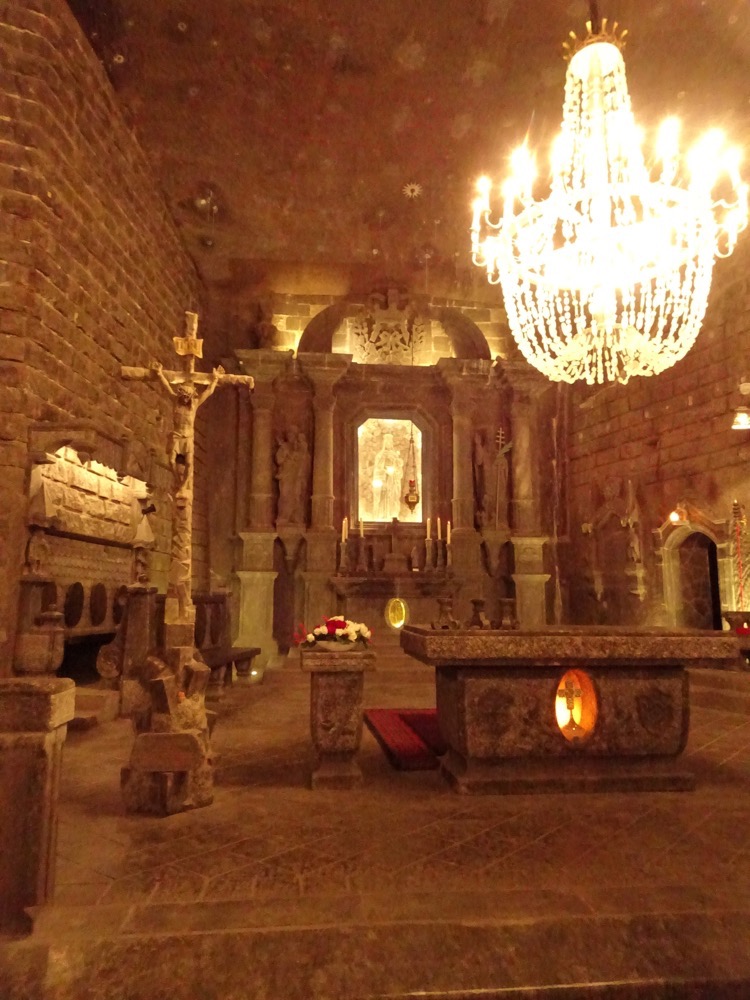
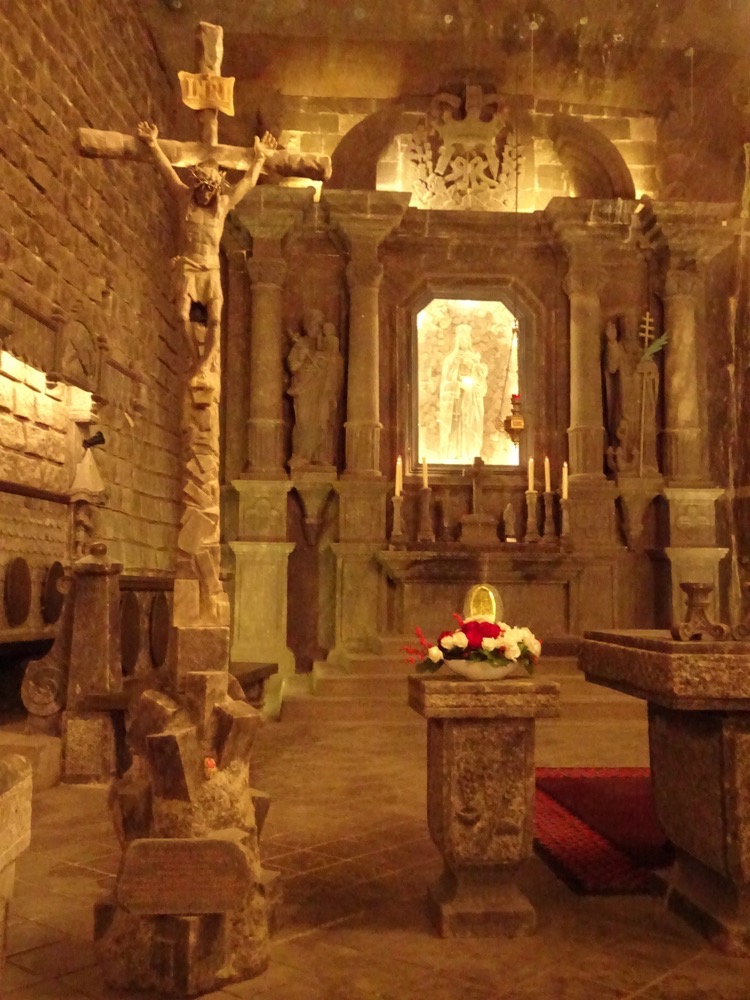 Salt rock statues, salt rock columns, salt rock candlesticks, salt rock altar, salt rock kneelers, pews, salt rock tabernacle…
Salt rock statues, salt rock columns, salt rock candlesticks, salt rock altar, salt rock kneelers, pews, salt rock tabernacle…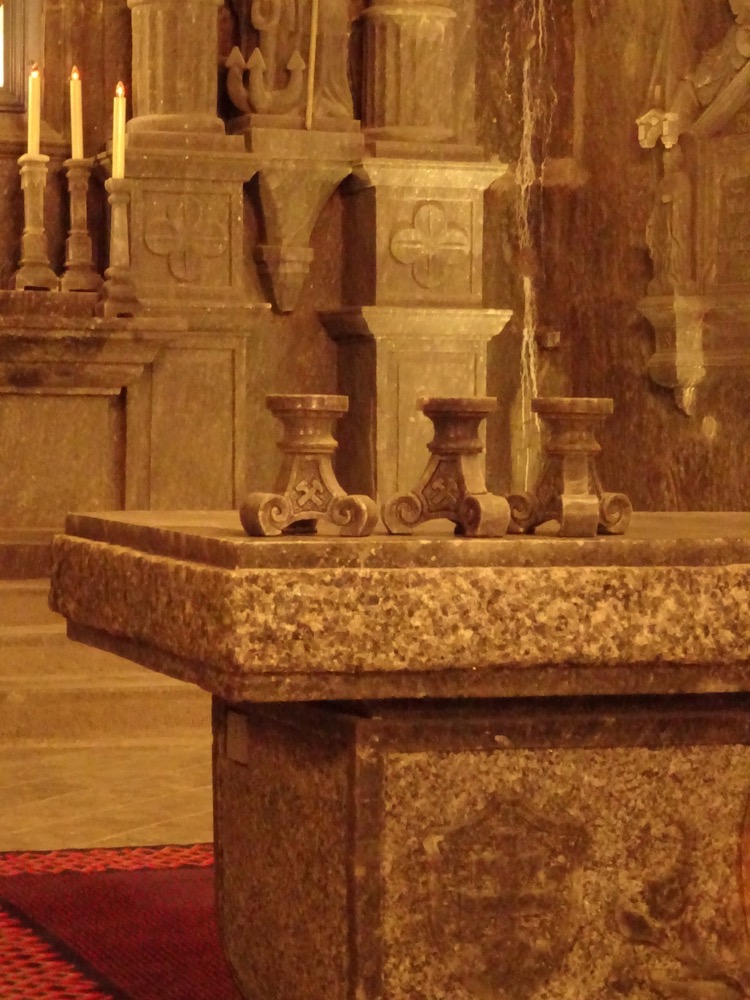 Even the bollards to keep the tourists in line are carved out of salt.
Even the bollards to keep the tourists in line are carved out of salt.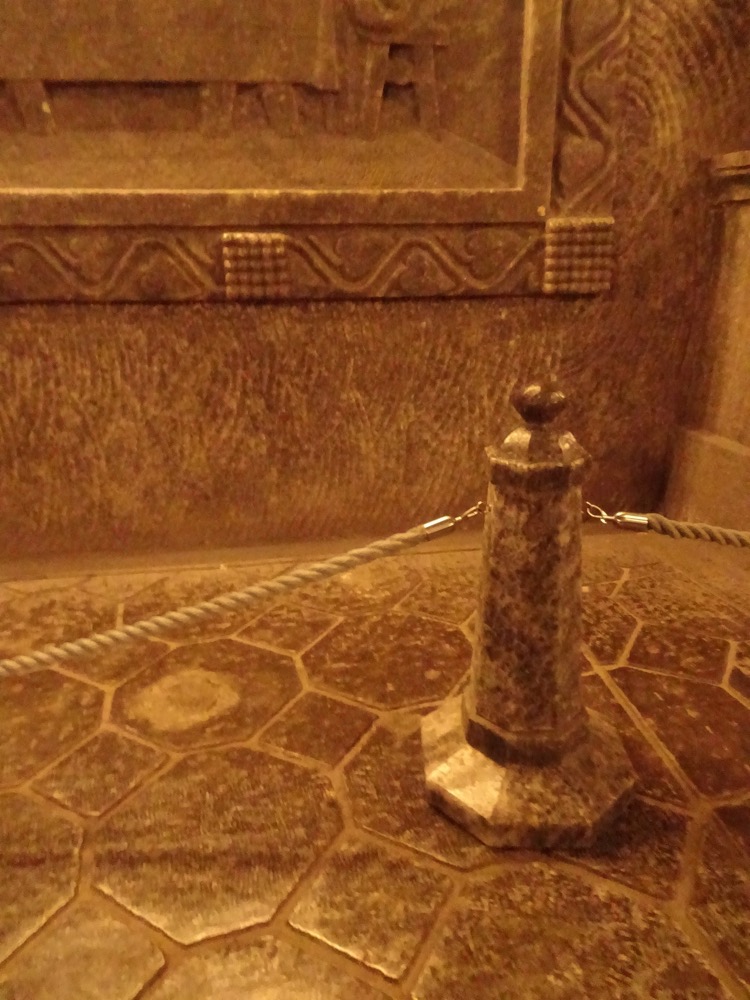
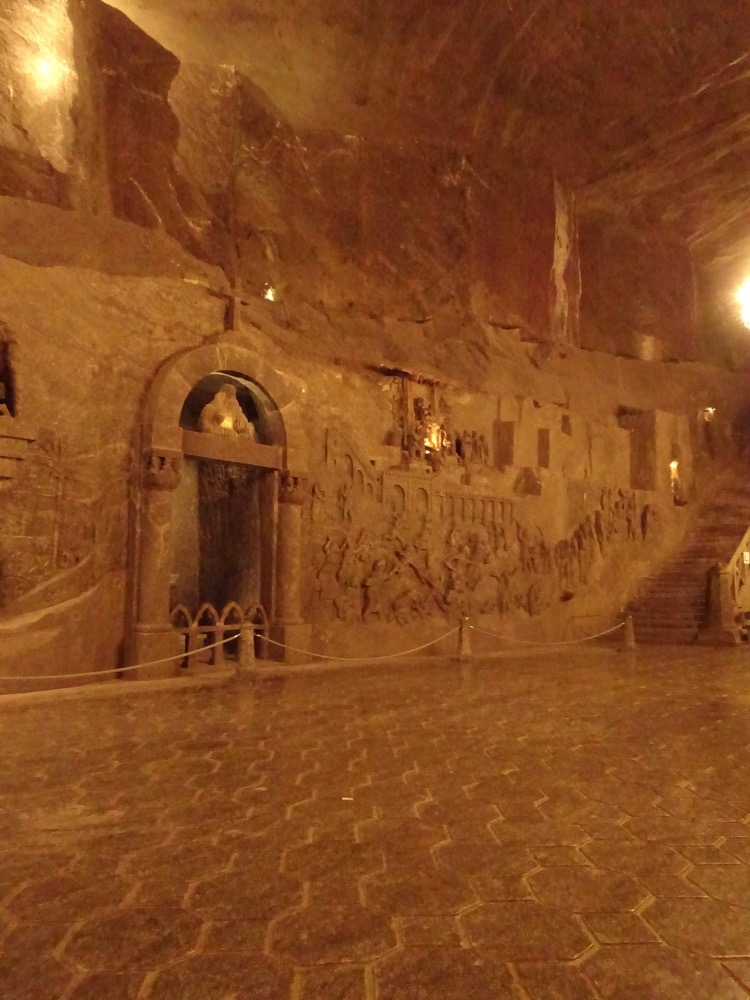 Further down the mine there are some enormous salt water lakes.
Further down the mine there are some enormous salt water lakes. 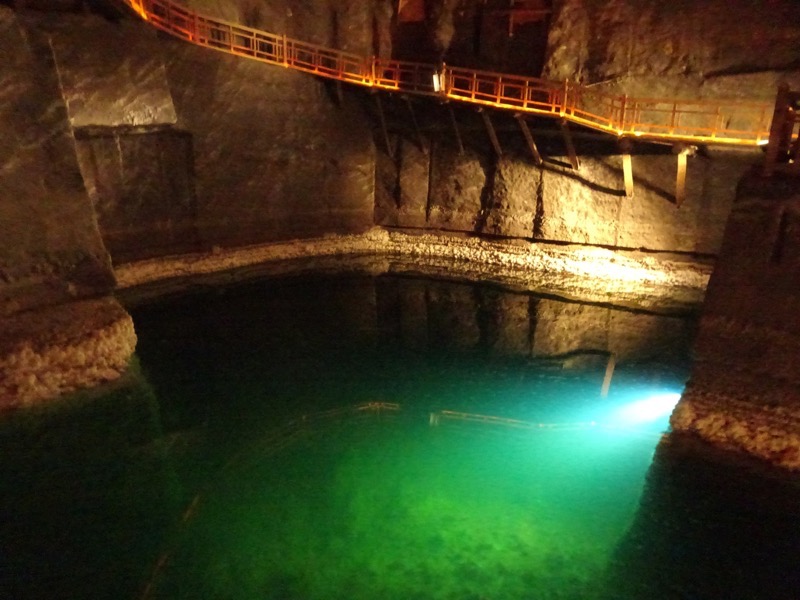
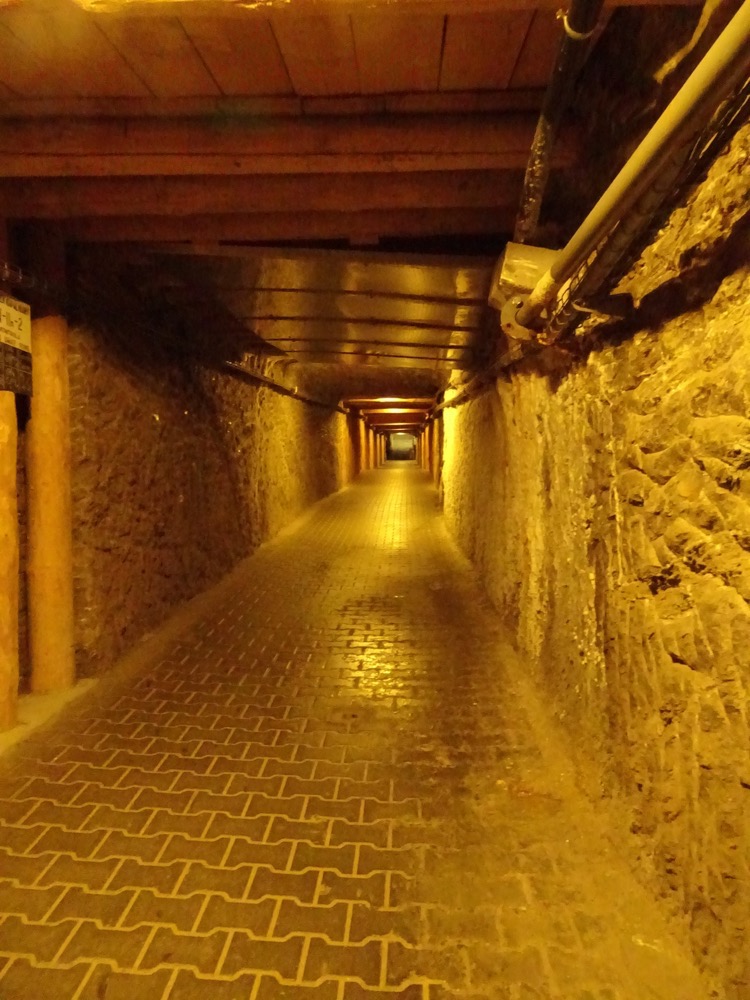

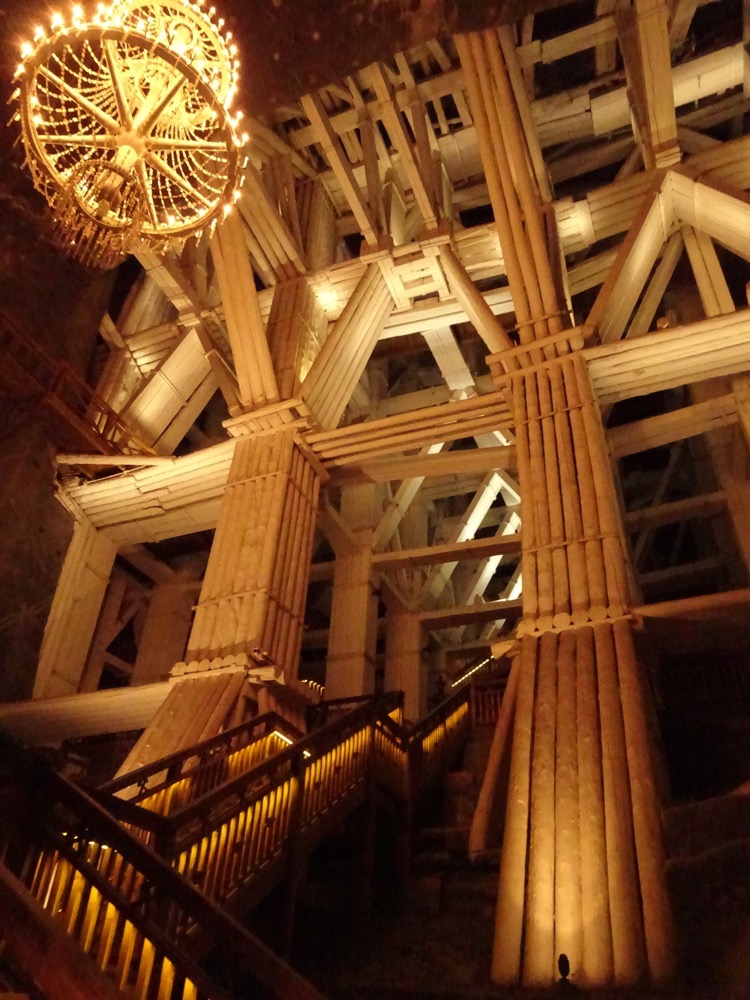
The largest salt rock crystal chandelier in the complex – over 3 m long, hangs in a chamber near an enormous timber structure that was used to move salt up through the mine. Carpentry was another important job here. 
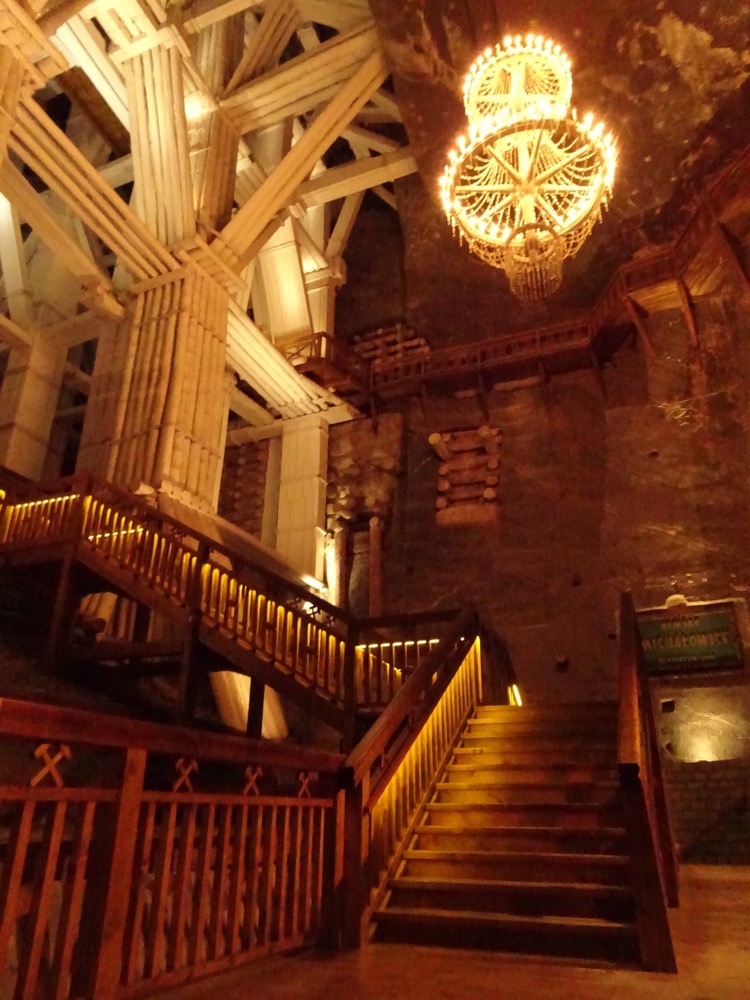 Goethe:
Goethe: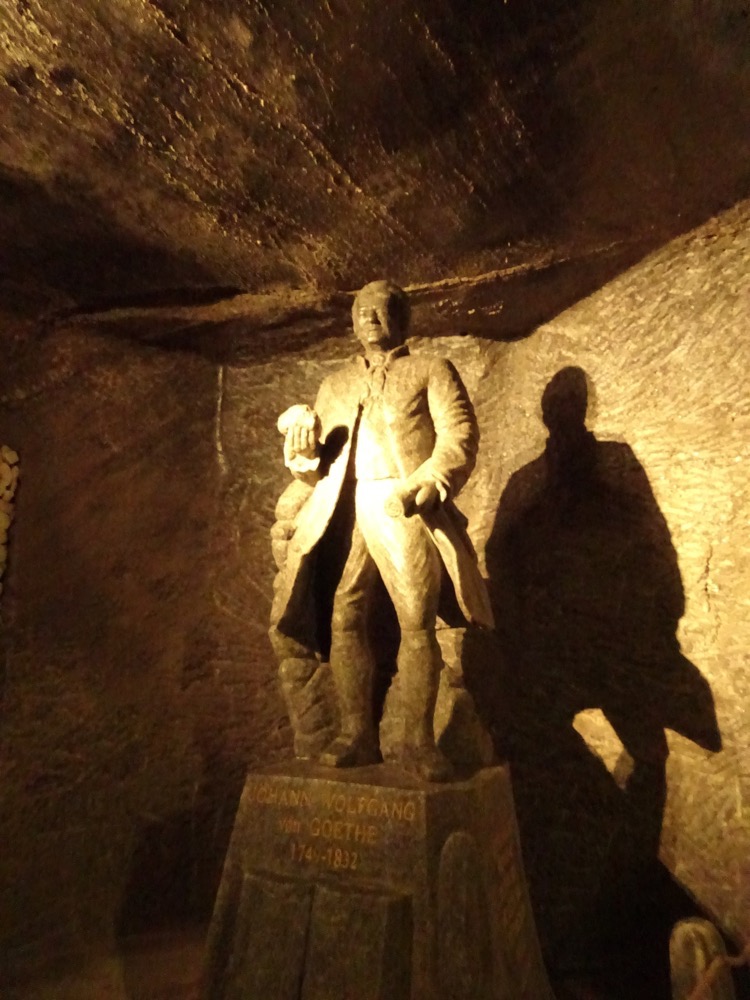
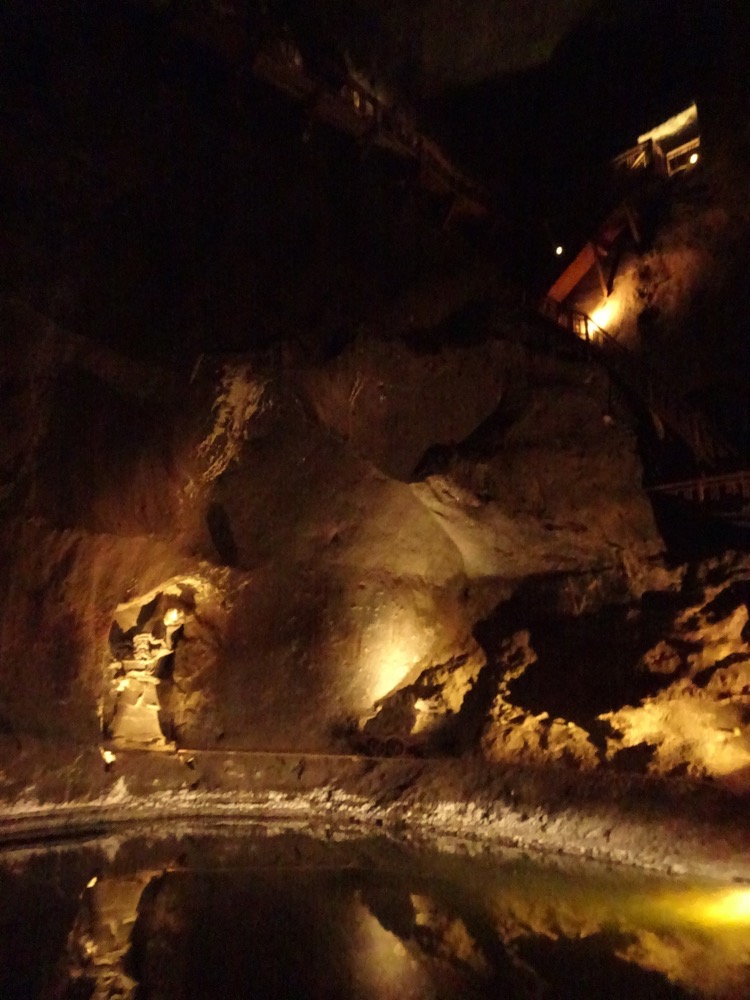 Looking down towars the third level of the tourist route:
Looking down towars the third level of the tourist route: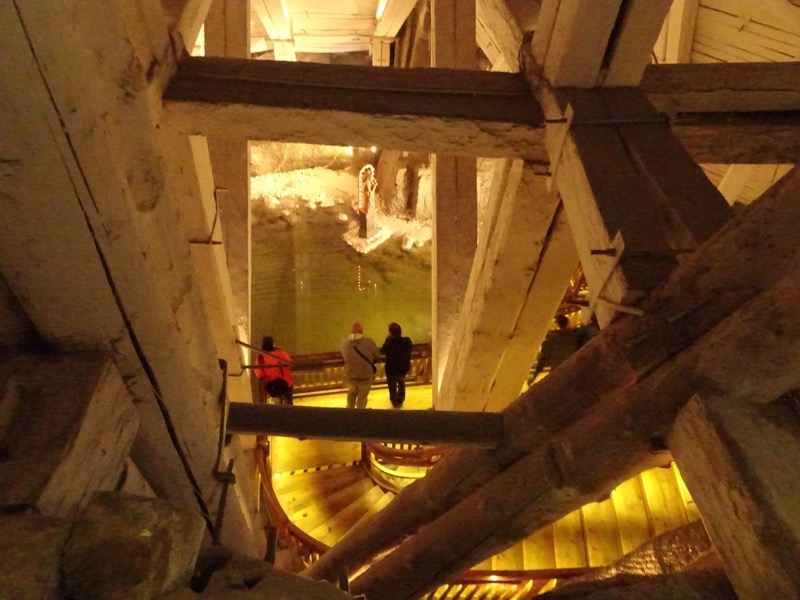 Apparently tourists used to be moved about using ferry boat rides here through some of the smaller tunnels of the mine until a tragic drowning incident occurred in the Jozef Pilsudski Chamber.
Apparently tourists used to be moved about using ferry boat rides here through some of the smaller tunnels of the mine until a tragic drowning incident occurred in the Jozef Pilsudski Chamber.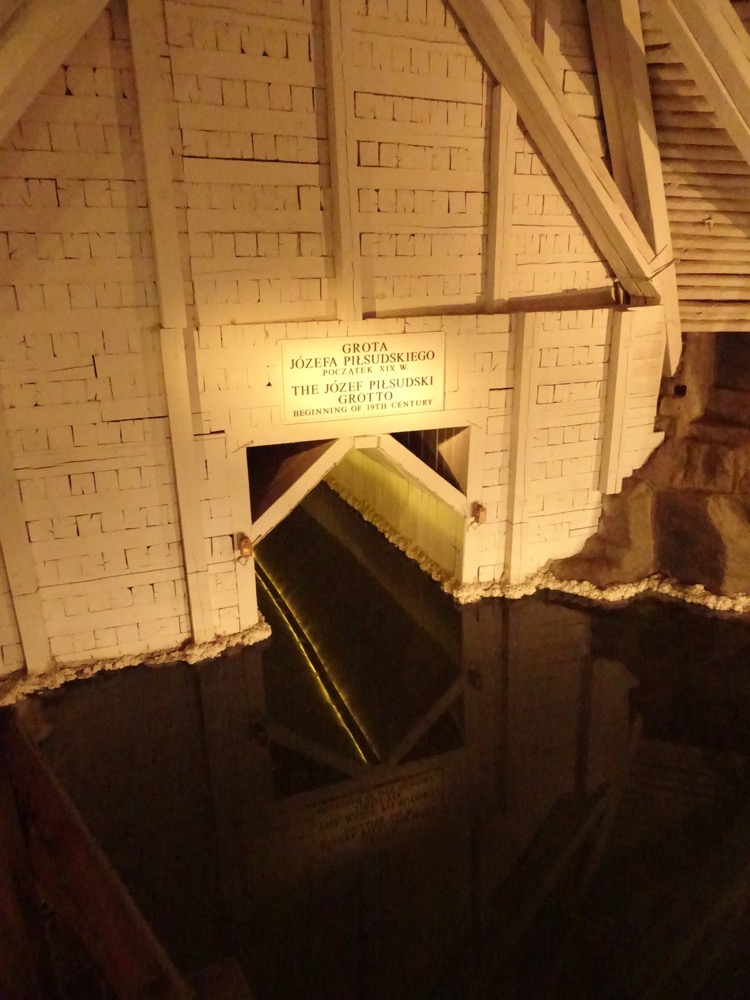 A ferry boat capsized and five people were trapped underneath it. In theory it should be impossible to drown in water this salty as everyone is so bouyant, but the boat was so heavy that the people couldn’t get out from under it, so they suffocated. That is why there is now a statue of St. John Nepomuk, the patron saint of the drowning.
A ferry boat capsized and five people were trapped underneath it. In theory it should be impossible to drown in water this salty as everyone is so bouyant, but the boat was so heavy that the people couldn’t get out from under it, so they suffocated. That is why there is now a statue of St. John Nepomuk, the patron saint of the drowning.
 This is the tallest chamber in the tourist route – at 36m high. It is also the location of the World Record Deepest Underground Bungee jump.
This is the tallest chamber in the tourist route – at 36m high. It is also the location of the World Record Deepest Underground Bungee jump. 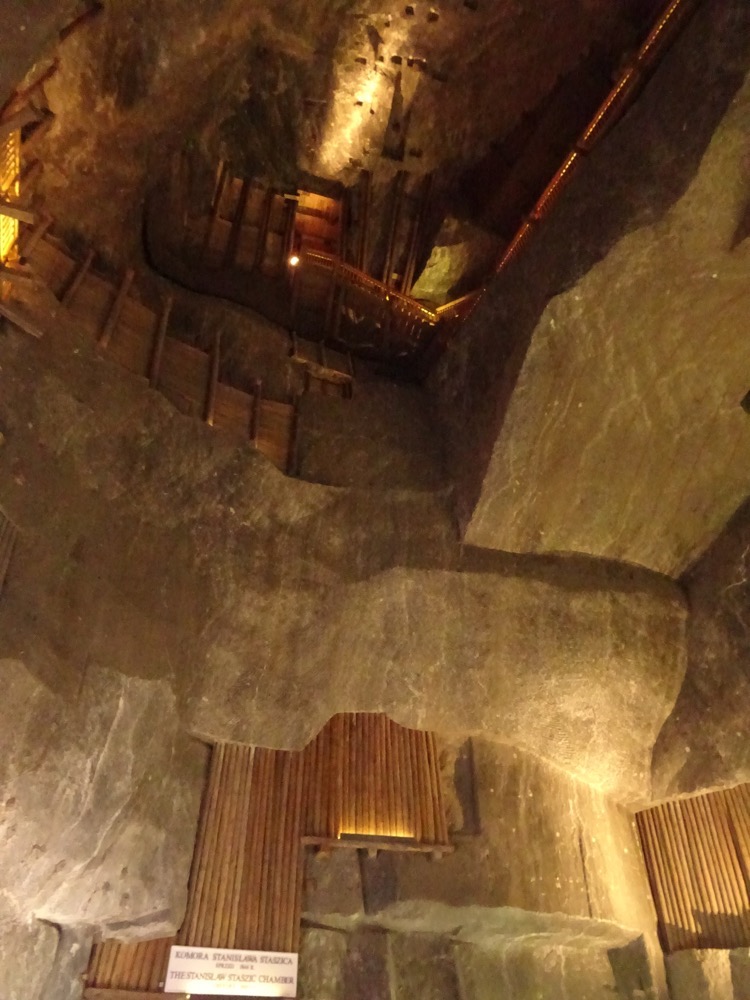


 Reception centre for weddings etc.
Reception centre for weddings etc.
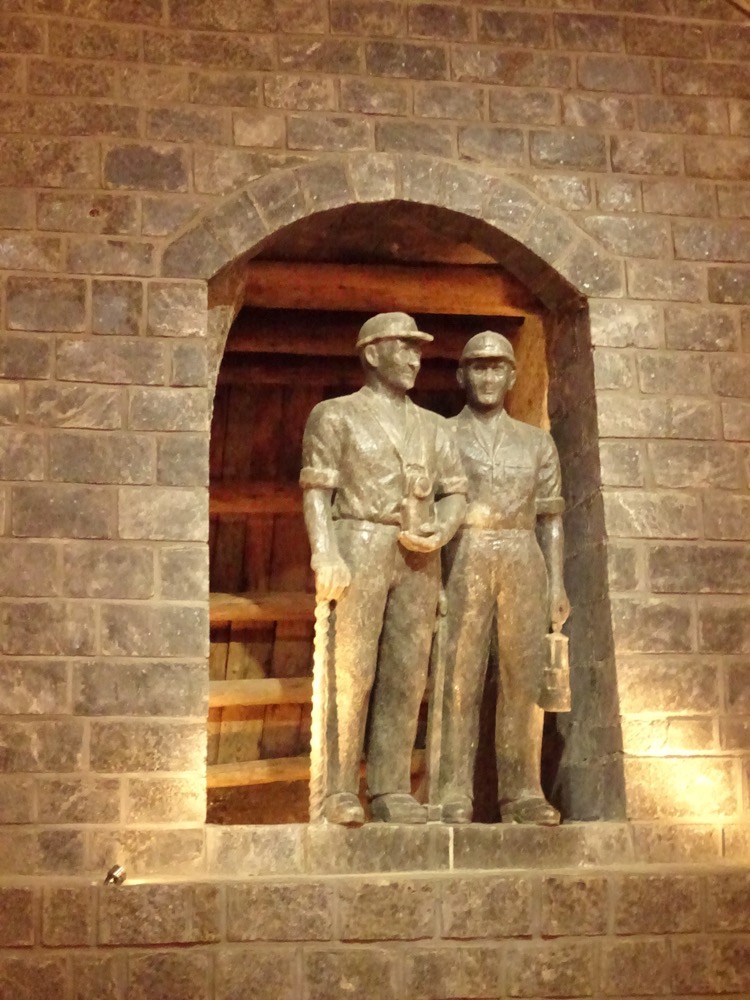 There are multiple gift shops mostly selling gifts made from – you guessed it – salt. None of which would last very long in a humid tropical environment like Brisbane.
There are multiple gift shops mostly selling gifts made from – you guessed it – salt. None of which would last very long in a humid tropical environment like Brisbane.  Another small chapel on the way out of the mine.
Another small chapel on the way out of the mine. All up it was a very slick tourist operation that takes you on a visit through the mine. Our guide was interesting and informative and she only made one joke about us being nice to her because she was the only person in the group who knew the way out. It is a veritable labyrinth of tunnels and chambers and you could see how easily you could get lost.
All up it was a very slick tourist operation that takes you on a visit through the mine. Our guide was interesting and informative and she only made one joke about us being nice to her because she was the only person in the group who knew the way out. It is a veritable labyrinth of tunnels and chambers and you could see how easily you could get lost.
After our mine visit, it was time to hit the road and head to Warsaw. Thankfully we had a trusty hire car for this segment of the journey and we were not going to find ourselves standing around for two hours on a train platform in yet another shitty transit.
Polish drivers are mad bastards though – dashing in and out of traffic without indicating. Speed limit signs appear to be ‘suggestions’ only, and the route from one major city to another kept changing from fantastically fast dual carriageway to windy little back streets through small villages.
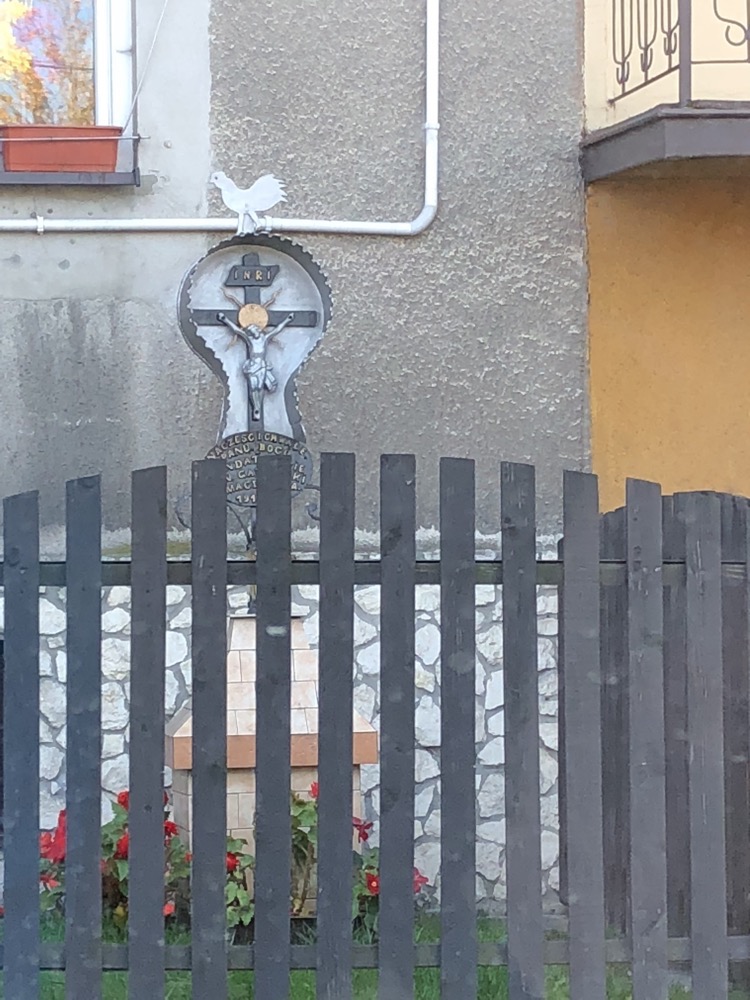 Amazingly dodgy servo lunch:
Amazingly dodgy servo lunch:
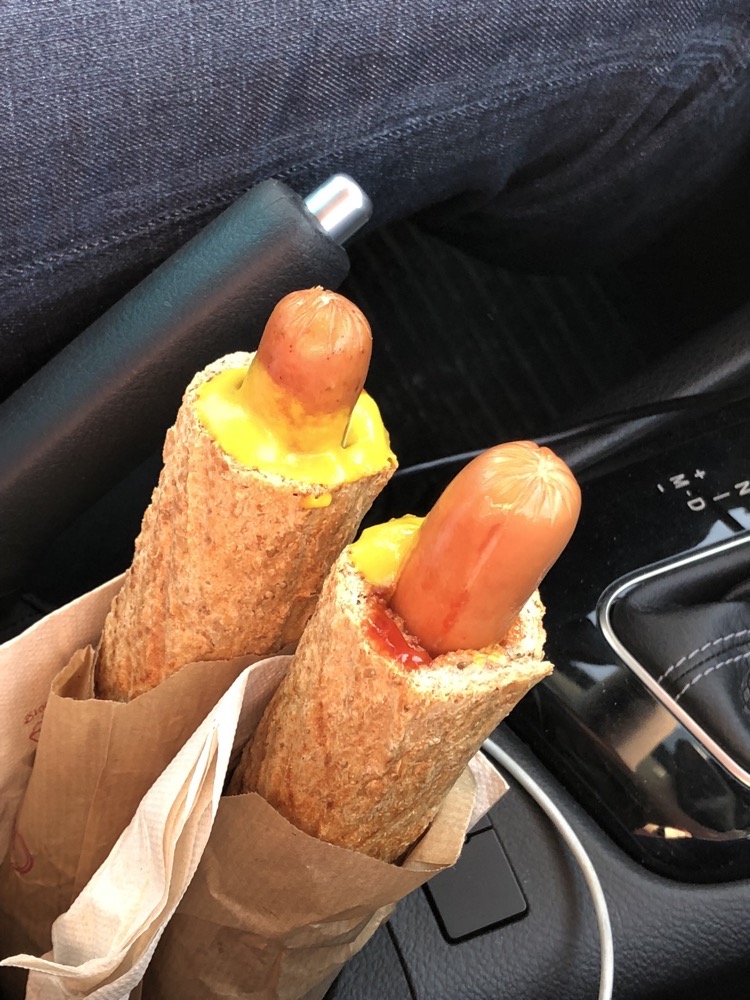 High speed landscape photography of the Polish countryside.
High speed landscape photography of the Polish countryside.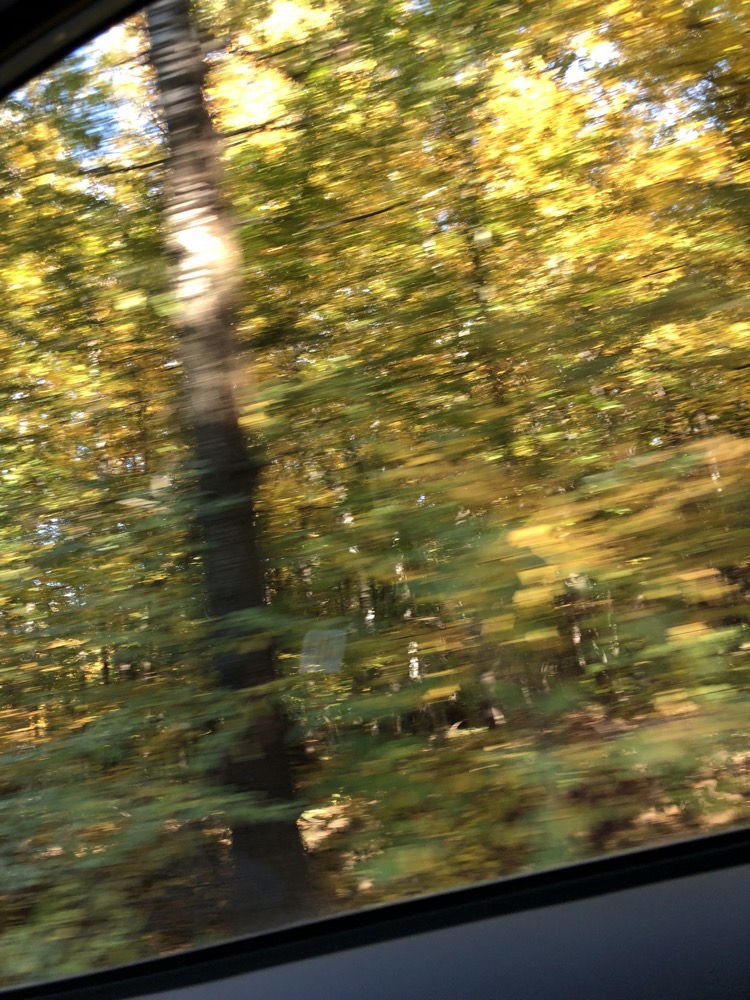 Beautiful though 🙂
Beautiful though 🙂 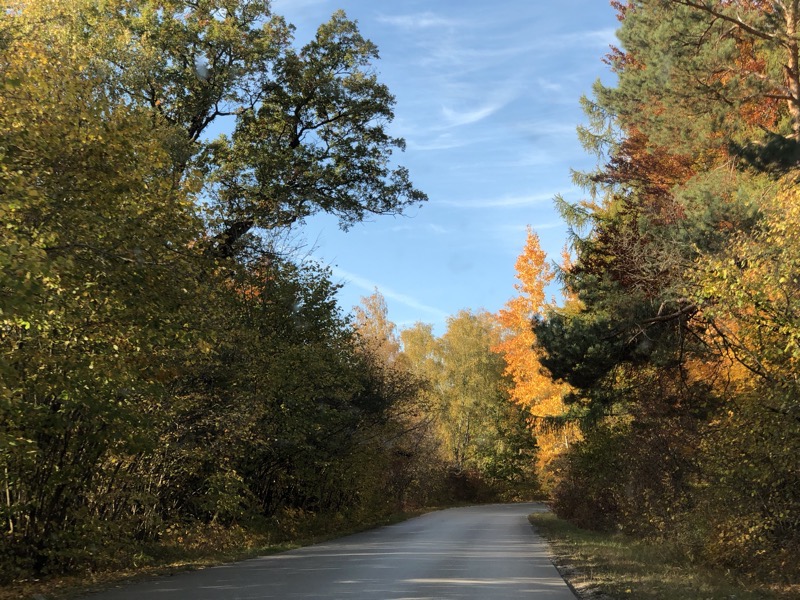
Again we got to experience the feeling of standing still while going 130kmph as crazy Audi and BMW drivers went flying past us weaving in and out of traffic… to be honest, I was kinda glad that out little Corolla wasn’t capable of it, or perhaps yale would have put his foot down even more. Amazingly we only saw one small car accident…
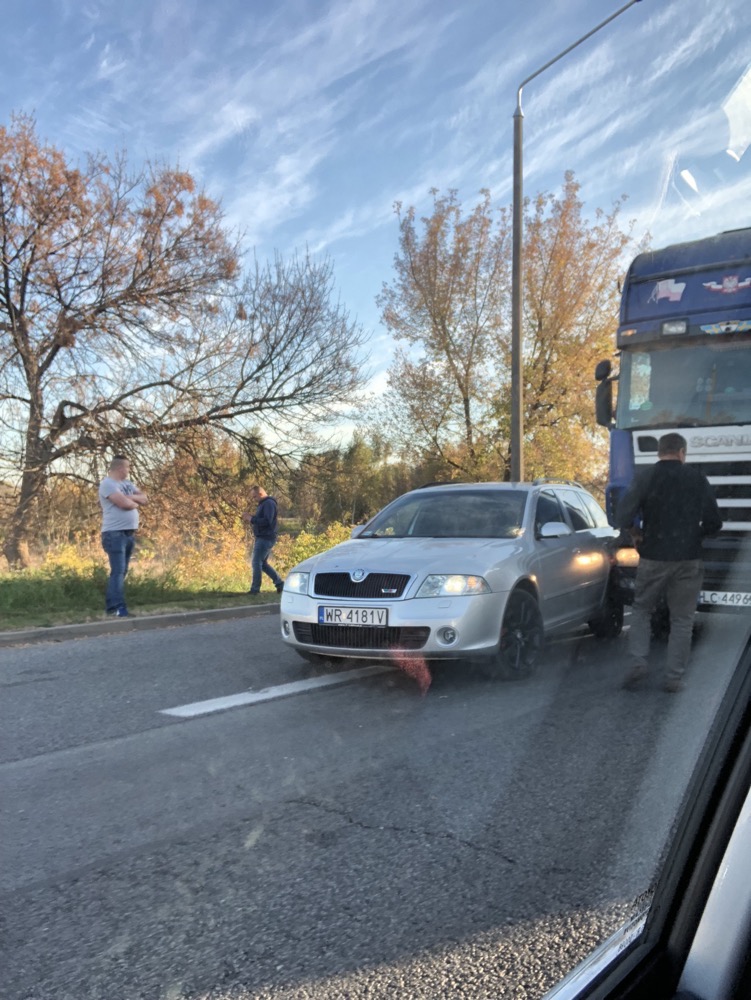 We arrived in Warsaw and went to the place that Booking.com said our accommodation was booked at – only to be met in a carpark by a woman who led us to a different location about two blocks away, and to what appeared to be a private apartment. I was seriously unimpressed to discover the apartment (while having all the amenities of what we had booked) was nothing like what we had actually booked… for a start, we could not get our luggage all the way to the apartment without taking a very dodgy old lift up 15 stories and then going up through a maze of not very well kept corridors and two flights of stairs.
We arrived in Warsaw and went to the place that Booking.com said our accommodation was booked at – only to be met in a carpark by a woman who led us to a different location about two blocks away, and to what appeared to be a private apartment. I was seriously unimpressed to discover the apartment (while having all the amenities of what we had booked) was nothing like what we had actually booked… for a start, we could not get our luggage all the way to the apartment without taking a very dodgy old lift up 15 stories and then going up through a maze of not very well kept corridors and two flights of stairs.
After the strange woman showed us to our weird accommdations, we immediately went in search of quick food not too far away. yale opted for massive loaded hotdogs and I had a swiss cheese and mushroom burger at a place called The Brooklyn Bar.
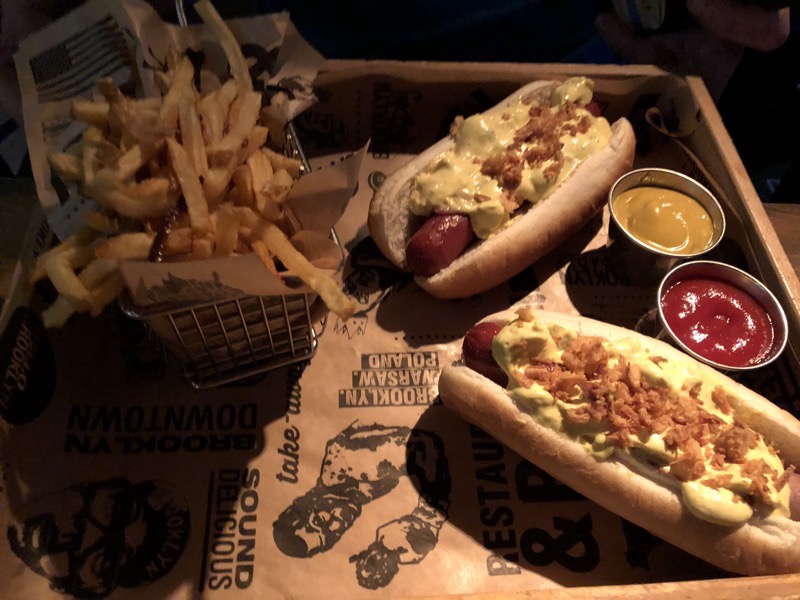 I was not actually sure the owner/designer had ever been to Brooklyn or to a bar in Brooklyn in the last decade – but the food was mostly edible, the loud hip-hop was totally dreadful, but the cheap shots of vodka made the whole thing bearable.
I was not actually sure the owner/designer had ever been to Brooklyn or to a bar in Brooklyn in the last decade – but the food was mostly edible, the loud hip-hop was totally dreadful, but the cheap shots of vodka made the whole thing bearable. Back to the apartment and yale carried everything up the flights of stairs after taking the scary antique lift to the 15ht floor.
Back to the apartment and yale carried everything up the flights of stairs after taking the scary antique lift to the 15ht floor. 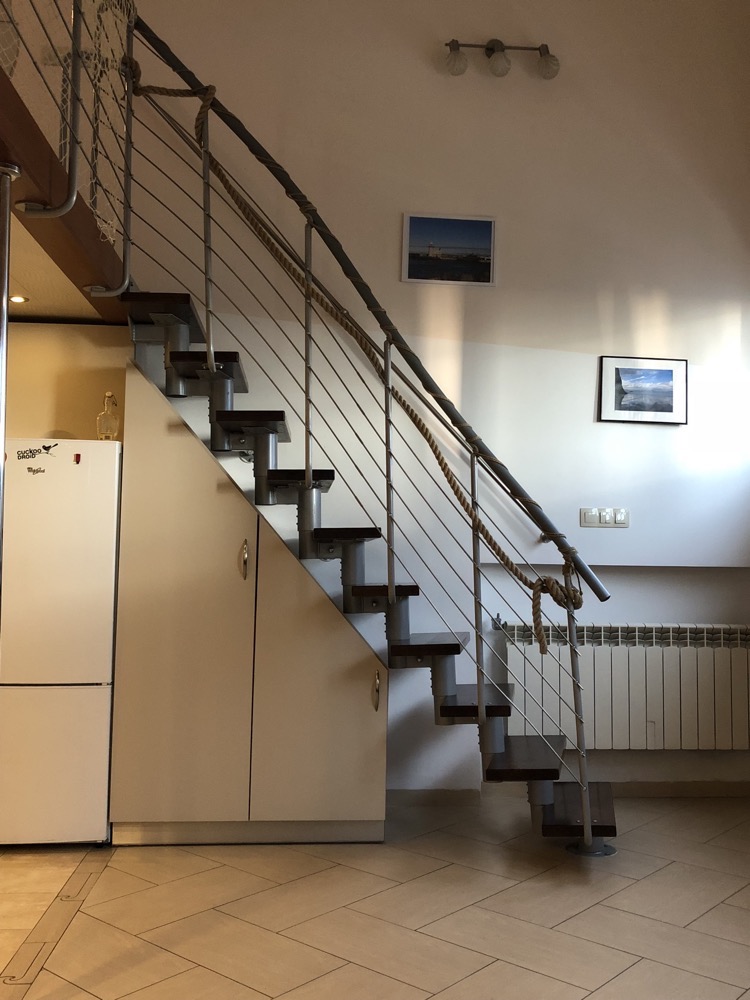 Back in the apartment – bedroom is up a flight of narrow twisty stairs to a low ceilinged loft, that I was going to have to navigate coming down first thing in the morning when my back is at it’s absolute worst and walking is sometimes problematic let alone weird odd height staircases. I mean, it was a nice enough space, but I would not have booked it had these been the pictures on the booking website.
Back in the apartment – bedroom is up a flight of narrow twisty stairs to a low ceilinged loft, that I was going to have to navigate coming down first thing in the morning when my back is at it’s absolute worst and walking is sometimes problematic let alone weird odd height staircases. I mean, it was a nice enough space, but I would not have booked it had these been the pictures on the booking website.
We laughed about most of it – especially the tiny pokey shower cubicle – the vodkas over dinner helped. yale for scale: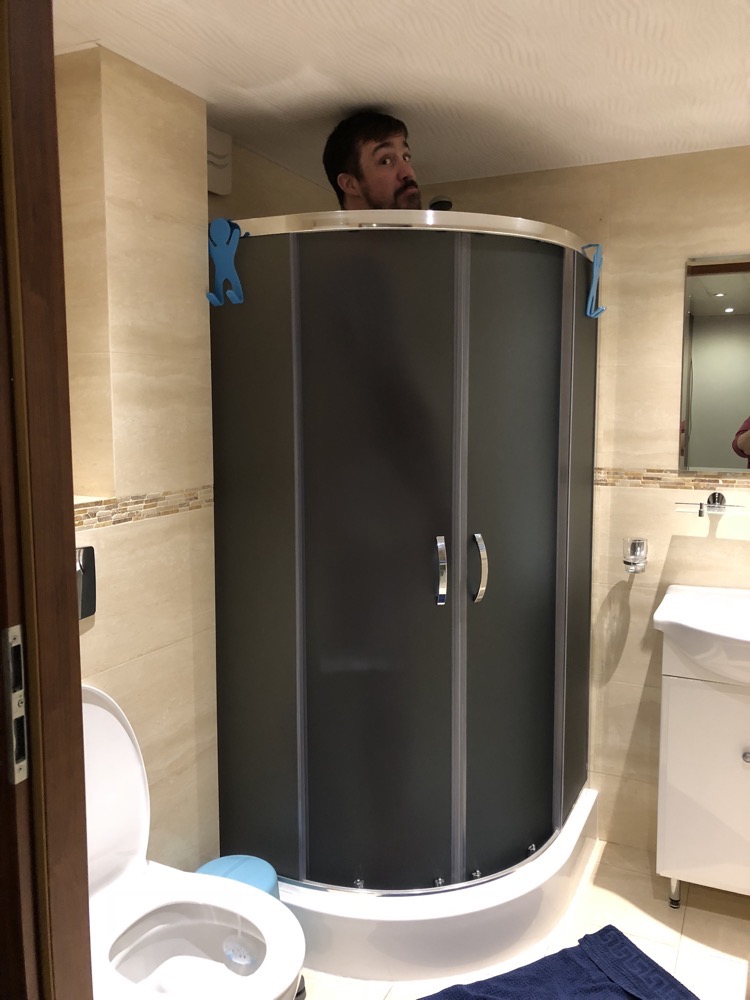
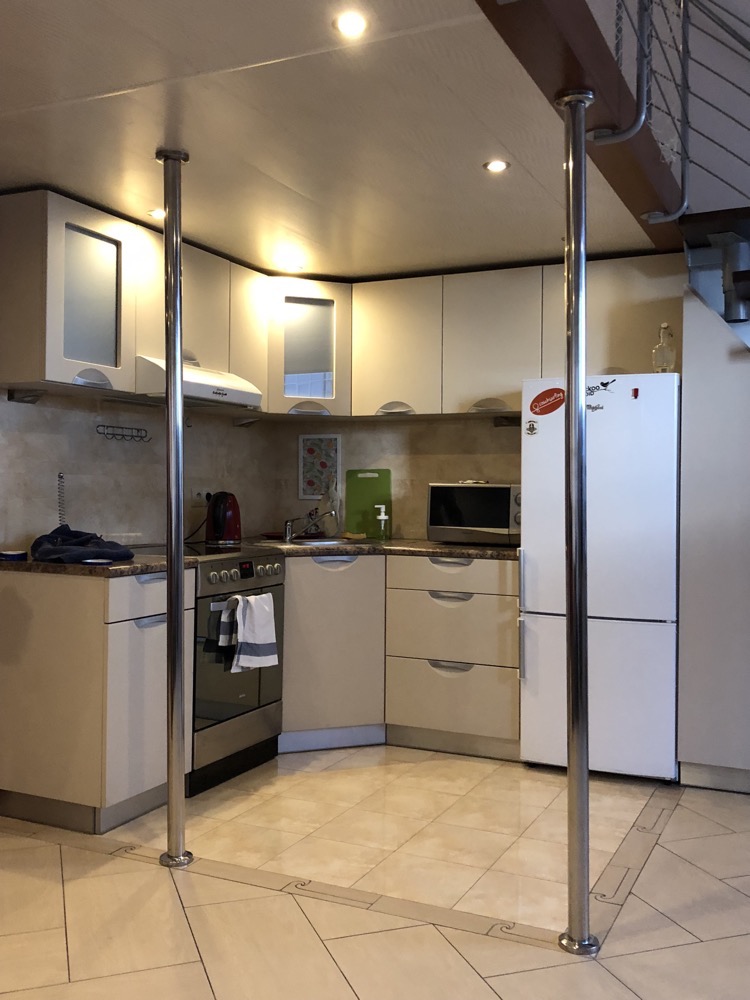 Oh well, we are supposed to be staying here again in a few days time – but have decided to cancel and find something that 1) has no stairs to bed and 2) has a decent chance of a shower that yale can fit it! Another interesting review coming up for these guys too!
Oh well, we are supposed to be staying here again in a few days time – but have decided to cancel and find something that 1) has no stairs to bed and 2) has a decent chance of a shower that yale can fit it! Another interesting review coming up for these guys too!

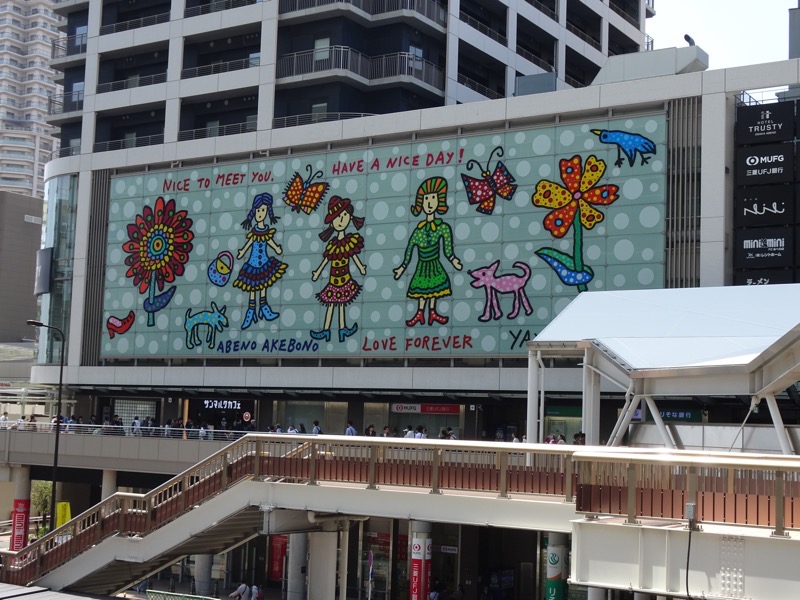 We wandered through the shops and while there is plenty of high-end shopping in this complex (Bvlgari, Louis Vuitton, etc), I particularly love the Kintetsu department stores for their kimono sections. Most upscale department stores will have an area that sells traditional yakuta and kimono and of course all the accessories – obis, ties, geta and zori sandals, Kinchaku Bags, traditional Tsumami Kanzashi hair ornaments, etc. They’re so delicate and have such a very particular design aesthetic.
We wandered through the shops and while there is plenty of high-end shopping in this complex (Bvlgari, Louis Vuitton, etc), I particularly love the Kintetsu department stores for their kimono sections. Most upscale department stores will have an area that sells traditional yakuta and kimono and of course all the accessories – obis, ties, geta and zori sandals, Kinchaku Bags, traditional Tsumami Kanzashi hair ornaments, etc. They’re so delicate and have such a very particular design aesthetic. 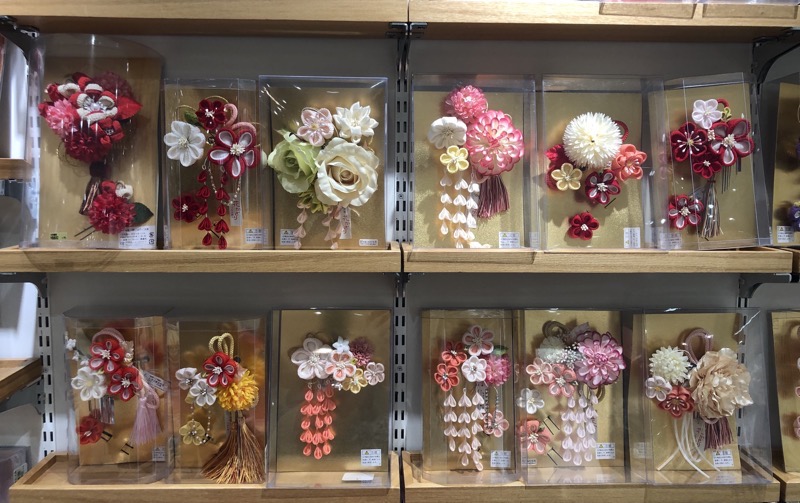

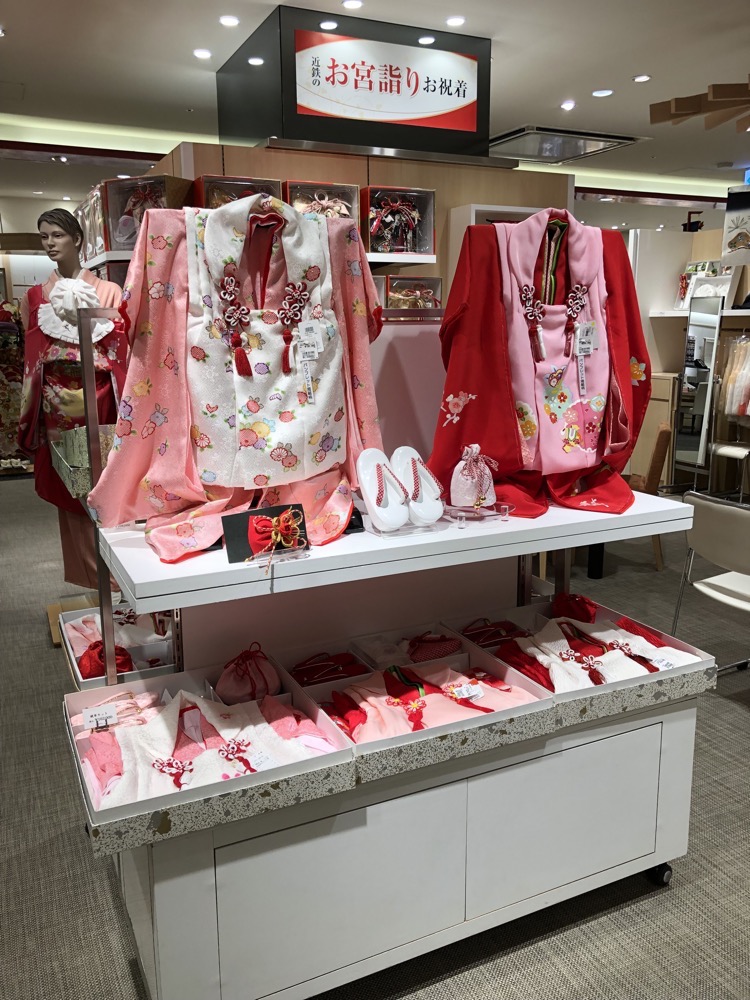
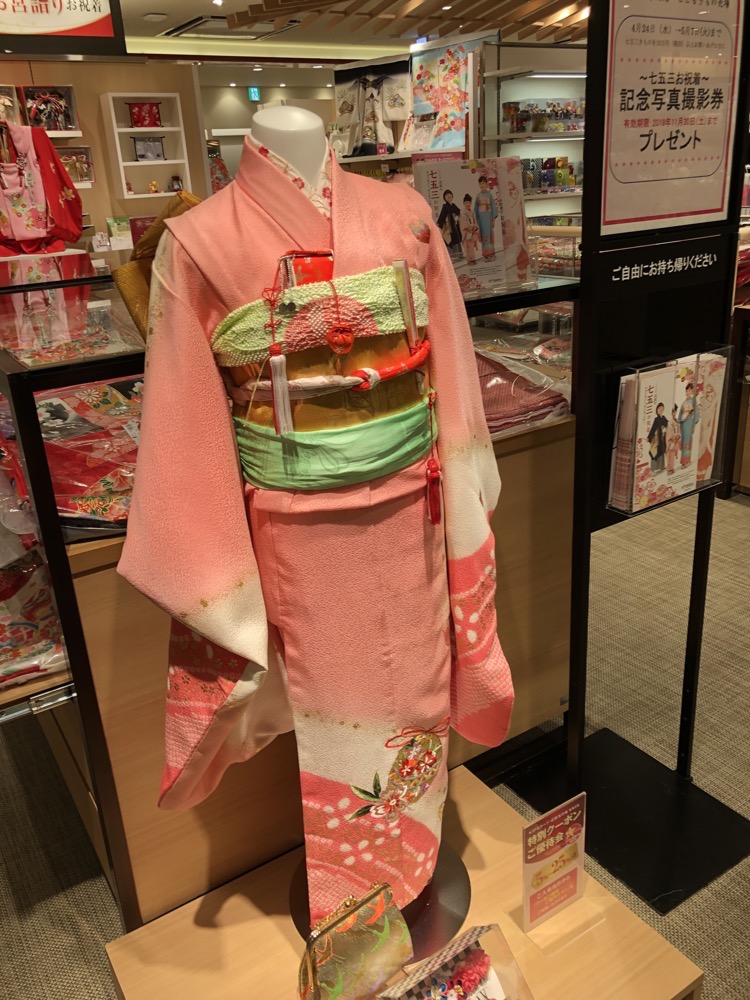
 There’s still a long way up in this tower – it’s 70 something stories high, mostly hotel and office space.
There’s still a long way up in this tower – it’s 70 something stories high, mostly hotel and office space.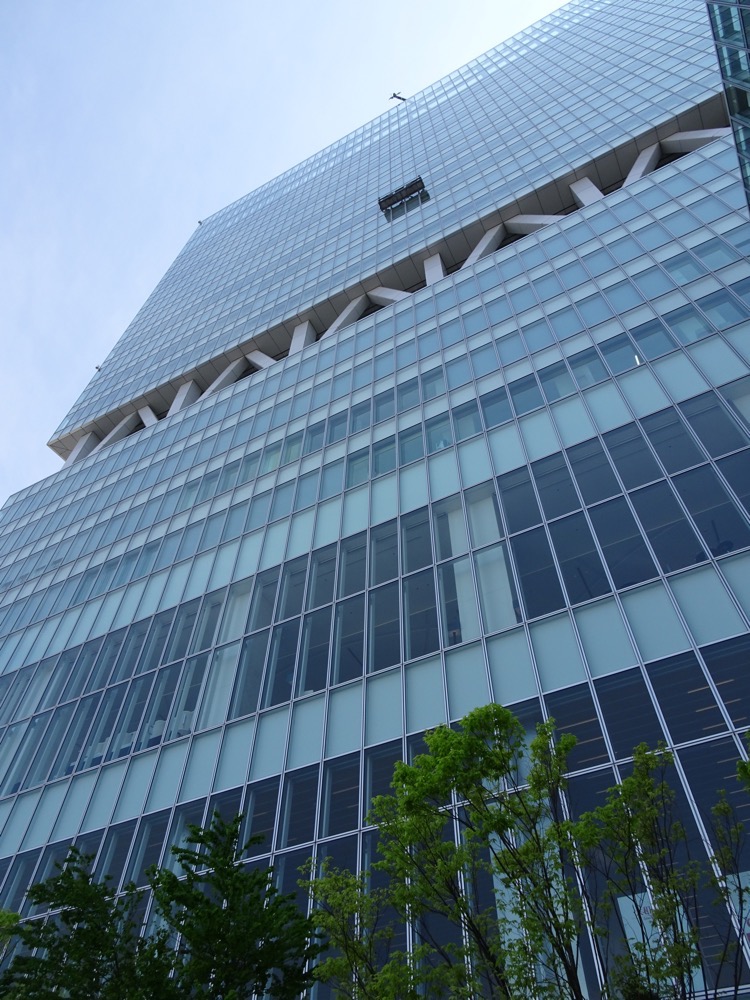 And that there, is some dudes cleaning the windows!
And that there, is some dudes cleaning the windows!
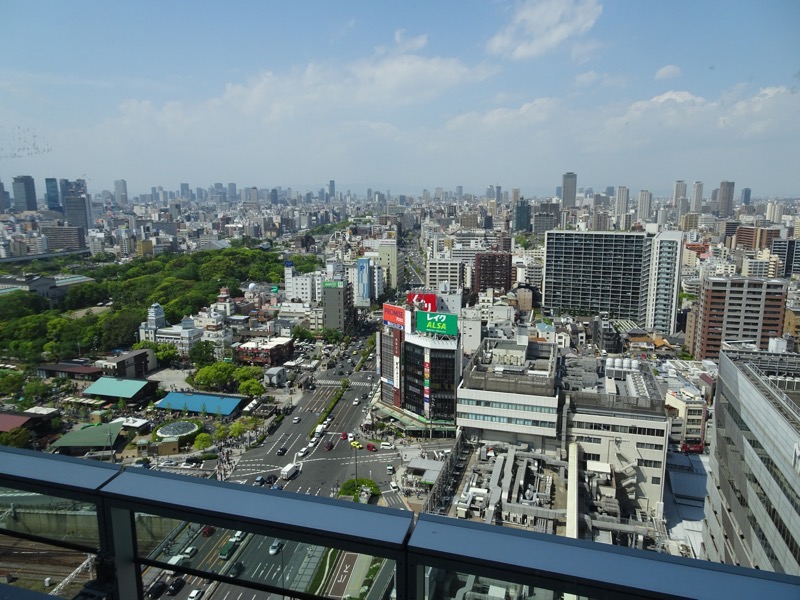
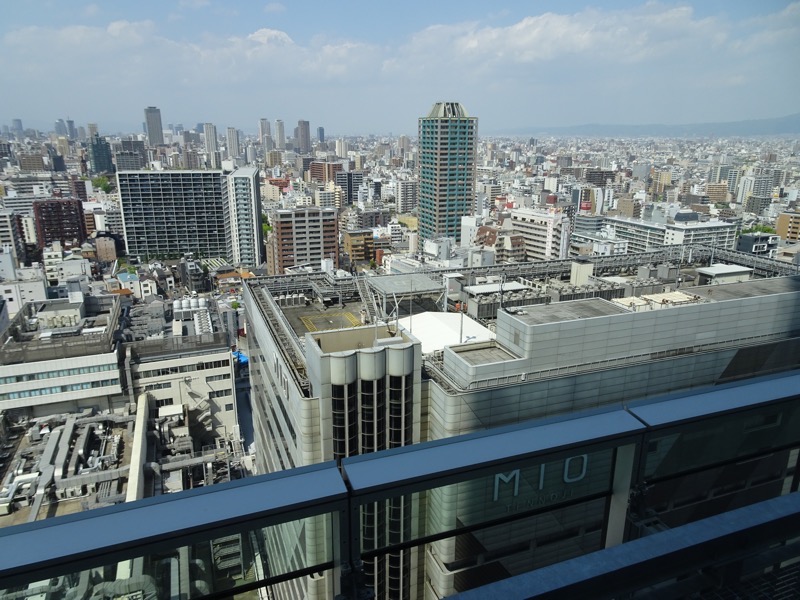
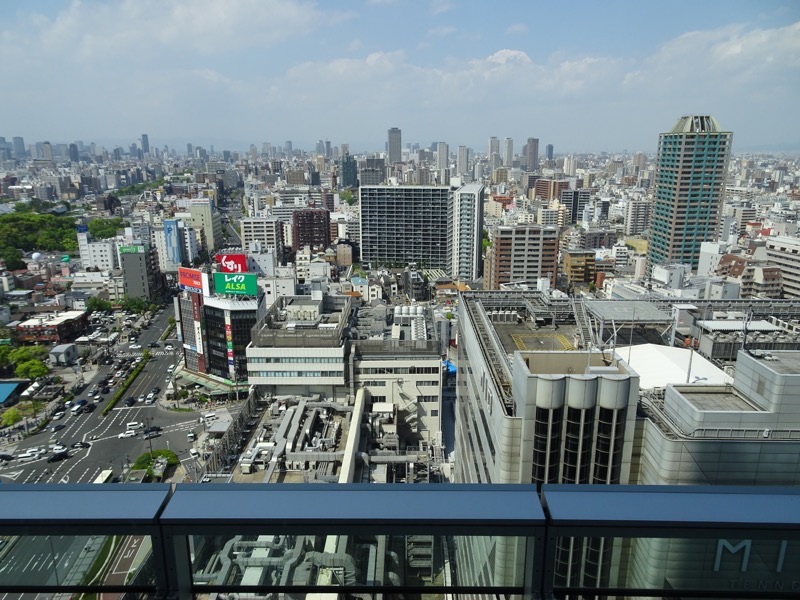 We toyed with the idea of going all the way to the top of the tower to check it out, but of course, Golden Week strikes again and the place is pretty packed. Between the queue and the JP¥1500 per person to use the elevator (?!?) we decided not to.
We toyed with the idea of going all the way to the top of the tower to check it out, but of course, Golden Week strikes again and the place is pretty packed. Between the queue and the JP¥1500 per person to use the elevator (?!?) we decided not to.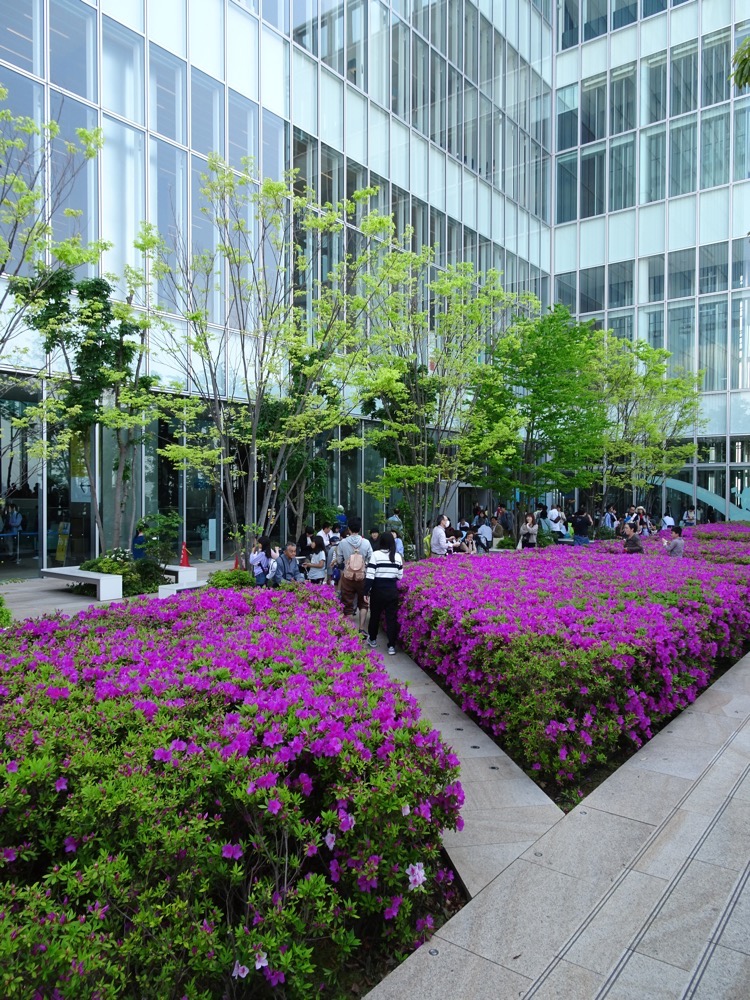
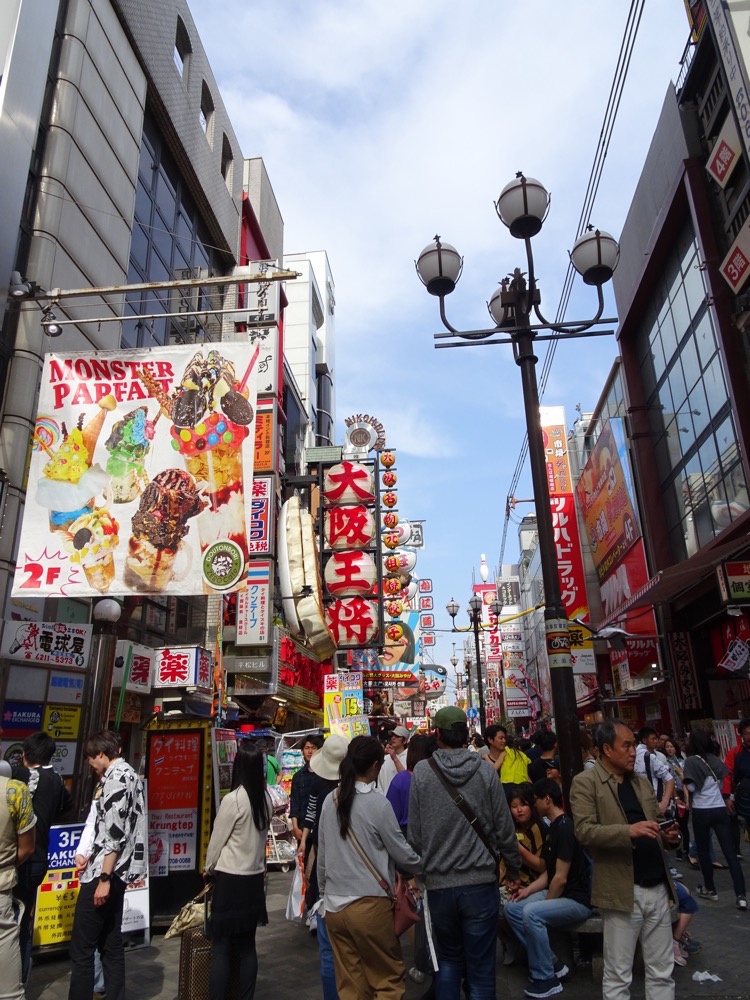
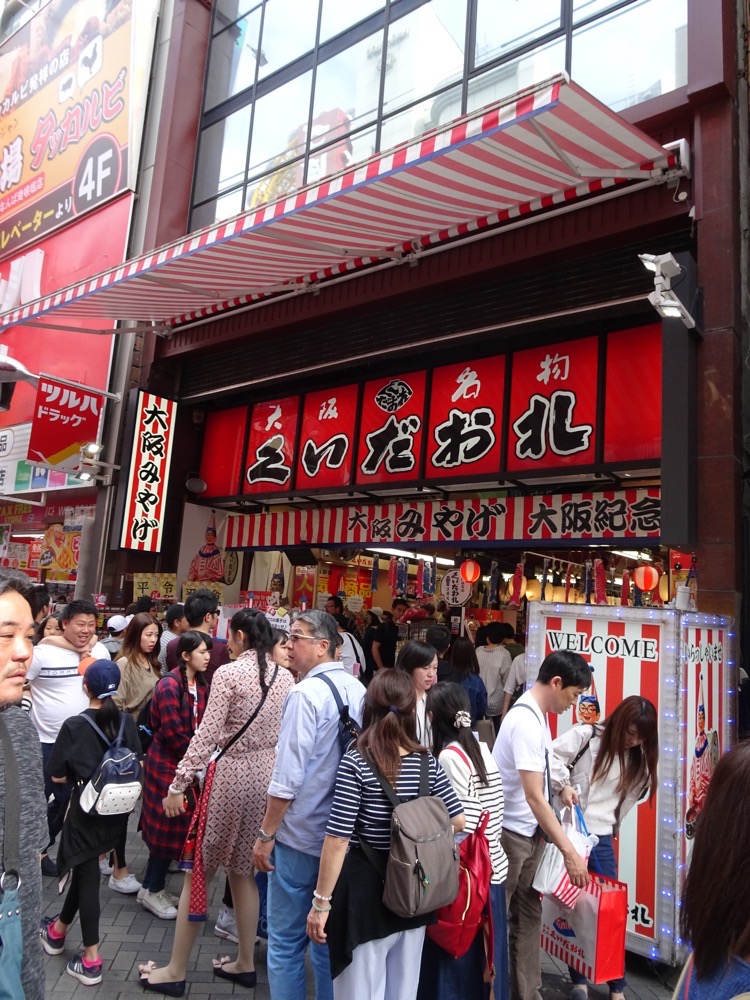 There’s also more than a slight obsession with takoyaki here… stalls of takoyaki everwhere, squid and takoyaki souvenirs all over the place. As a general rule, it is poor etiquette to be eating in public in Japan – seemingly the only ‘proper’ exclusion to that seems to be the standing around takoyaki street vendors eating your little balls of squidly goodness on a toothpick.
There’s also more than a slight obsession with takoyaki here… stalls of takoyaki everwhere, squid and takoyaki souvenirs all over the place. As a general rule, it is poor etiquette to be eating in public in Japan – seemingly the only ‘proper’ exclusion to that seems to be the standing around takoyaki street vendors eating your little balls of squidly goodness on a toothpick. 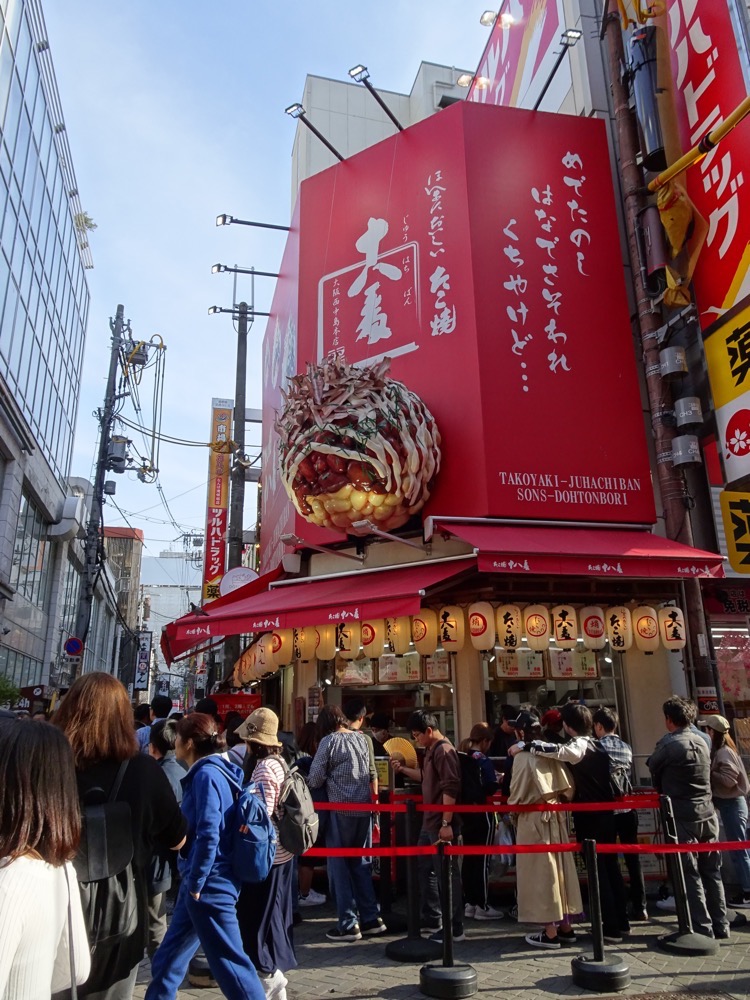
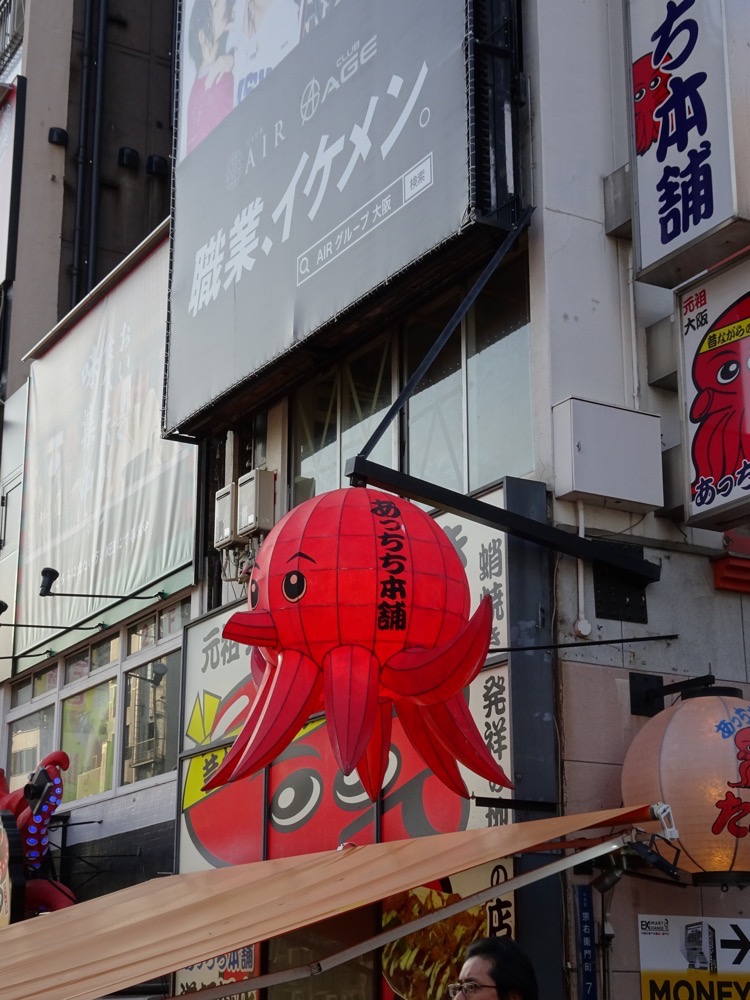
 The narrow alleyways of shops and restaurants go off in every direction for miles.
The narrow alleyways of shops and restaurants go off in every direction for miles. 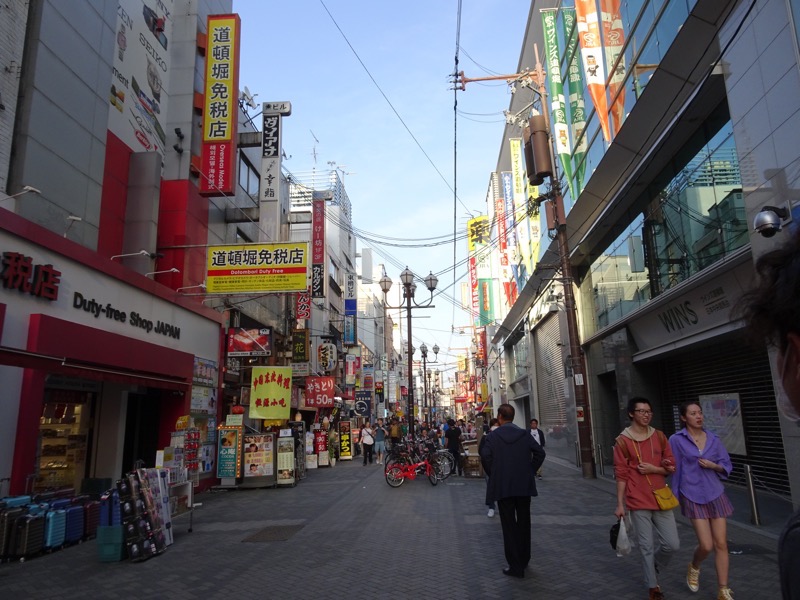

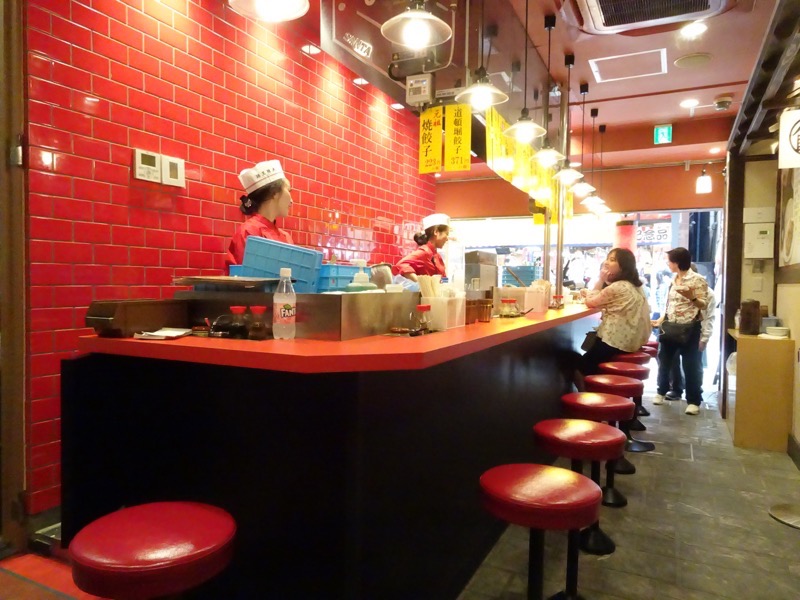 I can’t imagine how many thousands of gyoza these ladies made today… the place was filled to the brim and it was about 3pm.
I can’t imagine how many thousands of gyoza these ladies made today… the place was filled to the brim and it was about 3pm.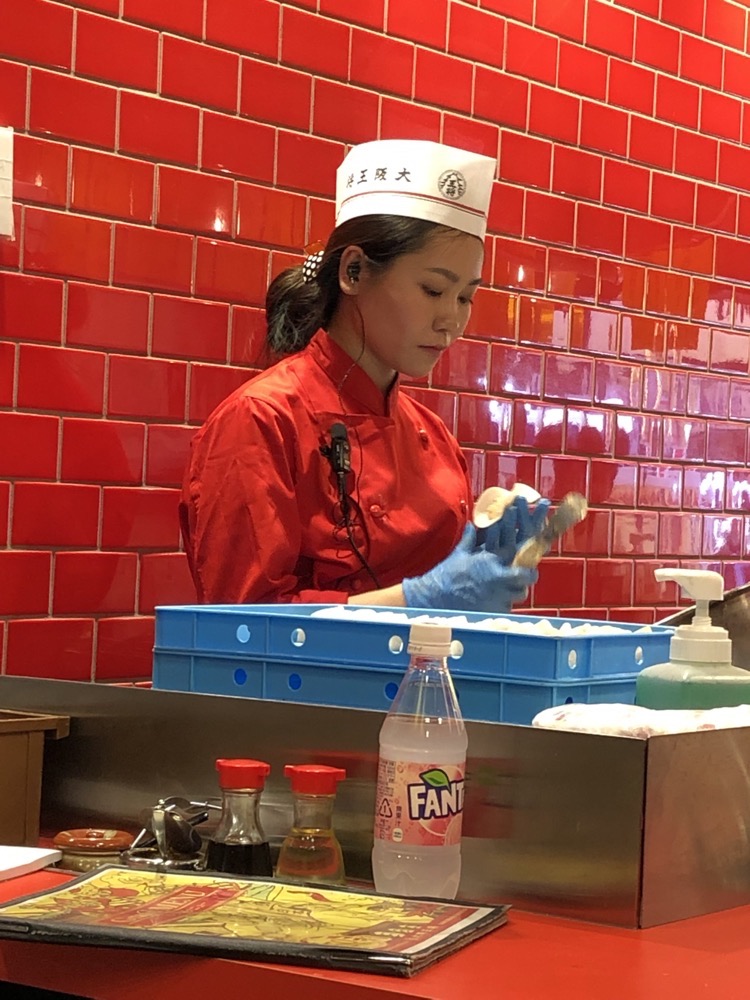
 After the gyoza cravings had been quelled, we continued to wander the streets of Dontonburi, checking out the shops, looking in particular for liquor stores (how unlike us?!) and hunting for cool One Piece gifts to take home for #1 Son.
After the gyoza cravings had been quelled, we continued to wander the streets of Dontonburi, checking out the shops, looking in particular for liquor stores (how unlike us?!) and hunting for cool One Piece gifts to take home for #1 Son.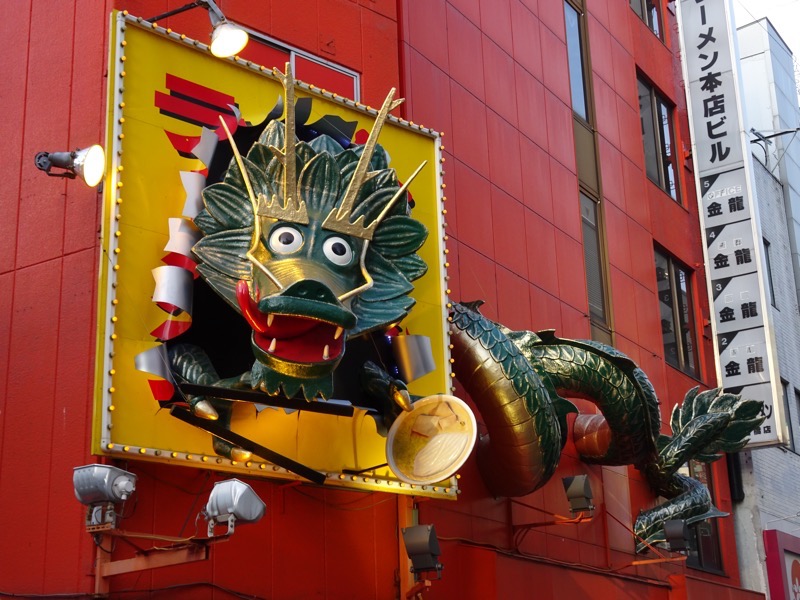 There seems to be no such thing as ‘overkill’ when it comes to creating signage for your shop or restaurant around here… there’s a definite, ‘more and bigger is better’ feel to all the street signage.
There seems to be no such thing as ‘overkill’ when it comes to creating signage for your shop or restaurant around here… there’s a definite, ‘more and bigger is better’ feel to all the street signage.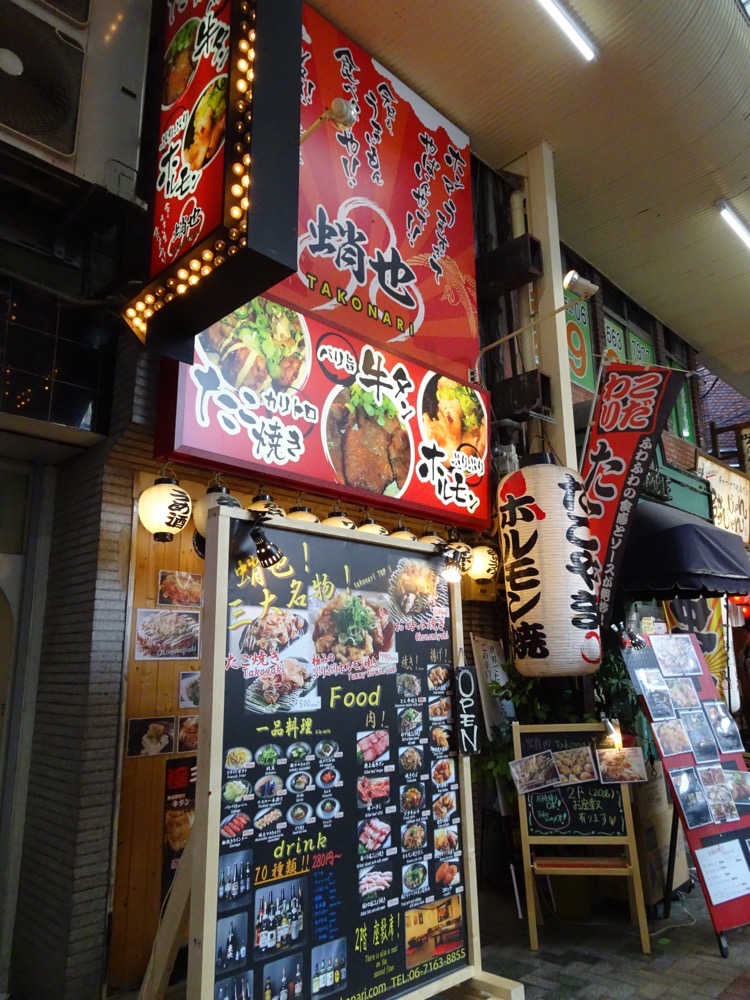
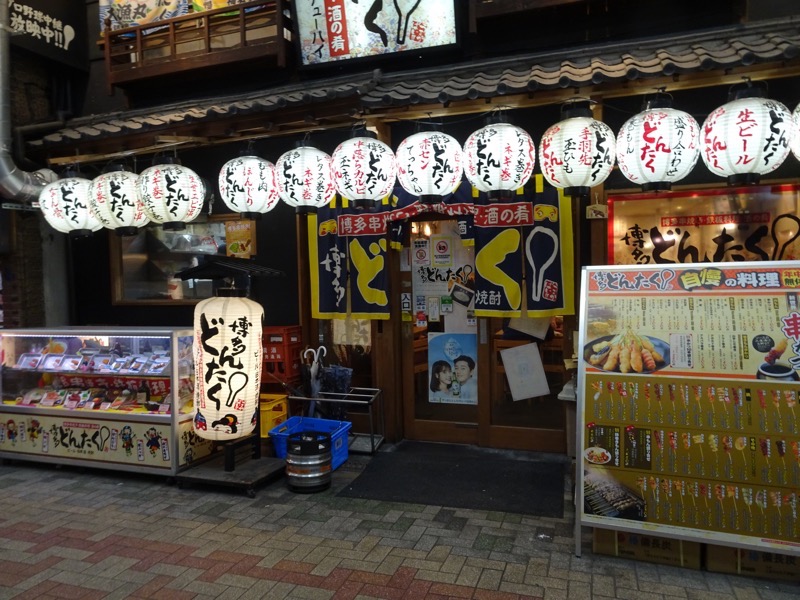
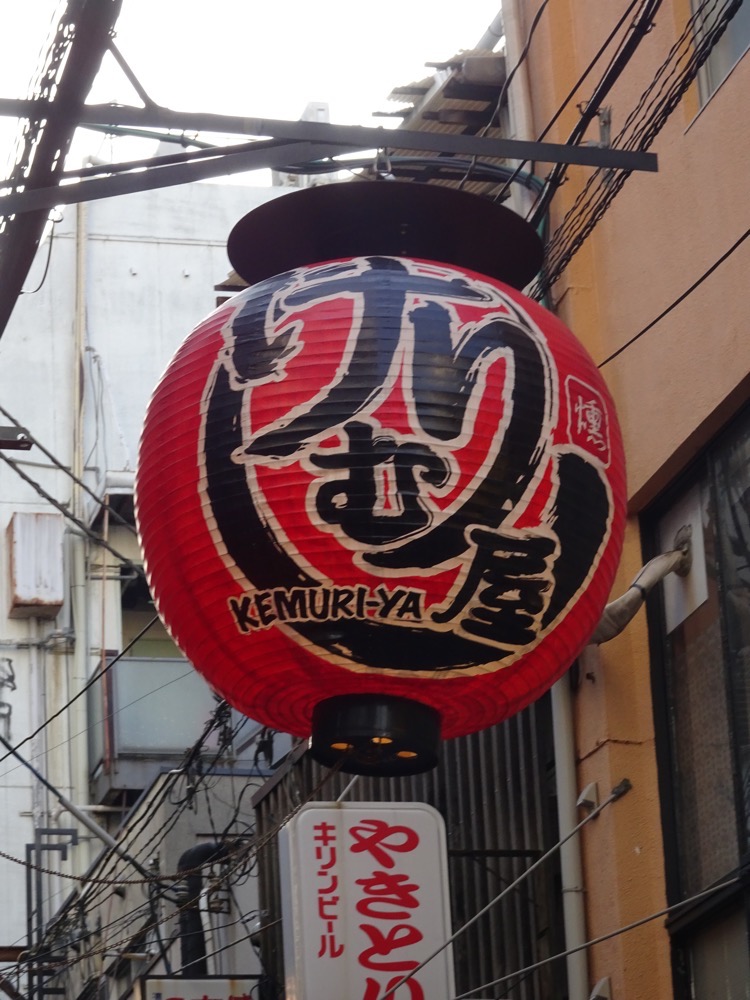 After a couple more hours of wandering around, I was keen to find a bar and chill out until the sun went down. Managed to find a cute little izakaya bar tucked away down a small alleyway that had a cheap and cheerful menu and we got ourselves some sake, beer and a sashimi snack. The izakaya bars are similar to tapas bars in Spain – informal, people tend to order small amounts of food and drink, and then just keep ordering bits and pieces for as long as you want to stay there.
After a couple more hours of wandering around, I was keen to find a bar and chill out until the sun went down. Managed to find a cute little izakaya bar tucked away down a small alleyway that had a cheap and cheerful menu and we got ourselves some sake, beer and a sashimi snack. The izakaya bars are similar to tapas bars in Spain – informal, people tend to order small amounts of food and drink, and then just keep ordering bits and pieces for as long as you want to stay there.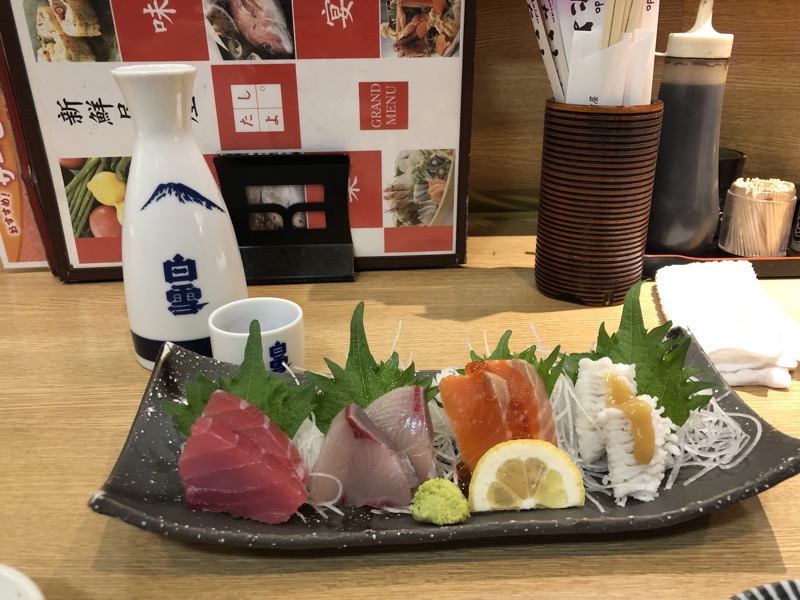
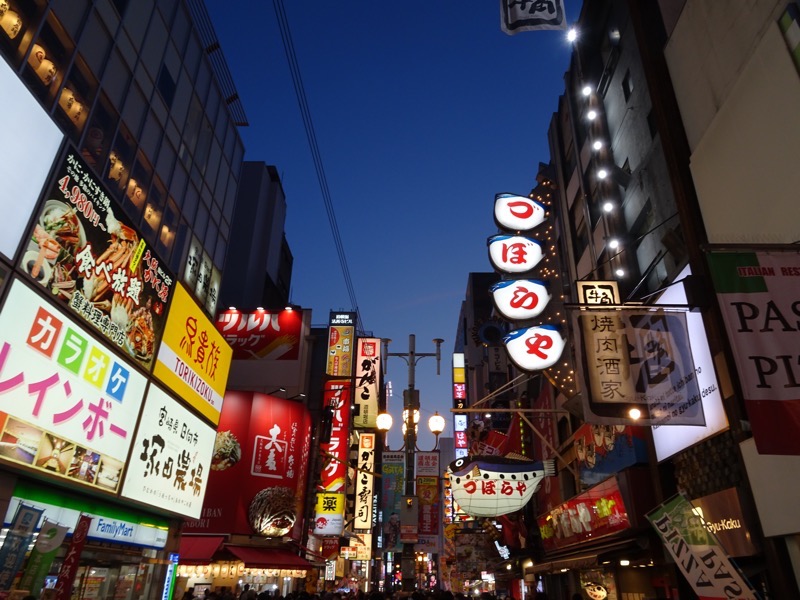
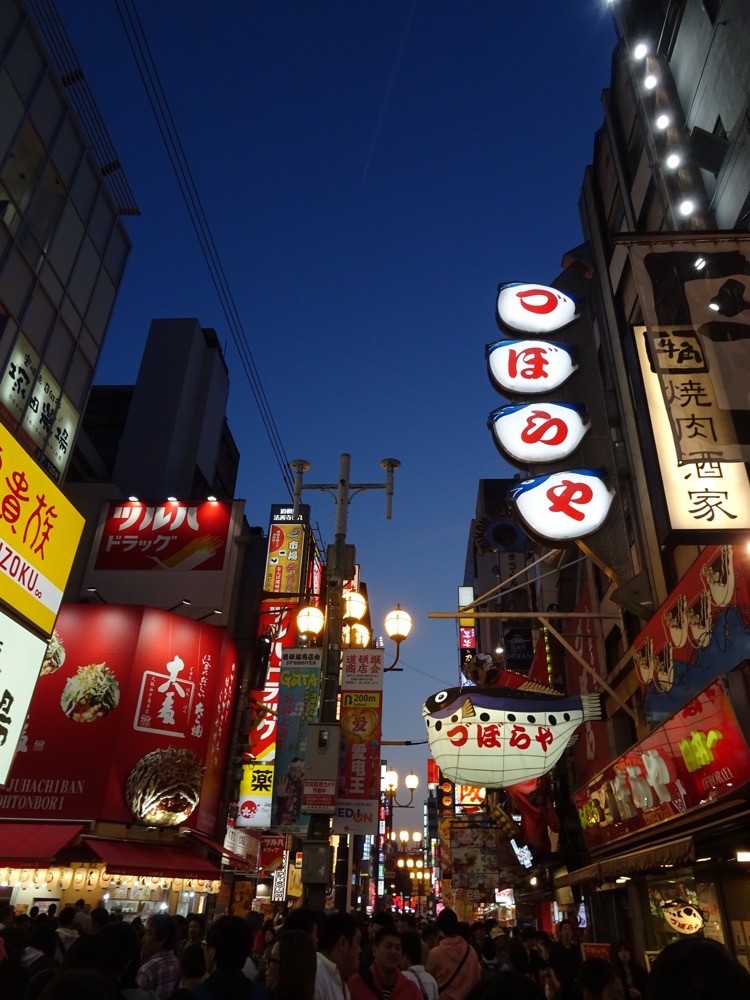
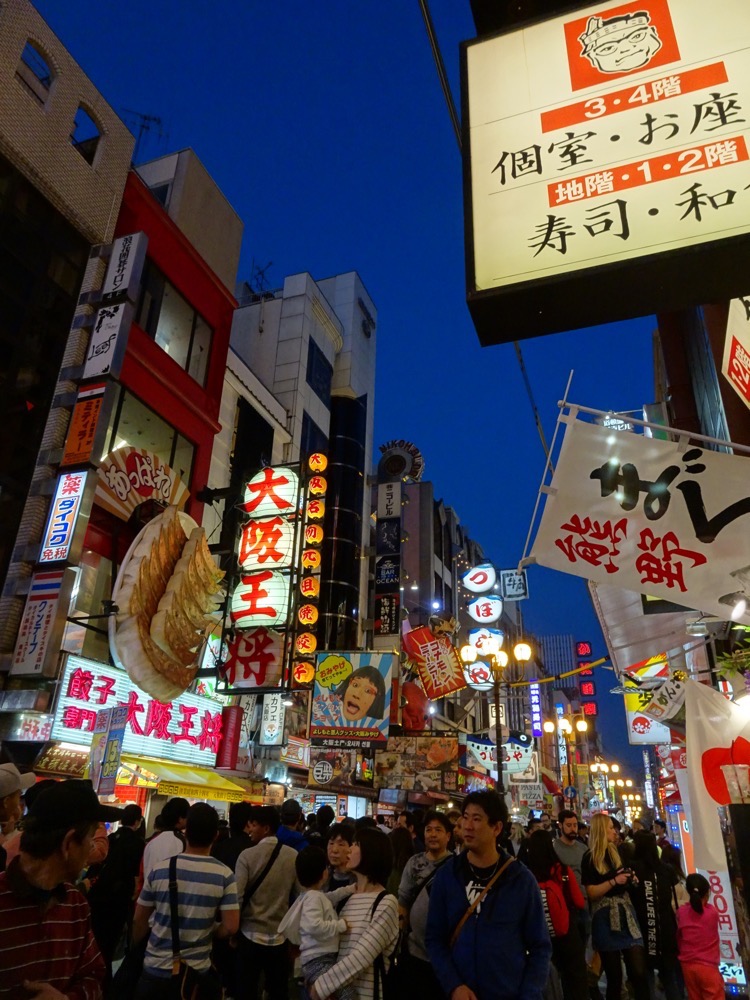 The canals look very cool all lit up at night.
The canals look very cool all lit up at night. And the rabbit warren of little alleyway bars feels like something out of a movie.
And the rabbit warren of little alleyway bars feels like something out of a movie.  All up we had a pretty chill day which was much needed. We were back at the hotel at a reasonable hour in time for another soak and some more sake in the hot tub… which is starting to feel like a habit at this point!
All up we had a pretty chill day which was much needed. We were back at the hotel at a reasonable hour in time for another soak and some more sake in the hot tub… which is starting to feel like a habit at this point!
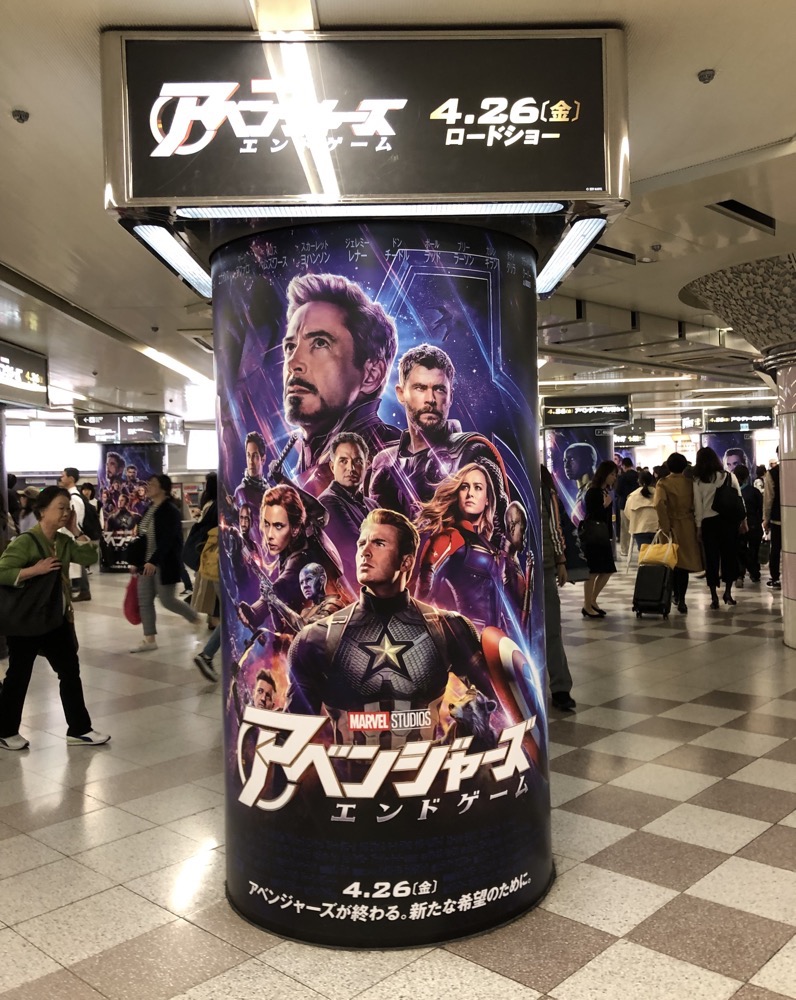 So we had popped down there yesterday afternoon and bought some tickets using an online ticket machine that wasn’t in English. As we walked away Y5400 lighter, I found myself wondering if they were indeed tickets to see ‘Avengers, End Game’ or could we have found ourselves going to see some other random crap instead! I’m always apprehensive about going to see movies in foreign countries, especially non-English speaking ones – I think it’s some sort of delayed reaction to the Munich Forest Gump Incident of ’95…
So we had popped down there yesterday afternoon and bought some tickets using an online ticket machine that wasn’t in English. As we walked away Y5400 lighter, I found myself wondering if they were indeed tickets to see ‘Avengers, End Game’ or could we have found ourselves going to see some other random crap instead! I’m always apprehensive about going to see movies in foreign countries, especially non-English speaking ones – I think it’s some sort of delayed reaction to the Munich Forest Gump Incident of ’95…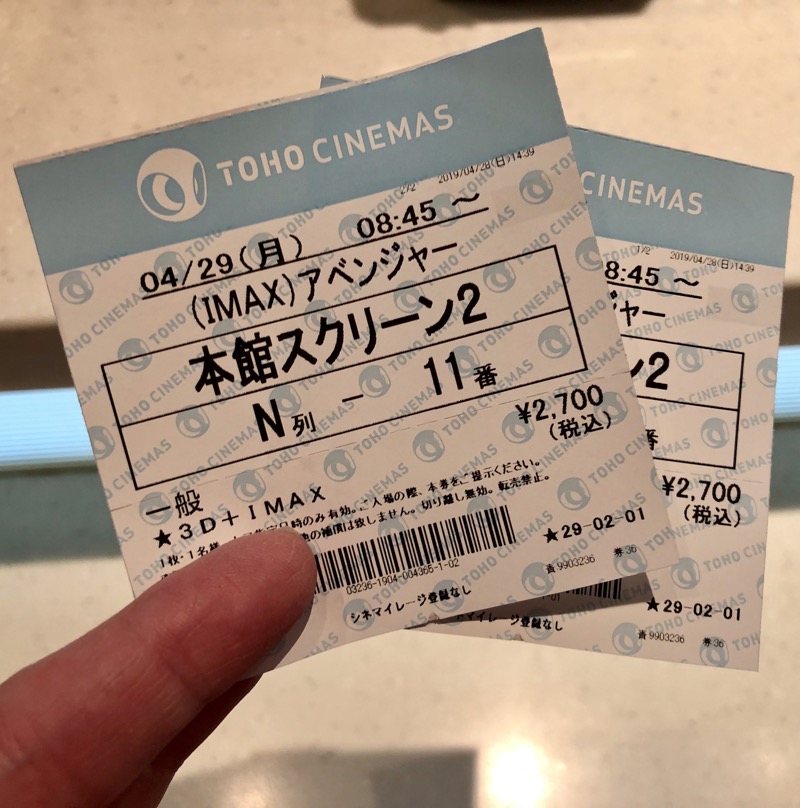 But fortunately, when we arrived this morning for our 0845 session *insert eye rolling here over the hour*, we discovered that our tickets were indeed for the correct film – in IMAX 3D… because many of the 2D sessions looked like they were dubbed.
But fortunately, when we arrived this morning for our 0845 session *insert eye rolling here over the hour*, we discovered that our tickets were indeed for the correct film – in IMAX 3D… because many of the 2D sessions looked like they were dubbed. 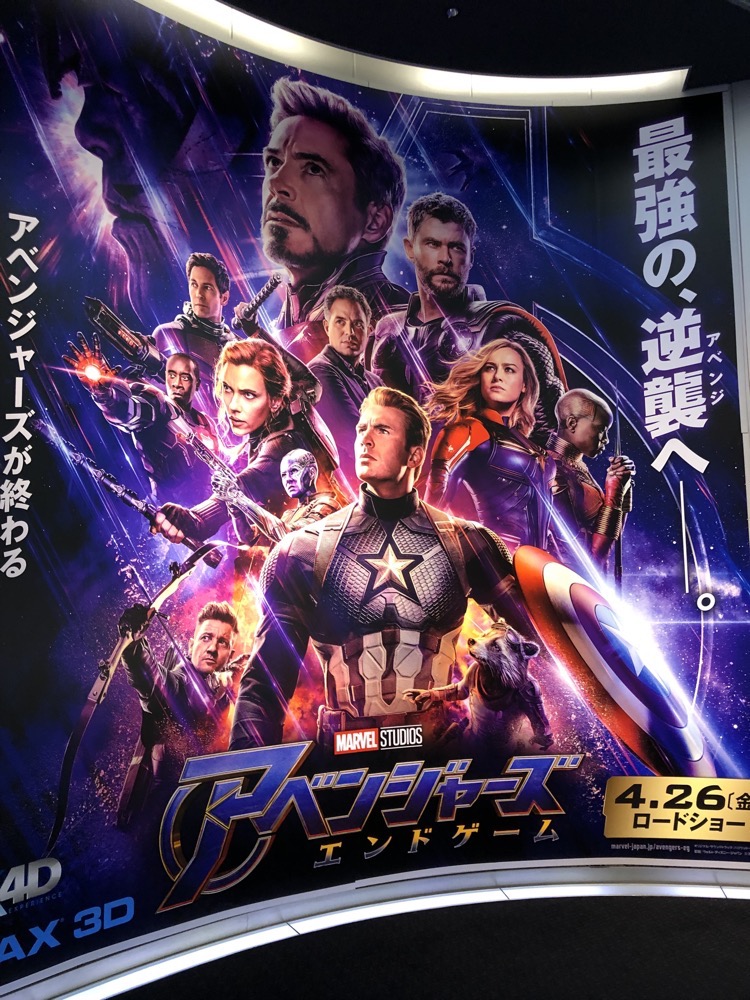 A couple of curiosities I noted at Japanese cinemas – there’s film merchandise for sale in the foyer…
A couple of curiosities I noted at Japanese cinemas – there’s film merchandise for sale in the foyer…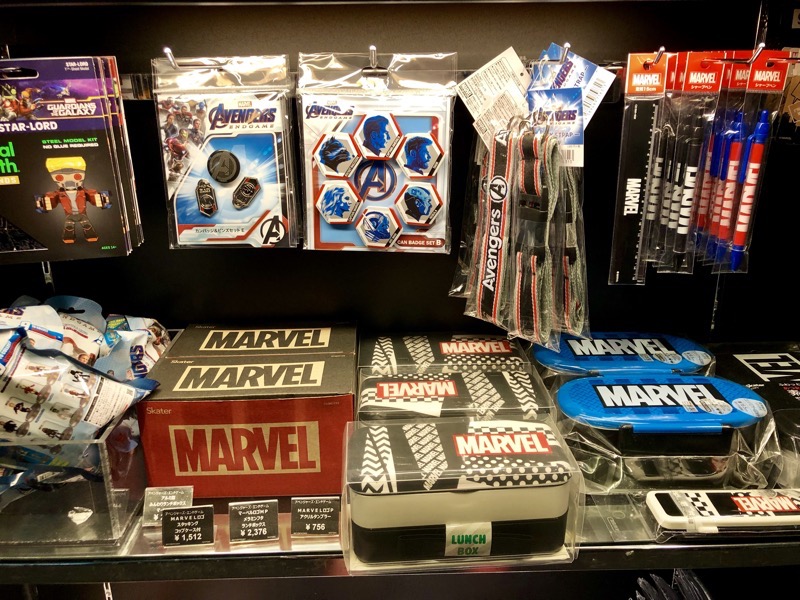
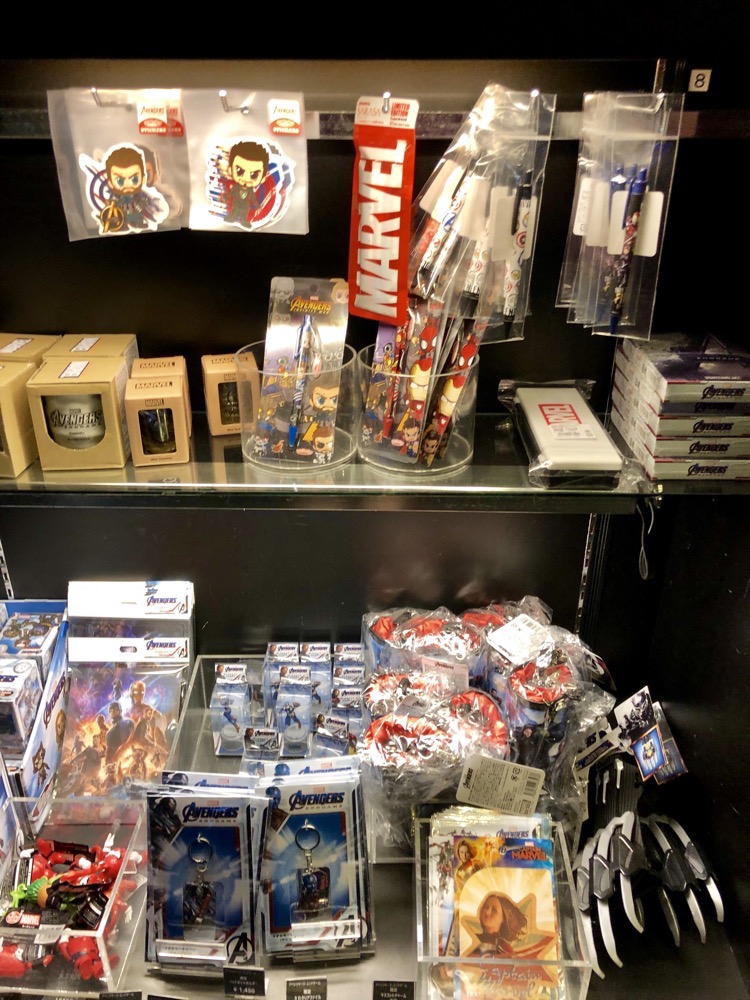 And your candy bar selections come in a convenient little plastic tray that fits neatly into your seat drinker holder and becomes a little moveable table, like a student desk.
And your candy bar selections come in a convenient little plastic tray that fits neatly into your seat drinker holder and becomes a little moveable table, like a student desk.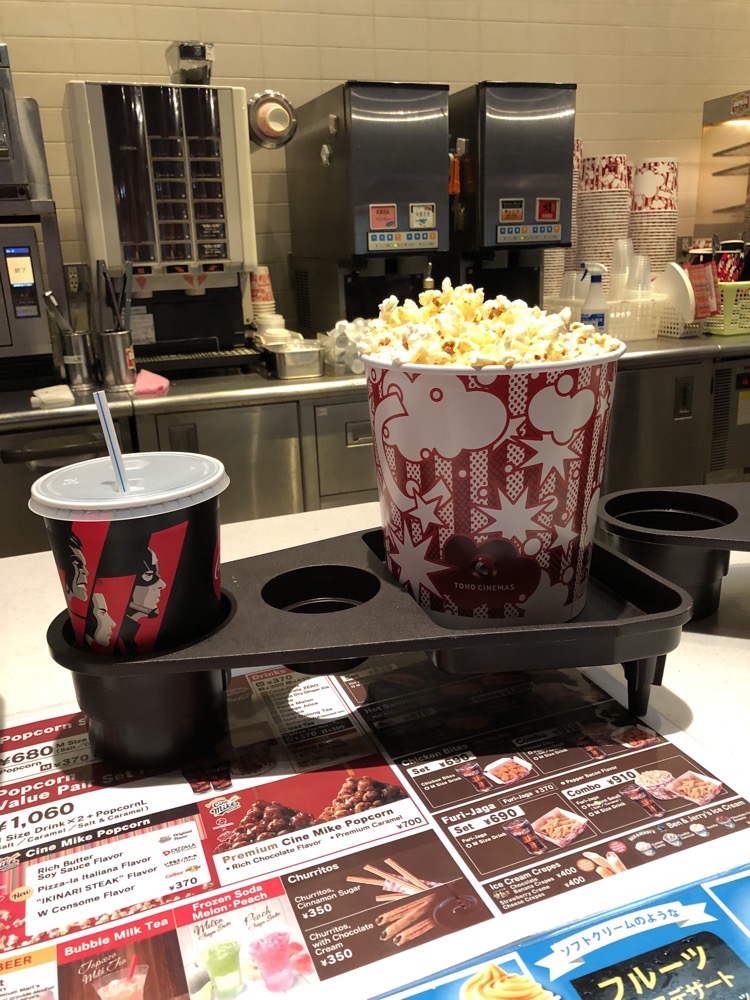
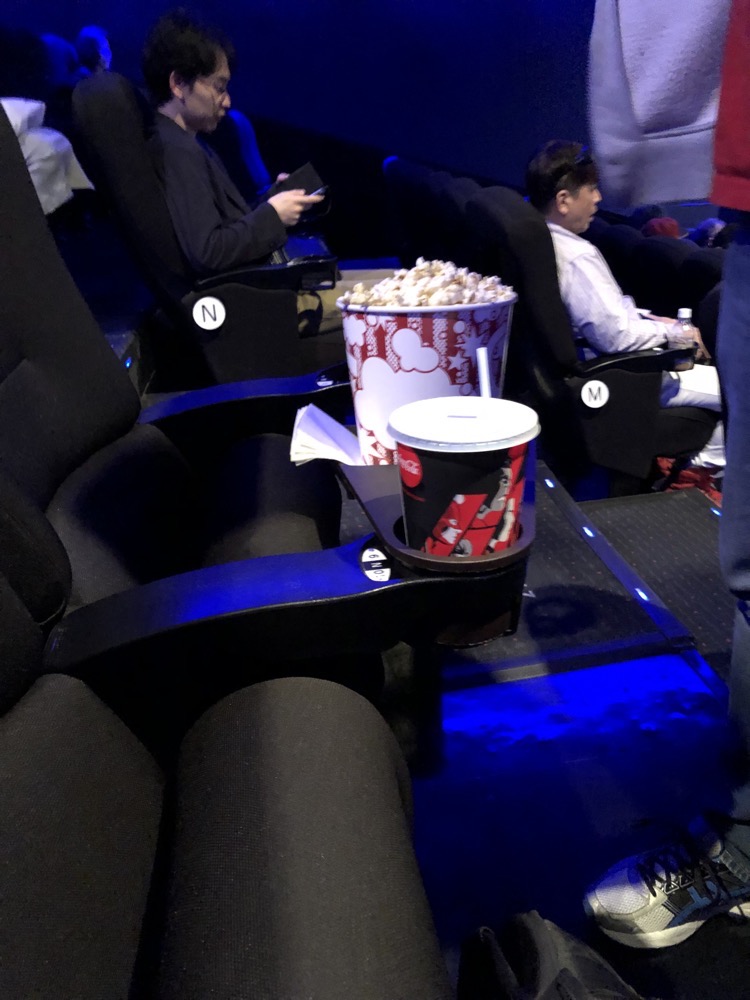
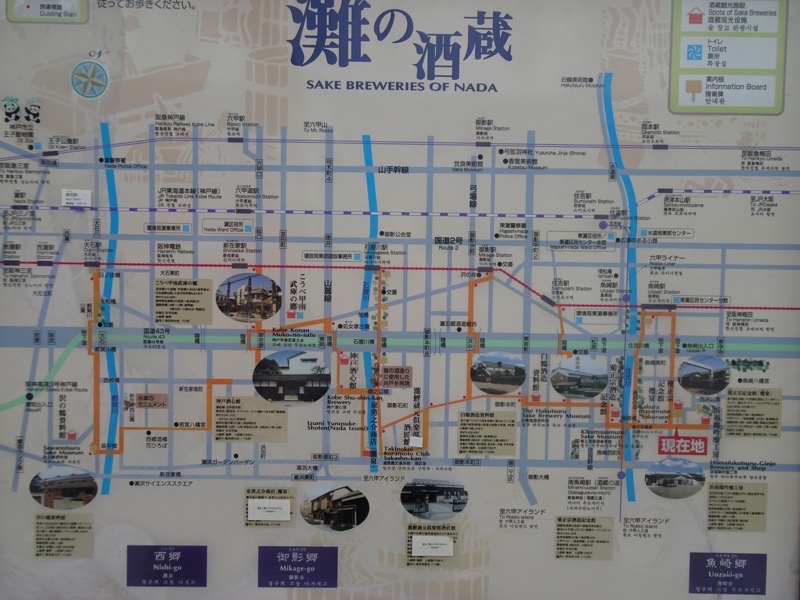
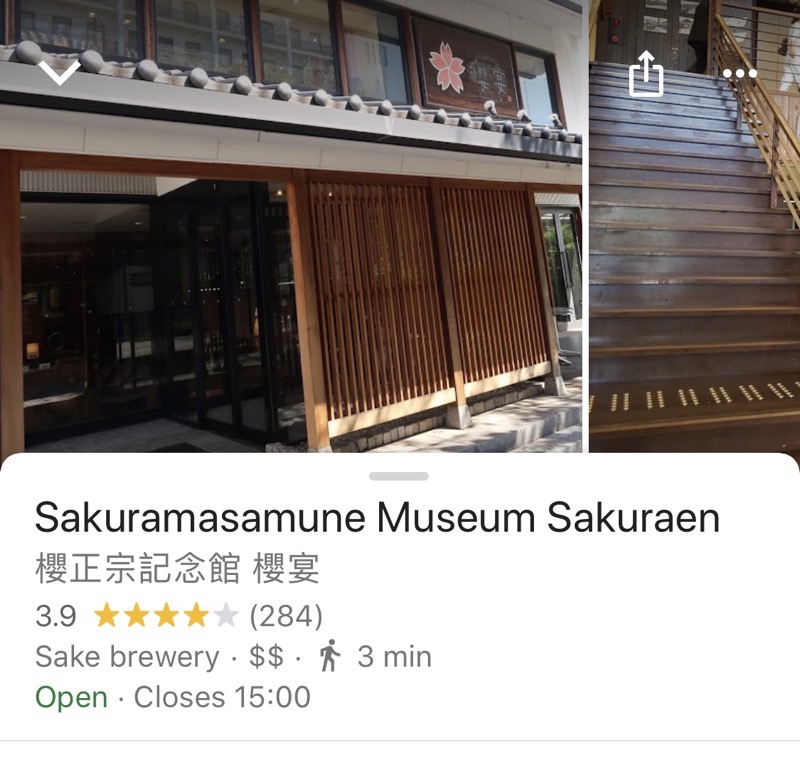
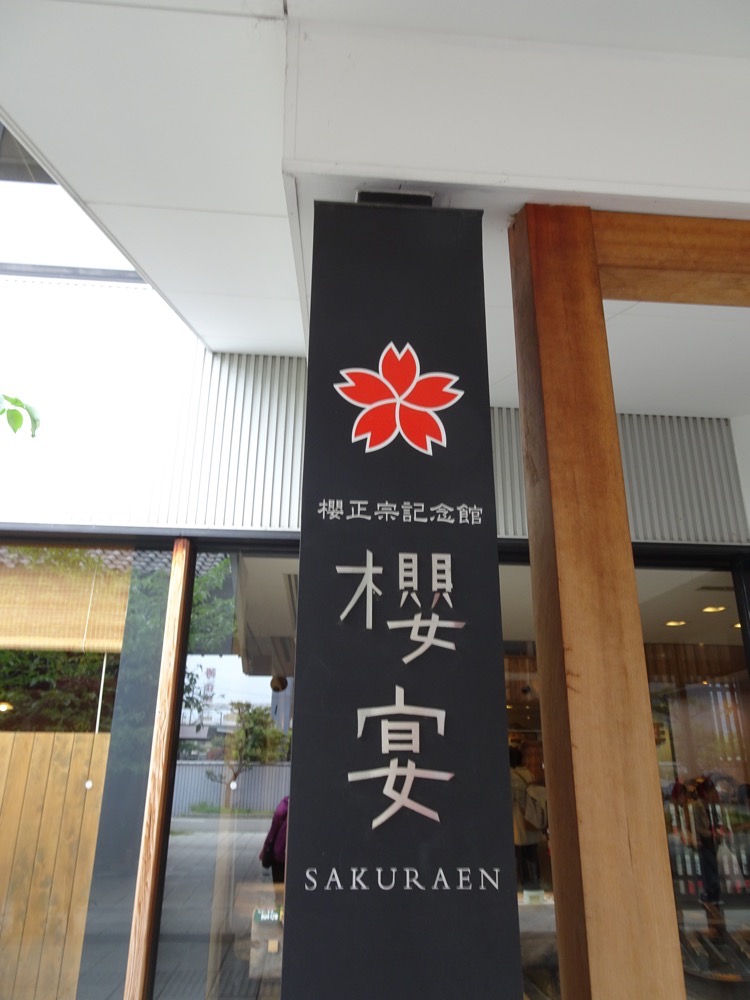
 The facility here for visitors is an interesting blend of old and modern – photographs and displays of the history of the brewery within a large modern visitor centre, complete with restaurant, tasting rooms and sales floor.
The facility here for visitors is an interesting blend of old and modern – photographs and displays of the history of the brewery within a large modern visitor centre, complete with restaurant, tasting rooms and sales floor.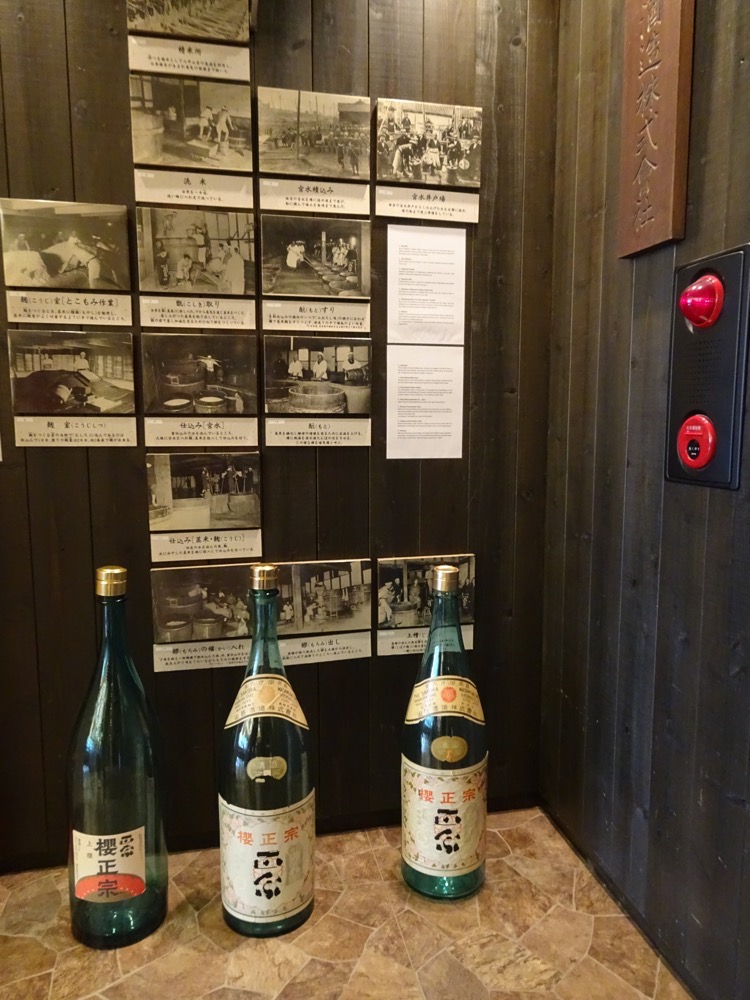
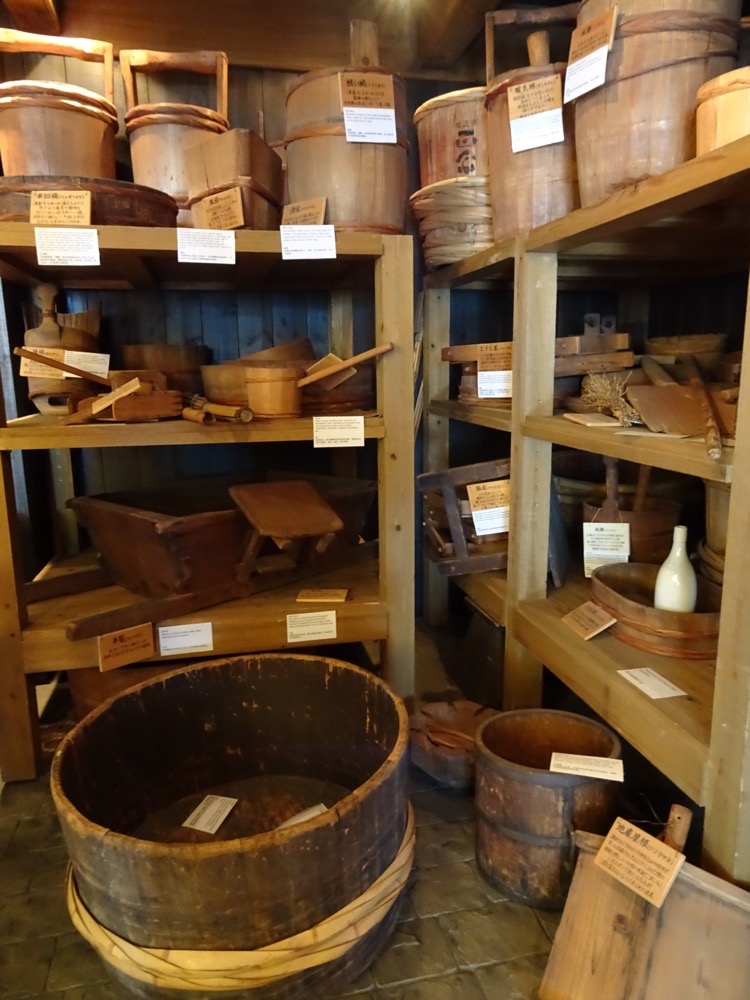

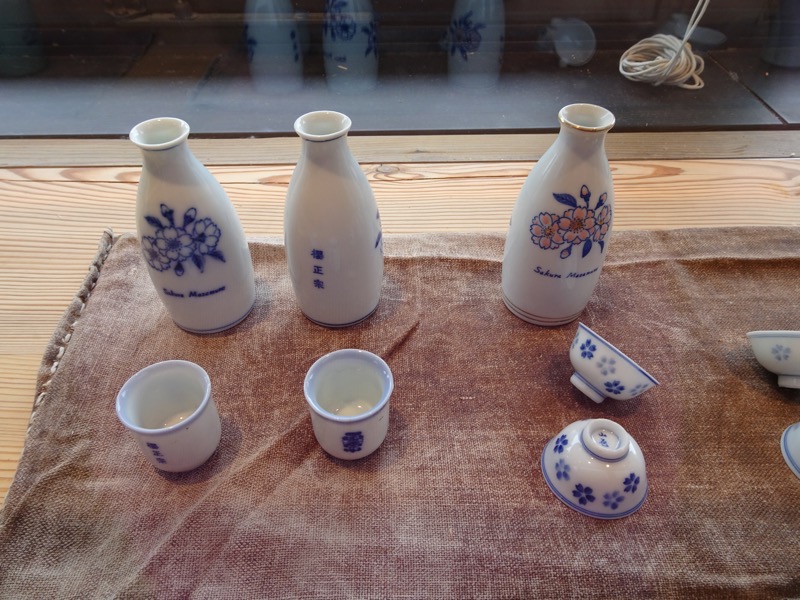
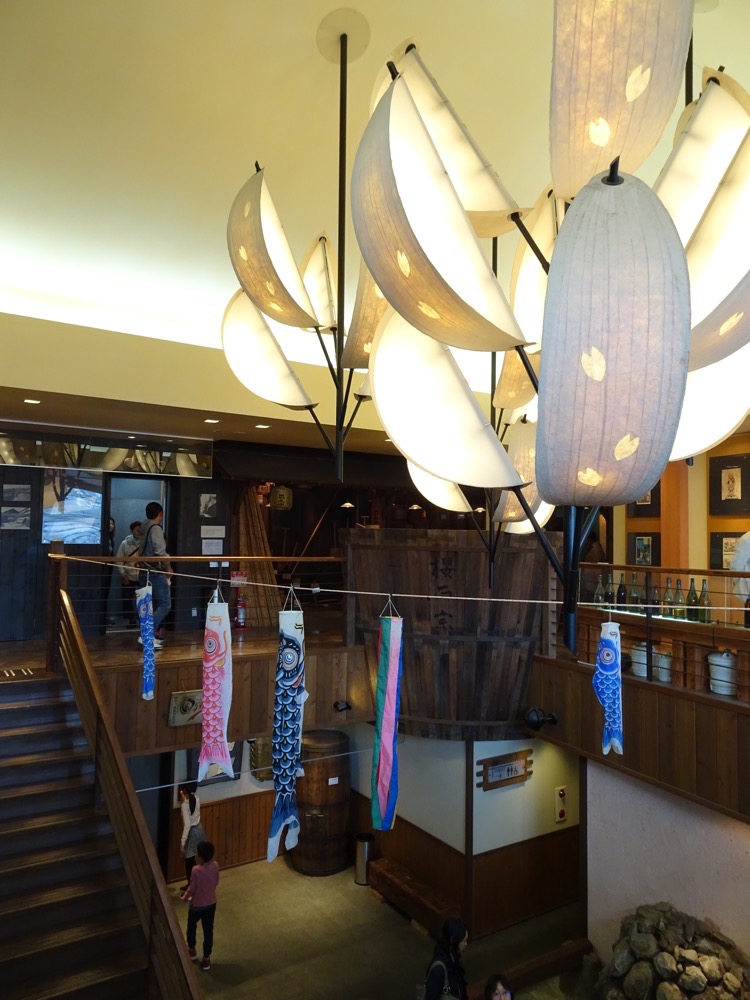
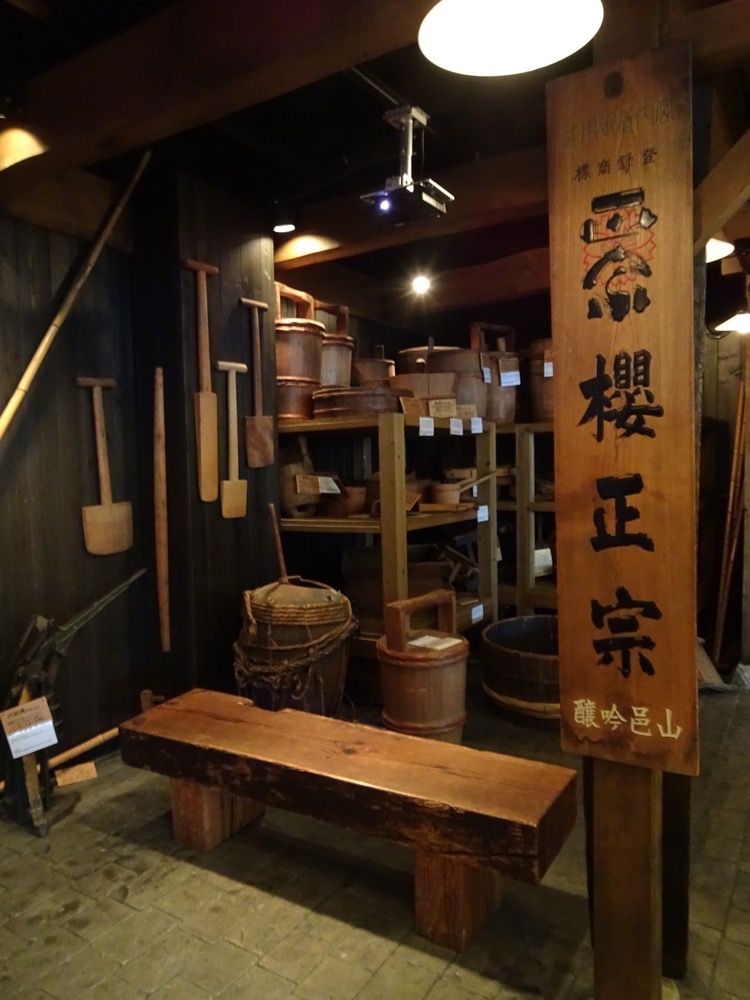
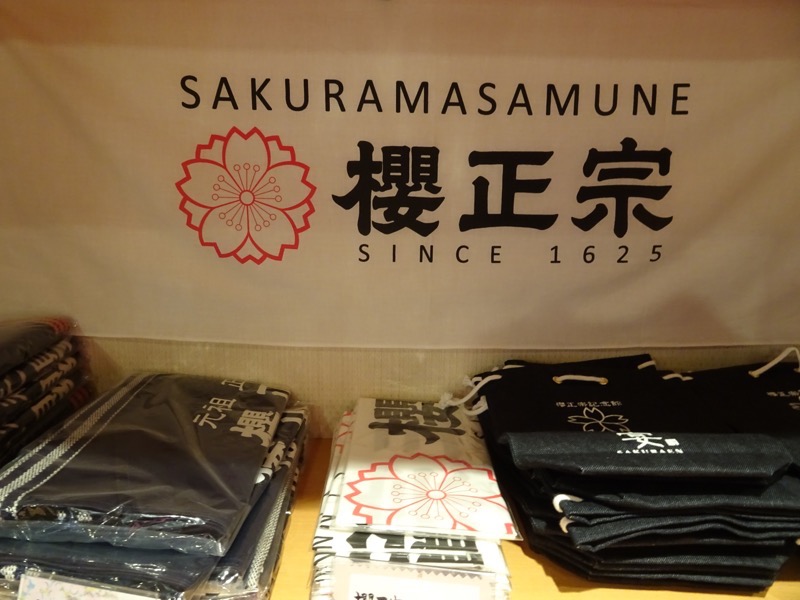 With so much really good saké on offer, we decided we had better restrict ourselves to small bottles that we could consume during the week only. 🙂
With so much really good saké on offer, we decided we had better restrict ourselves to small bottles that we could consume during the week only. 🙂 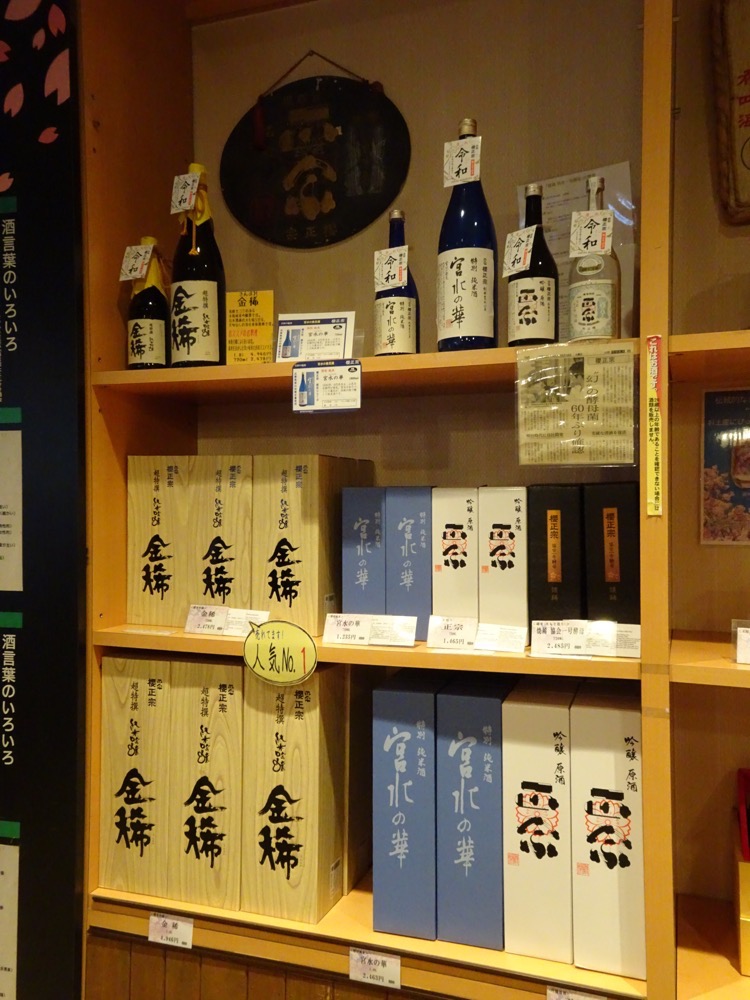
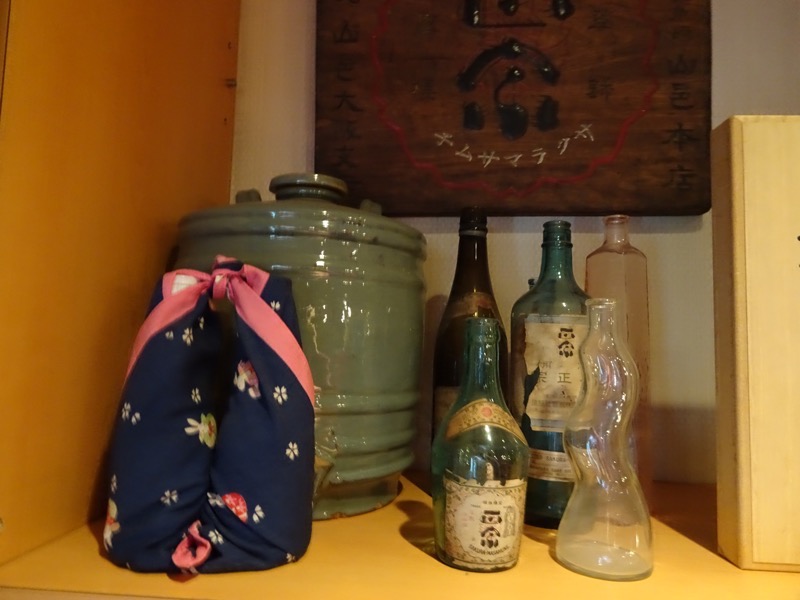
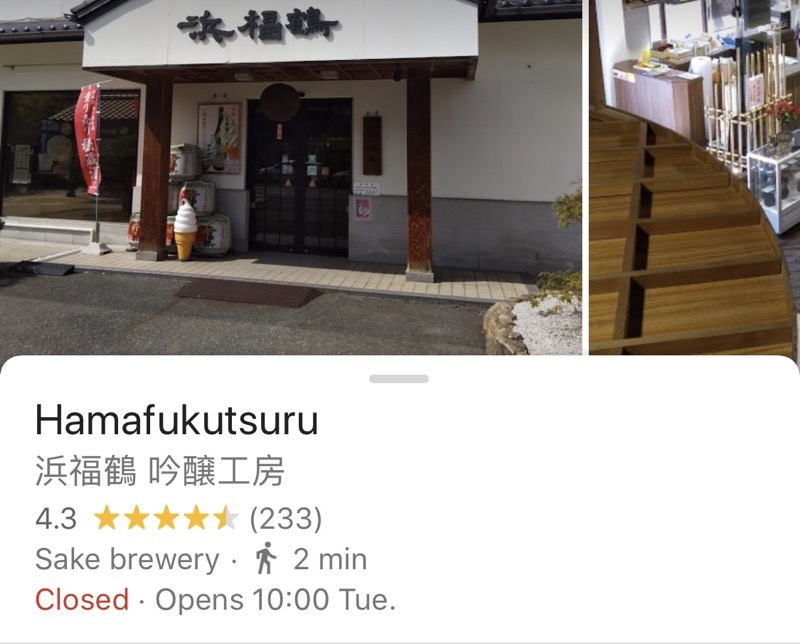
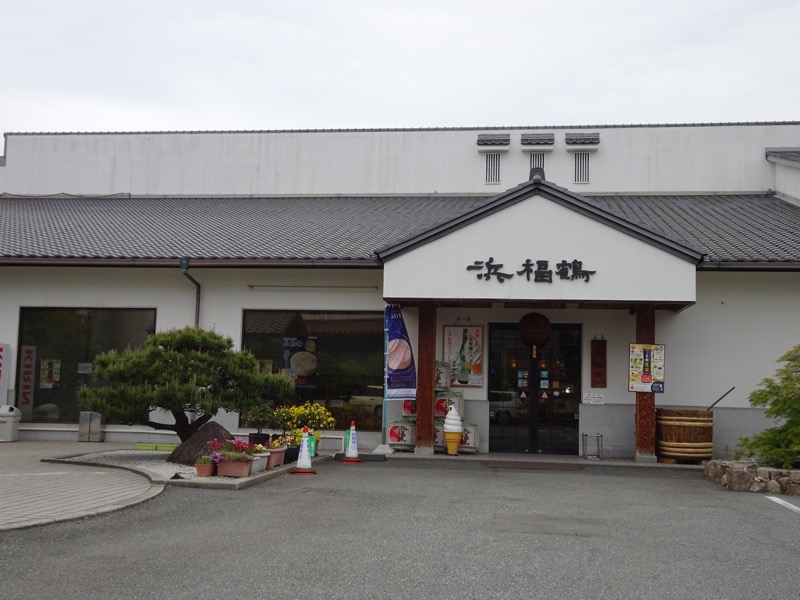
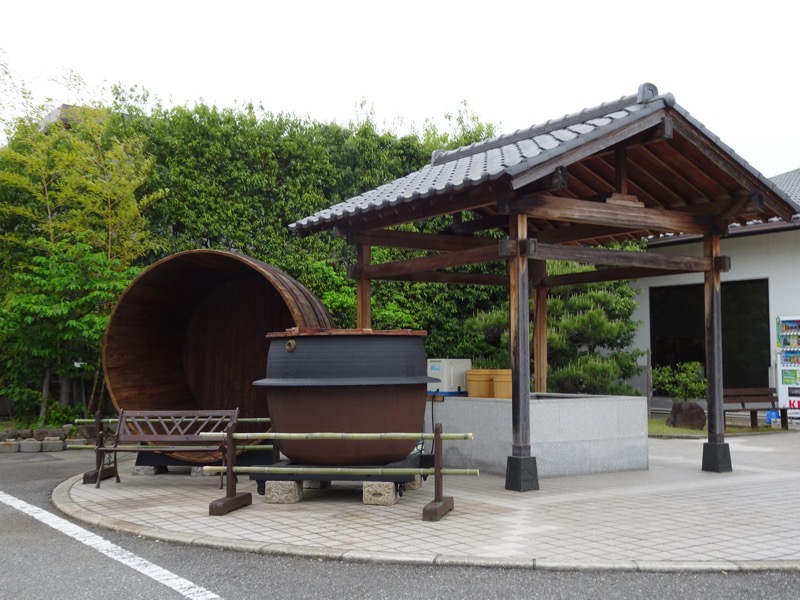
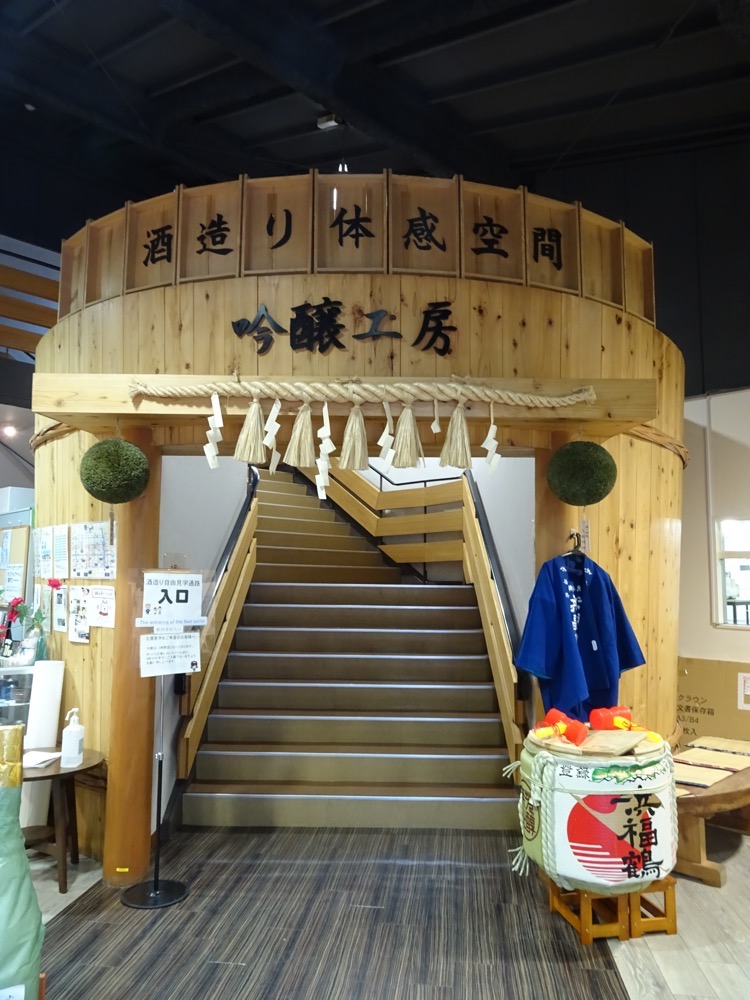
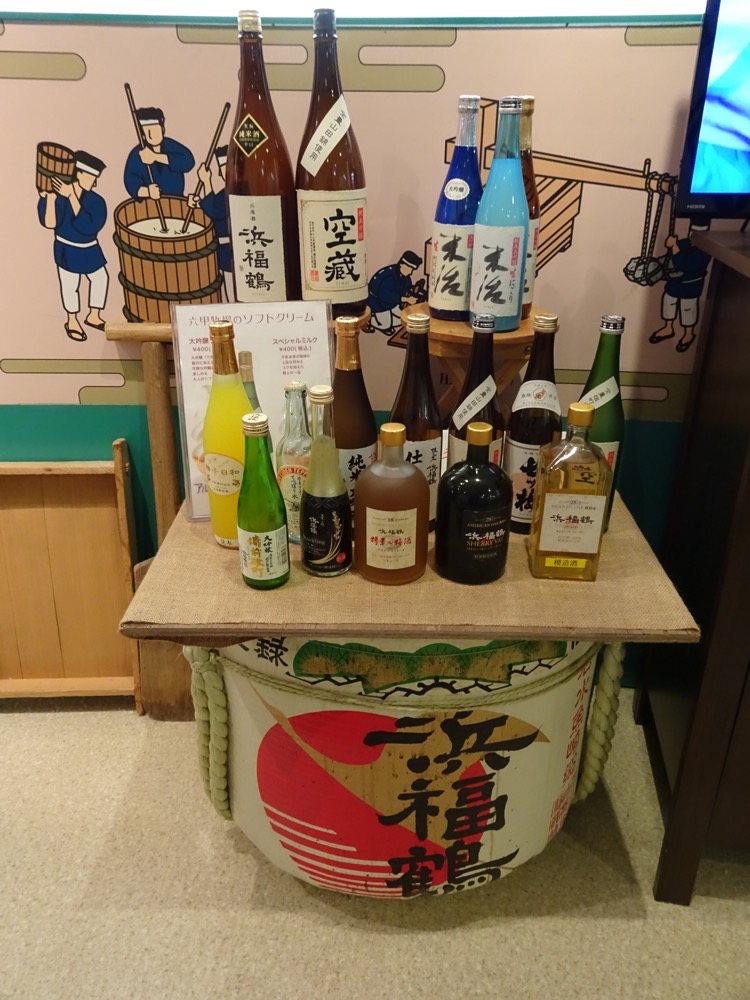
 Rice grains all polished down to about 50%.
Rice grains all polished down to about 50%.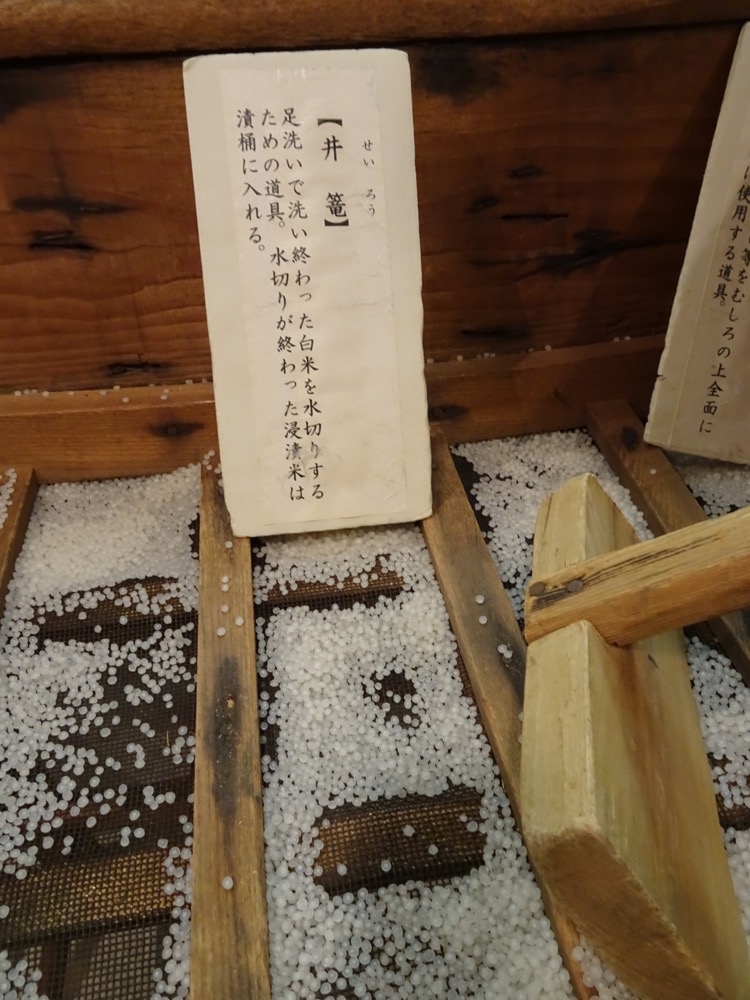
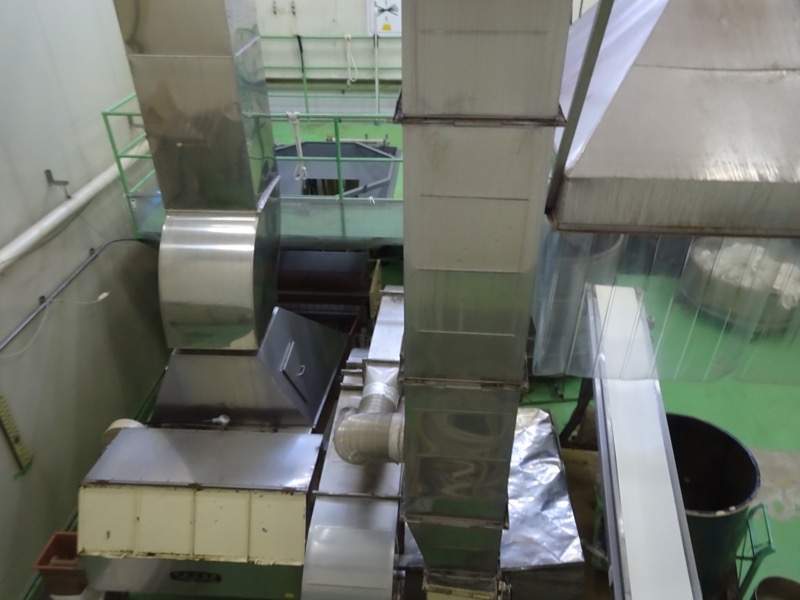

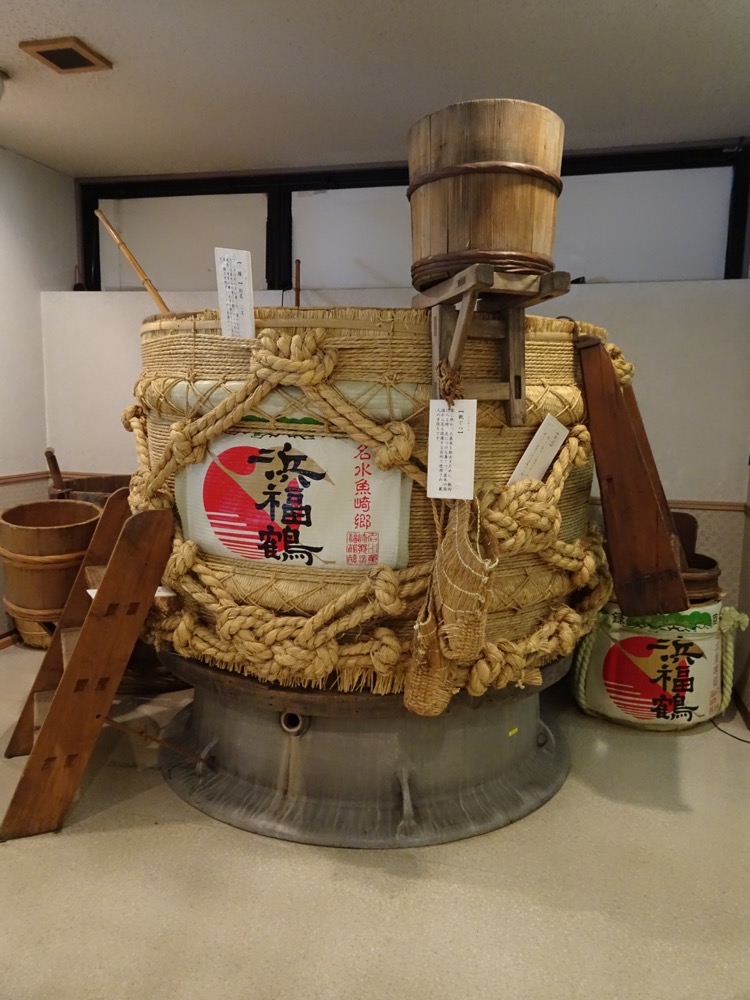
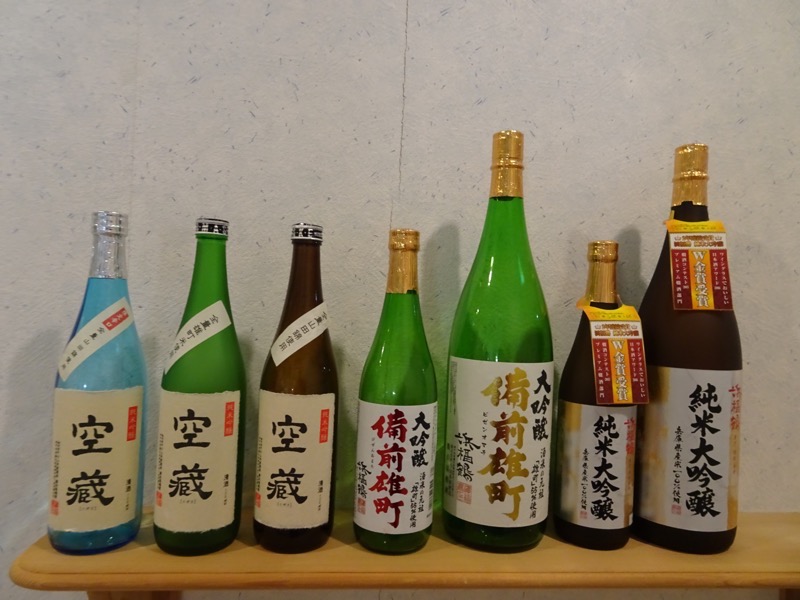
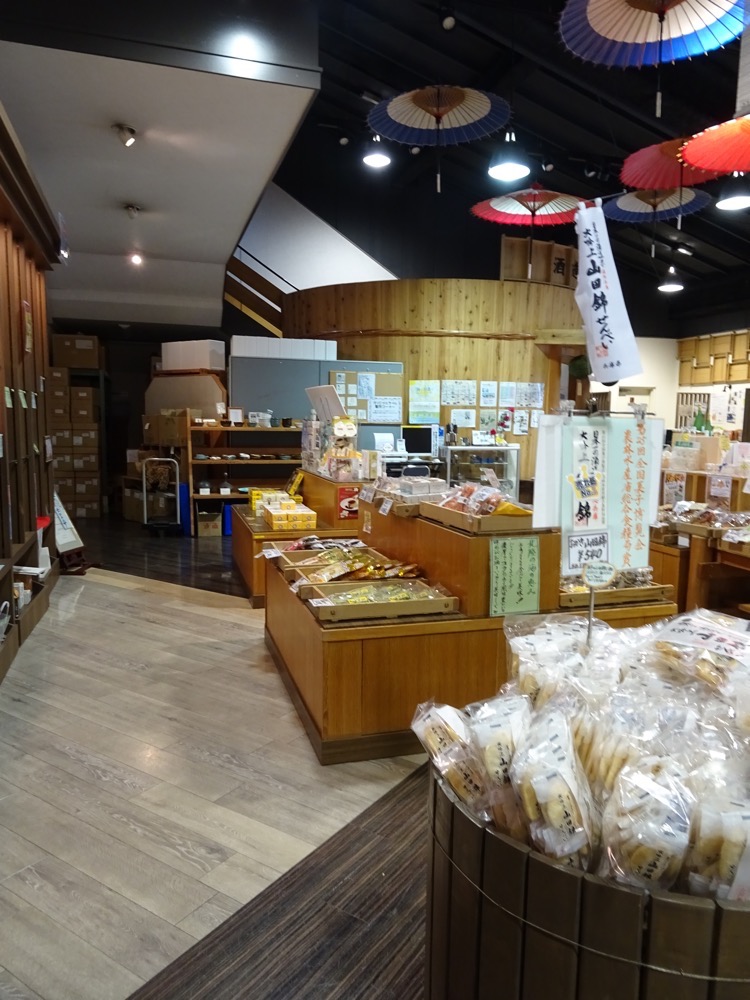
 Fugu saké cups! Yoink!
Fugu saké cups! Yoink!
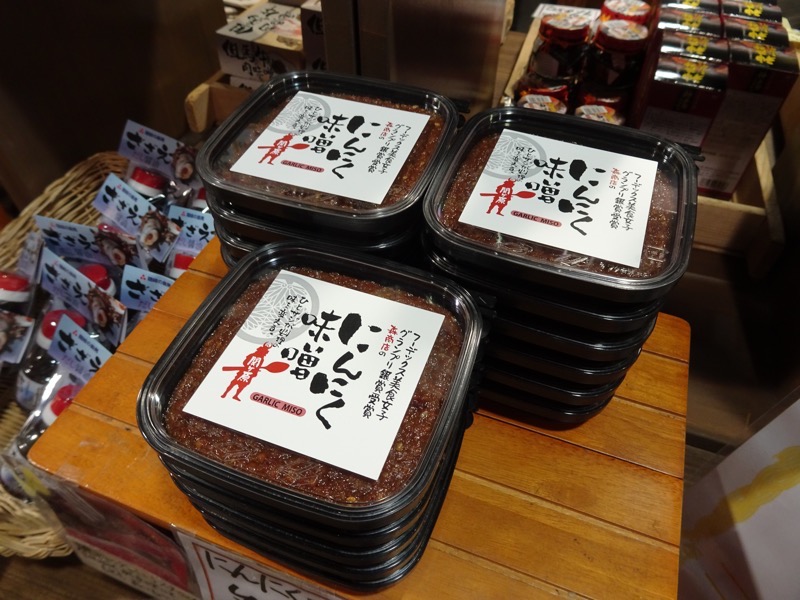 So much good saké, and so many locally made delicacies on display… Why? Oh why, have the Luggage Allowance Gods deserted me on this trip?
So much good saké, and so many locally made delicacies on display… Why? Oh why, have the Luggage Allowance Gods deserted me on this trip?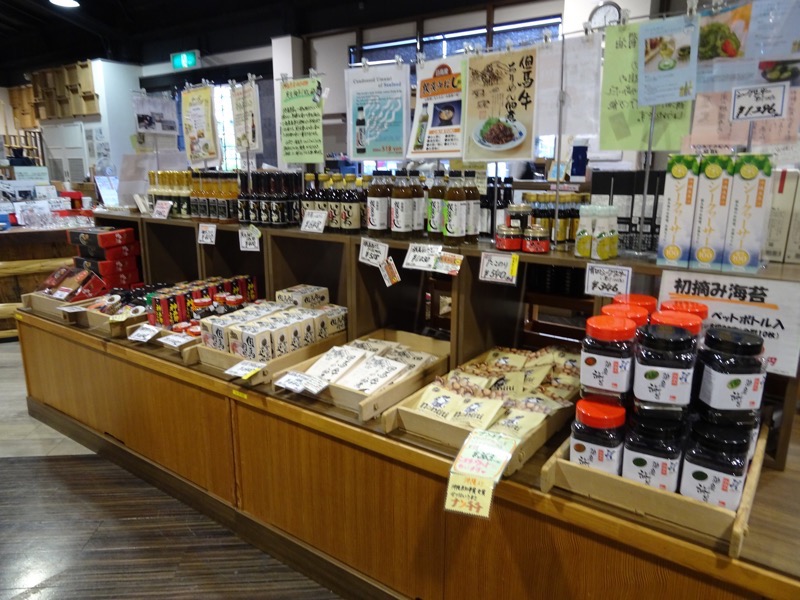
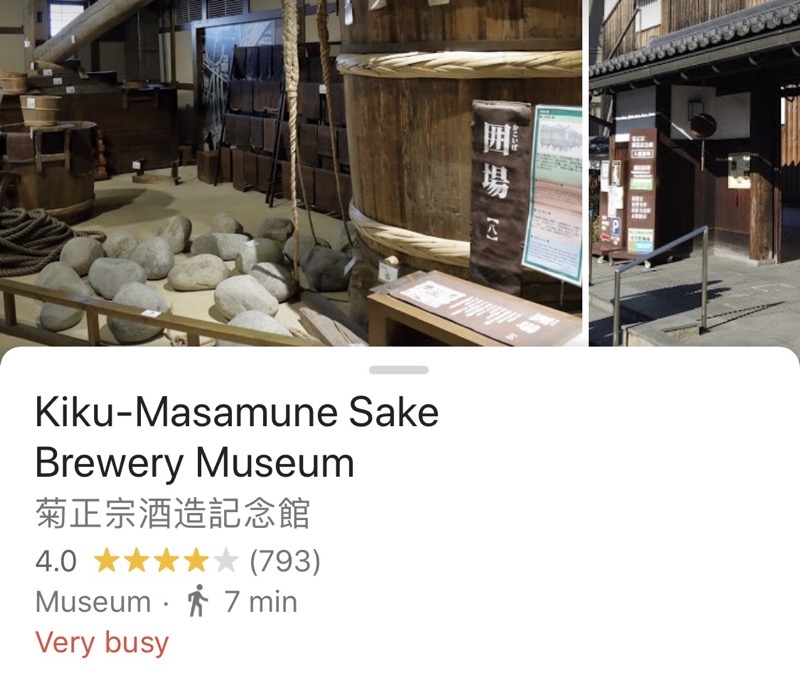
 The museum exhibited items that have been designated as important tangible cultural property by the national government under the name of “Nada-based Sake Brewery’s Equipment,” policy, and as a museum, it demonstrates the history of sake brewing for contemporary audiences. About 50,000 people visit the museum each year.
The museum exhibited items that have been designated as important tangible cultural property by the national government under the name of “Nada-based Sake Brewery’s Equipment,” policy, and as a museum, it demonstrates the history of sake brewing for contemporary audiences. About 50,000 people visit the museum each year.
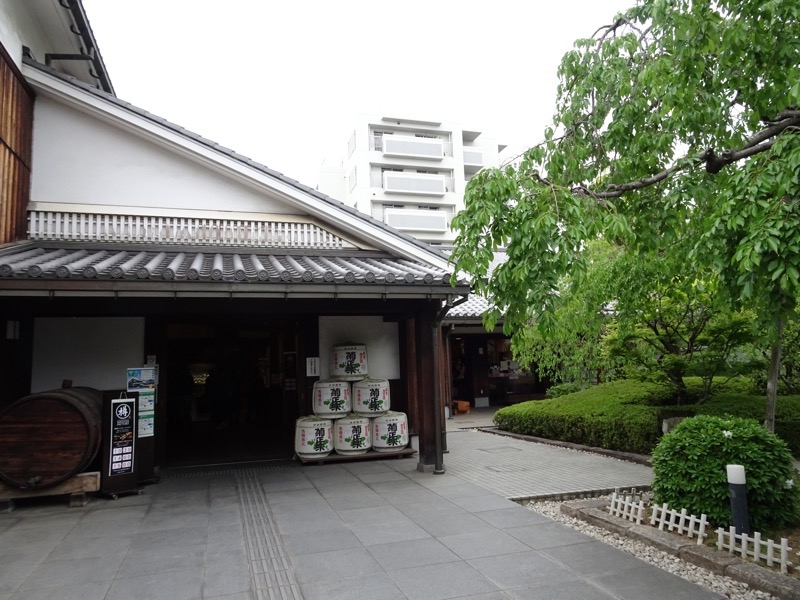
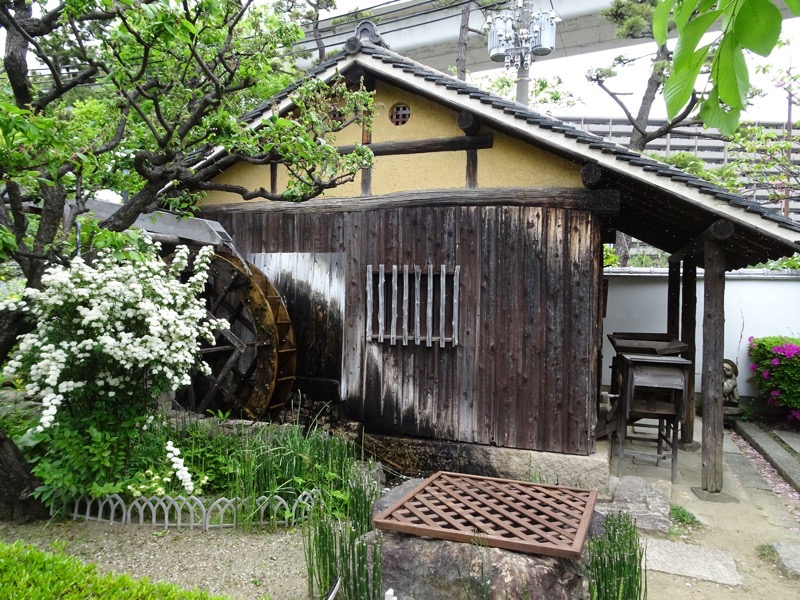
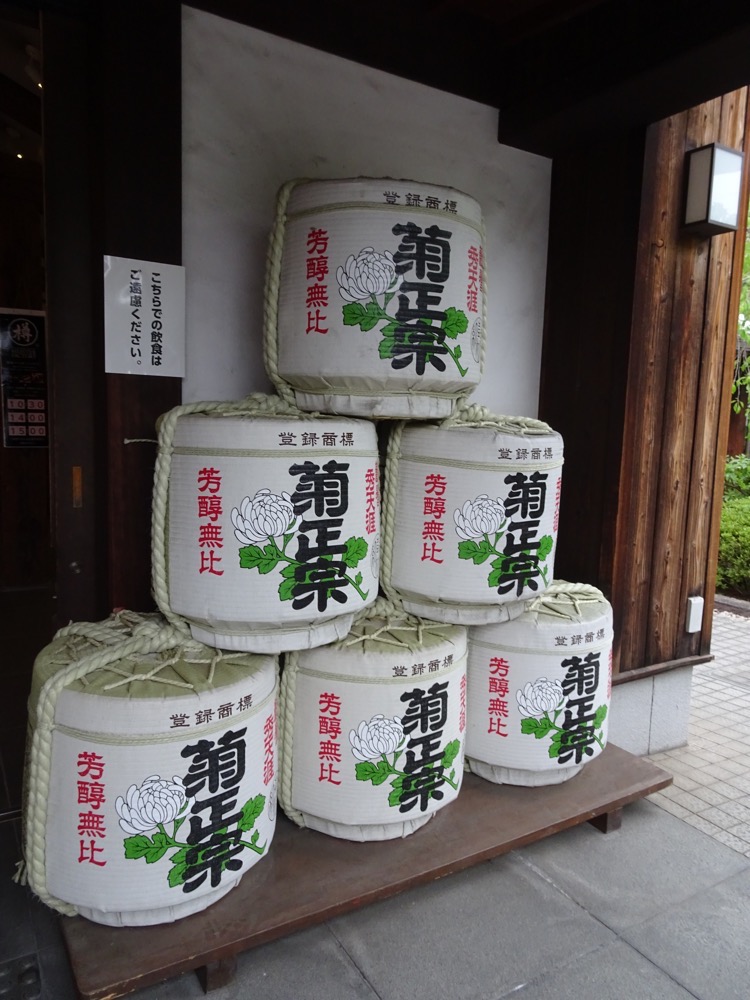
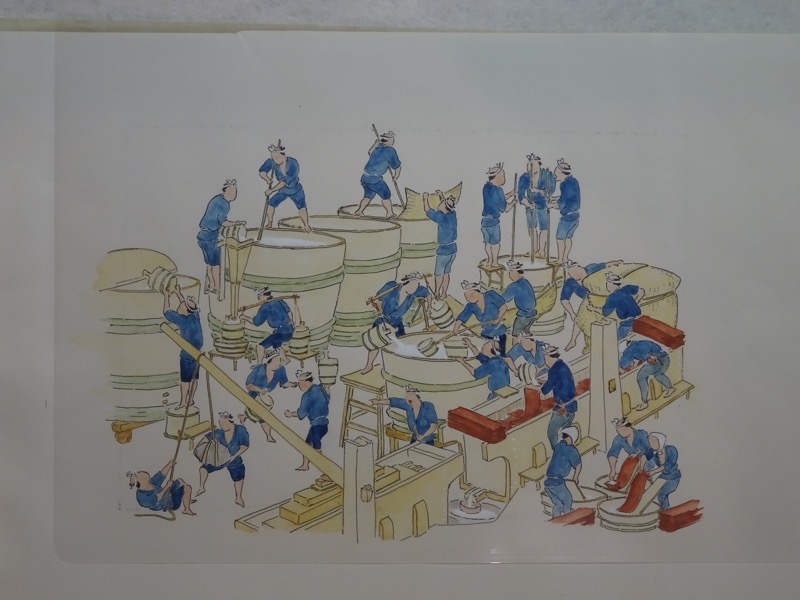
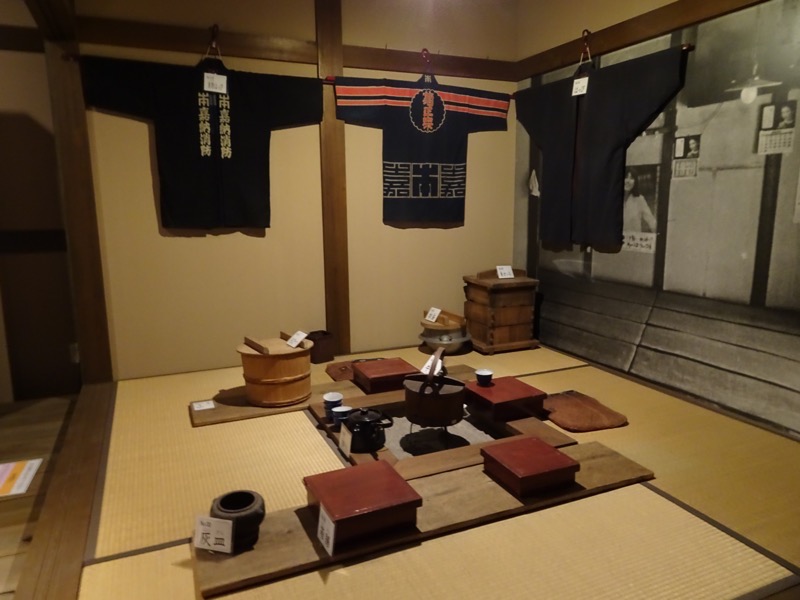 In January 1995, this brewery museum was also destroyed by the Great Hanshin Earthquake, but thankfully almost every single piece of sake brewery equipment and all the small tools were retrieved carefully by hand and found to be mostly undamaged or restorable-so the objects in the museum are all extant items in their original condition.
In January 1995, this brewery museum was also destroyed by the Great Hanshin Earthquake, but thankfully almost every single piece of sake brewery equipment and all the small tools were retrieved carefully by hand and found to be mostly undamaged or restorable-so the objects in the museum are all extant items in their original condition.

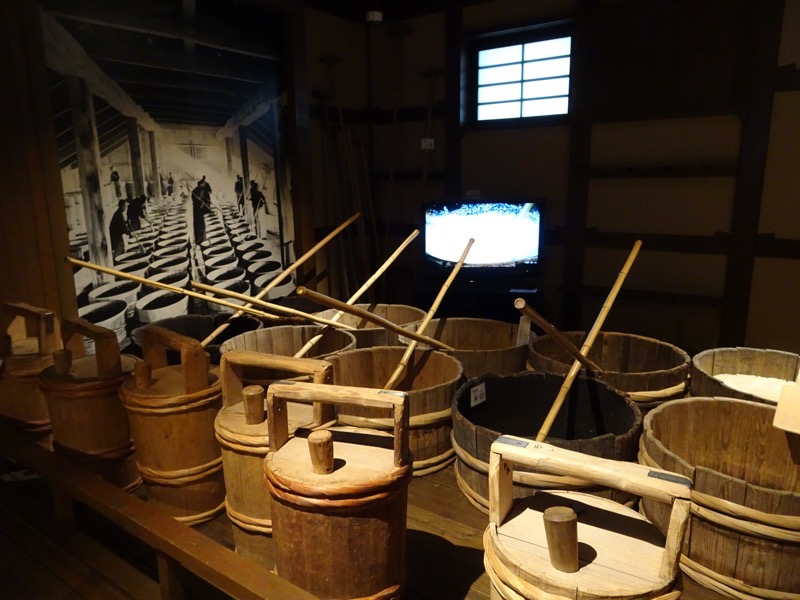
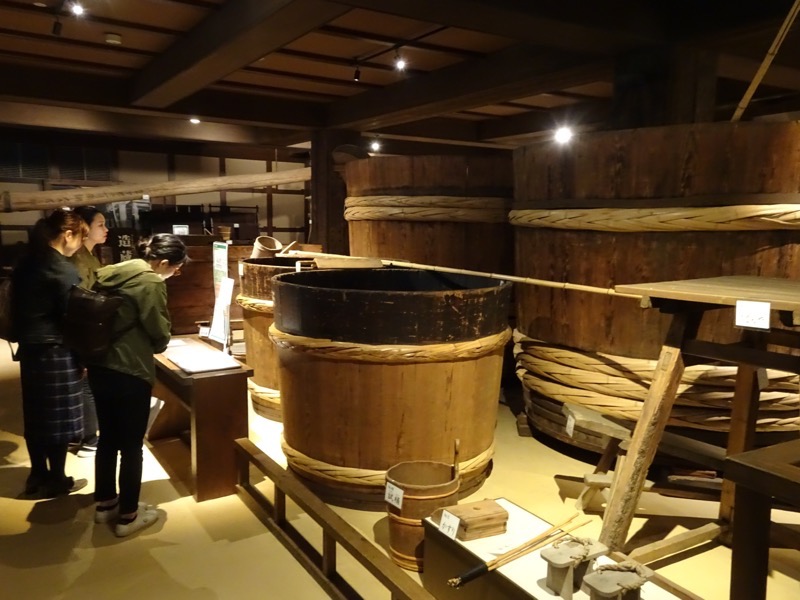

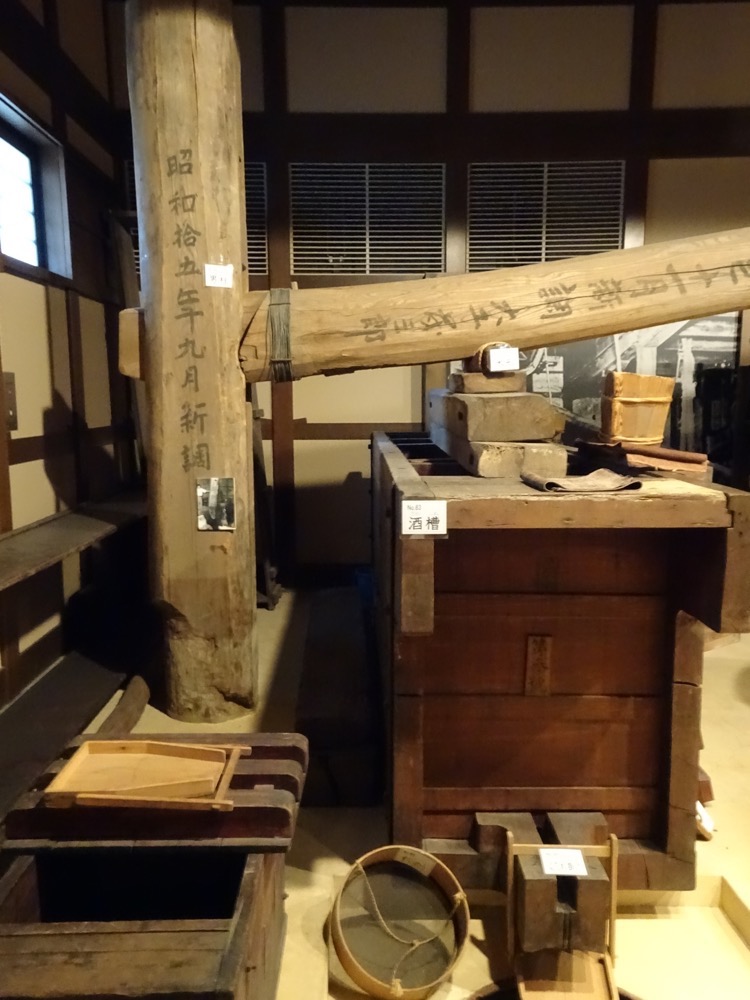
 There are ‘Culturally Important Objects’ housed upstairs – but gorgeous as these little sake cups are, I couldn’t read any of the descriptions accompanying them, nor could I understand the little video that was nearby. So I feel like I missed something here…
There are ‘Culturally Important Objects’ housed upstairs – but gorgeous as these little sake cups are, I couldn’t read any of the descriptions accompanying them, nor could I understand the little video that was nearby. So I feel like I missed something here… 
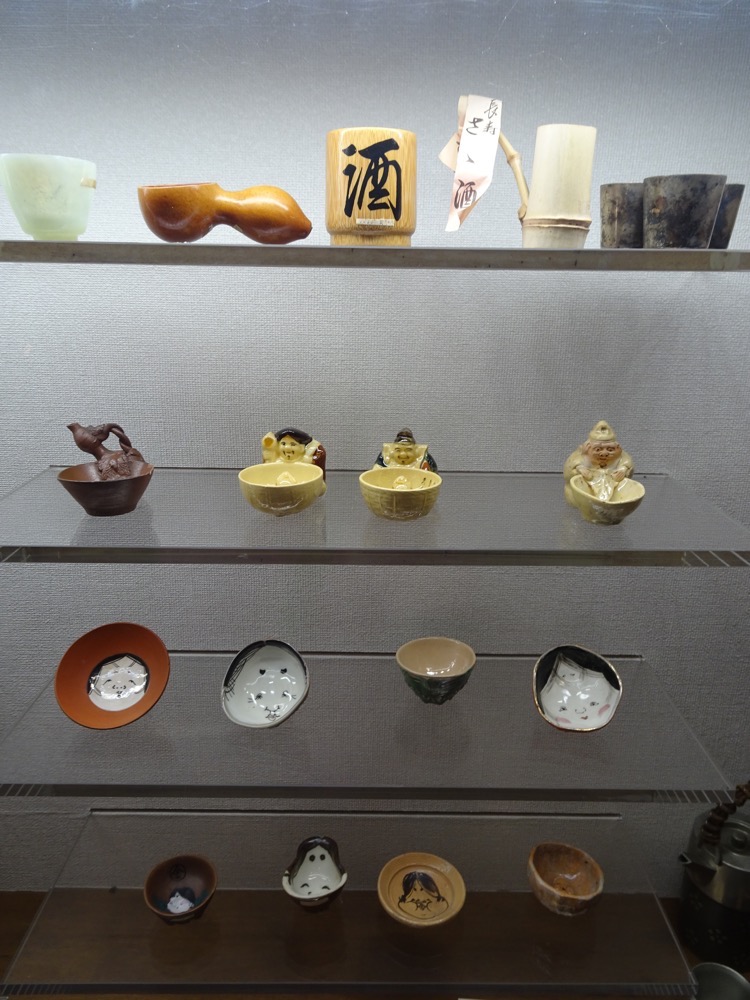 Downstairs, the tastings continued, as did the shopping!
Downstairs, the tastings continued, as did the shopping!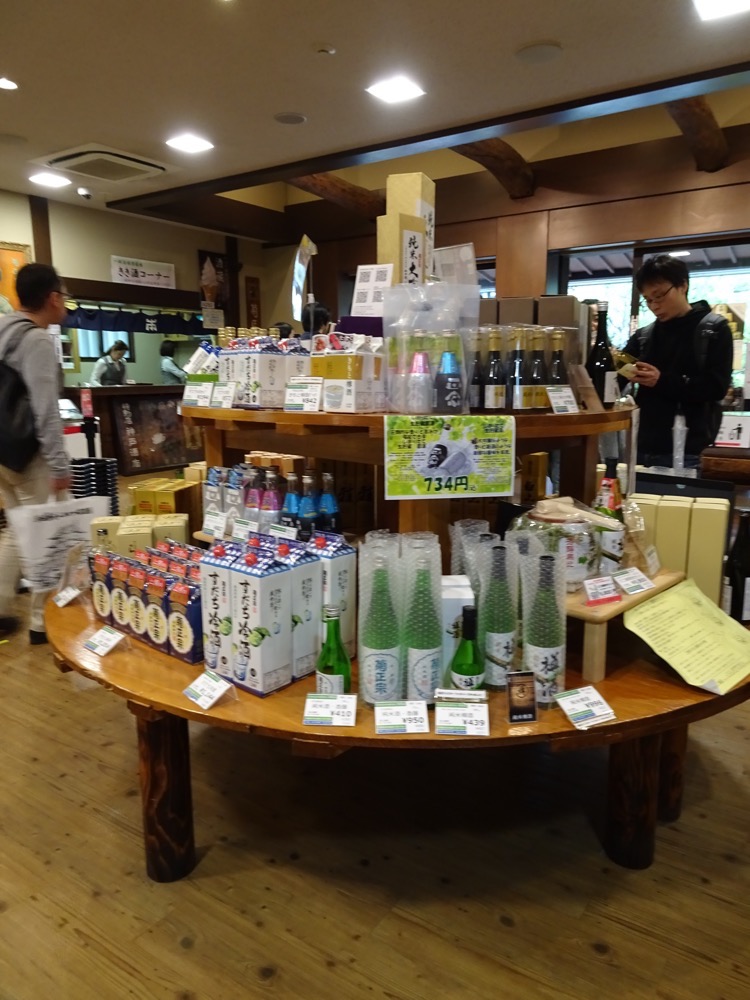 This is one of my favourite sakes to drink back home, it’s light and crisp, and a little on the dry side. I found a supplier (Fuji-Mart in Buranda), and we keep a bottle in the fridge. I’d like to say ‘for special occasions’, but that only works if Tuesday night sushi counts as a special occasion.
This is one of my favourite sakes to drink back home, it’s light and crisp, and a little on the dry side. I found a supplier (Fuji-Mart in Buranda), and we keep a bottle in the fridge. I’d like to say ‘for special occasions’, but that only works if Tuesday night sushi counts as a special occasion.  I don’t even mind that it’s half the price here that it is at home – I’m just glad we can get it.
I don’t even mind that it’s half the price here that it is at home – I’m just glad we can get it. 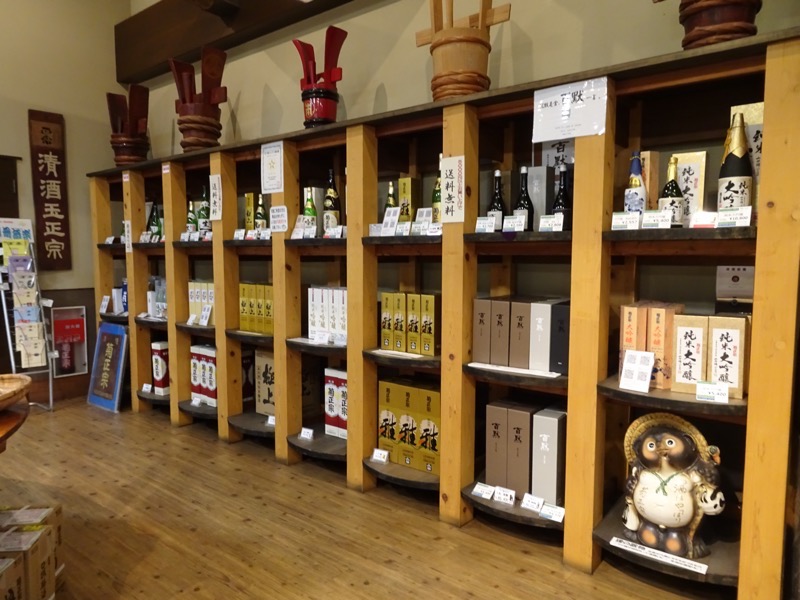
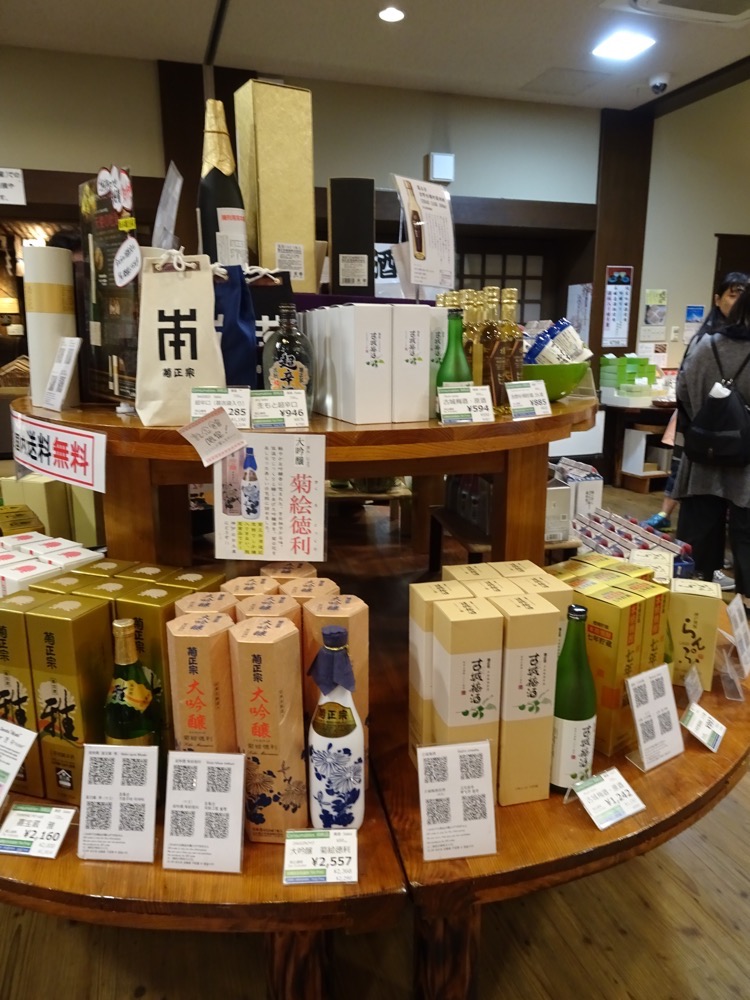 Not sure if this is a fat happy otter or what?
Not sure if this is a fat happy otter or what?
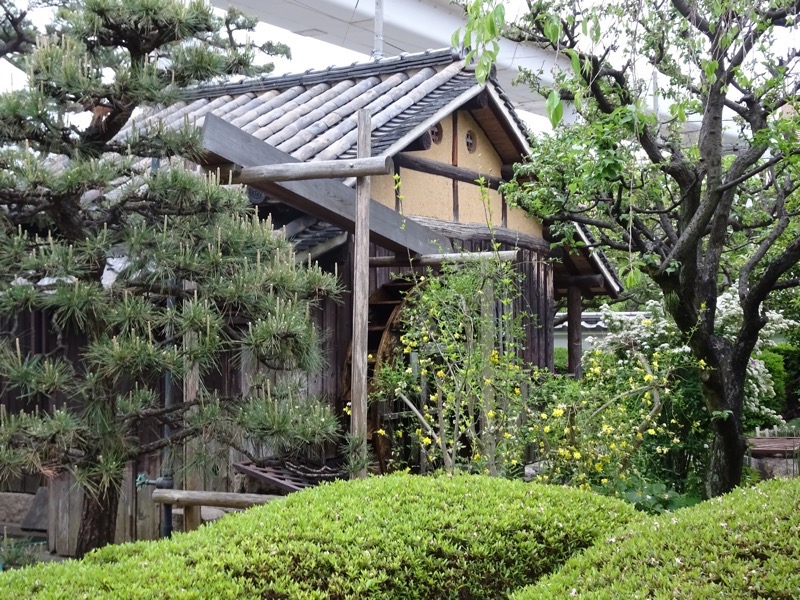
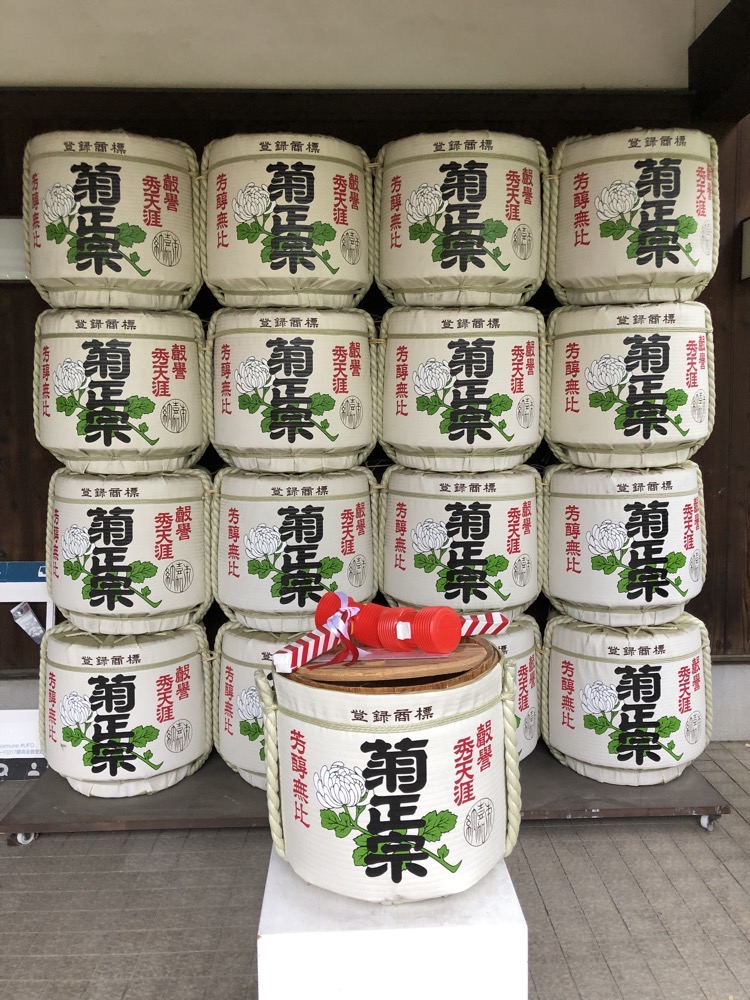 The next brewery was about 600m away and we were perambulating somewhat slower now! 😛 The Hakutsuru Saké Brewery Museum is *the* saké museum that visitors will come to if they are only seeing one or are on an organised tour. It is the largest of the brewery museums and has an extensive and well laid out tour.
The next brewery was about 600m away and we were perambulating somewhat slower now! 😛 The Hakutsuru Saké Brewery Museum is *the* saké museum that visitors will come to if they are only seeing one or are on an organised tour. It is the largest of the brewery museums and has an extensive and well laid out tour.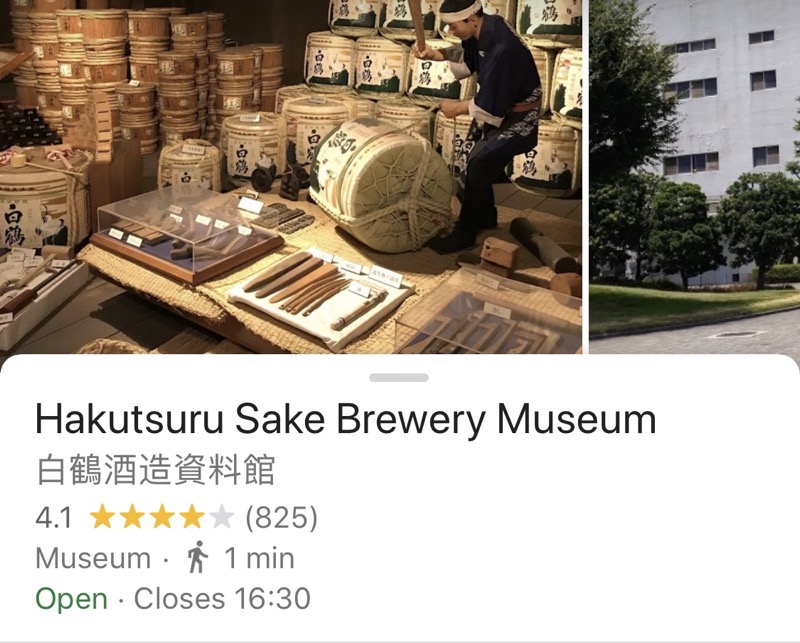 Founded in1743, the Hakutsuru Saké Brewing Co takes their obligation to continue to contribute to the culture and diets of the Japanese people very seriously. Their toji master brewers continue to carry forward traditional brewing processes while continuing to experiment to meet the needs of a diverse population’s desire for novelty.
Founded in1743, the Hakutsuru Saké Brewing Co takes their obligation to continue to contribute to the culture and diets of the Japanese people very seriously. Their toji master brewers continue to carry forward traditional brewing processes while continuing to experiment to meet the needs of a diverse population’s desire for novelty. 
 The museum has a very well laid out tour showing traditional brewing processes.
The museum has a very well laid out tour showing traditional brewing processes.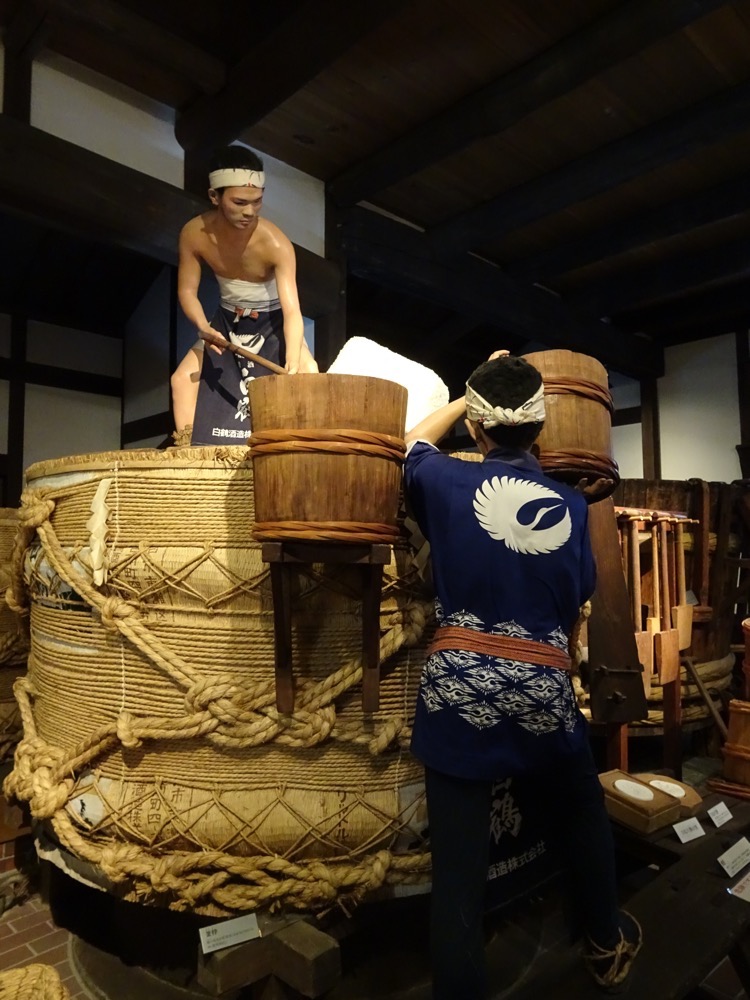
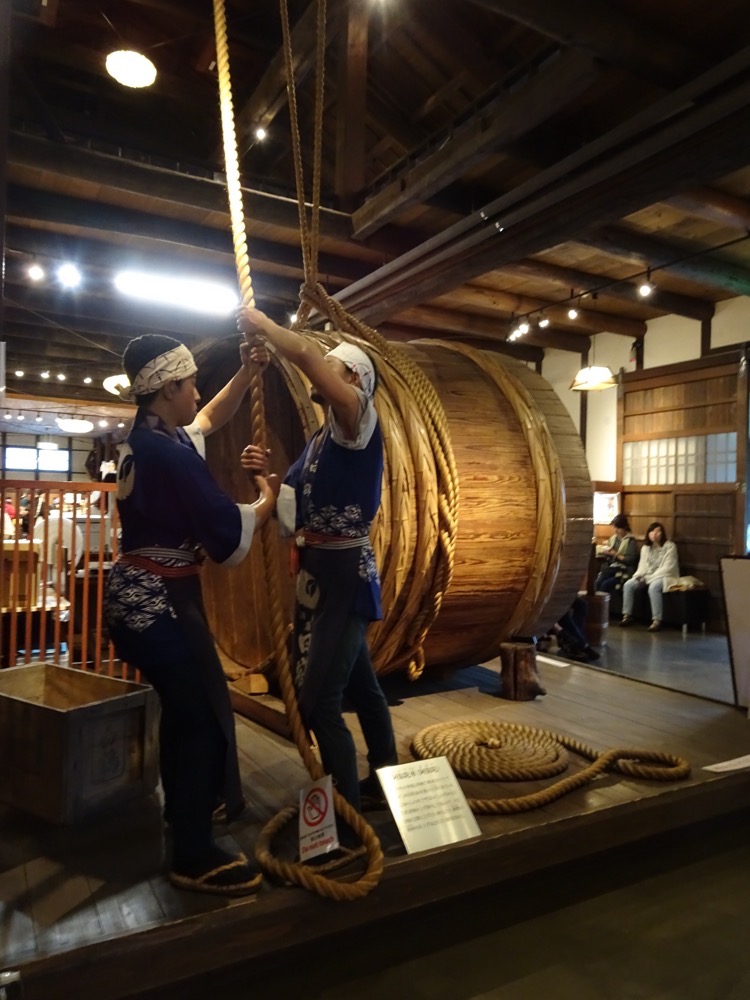
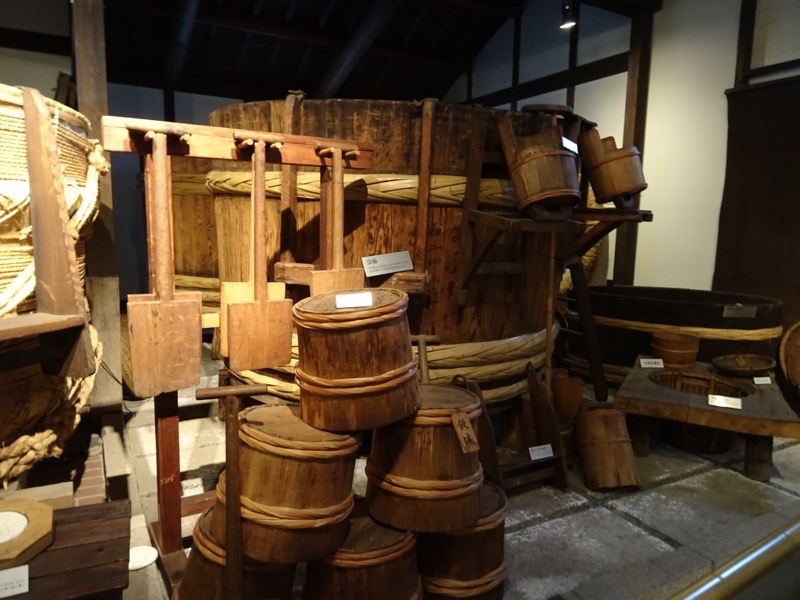
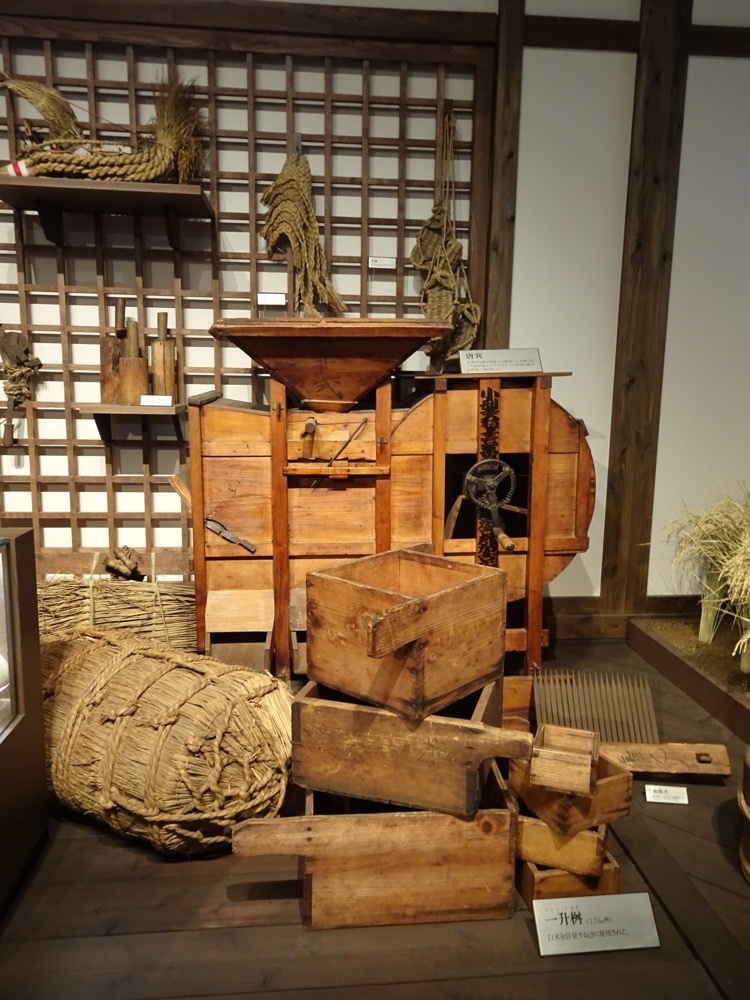
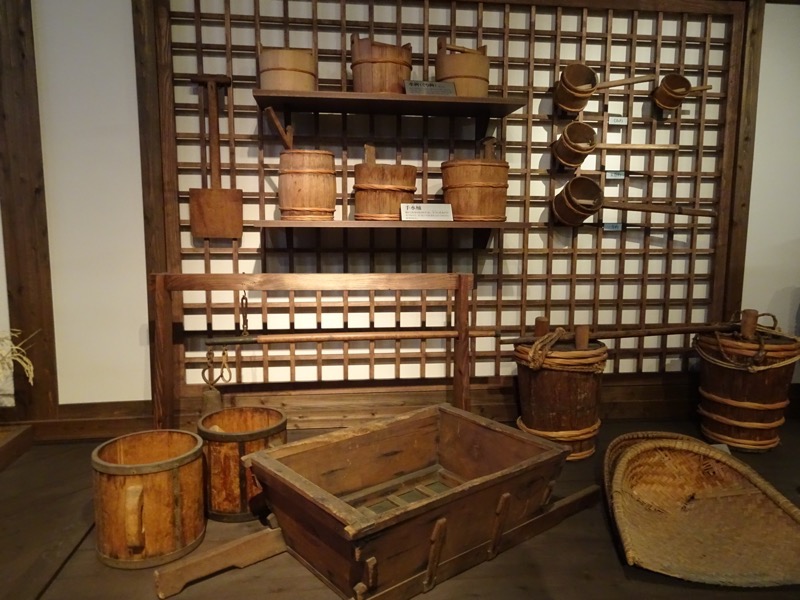

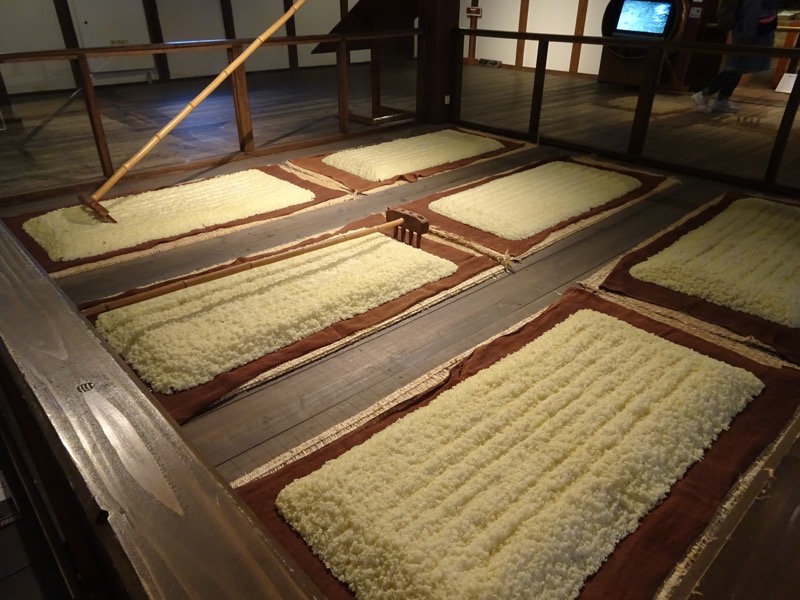

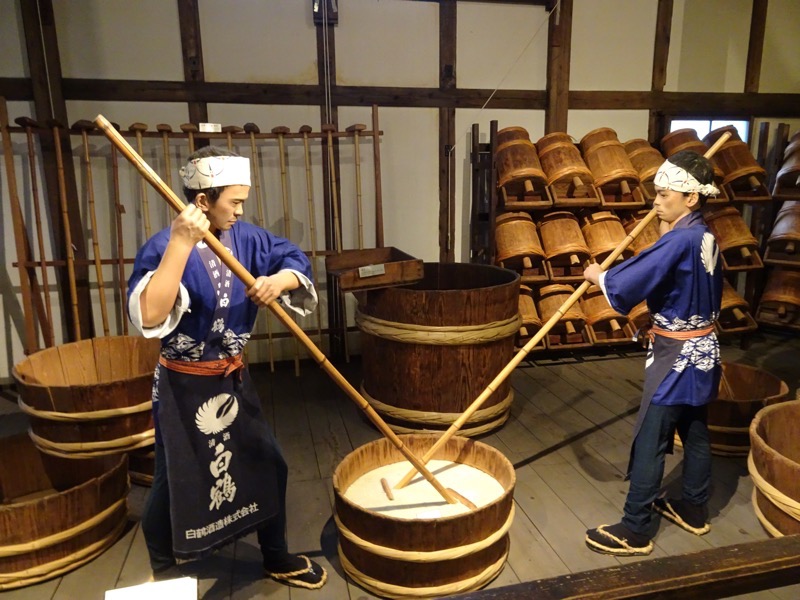

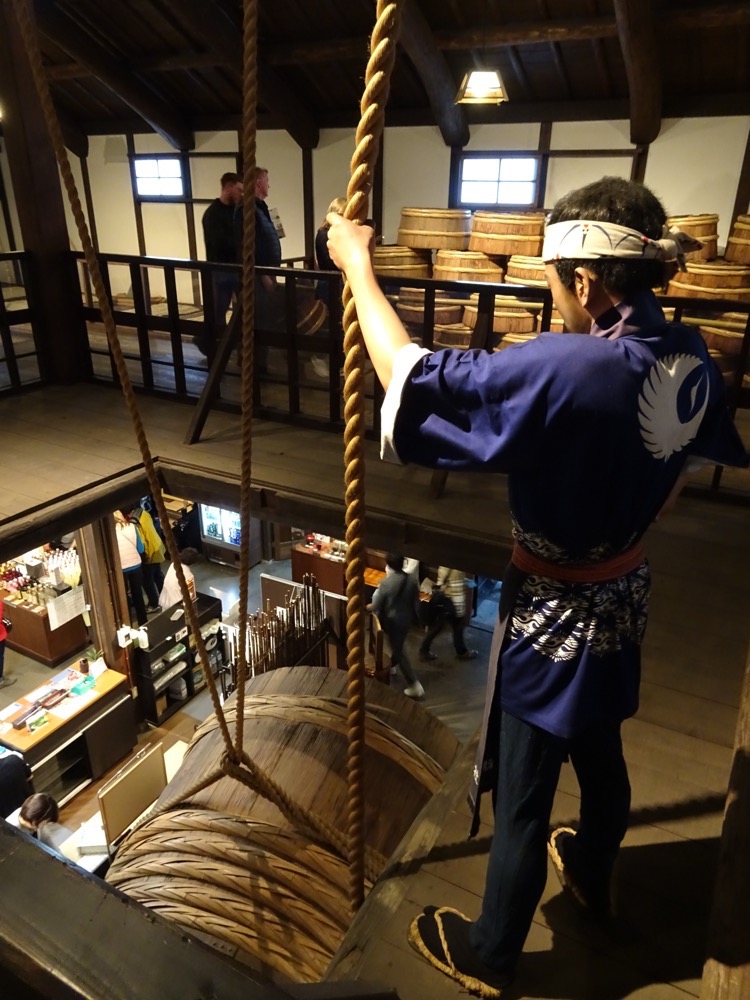
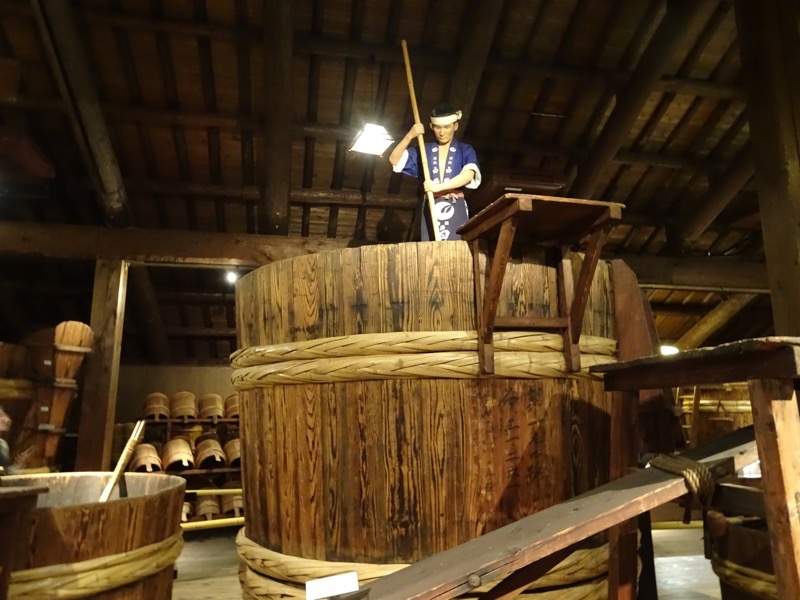
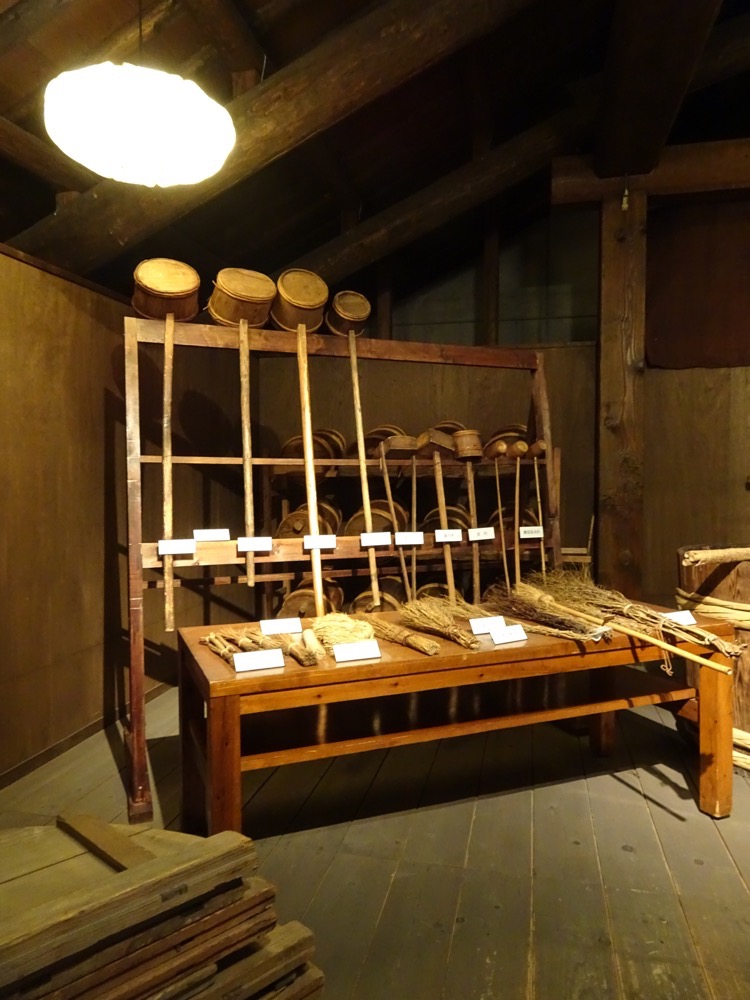
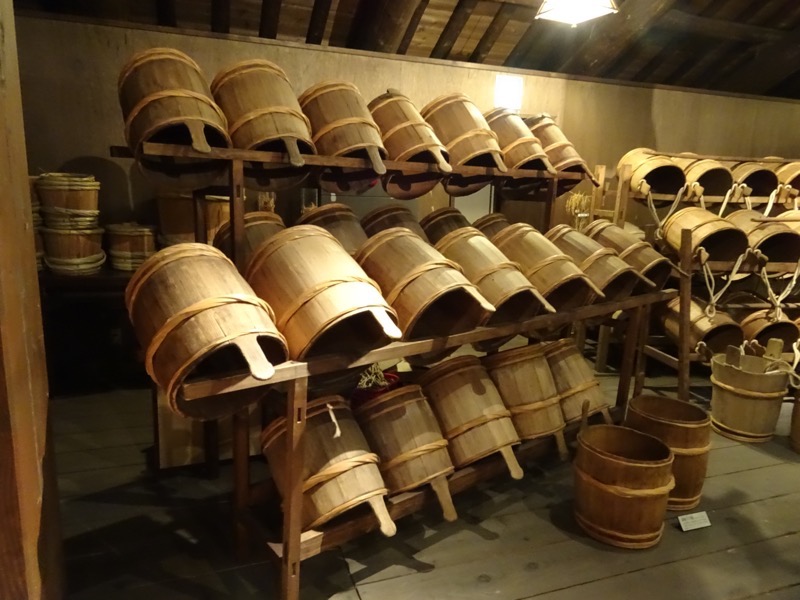
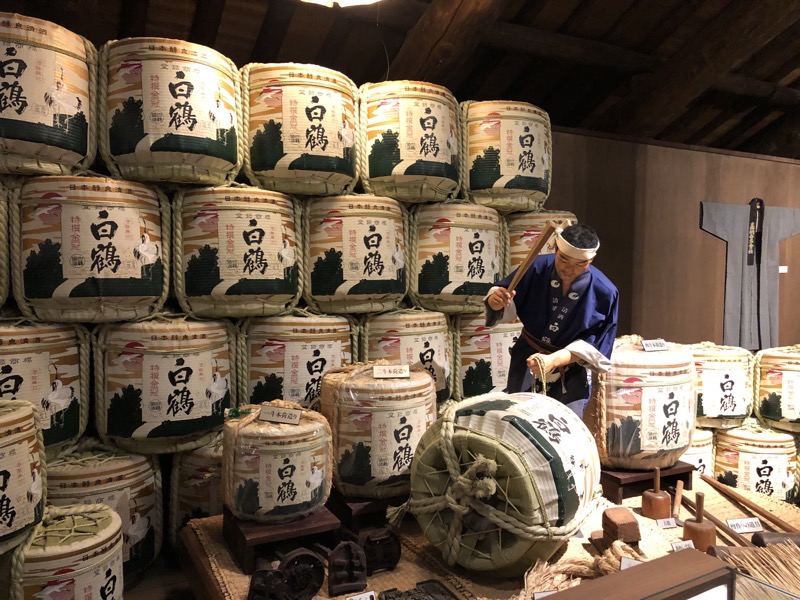 This place is seriously cool – and had many displays that could be seen/heard in English as well. It is obviously set up for the international visitors that tend to come in tour groups…complete with bus parking outside.
This place is seriously cool – and had many displays that could be seen/heard in English as well. It is obviously set up for the international visitors that tend to come in tour groups…complete with bus parking outside.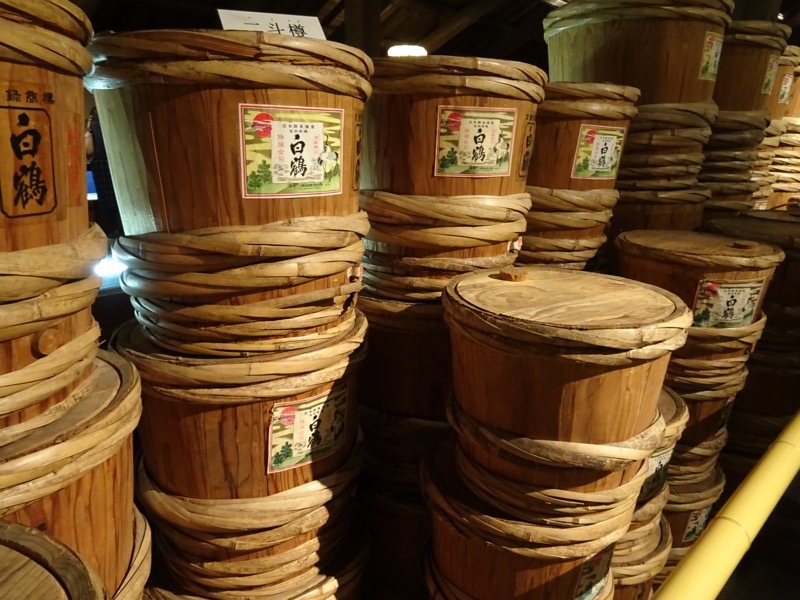

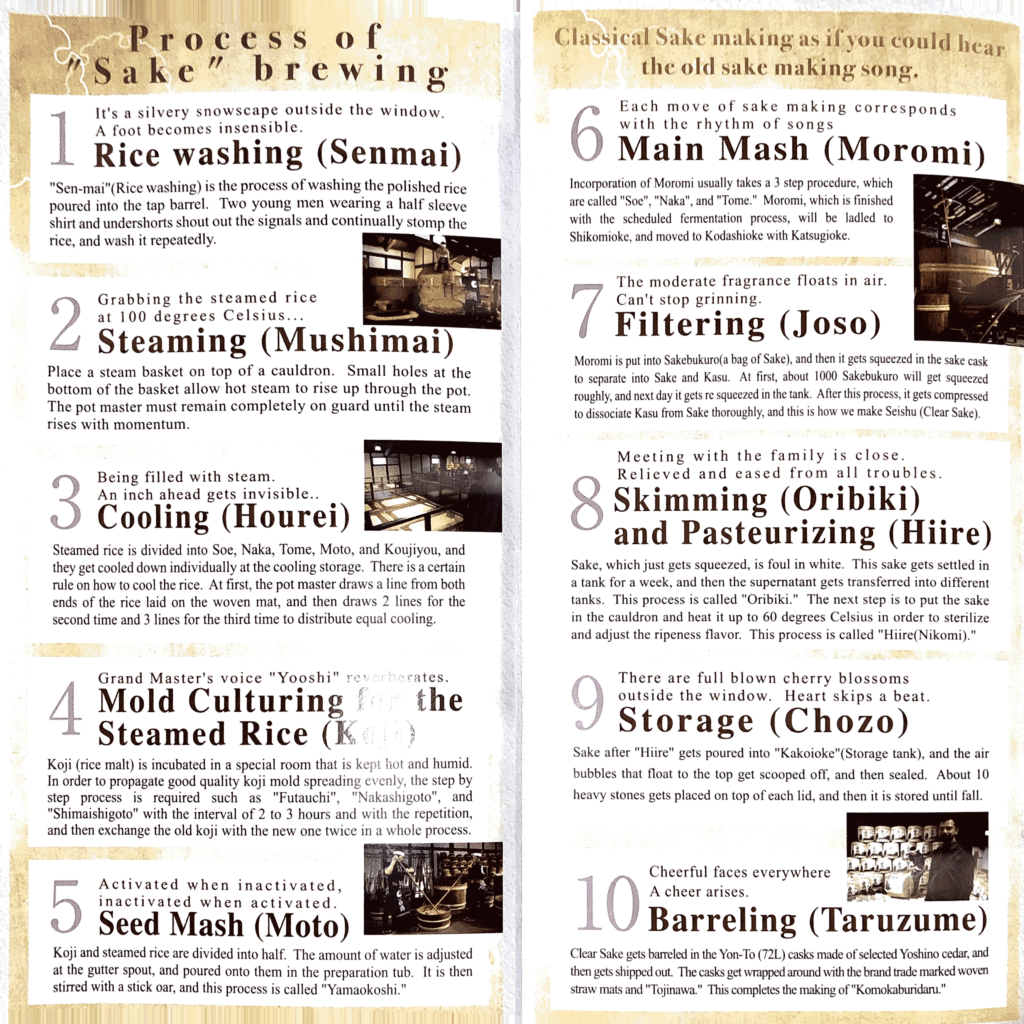
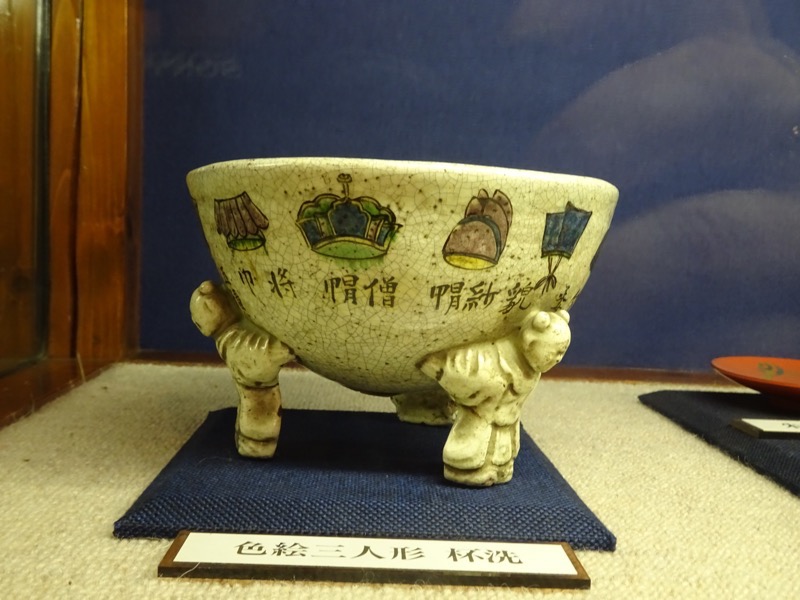

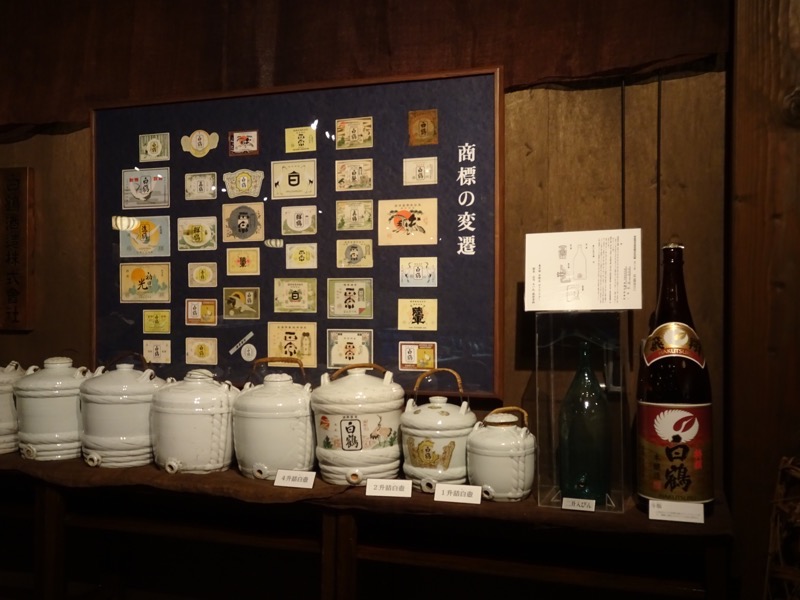
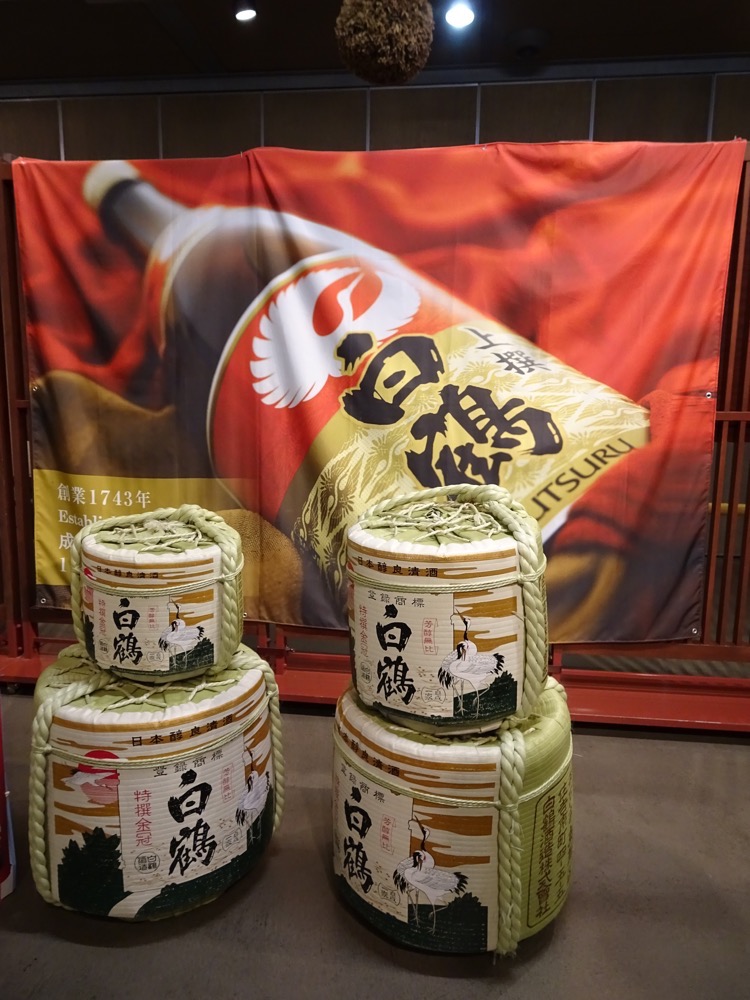 An advertising poster for the Hakutsuru Sake from the 1950s…it’s subtle, but the crane motif associated with their product is evident on the maiko’s kimono.
An advertising poster for the Hakutsuru Sake from the 1950s…it’s subtle, but the crane motif associated with their product is evident on the maiko’s kimono. Their famous cellar door Junmai… only available on site.
Their famous cellar door Junmai… only available on site.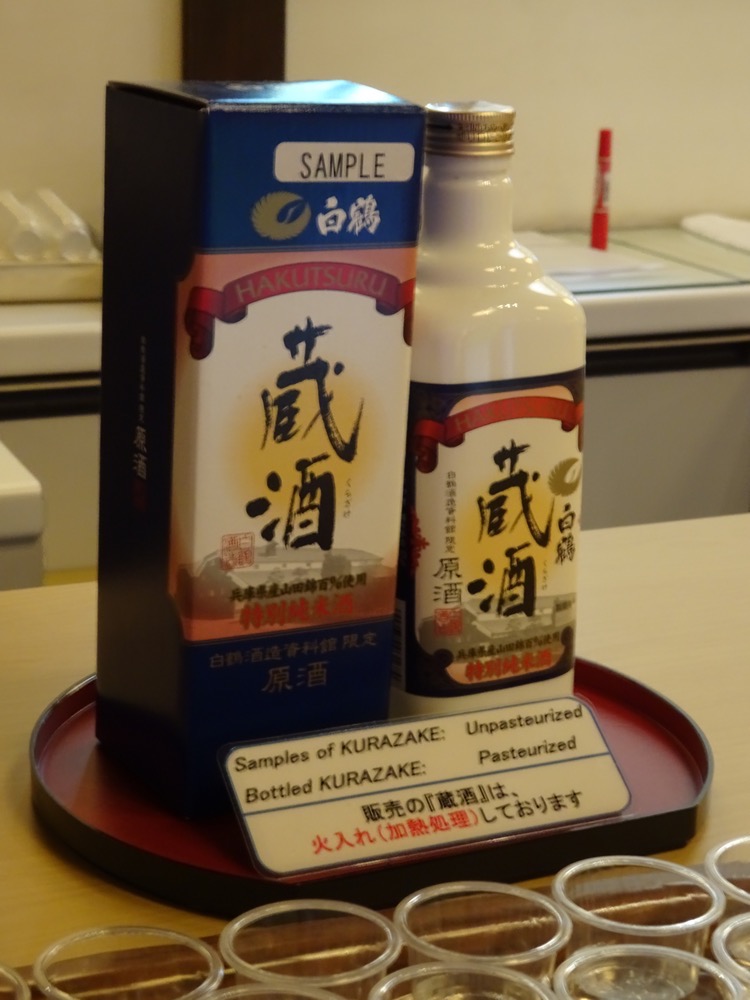


 This little robot will assist you in pairing the right saké to your food preferences.
This little robot will assist you in pairing the right saké to your food preferences.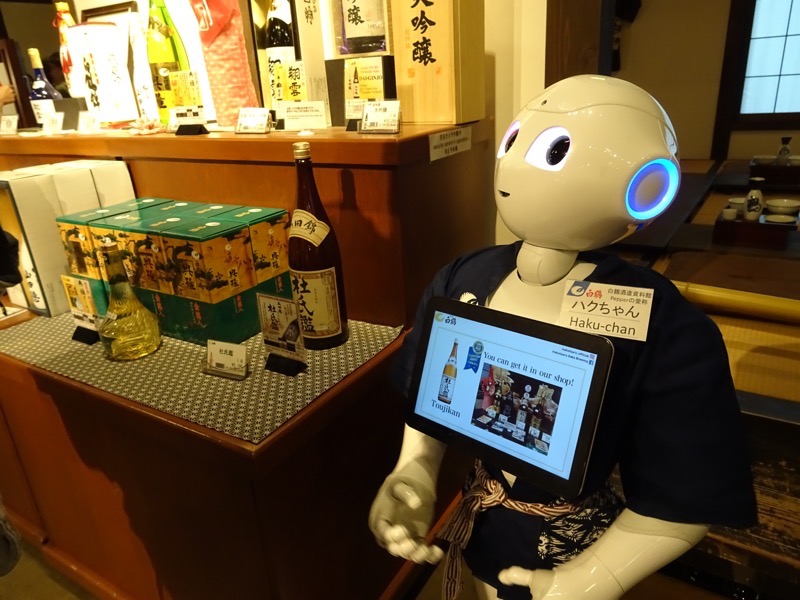
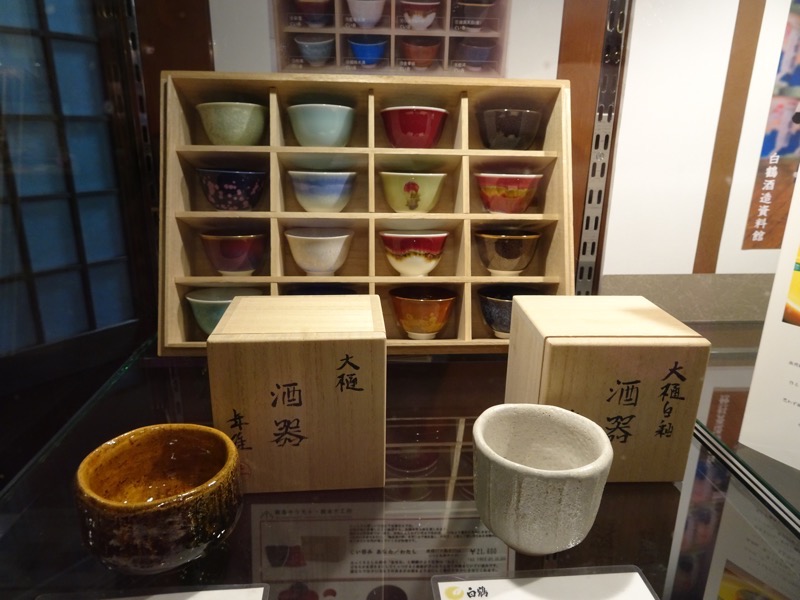


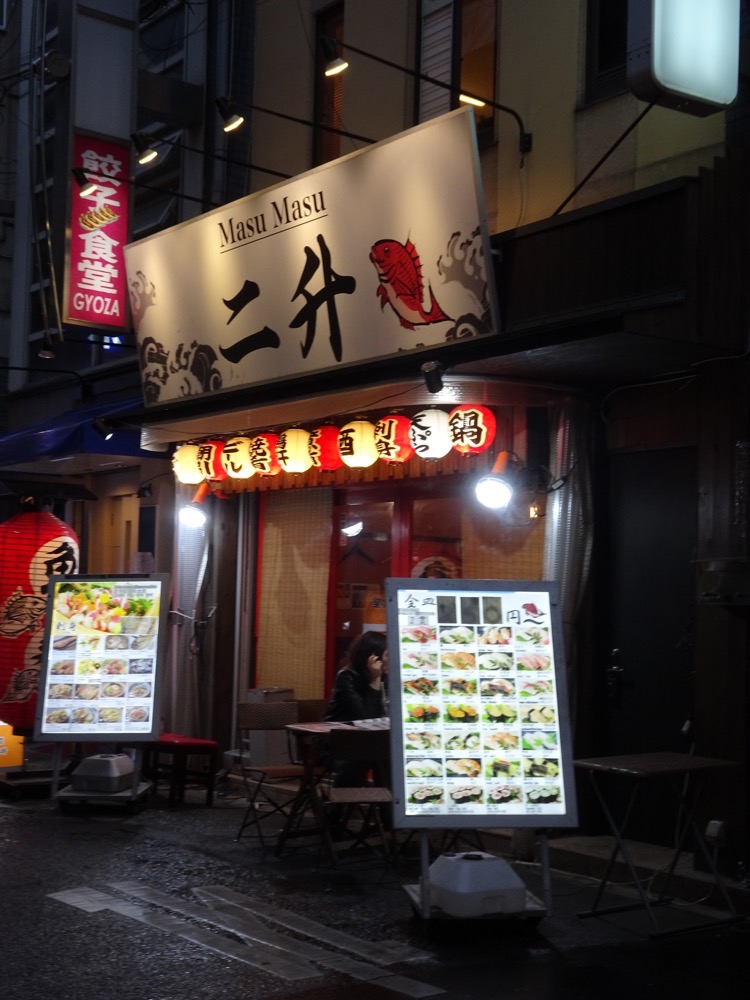

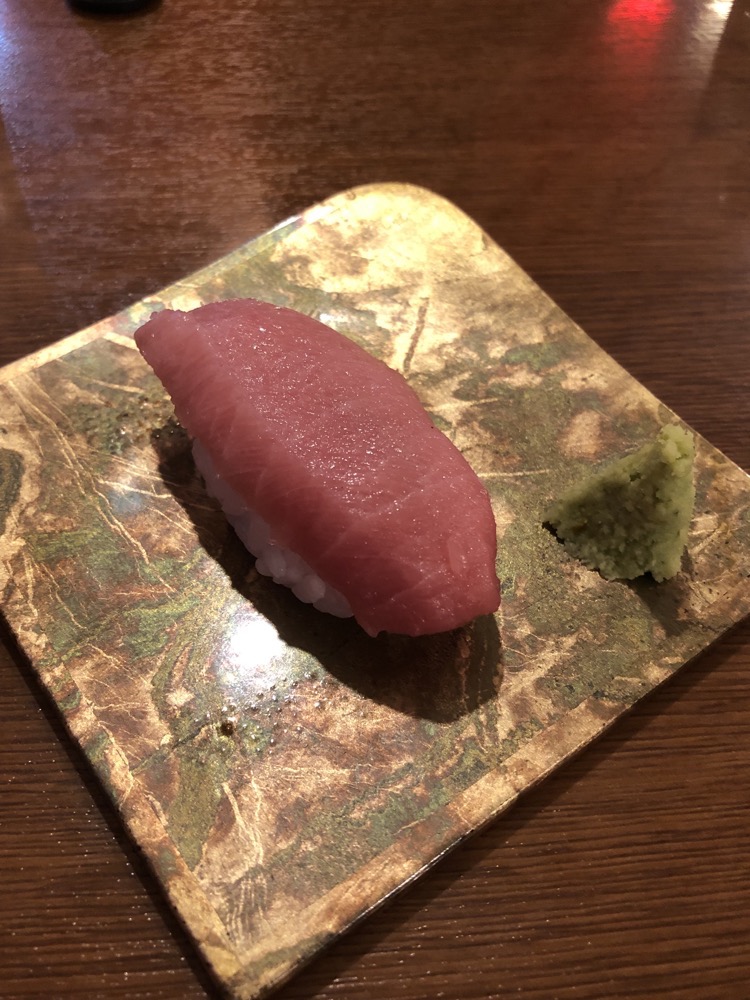
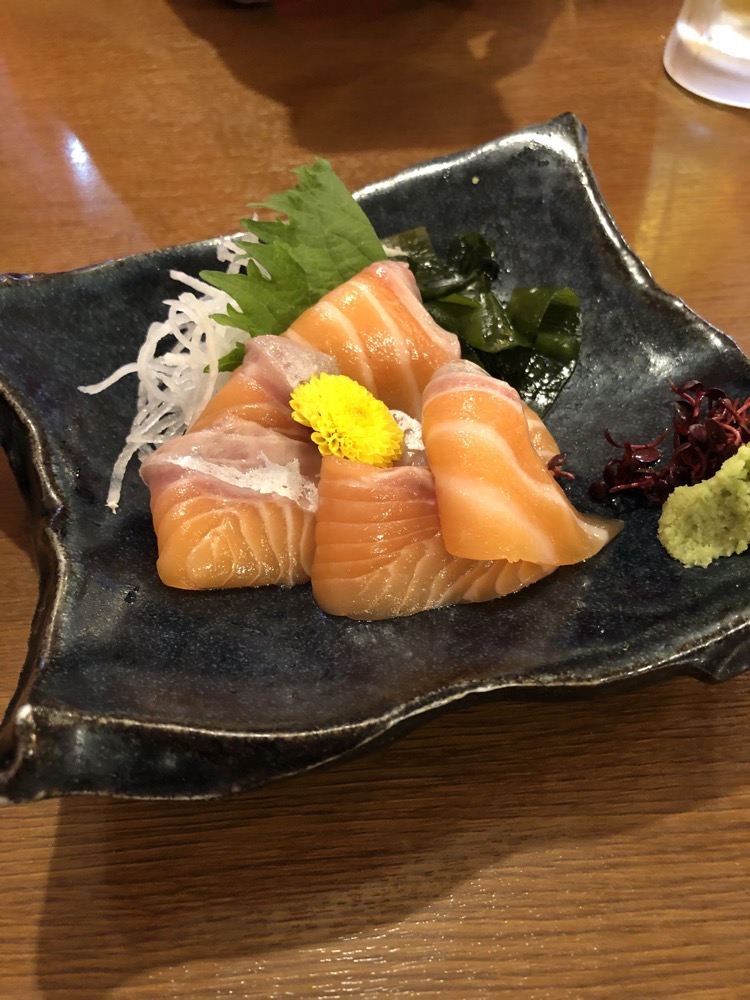


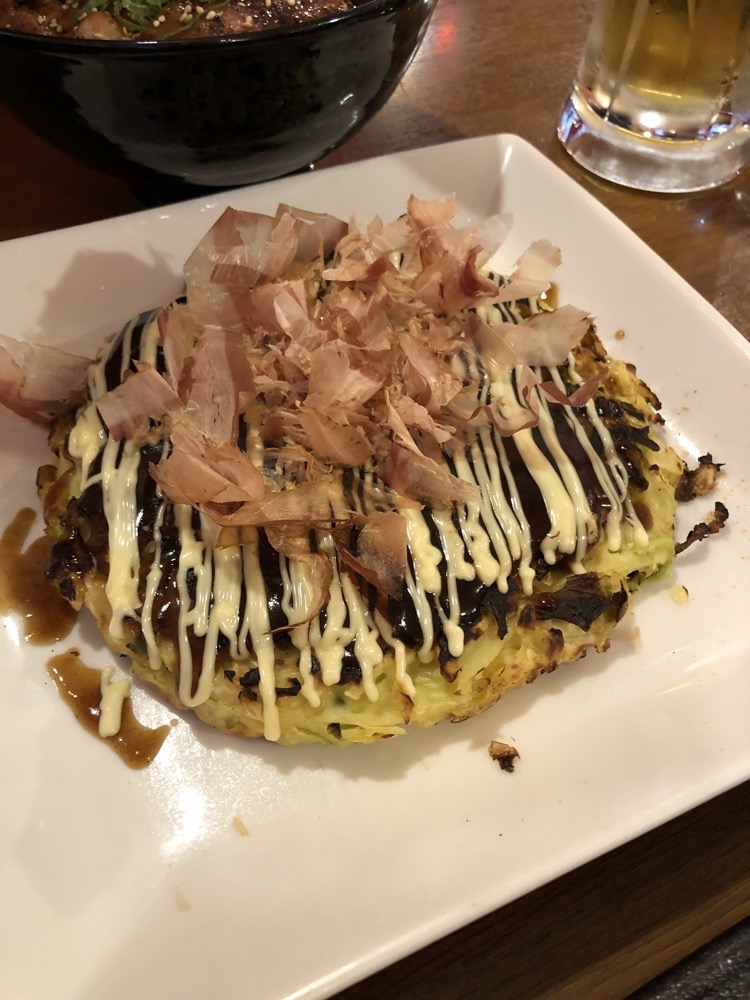 Then it was back to the hotel for a well-earned soak in the tub and some more saké to round out the day. My poor little feets were very much complaining about the 12kms of pavement we walked today but all that was forgotten as we caught the latest GoT before crashing for the night.
Then it was back to the hotel for a well-earned soak in the tub and some more saké to round out the day. My poor little feets were very much complaining about the 12kms of pavement we walked today but all that was forgotten as we caught the latest GoT before crashing for the night.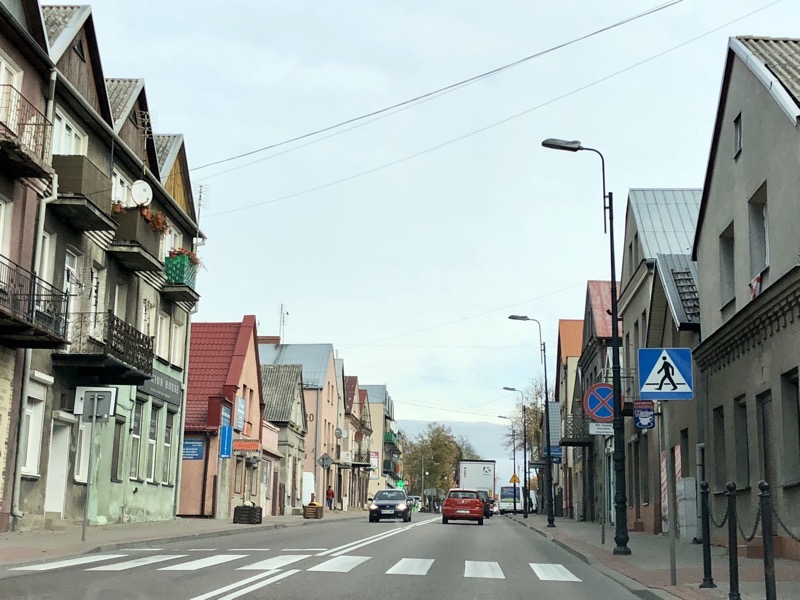 Some cute churches, and everything all sweet and fabulous…
Some cute churches, and everything all sweet and fabulous… 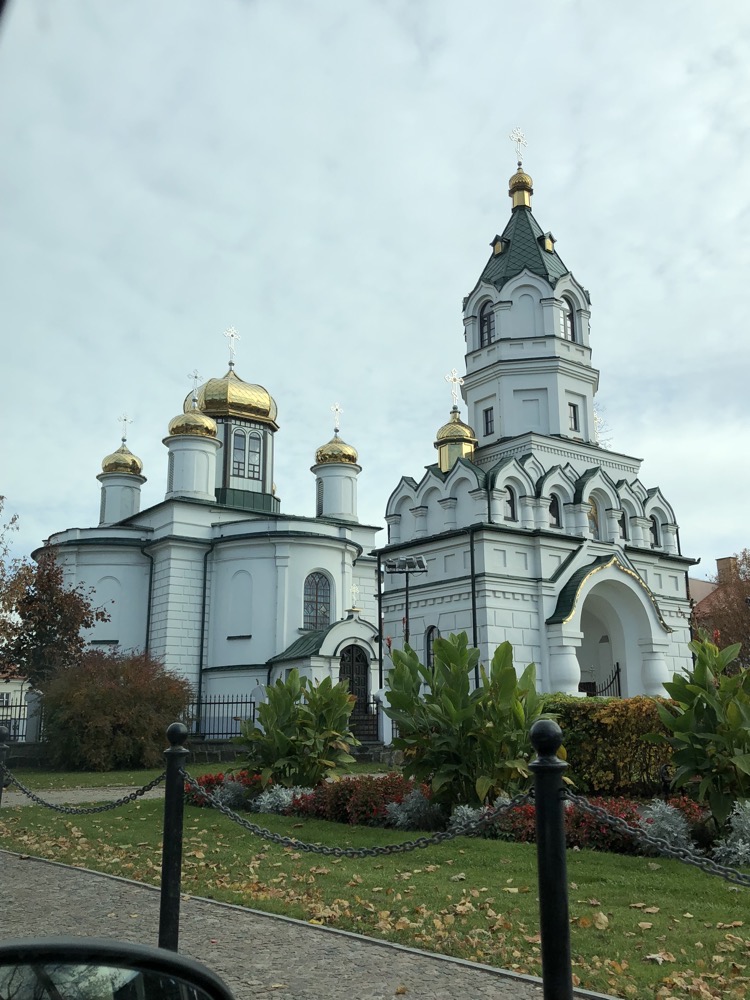 Until we encountered kilometres and kilometres of trucks all lined up in a dead stand still. For a while we thought it might be some sort of rolling blockade protest – people around here seem to be constantly protesting something. Or perhaps they were all lined up waiting for a weighbridge station, given how politely they were all lined up on the right and letting the cars pass them. We then came across this – the lane we had been travelling also at a dead stop of cars. Bugger, we thought – it was obviously the queue for the Polish/Lithuania border. So we pulled up behind the blue car in the photo below…
Until we encountered kilometres and kilometres of trucks all lined up in a dead stand still. For a while we thought it might be some sort of rolling blockade protest – people around here seem to be constantly protesting something. Or perhaps they were all lined up waiting for a weighbridge station, given how politely they were all lined up on the right and letting the cars pass them. We then came across this – the lane we had been travelling also at a dead stop of cars. Bugger, we thought – it was obviously the queue for the Polish/Lithuania border. So we pulled up behind the blue car in the photo below… 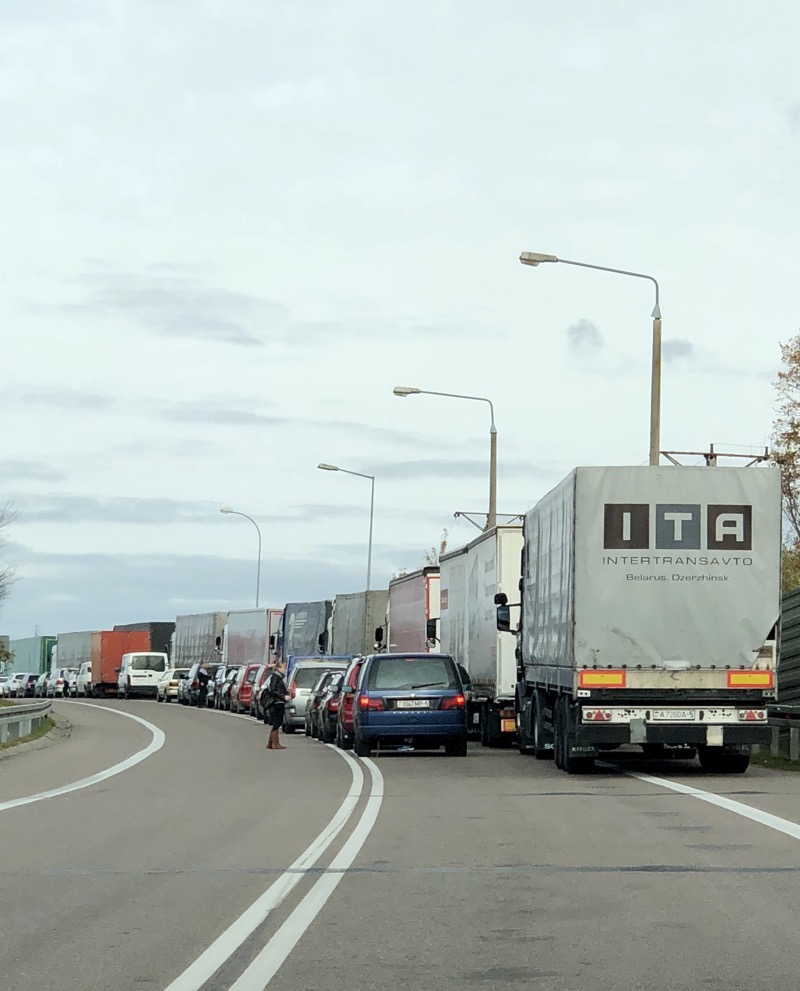 At this point, one of the truck drivers (most of whom were not in their vehicles) came over and told us to drive around. He pointed to the licence plate of the blue car, Belarussian, and he gestured for us to go around (our vehicle obviously had Polish plates on it). So we dutifully went around and ended up at the top of the queue:
At this point, one of the truck drivers (most of whom were not in their vehicles) came over and told us to drive around. He pointed to the licence plate of the blue car, Belarussian, and he gestured for us to go around (our vehicle obviously had Polish plates on it). So we dutifully went around and ended up at the top of the queue: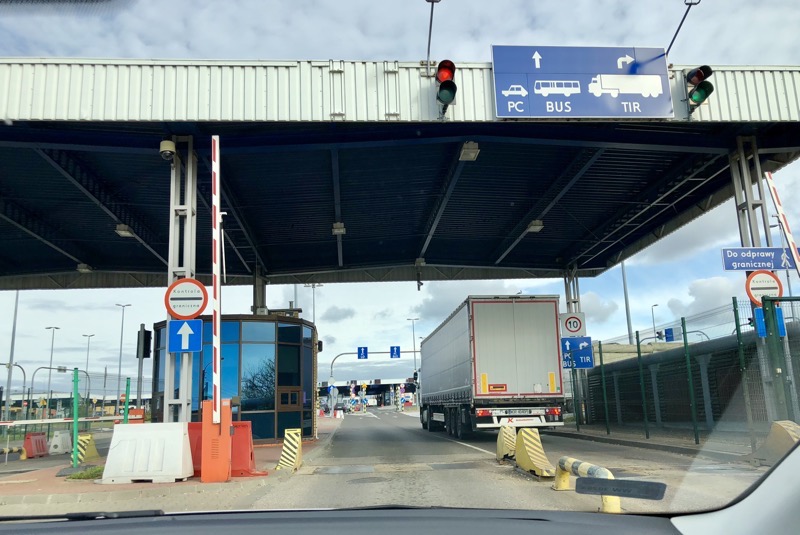
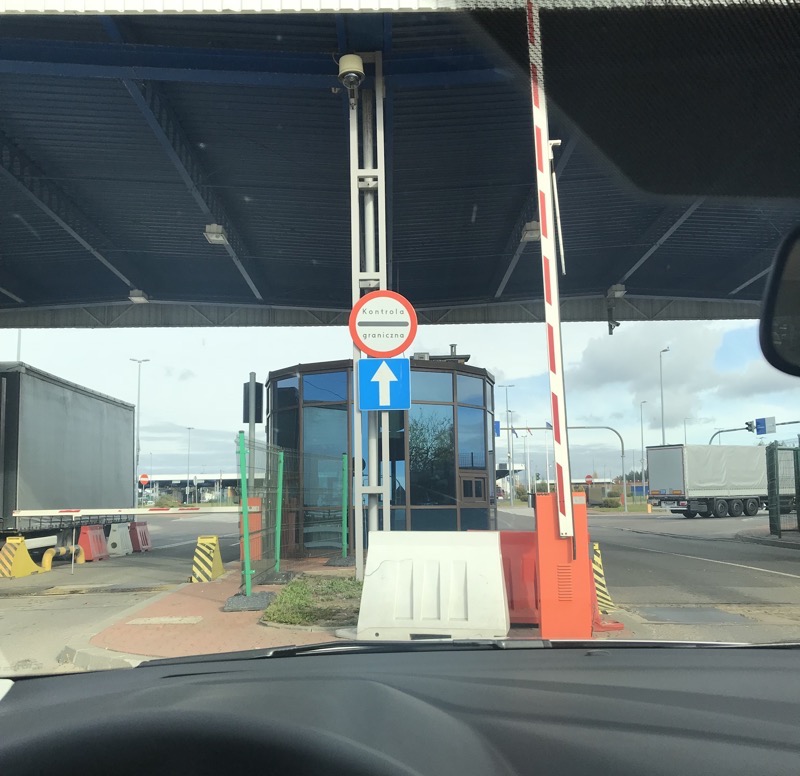 Whereupon it became obvious that we were in the middle of the military checkpoint to enter Belarus! Which meant we were miles from where we were supposed to be, and well and truly inside the borders of Belarus! Fark!
Whereupon it became obvious that we were in the middle of the military checkpoint to enter Belarus! Which meant we were miles from where we were supposed to be, and well and truly inside the borders of Belarus! Fark!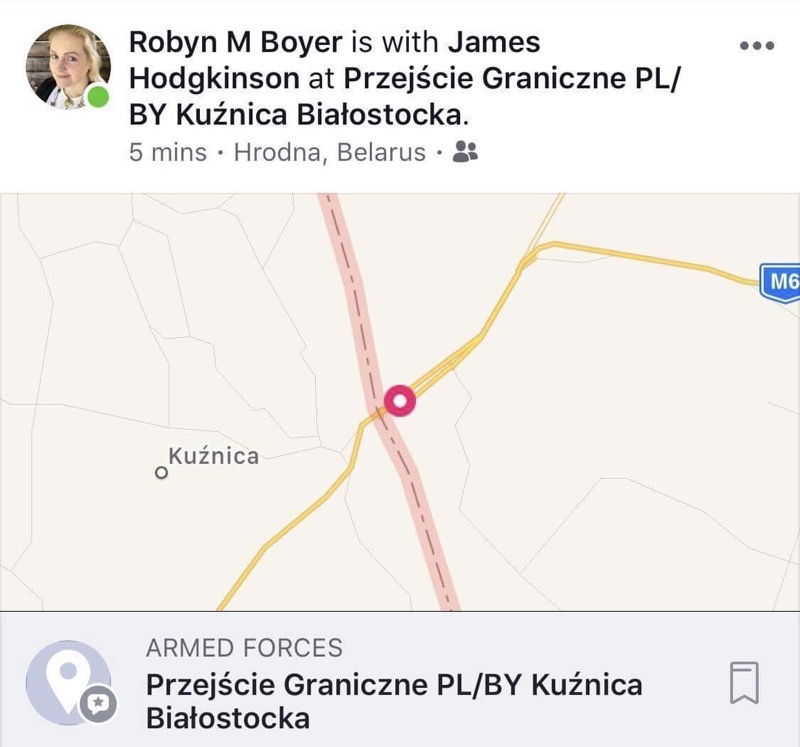 Now we knew when we set out that there were two routes to get us to Vilnius, one of which was slightly shorter and chopped through the corner of what is effectively the dictatorial presidential state of Belarus and the other which went only through the border between Poland and Lituania. Now, guess which route yale somehow programmed into Wayz…?
Now we knew when we set out that there were two routes to get us to Vilnius, one of which was slightly shorter and chopped through the corner of what is effectively the dictatorial presidential state of Belarus and the other which went only through the border between Poland and Lituania. Now, guess which route yale somehow programmed into Wayz…?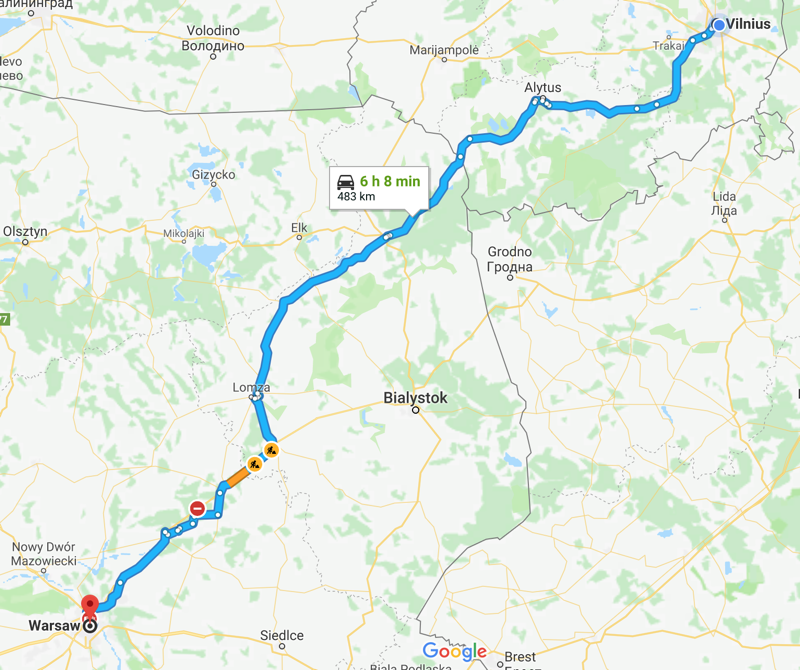
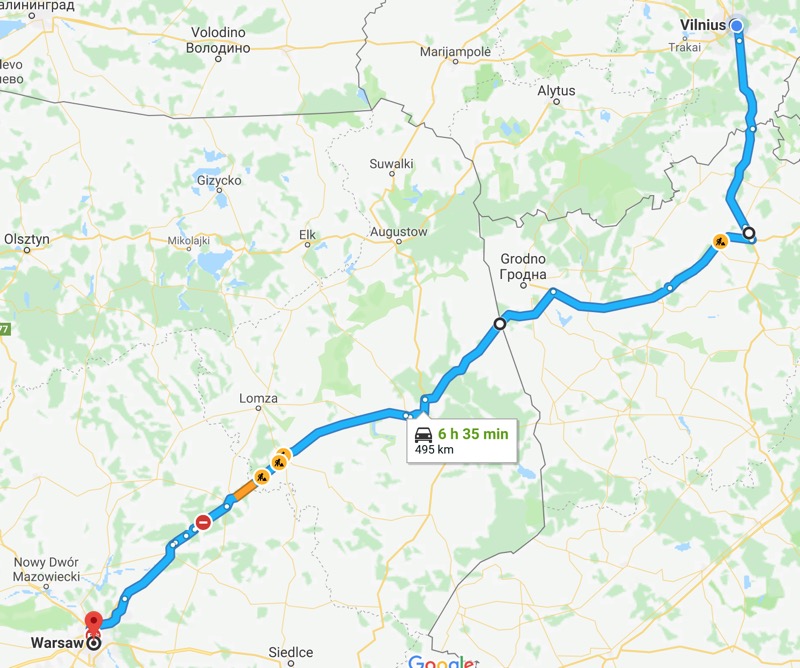
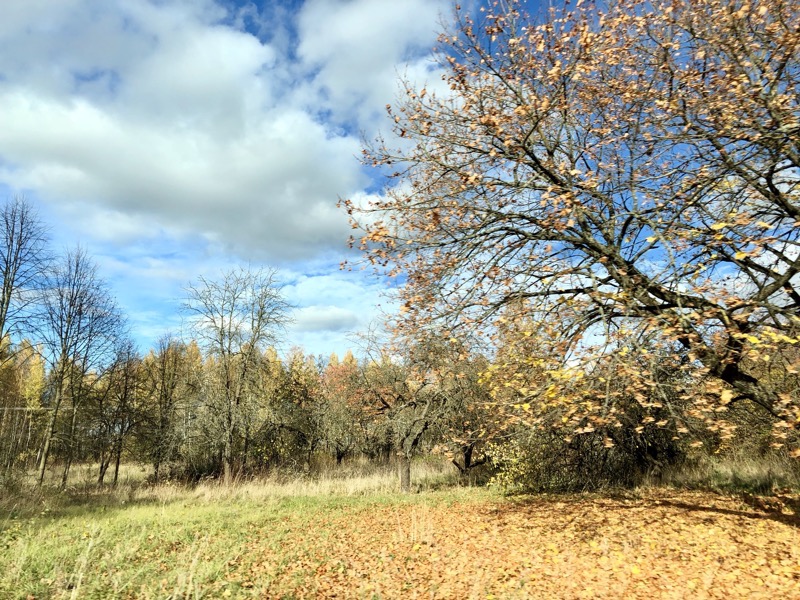 The countryside was simply stunning though – there is a beautiful quality to the light here (once you get out of the cities).
The countryside was simply stunning though – there is a beautiful quality to the light here (once you get out of the cities).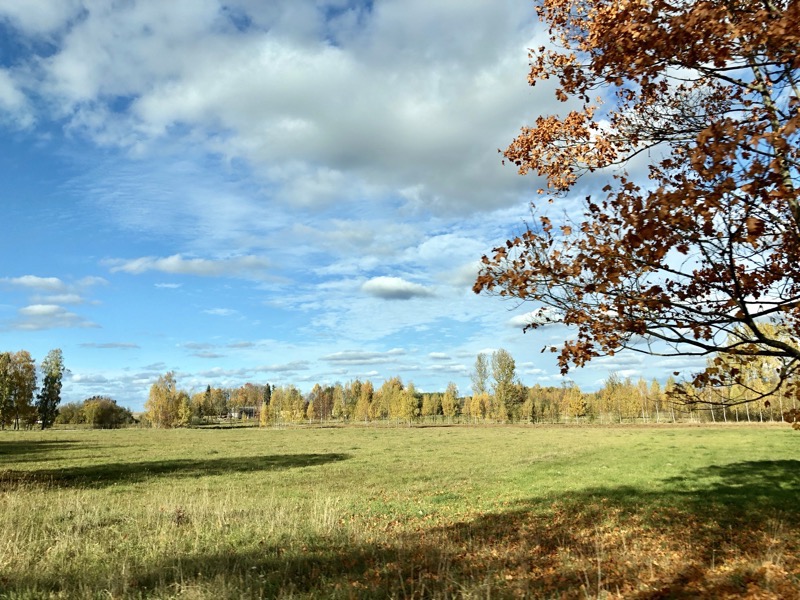
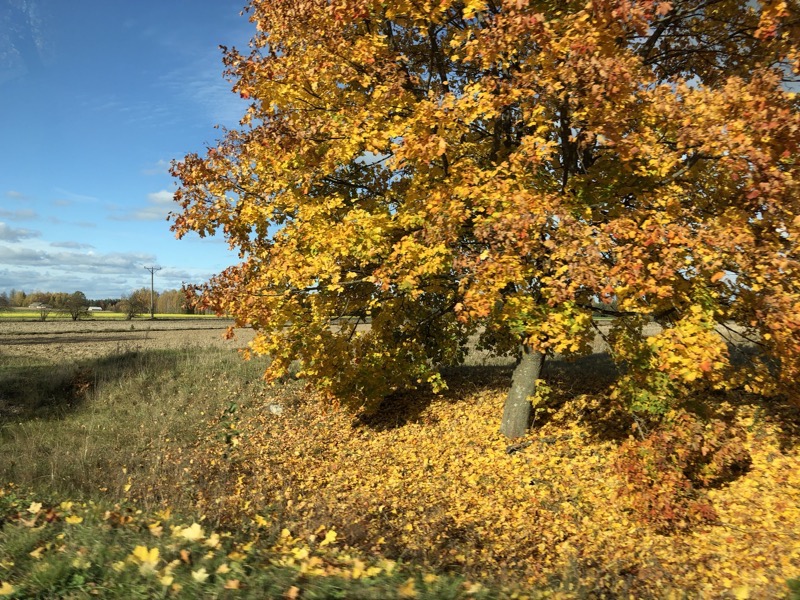 Honestly, I grabbed these shots out the car window as we sped past and they have not been altered or had filters added or anything.
Honestly, I grabbed these shots out the car window as we sped past and they have not been altered or had filters added or anything.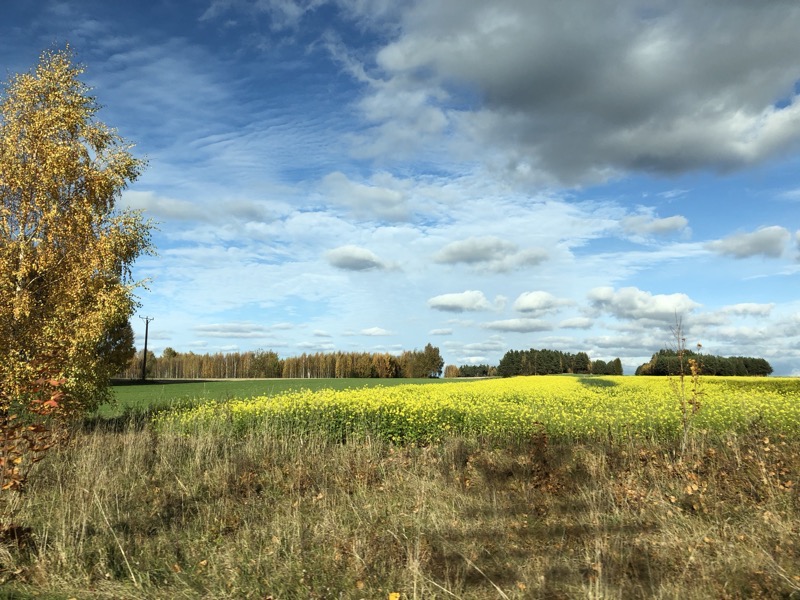
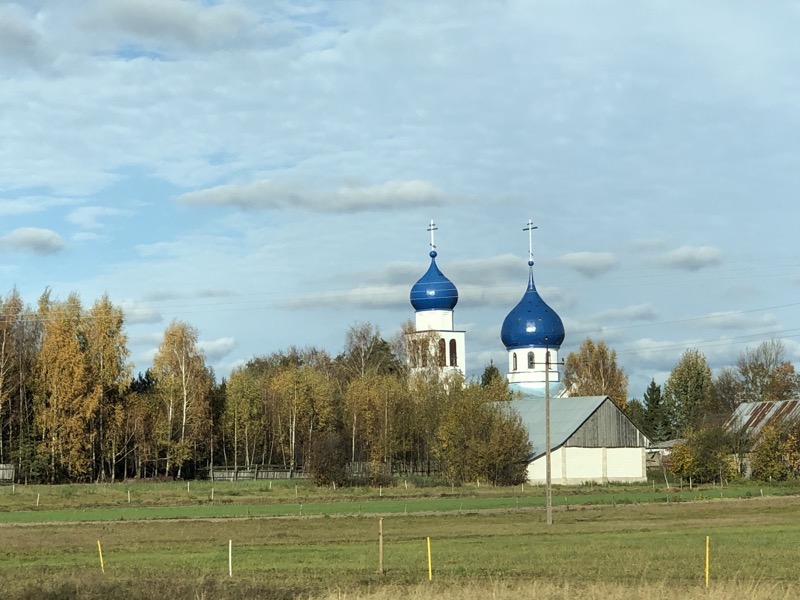
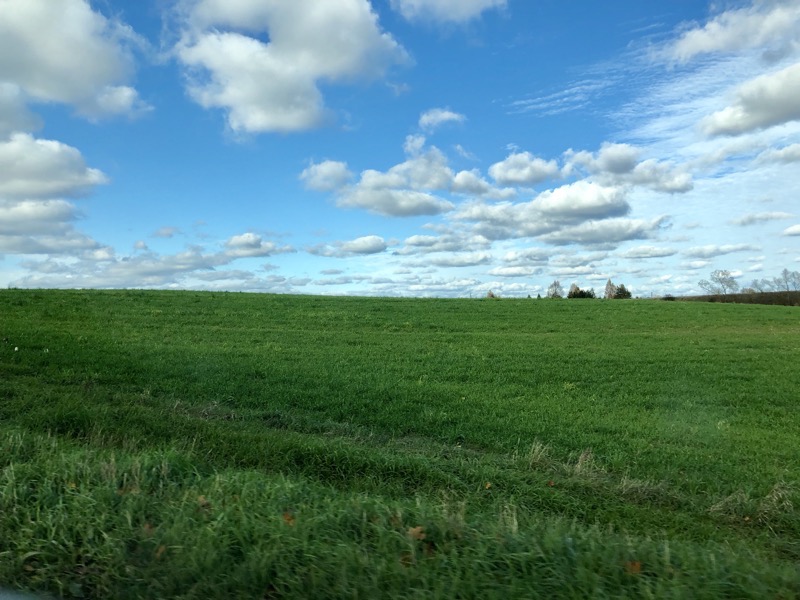 Stopped at a servo for a fortifying something something after our little run in with the Belarus Border Force guys.
Stopped at a servo for a fortifying something something after our little run in with the Belarus Border Force guys.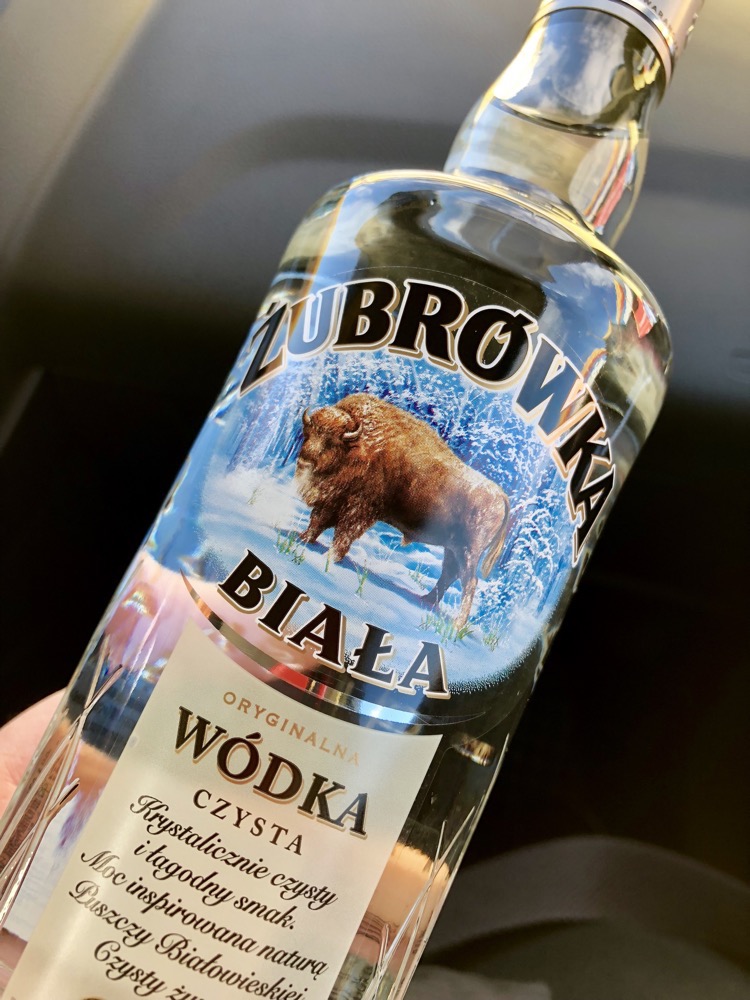



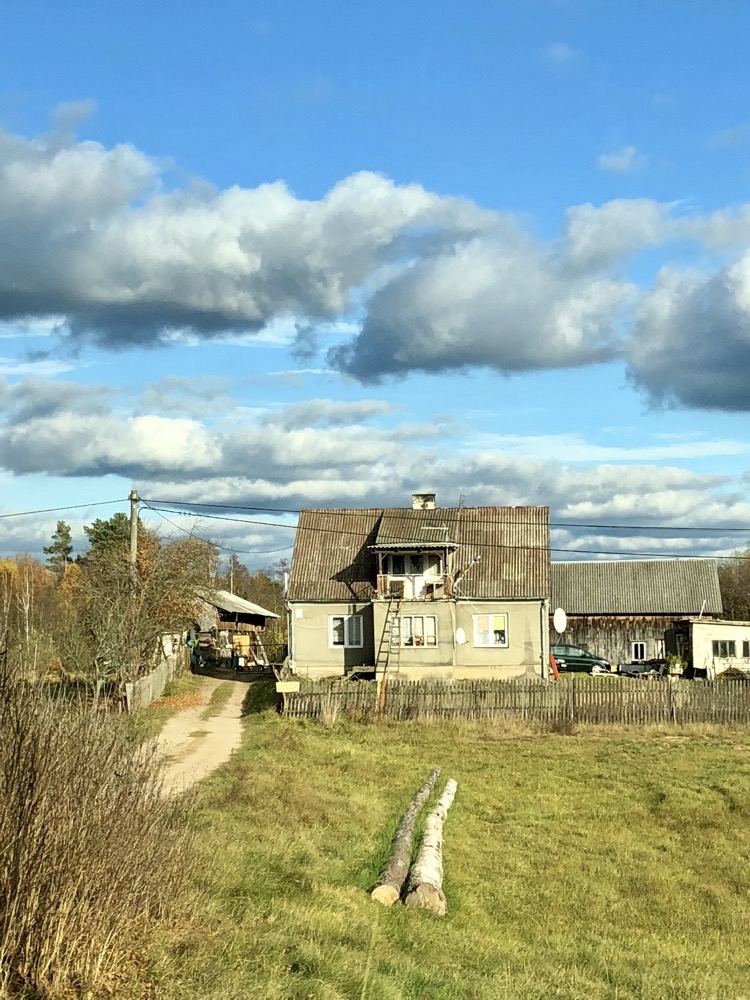
 WWII memorial in a little town on the way.
WWII memorial in a little town on the way.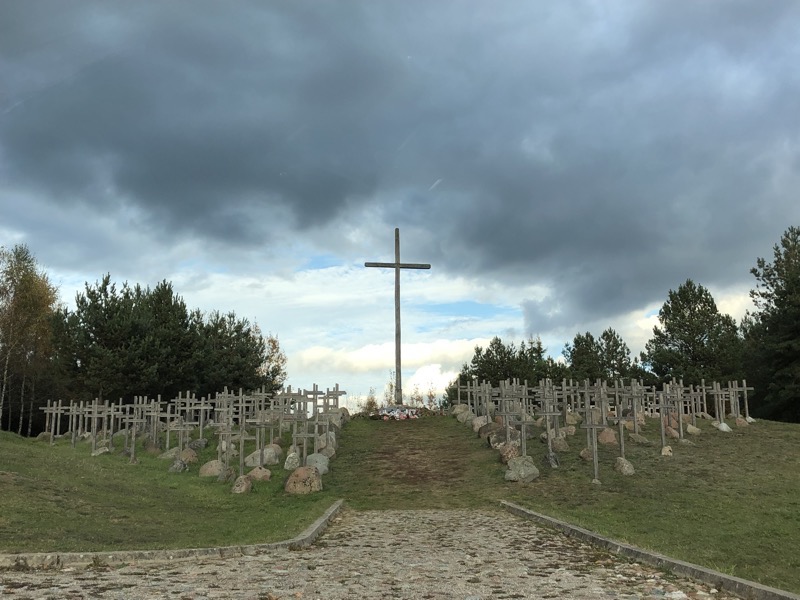
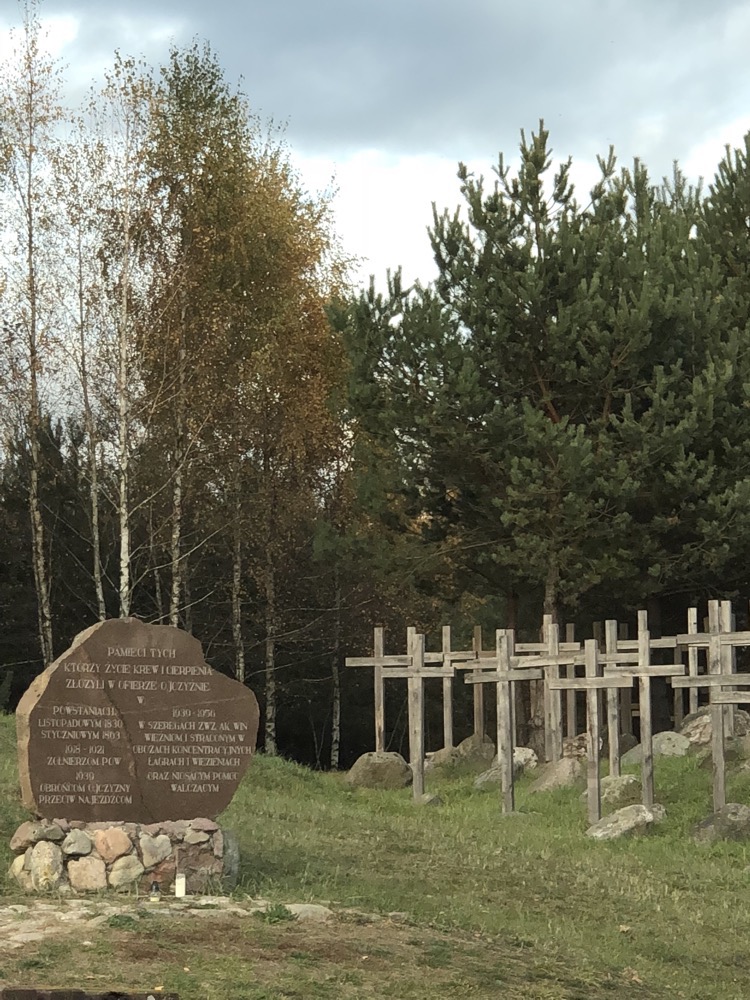 Oddly, the Polish/Lithuanian border was far more like what we had been expecting – almost non-existent. Being both part of the Schengen Agreement, there is pretty much borderless exchange between the two countries. We did see some guards in a jeep on the side of the road, but they weren’t doing anything at all.
Oddly, the Polish/Lithuanian border was far more like what we had been expecting – almost non-existent. Being both part of the Schengen Agreement, there is pretty much borderless exchange between the two countries. We did see some guards in a jeep on the side of the road, but they weren’t doing anything at all.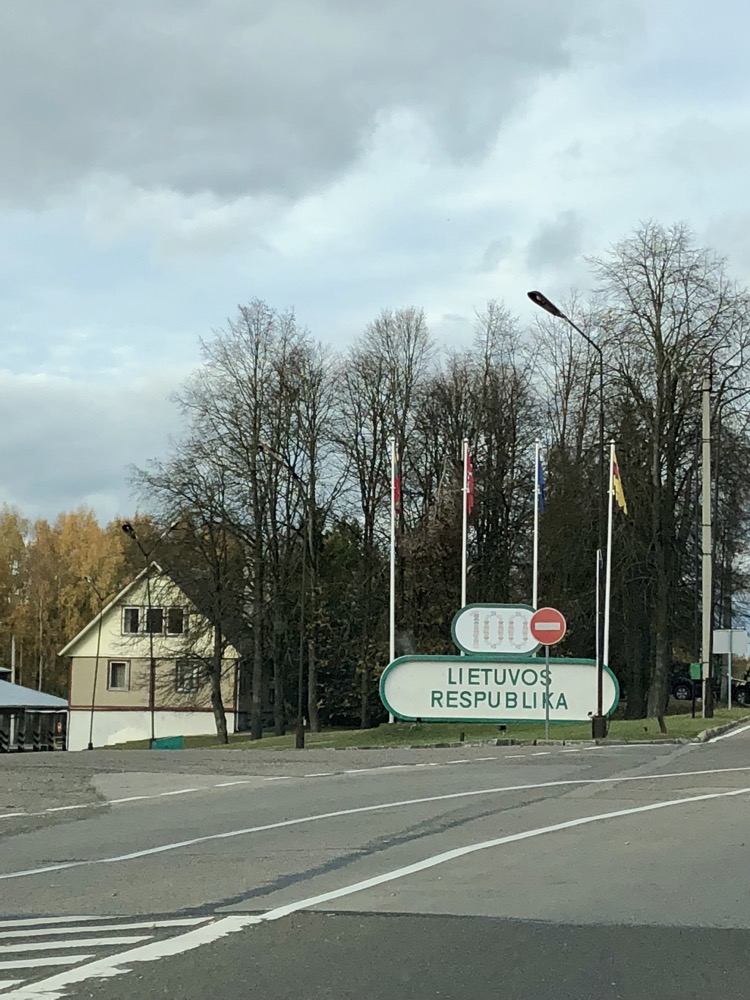 The delay set up back a little arriving into Vilnius, but we arrived found our B&B and got settled pretty quickly.
The delay set up back a little arriving into Vilnius, but we arrived found our B&B and got settled pretty quickly.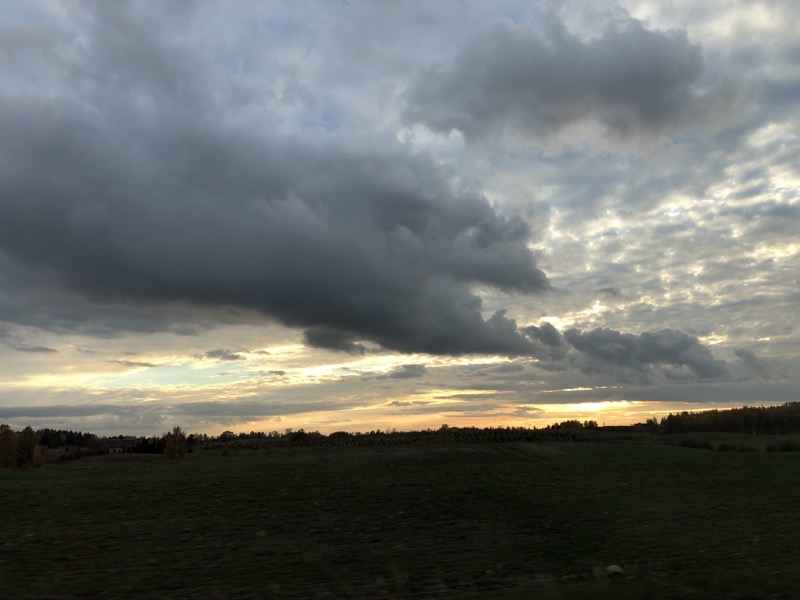 The B&B is in an old building with massive oak beams, exposed brick and stuccoed walls and old chunky furniture, right in the middle of the city.
The B&B is in an old building with massive oak beams, exposed brick and stuccoed walls and old chunky furniture, right in the middle of the city. 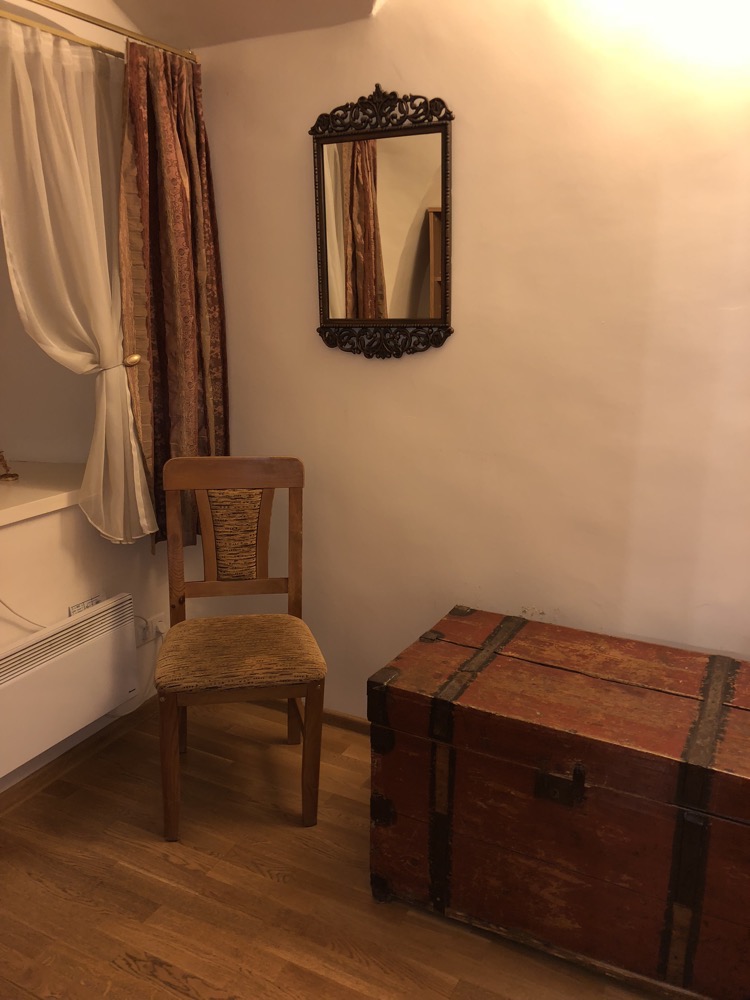

 After our adventure just driving here today, we decided to try and find some local food for dinner. yale scoped out this place on Trip Advisor and it had the two most desireable elements we could have asked for, 1) great reviews and 2) mega close proximity. Because it had been a long day already.
After our adventure just driving here today, we decided to try and find some local food for dinner. yale scoped out this place on Trip Advisor and it had the two most desireable elements we could have asked for, 1) great reviews and 2) mega close proximity. Because it had been a long day already. We walked in and there was a wait for a table. The restaurant didn’t appear to be very big so we were a bit disheartened and I was considering looking for other options, when it became apparent that there must be more space off to the side of the entrance and perhaps downstairs as well. We didn’t have to wait too long for a table and were led downstairs through a veritable rabbit warren on cosy dining spaces.
We walked in and there was a wait for a table. The restaurant didn’t appear to be very big so we were a bit disheartened and I was considering looking for other options, when it became apparent that there must be more space off to the side of the entrance and perhaps downstairs as well. We didn’t have to wait too long for a table and were led downstairs through a veritable rabbit warren on cosy dining spaces.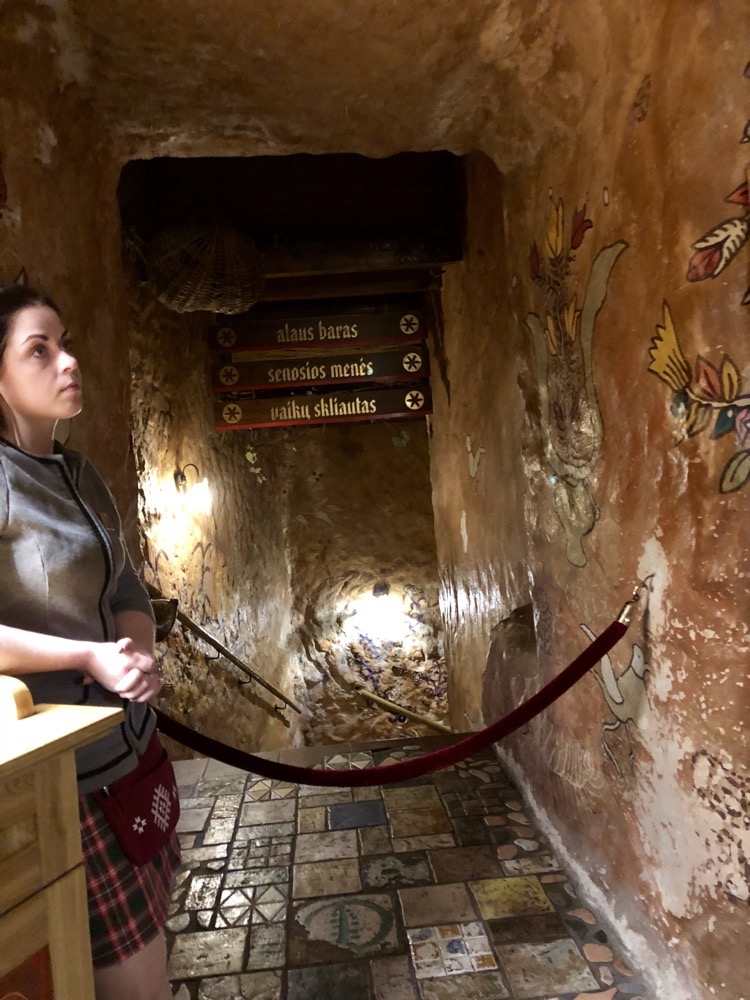 First things first – a drink! This place does paddles of brandy tasting so we thought we’d give that a go.
First things first – a drink! This place does paddles of brandy tasting so we thought we’d give that a go.
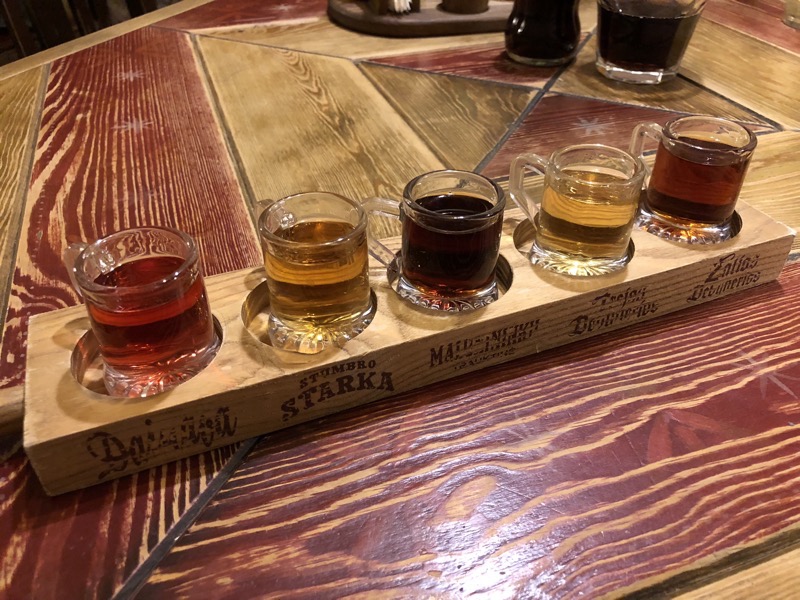 From the left, very drinkable with cherry flavours, quite sweet with honey overtones, something akin to metho, disgustingly strong liquorice shit, and slightly less strong but equally disgusting liquorice shit! Still, most of it went down just fine.
From the left, very drinkable with cherry flavours, quite sweet with honey overtones, something akin to metho, disgustingly strong liquorice shit, and slightly less strong but equally disgusting liquorice shit! Still, most of it went down just fine.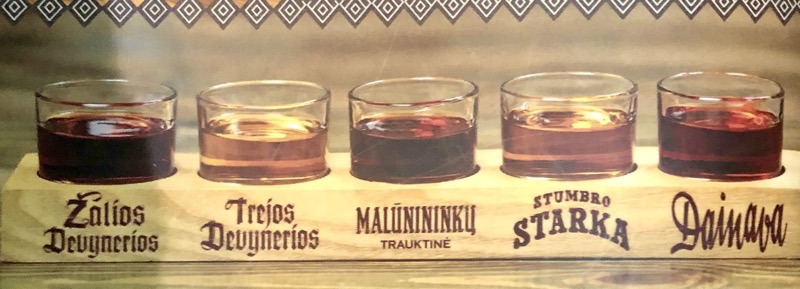
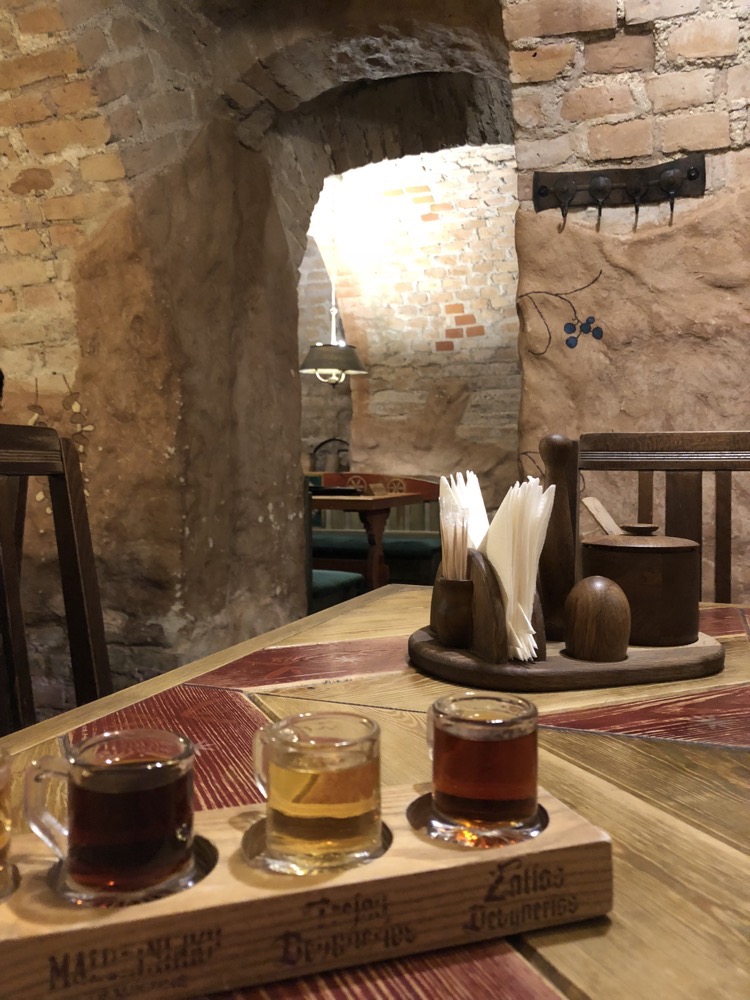 For entrees, everything looked really good on what is an extensive menu. We ordered a few plates to try – fried cheese with bell peppers (effectively jalapeno poppers – which seemed odd for Lithuanian cuisine, but my knowledge there is quite limited).
For entrees, everything looked really good on what is an extensive menu. We ordered a few plates to try – fried cheese with bell peppers (effectively jalapeno poppers – which seemed odd for Lithuanian cuisine, but my knowledge there is quite limited).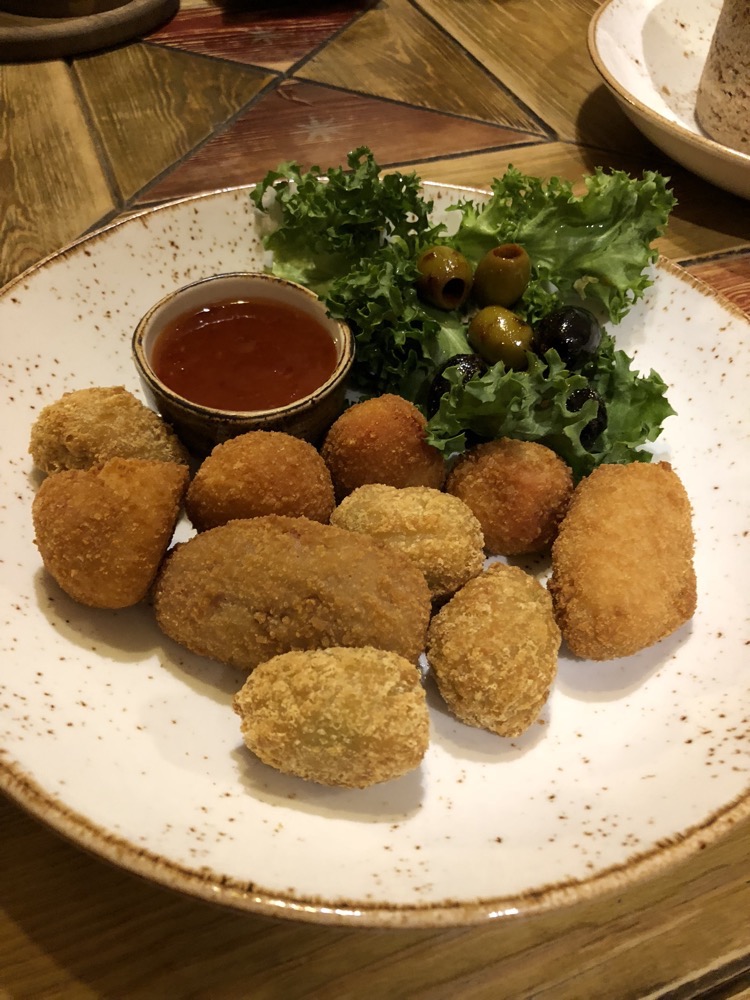 Next we tried the ‘thick and creamy wild mushroom soup’… which I tried and exclaimed “I hate this place! Best mushroom soup I have ever had, and it’s in bloody Lithuania!”
Next we tried the ‘thick and creamy wild mushroom soup’… which I tried and exclaimed “I hate this place! Best mushroom soup I have ever had, and it’s in bloody Lithuania!” yale also ordered a second entree of meat dumplings served with sour cream and some sort of nutty soupy broth stuff. It was very tasty – somehow just the right amount of salty.
yale also ordered a second entree of meat dumplings served with sour cream and some sort of nutty soupy broth stuff. It was very tasty – somehow just the right amount of salty.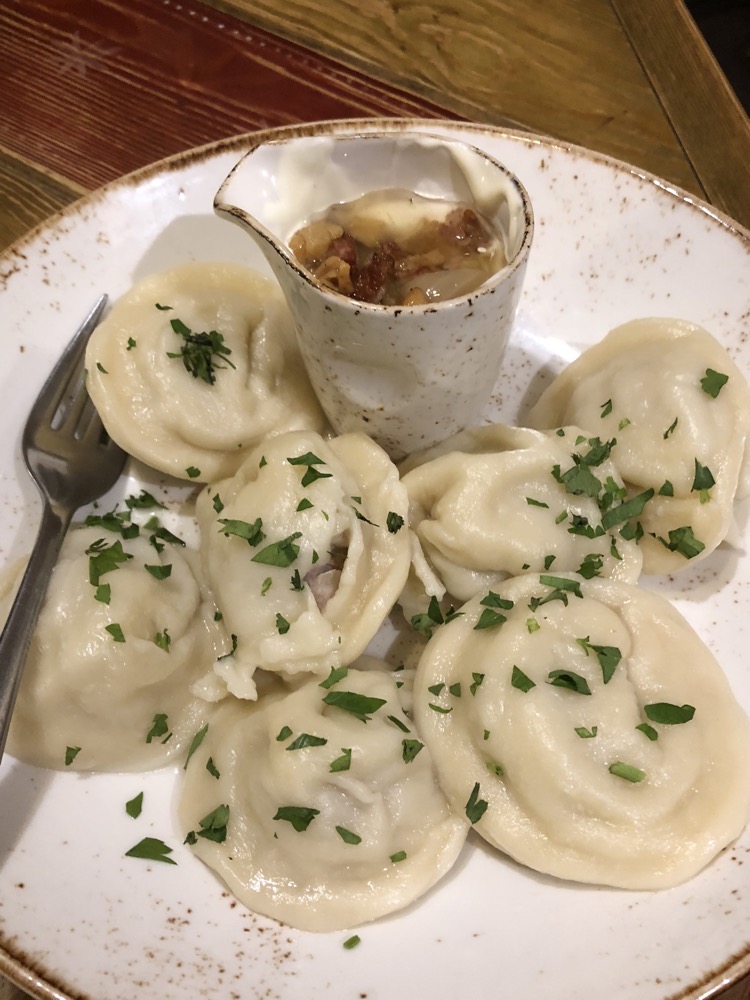 We had finished the brandy tasting paddle and the beers etc, so yale ordered a couple of meads and a homemade vodka. On the left honey mead, the vodka (average, but we may have been spoiled of late) and some god awful herbal mead shit that was 75% alcohol! Man that stuff is strong.
We had finished the brandy tasting paddle and the beers etc, so yale ordered a couple of meads and a homemade vodka. On the left honey mead, the vodka (average, but we may have been spoiled of late) and some god awful herbal mead shit that was 75% alcohol! Man that stuff is strong.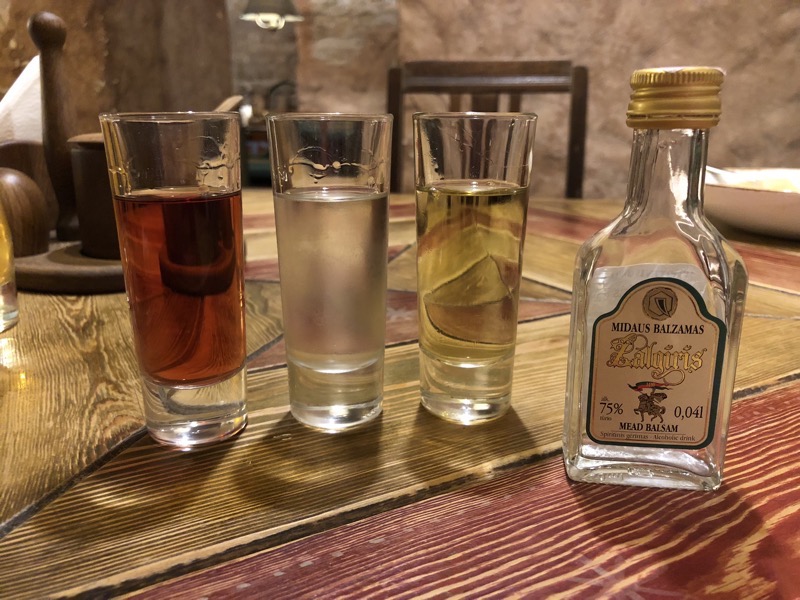
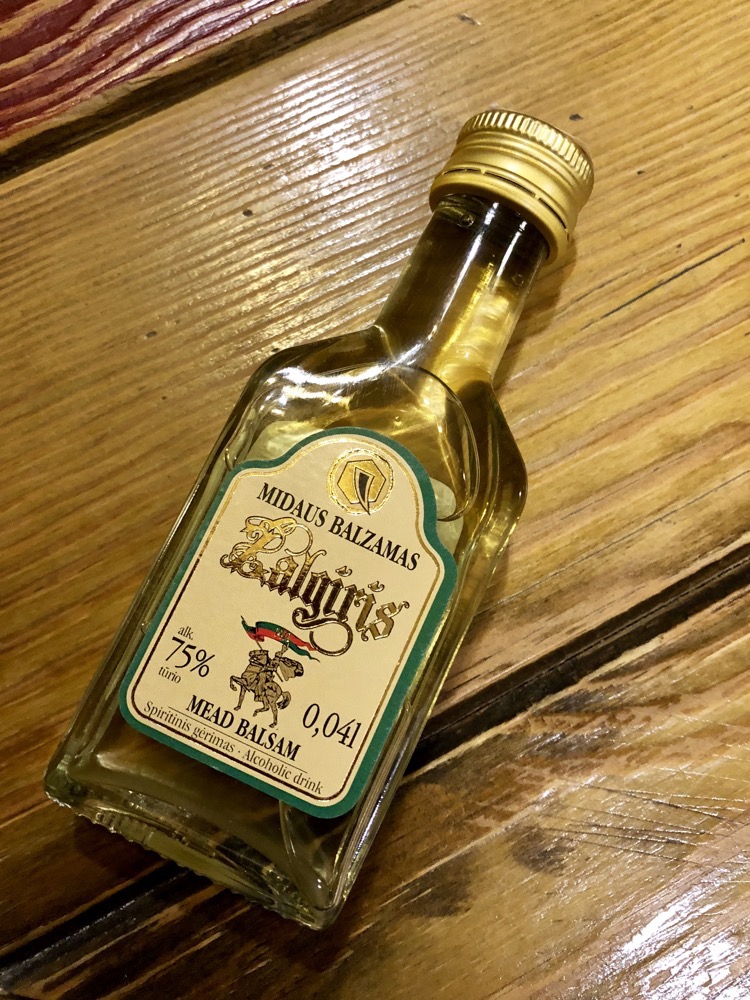 Dinner consisted of venison meatballs served with spinach mashed potato, loads of beetroot and a cranberry/blueberry sauce. Delicious.
Dinner consisted of venison meatballs served with spinach mashed potato, loads of beetroot and a cranberry/blueberry sauce. Delicious.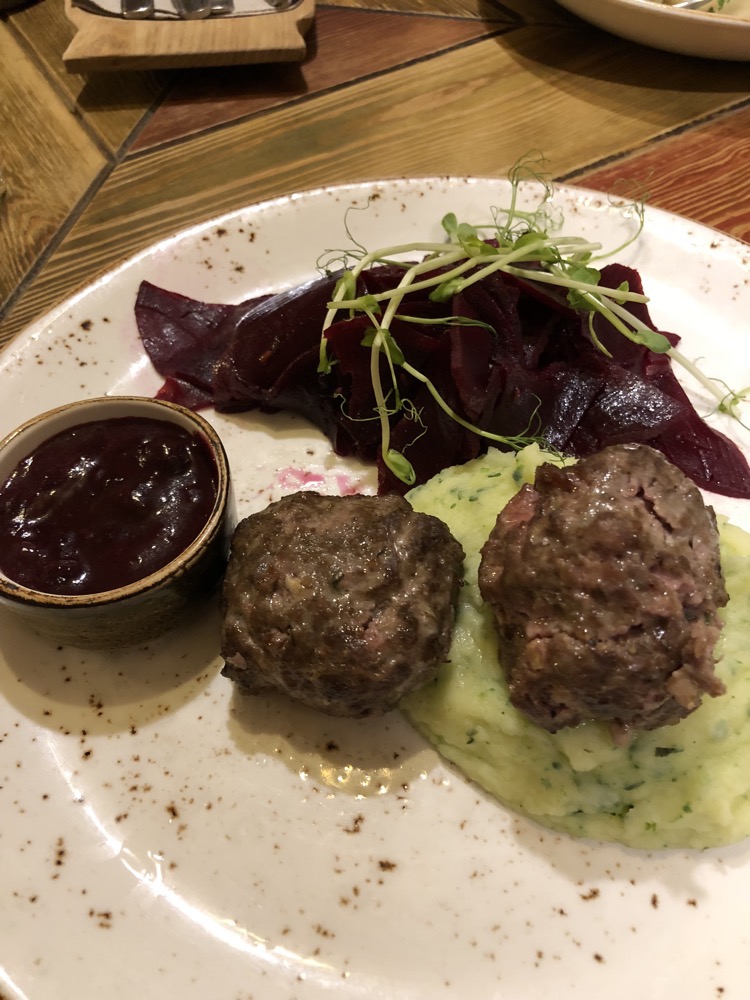 And yale had some enormous dumpling things filled with mean and drowning in a thick mushroom sauce.
And yale had some enormous dumpling things filled with mean and drowning in a thick mushroom sauce.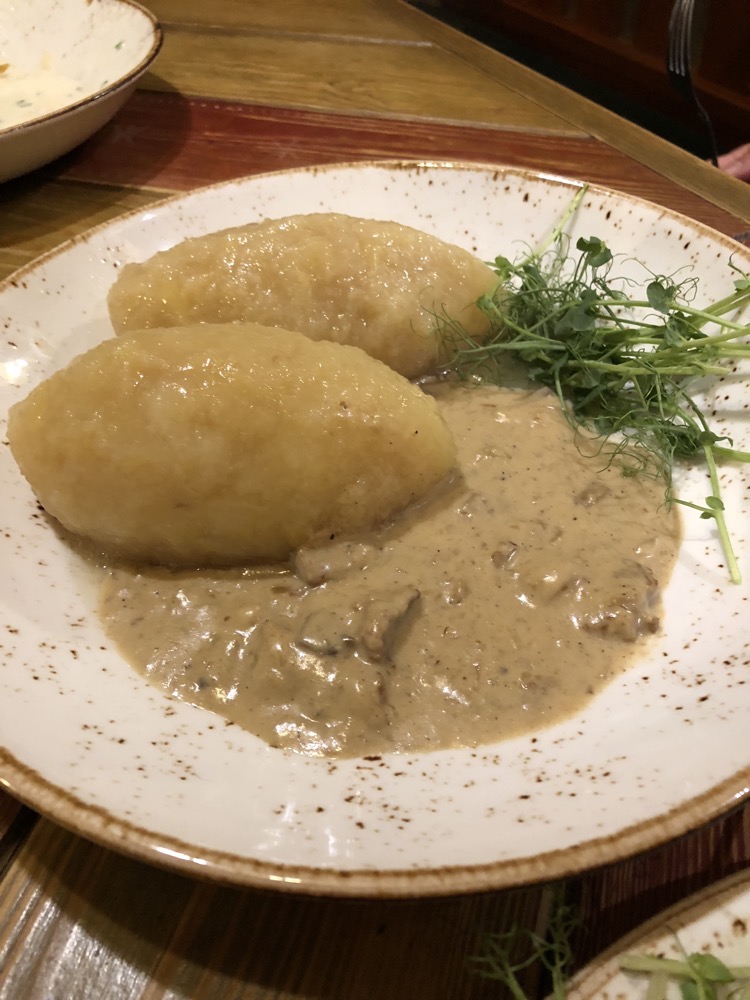 After dinner (and all those strong drinks) we barely managed to find our way out of the hidden tunnels of amazing foody goodness.
After dinner (and all those strong drinks) we barely managed to find our way out of the hidden tunnels of amazing foody goodness.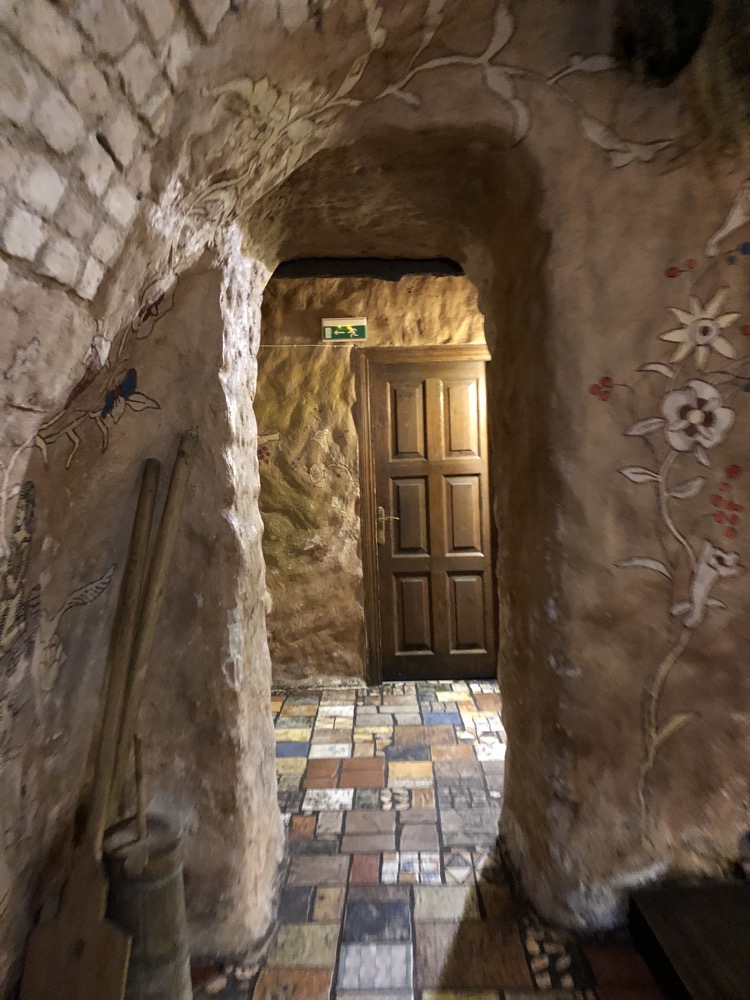
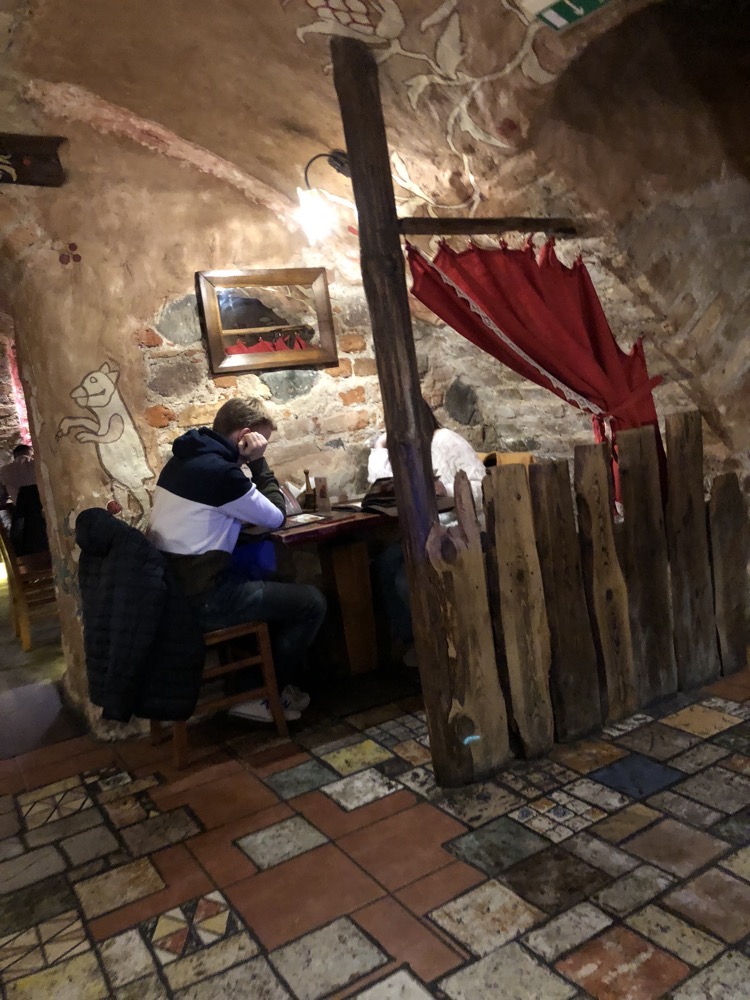
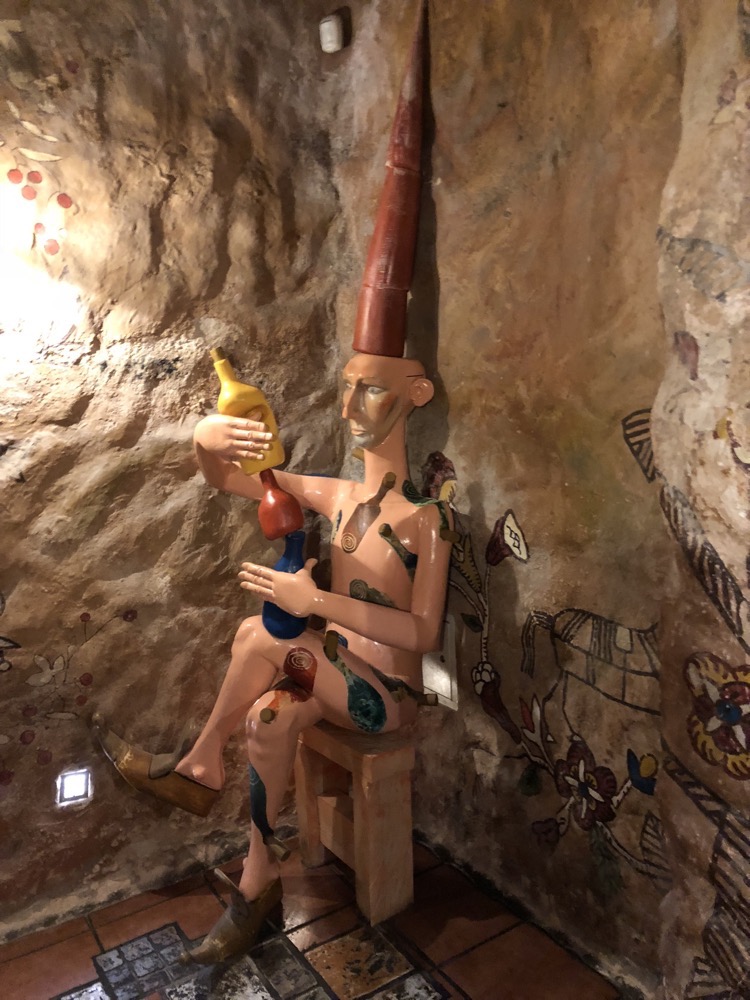
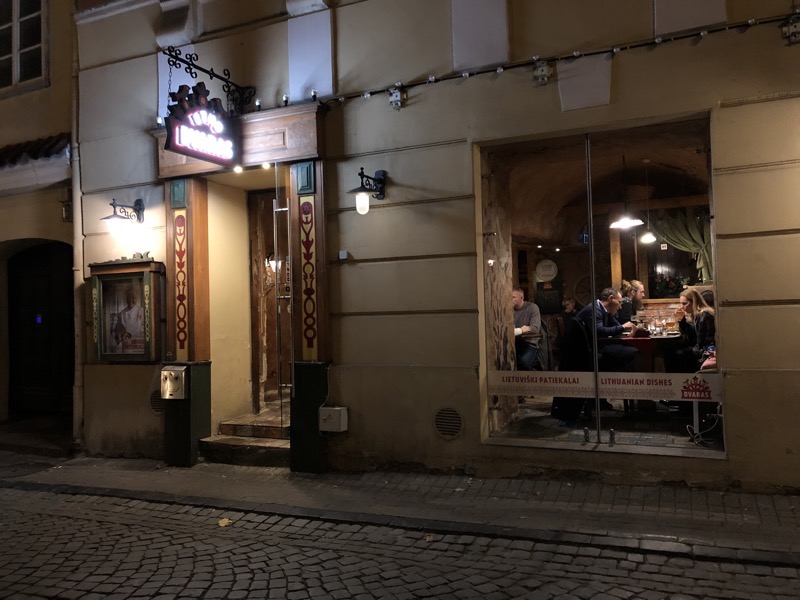 We want to get a full day to check out Vilnius tomorrow and both of us have laundry that needed attending to so we head back to the B&B for what was supposed to be an early night but it is already getting close to midnight. Again.
We want to get a full day to check out Vilnius tomorrow and both of us have laundry that needed attending to so we head back to the B&B for what was supposed to be an early night but it is already getting close to midnight. Again.

 The Wieliczka salt mine reaches a total depth of 327 meters and is over 287 kilometres long. Since the mined ceased commercial operations it has become a major tourist attraction – there are underground chapels and an enormous reception room that is used for private functions, including weddings, loads of statues and some underground brine lakes. The tourist route goes only 135m underground (which is plenty, trust me!) and follows a 3 km guided tour. To initially get down to the first levels of the tours, visitors need to go down 64m via a timber spiral staircase of some 380 steps – which, given the low ceilings and tight space is a bit like walking down a 40 storey building fire escape stairwell. There are many more sets of wooden steps so that visitors end up on the third level down at 135m and a total of approximately 800 steps down to get to that level.
The Wieliczka salt mine reaches a total depth of 327 meters and is over 287 kilometres long. Since the mined ceased commercial operations it has become a major tourist attraction – there are underground chapels and an enormous reception room that is used for private functions, including weddings, loads of statues and some underground brine lakes. The tourist route goes only 135m underground (which is plenty, trust me!) and follows a 3 km guided tour. To initially get down to the first levels of the tours, visitors need to go down 64m via a timber spiral staircase of some 380 steps – which, given the low ceilings and tight space is a bit like walking down a 40 storey building fire escape stairwell. There are many more sets of wooden steps so that visitors end up on the third level down at 135m and a total of approximately 800 steps down to get to that level. Everywhere we look is salt. Salt walls, salt floors, salt ledges, nooks and crannies. The rock salt naturally occurs in various shades of grey and looks more like unpolished granite.
Everywhere we look is salt. Salt walls, salt floors, salt ledges, nooks and crannies. The rock salt naturally occurs in various shades of grey and looks more like unpolished granite. There are many pully systems and horse treadmills throughout the mine to assist miners in moving large amounts of the heavy product to the surface.
There are many pully systems and horse treadmills throughout the mine to assist miners in moving large amounts of the heavy product to the surface. Throughout the mine, there are many statues carved out of salt. Some, more contemporary artworks have been carved by modern sculptors, but many have been carved by amateurs – gifted miners who worked on these sculptures during their own time.
Throughout the mine, there are many statues carved out of salt. Some, more contemporary artworks have been carved by modern sculptors, but many have been carved by amateurs – gifted miners who worked on these sculptures during their own time.
 And the scene depicted is a diorama carved of salt.
And the scene depicted is a diorama carved of salt. The St Anthony’s Chapel.
The St Anthony’s Chapel.
 Secondary crystalised salt forms on the walls and ceiling of the mine as water seeps through the rock above.
Secondary crystalised salt forms on the walls and ceiling of the mine as water seeps through the rock above.
 One of the most dangerous things about mining salt (indeed about mining anything this far underground) is the risk of fire. The salt mines were particularly prone to fires from gas escaping as new veins of salt were mine. Therefore one of the most dangerous jobs down the mine was to crawl down the newly created tunnels with a long flaming torch literally burning out pockets of colourless gas, which could cause explosions if the gas deposits were large enough. It was a very dangerous job but apparetly very well paid work.
One of the most dangerous things about mining salt (indeed about mining anything this far underground) is the risk of fire. The salt mines were particularly prone to fires from gas escaping as new veins of salt were mine. Therefore one of the most dangerous jobs down the mine was to crawl down the newly created tunnels with a long flaming torch literally burning out pockets of colourless gas, which could cause explosions if the gas deposits were large enough. It was a very dangerous job but apparetly very well paid work. The visible patterns and designs have been hand cut into the walls and floors.
The visible patterns and designs have been hand cut into the walls and floors. There were many workhorses used in the salt mines – once down the mine, they spent their entire lives down there as it was difficult to get them in or out. So naturally, they needed stables, with feed storage and all sorts. Hay stocks would bring mice, which meant they eventually brought down cats and the whole place sounded like a bit of a menagerie.
There were many workhorses used in the salt mines – once down the mine, they spent their entire lives down there as it was difficult to get them in or out. So naturally, they needed stables, with feed storage and all sorts. Hay stocks would bring mice, which meant they eventually brought down cats and the whole place sounded like a bit of a menagerie. 
 An old winch system:
An old winch system: This photo is unfortunately not very clear, but these were 14th century stairs that miners would use to descend the mine, carved into the salt.
This photo is unfortunately not very clear, but these were 14th century stairs that miners would use to descend the mine, carved into the salt. Looking down to the second level:
Looking down to the second level: Gnomes start to appear dotted around the place, carved out of very clear white rock salt.
Gnomes start to appear dotted around the place, carved out of very clear white rock salt. Where we just came from:
Where we just came from: A brine creek directed to a bowl. Our guide kept telling us to lick the walls or taste the water – it’s so salty that no bacteria can survive on the surface, and even though the mine has over 1.2 million visitors a year, she assures us that no one ever gets sick from licking the walls. I kinda believe her, but didn’t feel the need to try it. The water however was extremely salty.
A brine creek directed to a bowl. Our guide kept telling us to lick the walls or taste the water – it’s so salty that no bacteria can survive on the surface, and even though the mine has over 1.2 million visitors a year, she assures us that no one ever gets sick from licking the walls. I kinda believe her, but didn’t feel the need to try it. The water however was extremely salty.
 A recreated foreman’s office off a mine tunnel:
A recreated foreman’s office off a mine tunnel: A vignette of many gnomes doing various mine jobs:
A vignette of many gnomes doing various mine jobs: Another small chapel space to the virgin Mary:
Another small chapel space to the virgin Mary: Some of the chambers have been reinforced with timber, which miners kept painted white. They had no electric lighting down here and had small tallow lamps or torches only. The white allowed for the light to be reflected around more easily and create better lit conditions.
Some of the chambers have been reinforced with timber, which miners kept painted white. They had no electric lighting down here and had small tallow lamps or torches only. The white allowed for the light to be reflected around more easily and create better lit conditions. Another small chapel. Mining is serious business that needs a lot of praying.
Another small chapel. Mining is serious business that needs a lot of praying. So then we enter the King’s Chapel – a chamber which has the world’s largest underground church.
So then we enter the King’s Chapel – a chamber which has the world’s largest underground church.  Lit by five enormous rock salt chandeliers, a huge wooden staircase bring visitors to the salt floor which is 64m underground now.
Lit by five enormous rock salt chandeliers, a huge wooden staircase bring visitors to the salt floor which is 64m underground now. Lining the walls are carvings of various artistic execution done by miners:
Lining the walls are carvings of various artistic execution done by miners: I love the floor!
I love the floor!
 The salt rock crystal chandeliers are over two meters in drop:
The salt rock crystal chandeliers are over two meters in drop: The King’s Chapel.
The King’s Chapel.
 Salt rock statues, salt rock columns, salt rock candlesticks, salt rock altar, salt rock kneelers, pews, salt rock tabernacle…
Salt rock statues, salt rock columns, salt rock candlesticks, salt rock altar, salt rock kneelers, pews, salt rock tabernacle… Even the bollards to keep the tourists in line are carved out of salt.
Even the bollards to keep the tourists in line are carved out of salt.
 Further down the mine there are some enormous salt water lakes.
Further down the mine there are some enormous salt water lakes. 




 Goethe:
Goethe:
 Looking down towars the third level of the tourist route:
Looking down towars the third level of the tourist route: Apparently tourists used to be moved about using ferry boat rides here through some of the smaller tunnels of the mine until a tragic drowning incident occurred in the Jozef Pilsudski Chamber.
Apparently tourists used to be moved about using ferry boat rides here through some of the smaller tunnels of the mine until a tragic drowning incident occurred in the Jozef Pilsudski Chamber. A ferry boat capsized and five people were trapped underneath it. In theory it should be impossible to drown in water this salty as everyone is so bouyant, but the boat was so heavy that the people couldn’t get out from under it, so they suffocated. That is why there is now a statue of St. John Nepomuk, the patron saint of the drowning.
A ferry boat capsized and five people were trapped underneath it. In theory it should be impossible to drown in water this salty as everyone is so bouyant, but the boat was so heavy that the people couldn’t get out from under it, so they suffocated. That is why there is now a statue of St. John Nepomuk, the patron saint of the drowning. This is the tallest chamber in the tourist route – at 36m high. It is also the location of the World Record Deepest Underground Bungee jump.
This is the tallest chamber in the tourist route – at 36m high. It is also the location of the World Record Deepest Underground Bungee jump. 


 Reception centre for weddings etc.
Reception centre for weddings etc.
 There are multiple gift shops mostly selling gifts made from – you guessed it – salt. None of which would last very long in a humid tropical environment like Brisbane.
There are multiple gift shops mostly selling gifts made from – you guessed it – salt. None of which would last very long in a humid tropical environment like Brisbane.  Another small chapel on the way out of the mine.
Another small chapel on the way out of the mine. All up it was a very slick tourist operation that takes you on a visit through the mine. Our guide was interesting and informative and she only made one joke about us being nice to her because she was the only person in the group who knew the way out. It is a veritable labyrinth of tunnels and chambers and you could see how easily you could get lost.
All up it was a very slick tourist operation that takes you on a visit through the mine. Our guide was interesting and informative and she only made one joke about us being nice to her because she was the only person in the group who knew the way out. It is a veritable labyrinth of tunnels and chambers and you could see how easily you could get lost. Amazingly dodgy servo lunch:
Amazingly dodgy servo lunch: High speed landscape photography of the Polish countryside.
High speed landscape photography of the Polish countryside. Beautiful though 🙂
Beautiful though 🙂 
 We arrived in Warsaw and went to the place that Booking.com said our accommodation was booked at – only to be met in a carpark by a woman who led us to a different location about two blocks away, and to what appeared to be a private apartment. I was seriously unimpressed to discover the apartment (while having all the amenities of what we had booked) was nothing like what we had actually booked… for a start, we could not get our luggage all the way to the apartment without taking a very dodgy old lift up 15 stories and then going up through a maze of not very well kept corridors and two flights of stairs.
We arrived in Warsaw and went to the place that Booking.com said our accommodation was booked at – only to be met in a carpark by a woman who led us to a different location about two blocks away, and to what appeared to be a private apartment. I was seriously unimpressed to discover the apartment (while having all the amenities of what we had booked) was nothing like what we had actually booked… for a start, we could not get our luggage all the way to the apartment without taking a very dodgy old lift up 15 stories and then going up through a maze of not very well kept corridors and two flights of stairs. I was not actually sure the owner/designer had ever been to Brooklyn or to a bar in Brooklyn in the last decade – but the food was mostly edible, the loud hip-hop was totally dreadful, but the cheap shots of vodka made the whole thing bearable.
I was not actually sure the owner/designer had ever been to Brooklyn or to a bar in Brooklyn in the last decade – but the food was mostly edible, the loud hip-hop was totally dreadful, but the cheap shots of vodka made the whole thing bearable. Back to the apartment and yale carried everything up the flights of stairs after taking the scary antique lift to the 15ht floor.
Back to the apartment and yale carried everything up the flights of stairs after taking the scary antique lift to the 15ht floor.  Back in the apartment – bedroom is up a flight of narrow twisty stairs to a low ceilinged loft, that I was going to have to navigate coming down first thing in the morning when my back is at it’s absolute worst and walking is sometimes problematic let alone weird odd height staircases. I mean, it was a nice enough space, but I would not have booked it had these been the pictures on the booking website.
Back in the apartment – bedroom is up a flight of narrow twisty stairs to a low ceilinged loft, that I was going to have to navigate coming down first thing in the morning when my back is at it’s absolute worst and walking is sometimes problematic let alone weird odd height staircases. I mean, it was a nice enough space, but I would not have booked it had these been the pictures on the booking website.
 Oh well, we are supposed to be staying here again in a few days time – but have decided to cancel and find something that 1) has no stairs to bed and 2) has a decent chance of a shower that yale can fit it! Another interesting review coming up for these guys too!
Oh well, we are supposed to be staying here again in a few days time – but have decided to cancel and find something that 1) has no stairs to bed and 2) has a decent chance of a shower that yale can fit it! Another interesting review coming up for these guys too!
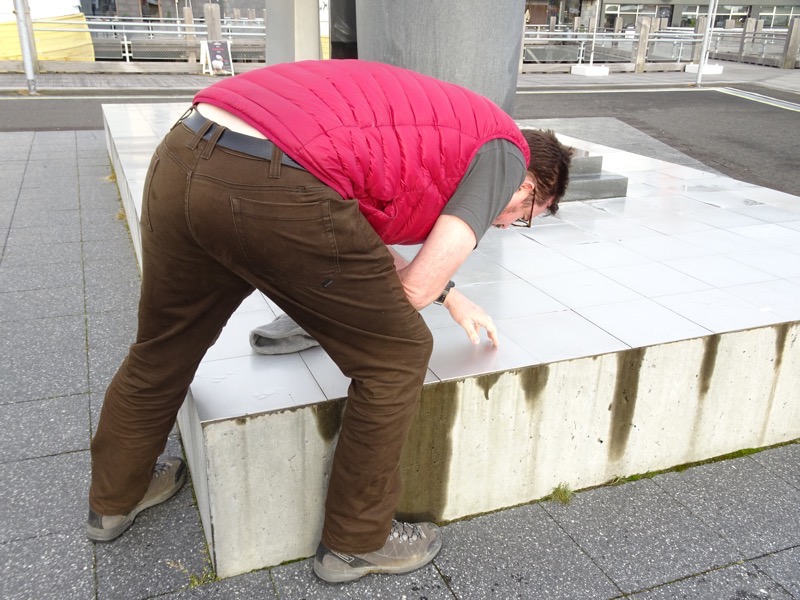 It’s not exactly easy to find – but there is an online map telling you roughly which area each name is located – and yes, we found Drakey’s avatar! It’s something to do with spaceships and wars in space or something. I dunno. #computergaming #notmycupoftea
It’s not exactly easy to find – but there is an online map telling you roughly which area each name is located – and yes, we found Drakey’s avatar! It’s something to do with spaceships and wars in space or something. I dunno. #computergaming #notmycupoftea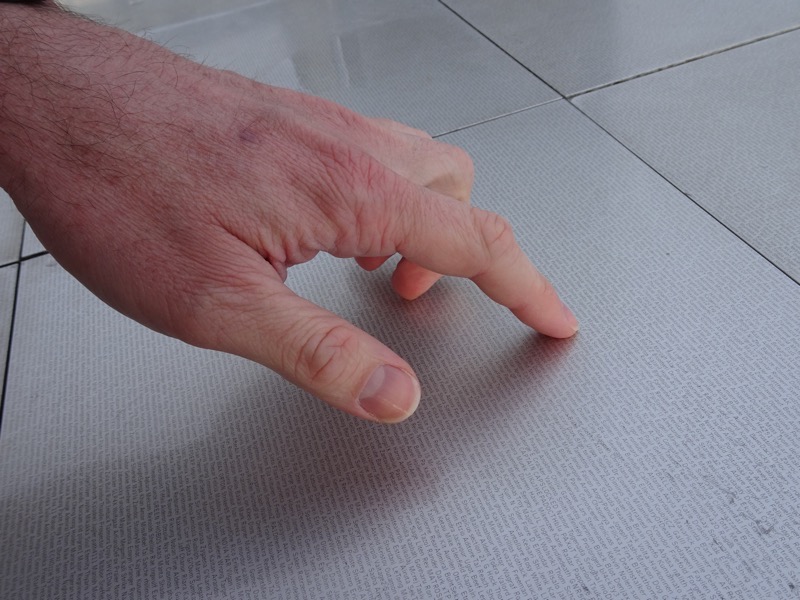 After ferreting out the Eve Online Monument, I convinced yale to swing past the Sun Voyager (again) so I could see it in the morning light. This is still such a stunning piece of art. I love it… so evocative, you can imagine it sailing out across the fjord. 🙂 This time fewer tourists were there hogging prime spots – but there’s always one jerk. This time a Kiwi, who stood around while his wife took his pictures and then he went wandering all around the sculpture – if it had been a car, he would have been kicking the tyres – while about 10 people are standing around shivering in the freezing cold waiting for him to fuck off out of our photographs! Urgh!
After ferreting out the Eve Online Monument, I convinced yale to swing past the Sun Voyager (again) so I could see it in the morning light. This is still such a stunning piece of art. I love it… so evocative, you can imagine it sailing out across the fjord. 🙂 This time fewer tourists were there hogging prime spots – but there’s always one jerk. This time a Kiwi, who stood around while his wife took his pictures and then he went wandering all around the sculpture – if it had been a car, he would have been kicking the tyres – while about 10 people are standing around shivering in the freezing cold waiting for him to fuck off out of our photographs! Urgh!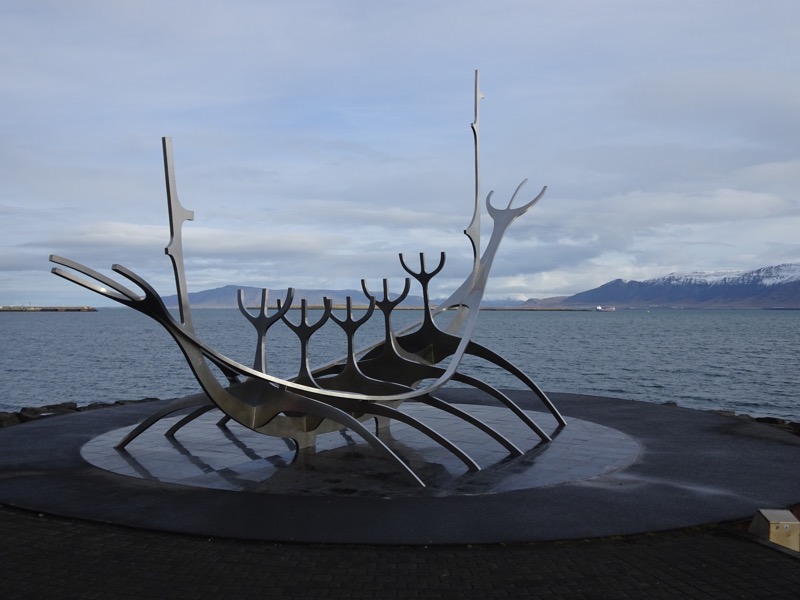 We were then heading indoors for a while (thankfully!) to the National History Museum, which is quite an impressive building in its own right.
We were then heading indoors for a while (thankfully!) to the National History Museum, which is quite an impressive building in its own right.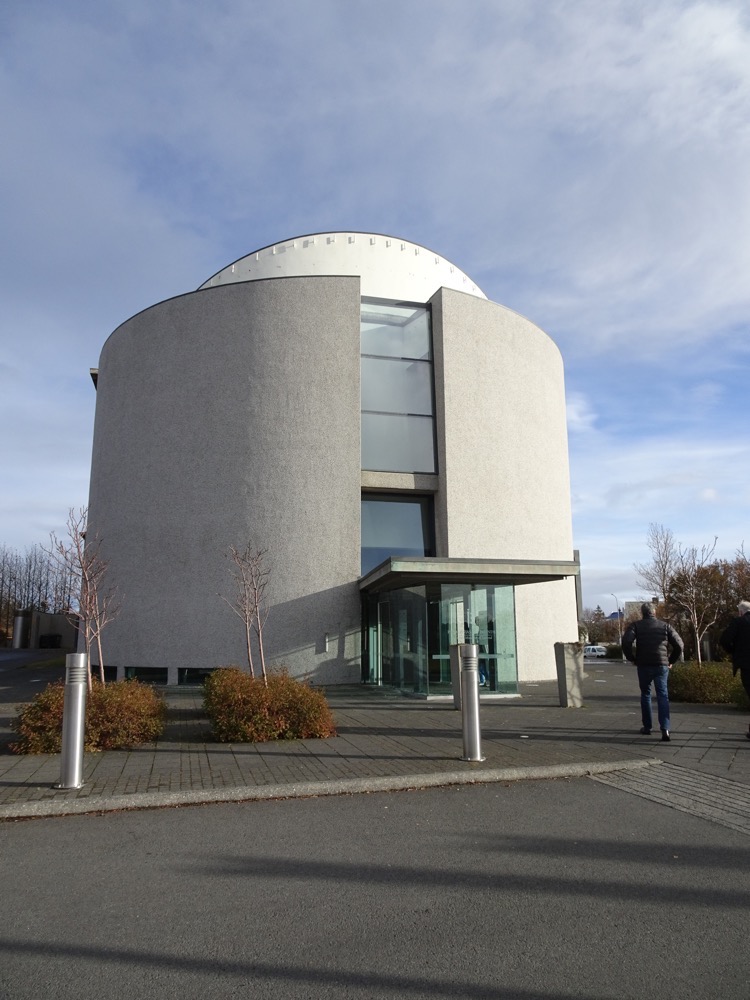

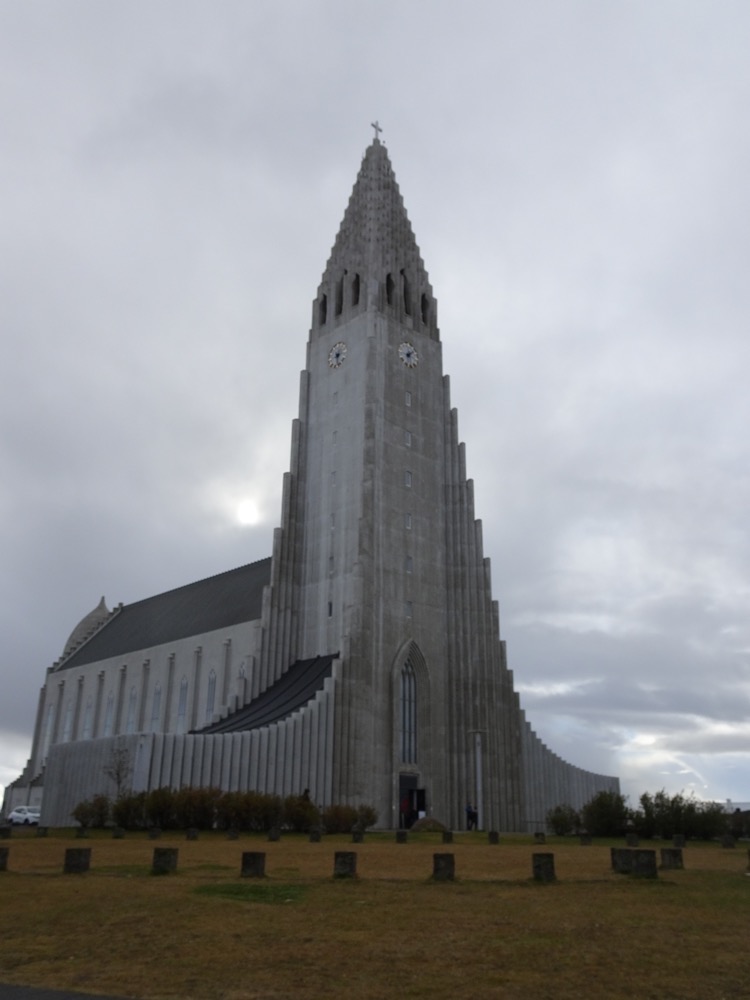
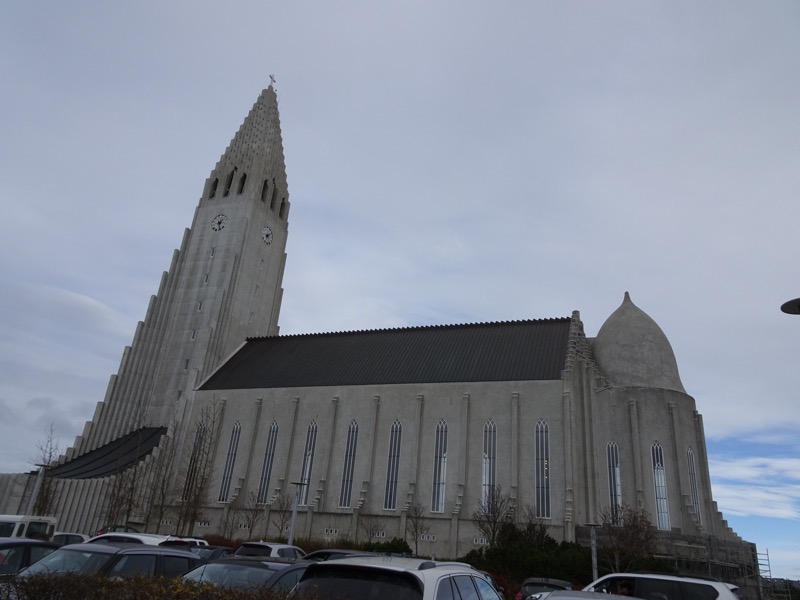
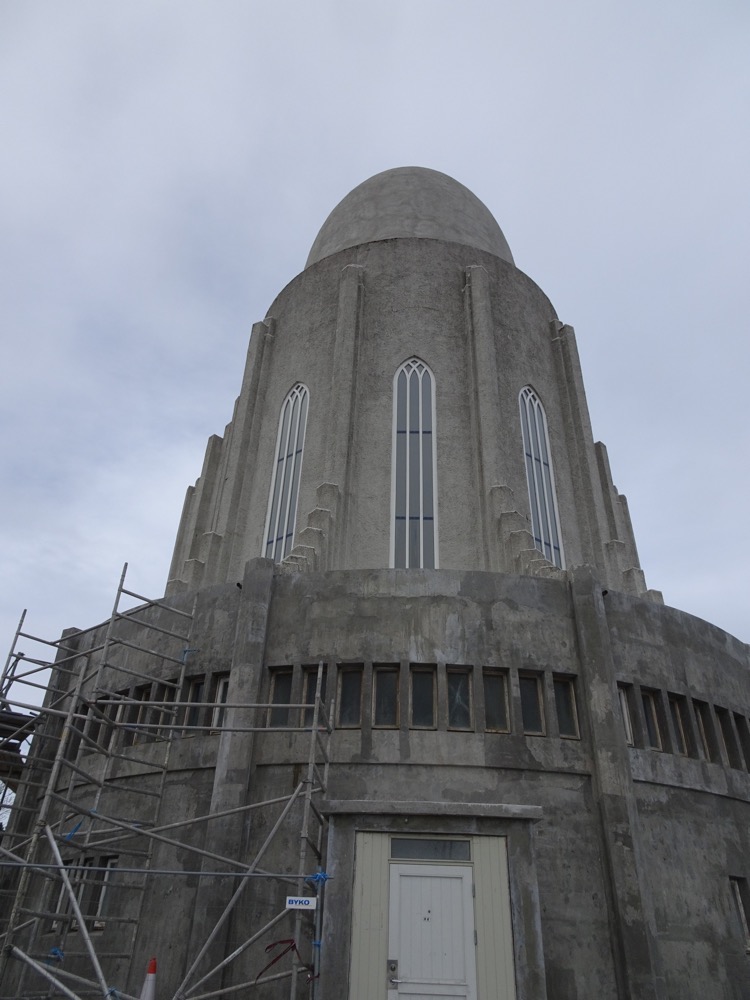 We did a little poke around the shops here a little – I stooped to buying a t-shirt… which in my defence was only marginally more costly than a tea towel at the end of summer sales. 🙂
We did a little poke around the shops here a little – I stooped to buying a t-shirt… which in my defence was only marginally more costly than a tea towel at the end of summer sales. 🙂 So, lunchtime rolls around and we find ourselves hunting for the Bæjarins Bbeztu Pylsur stand, which quite literally means in English: ‘The Best Hot Dog in Town’. We find the little food truck exactly where is supposed to be not far from the Reykjavik harbour and to my surprise, it is surrounded by people standing around in the cold, which is about 3°C but with the wind feels about -1°, eating hot dogs! I’m not so sure about this al fresco dining thing in this weather, but we dutifully line up for a hot dog.
So, lunchtime rolls around and we find ourselves hunting for the Bæjarins Bbeztu Pylsur stand, which quite literally means in English: ‘The Best Hot Dog in Town’. We find the little food truck exactly where is supposed to be not far from the Reykjavik harbour and to my surprise, it is surrounded by people standing around in the cold, which is about 3°C but with the wind feels about -1°, eating hot dogs! I’m not so sure about this al fresco dining thing in this weather, but we dutifully line up for a hot dog.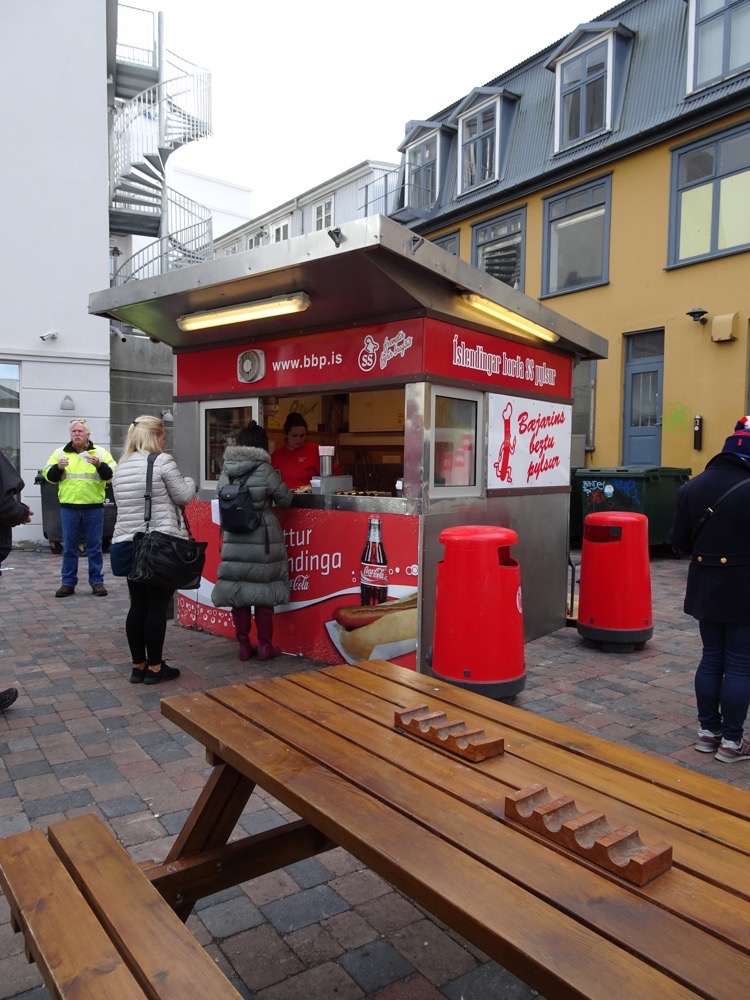 In August 2006, The Guardian newspaper selected Bæjarins Beztu as the Best Hot Dog Stand in Europe – big call. Since then plenty of famous people have come along and tried the now world renown, Bæjarins Beztu hotdogs. Among them are former US President, Bill Clinton, and even cooler, James Hetfield of Metallica fame… and now borys and yale join this illustrious companie of people who have stood around eating hot dogs in sub-zero temperatures.
In August 2006, The Guardian newspaper selected Bæjarins Beztu as the Best Hot Dog Stand in Europe – big call. Since then plenty of famous people have come along and tried the now world renown, Bæjarins Beztu hotdogs. Among them are former US President, Bill Clinton, and even cooler, James Hetfield of Metallica fame… and now borys and yale join this illustrious companie of people who have stood around eating hot dogs in sub-zero temperatures.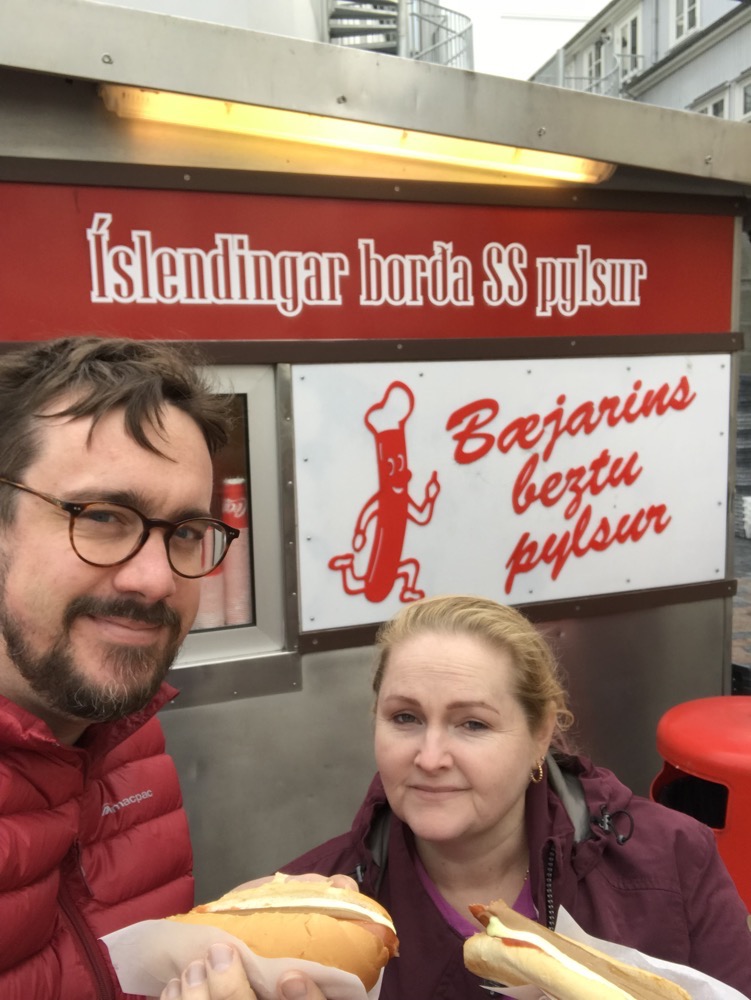 It was so cold, but the hot dogs were tasty enough, I guess.
It was so cold, but the hot dogs were tasty enough, I guess.
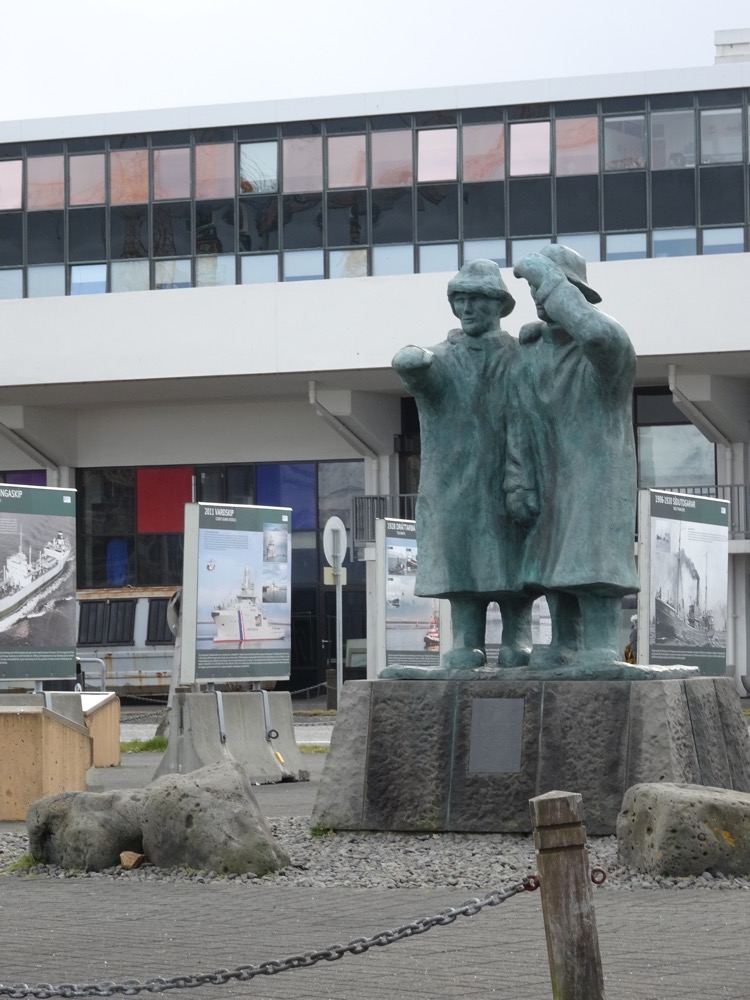

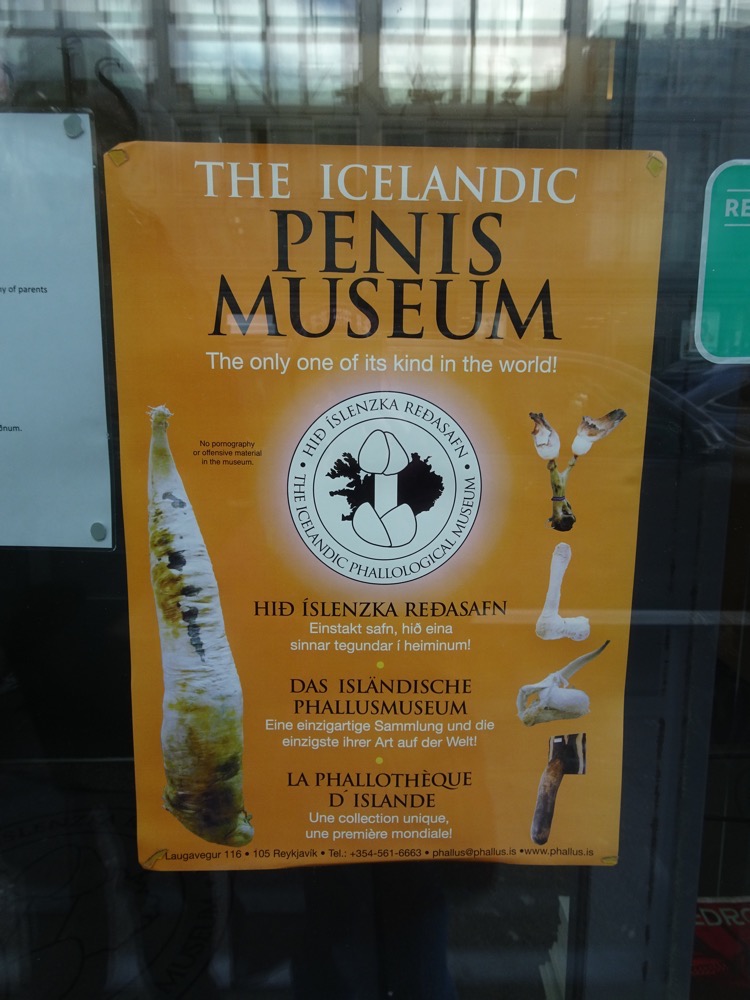 The museum also houses many other phallic items and artworks. Longtime poet and environmental activist, Danish Sculptor, Pjarne P Ejass (1945 – ) created this “Viagra Phallus” in the form of a scorn pole. The work displays the artist’s contempt for all things that deviate from the normal course of nature, and the work is intended to convey his statement, “Stop Fiddling with Nature,” The artist donated the work to the Icelandic Phallological Museum in the summer of 2004 and it was erected in May 2005.
The museum also houses many other phallic items and artworks. Longtime poet and environmental activist, Danish Sculptor, Pjarne P Ejass (1945 – ) created this “Viagra Phallus” in the form of a scorn pole. The work displays the artist’s contempt for all things that deviate from the normal course of nature, and the work is intended to convey his statement, “Stop Fiddling with Nature,” The artist donated the work to the Icelandic Phallological Museum in the summer of 2004 and it was erected in May 2005.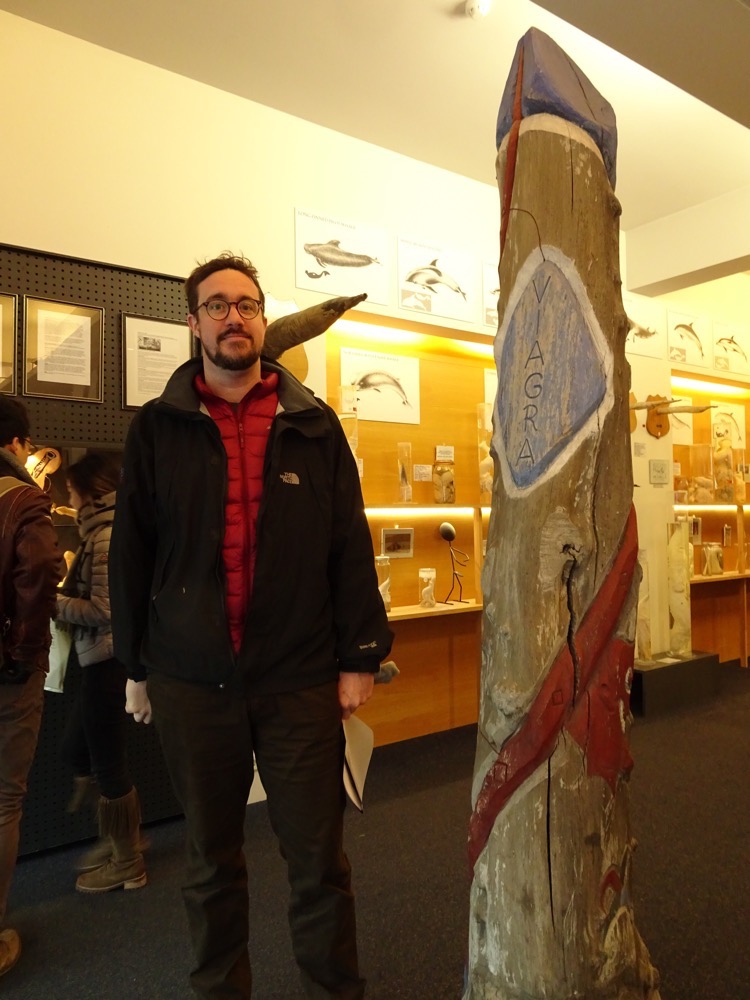 A rather painful looking toothpick holder:
A rather painful looking toothpick holder: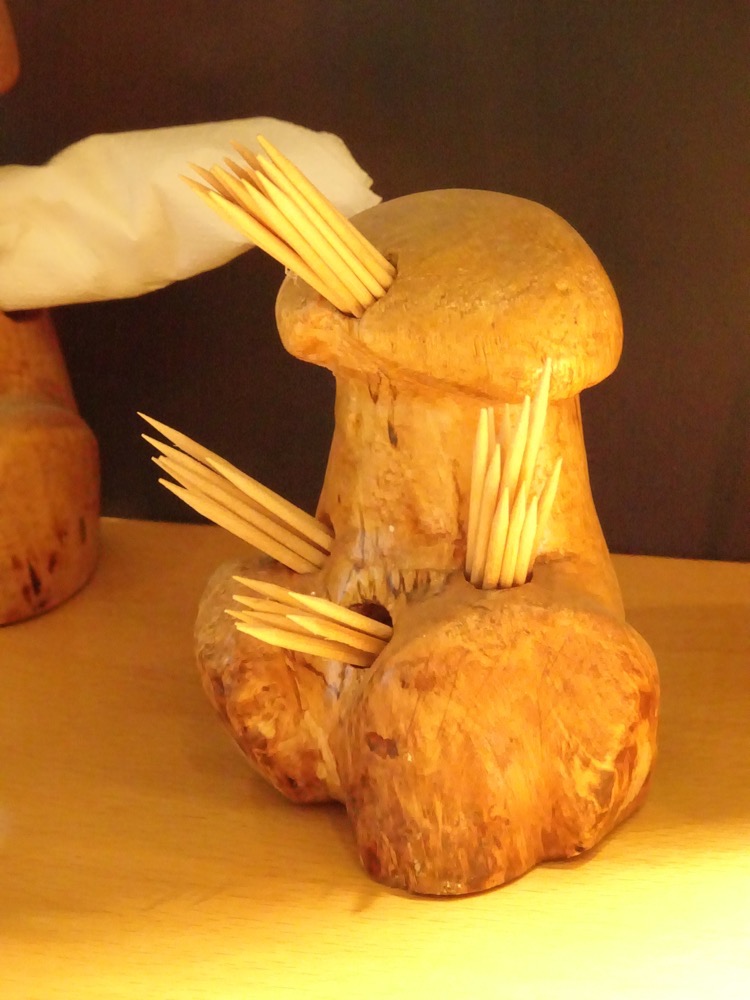 Dried sperm whale penis:
Dried sperm whale penis: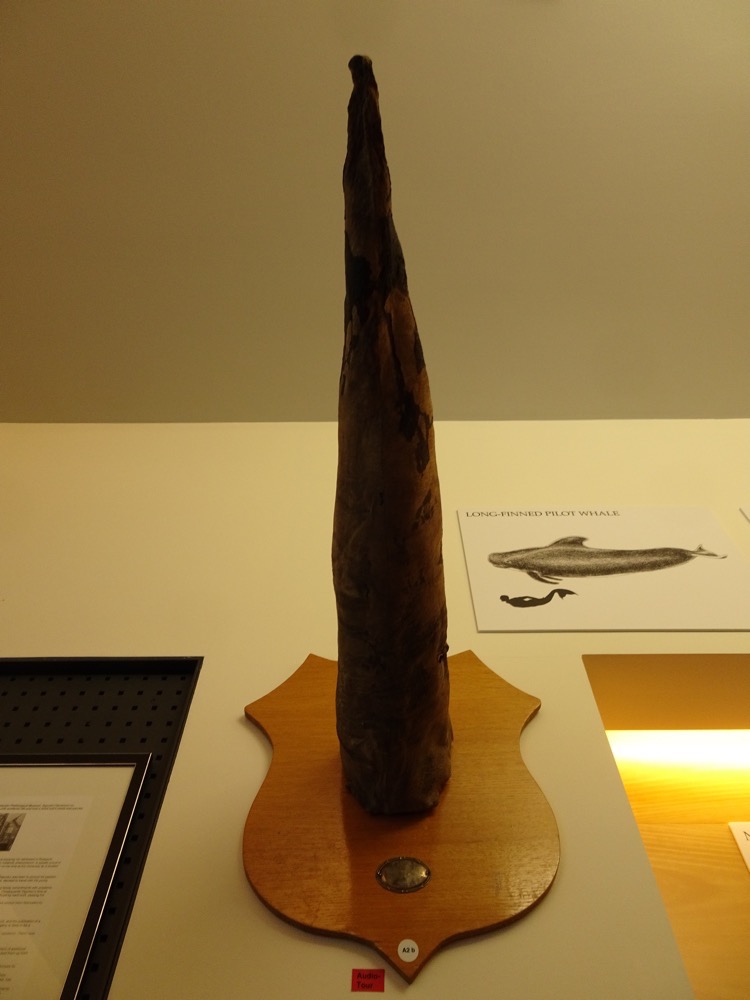 Preserved pilot whale penis:
Preserved pilot whale penis: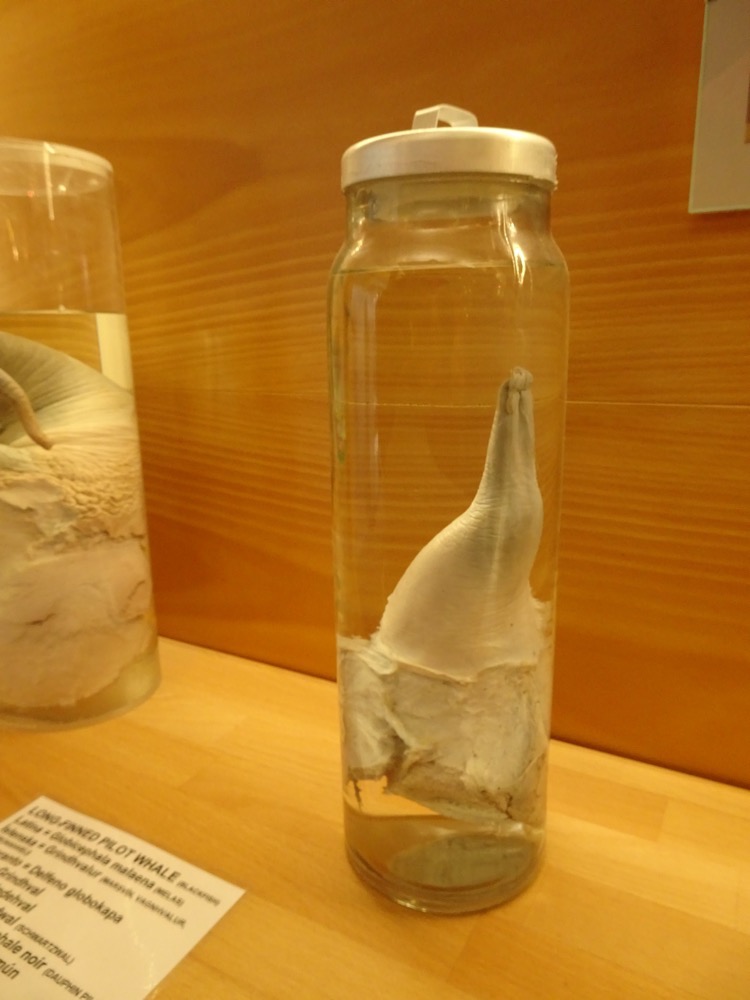 Various penises belonging to different dolphins and porpoises:
Various penises belonging to different dolphins and porpoises: And this magnificent specimen – is a Narwhal! Narwhal! Living in the ocean…!
And this magnificent specimen – is a Narwhal! Narwhal! Living in the ocean…!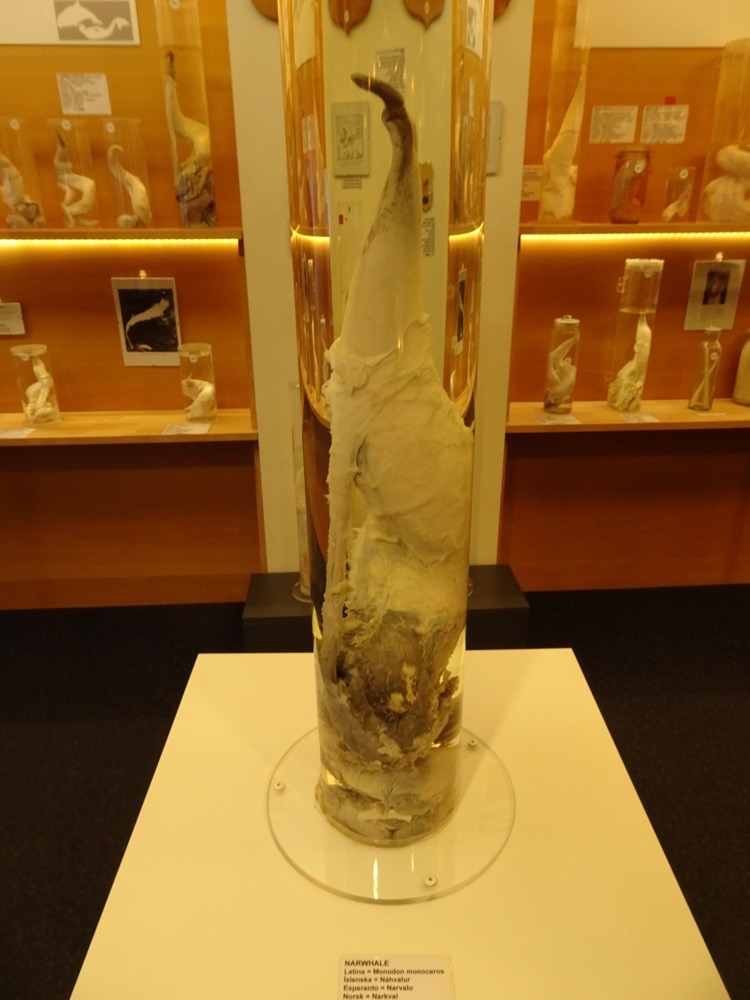 African bull elephant:
African bull elephant: An eland, a dromedary and giraffe penises:
An eland, a dromedary and giraffe penises: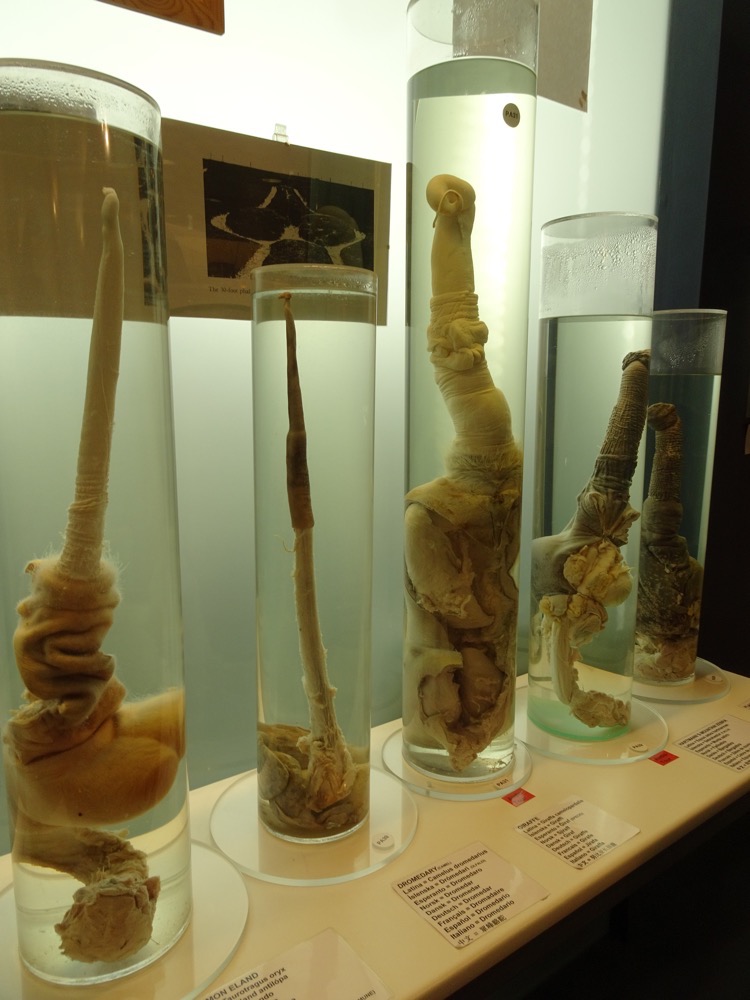 Killer whale penis: yale for scale
Killer whale penis: yale for scale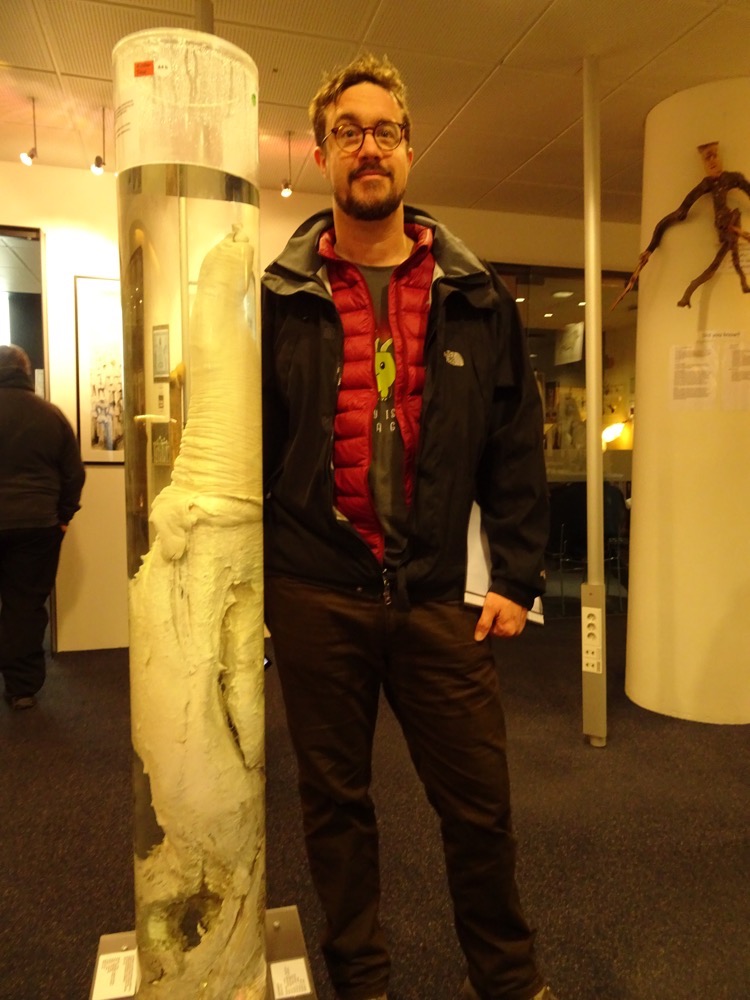 An artwork based on the penises of the National Icelandic Handball Team that represented Iceland at the Bejing Olympics in 2008. 😮
An artwork based on the penises of the National Icelandic Handball Team that represented Iceland at the Bejing Olympics in 2008. 😮  Freyr – Viking God of Fertility:
Freyr – Viking God of Fertility: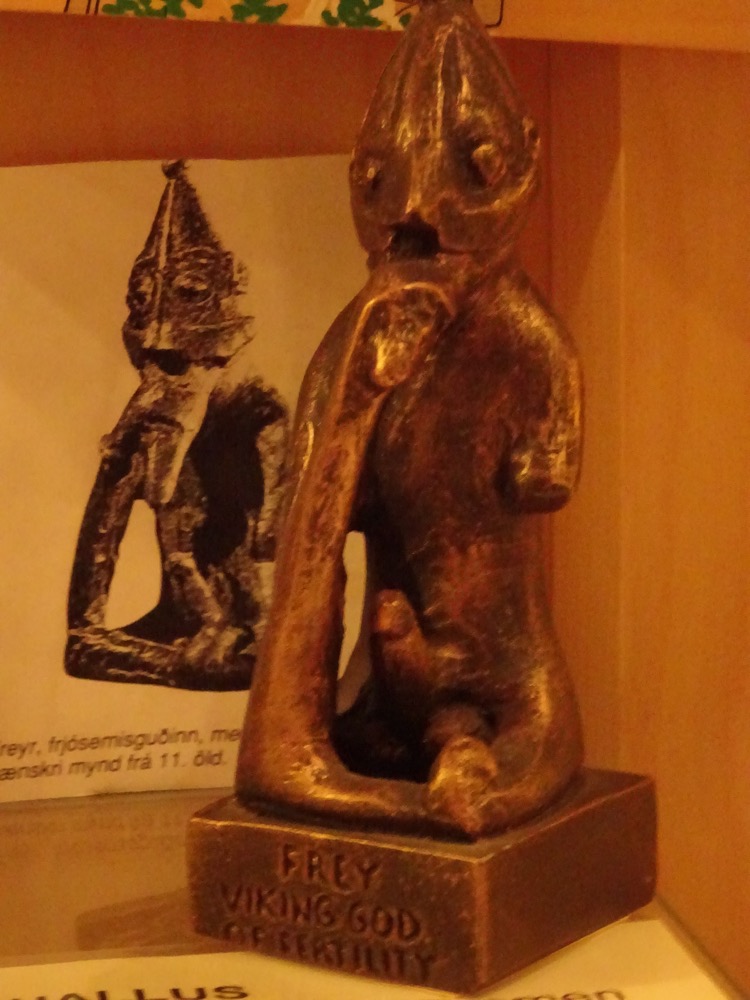
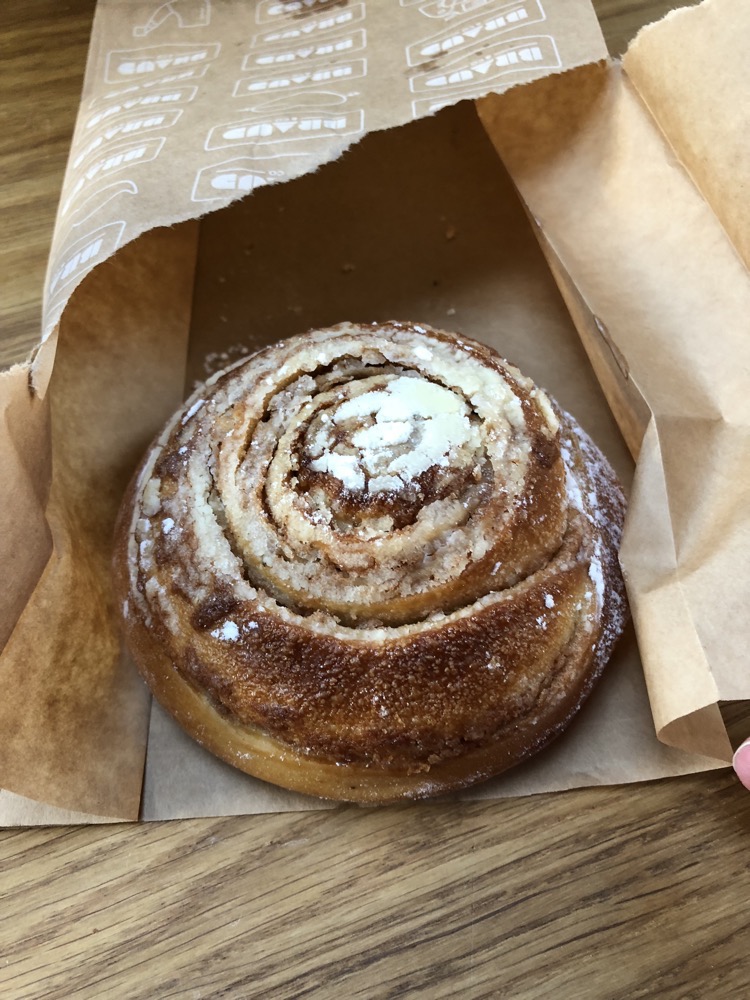 From here we did what was probably the first bit of real touristy shopping we have done since we arrive in Iceland. We wandered down the main shopping street which pretty much leads from the Hallgrímskirkja church down towards the waterfront esplanade. I got to stop in the Tuilipop shop this time, which was closed when I was here last – luckily their plush Freds are not very soft or I would have found myself buying a rather expensive and unnecessary plush toy to take home!
From here we did what was probably the first bit of real touristy shopping we have done since we arrive in Iceland. We wandered down the main shopping street which pretty much leads from the Hallgrímskirkja church down towards the waterfront esplanade. I got to stop in the Tuilipop shop this time, which was closed when I was here last – luckily their plush Freds are not very soft or I would have found myself buying a rather expensive and unnecessary plush toy to take home! 
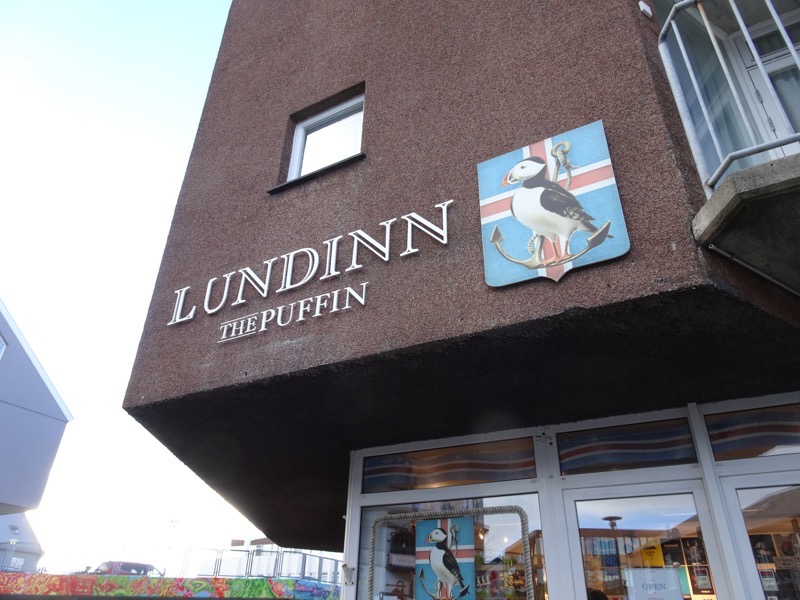
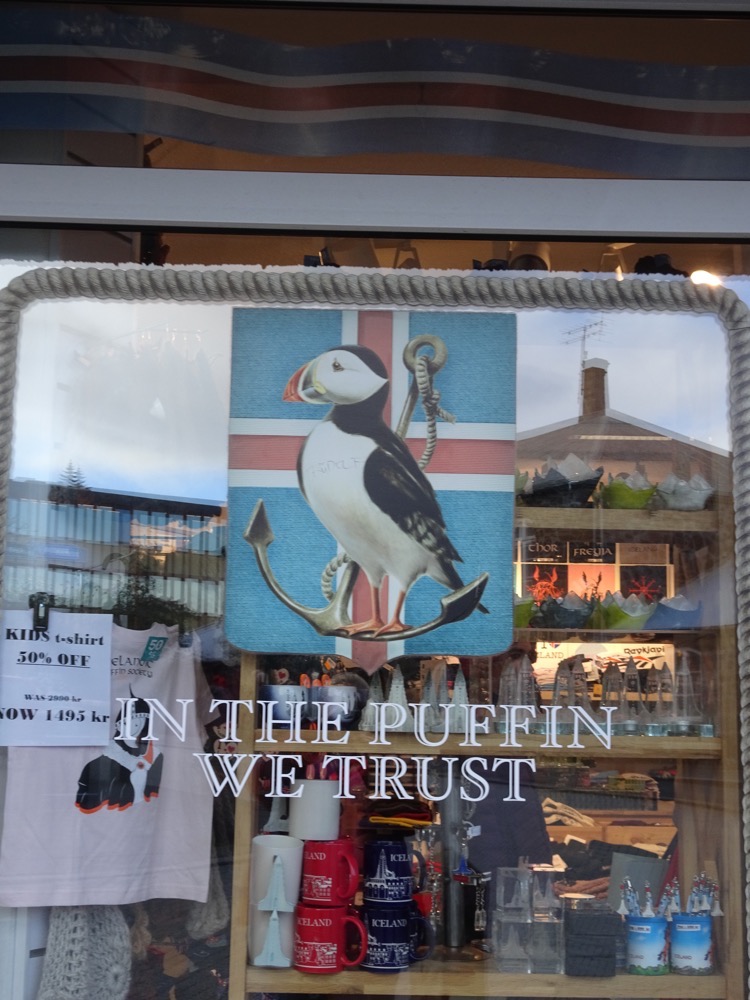 There is so much shit here with puffins on it – and because I have been here three times now and have yet to see a single goddamn puffin that isn’t stuffed (like the AUD$450 ones in the top left hand picture!), I flatly refuse to buy so much as a sticker with a puffin on it. I think the puffins here are like the trolls – just some sort of myth.
There is so much shit here with puffins on it – and because I have been here three times now and have yet to see a single goddamn puffin that isn’t stuffed (like the AUD$450 ones in the top left hand picture!), I flatly refuse to buy so much as a sticker with a puffin on it. I think the puffins here are like the trolls – just some sort of myth.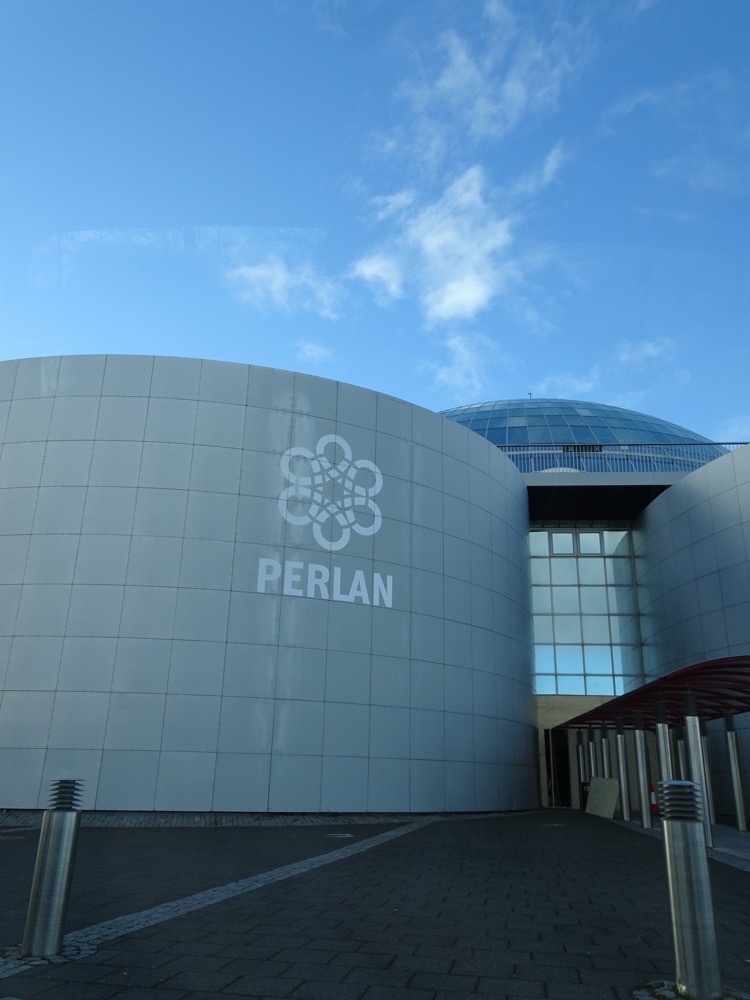
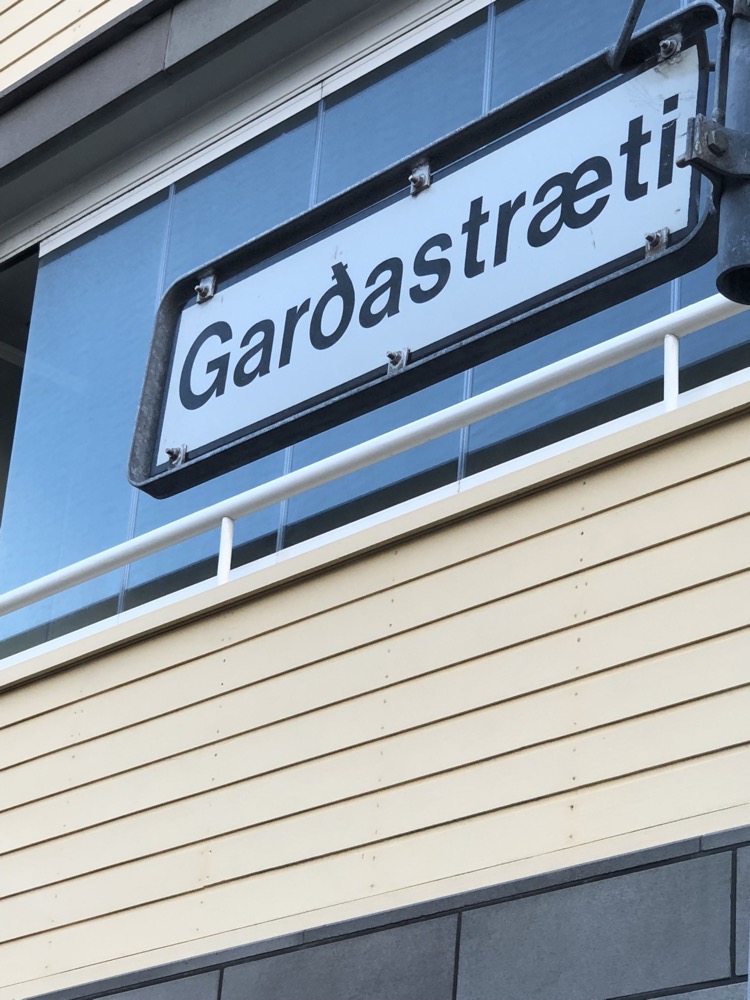 For our last night in Iceland, we thought we’d go out for one final nice, but predictably, overpriced meal. We ended up at the Geysir Bistro near Ingólfur Square. It was a more relaxed environment that the last two restaurants we went to and the menu looked likewise slightly more modest.
For our last night in Iceland, we thought we’d go out for one final nice, but predictably, overpriced meal. We ended up at the Geysir Bistro near Ingólfur Square. It was a more relaxed environment that the last two restaurants we went to and the menu looked likewise slightly more modest.
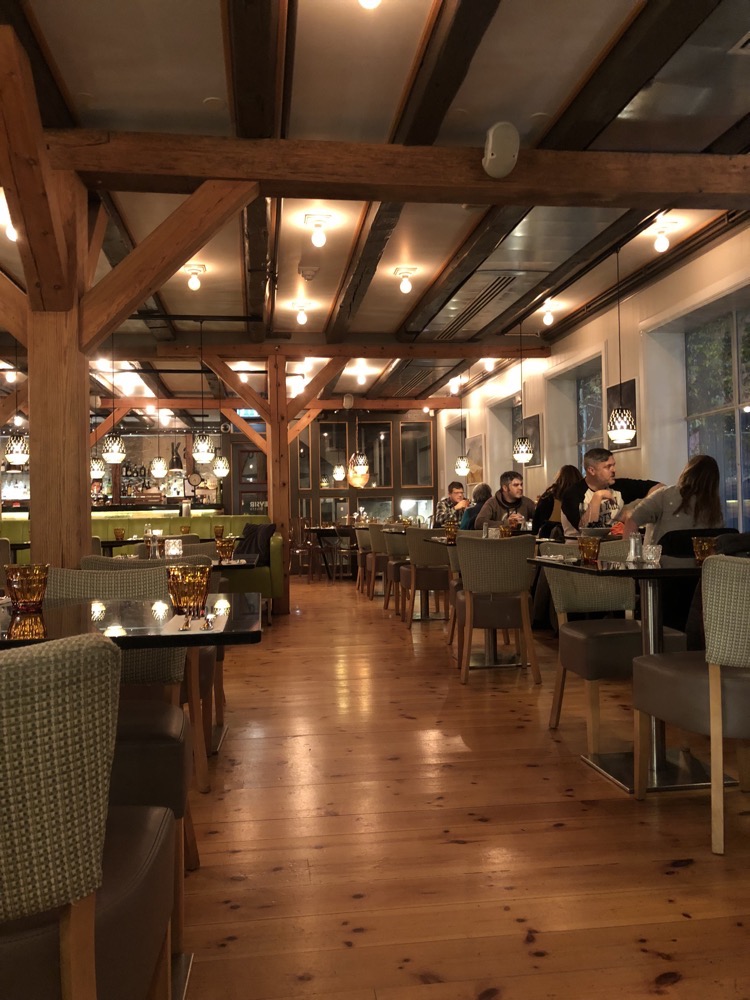 But the food – still fancy AF.
But the food – still fancy AF. 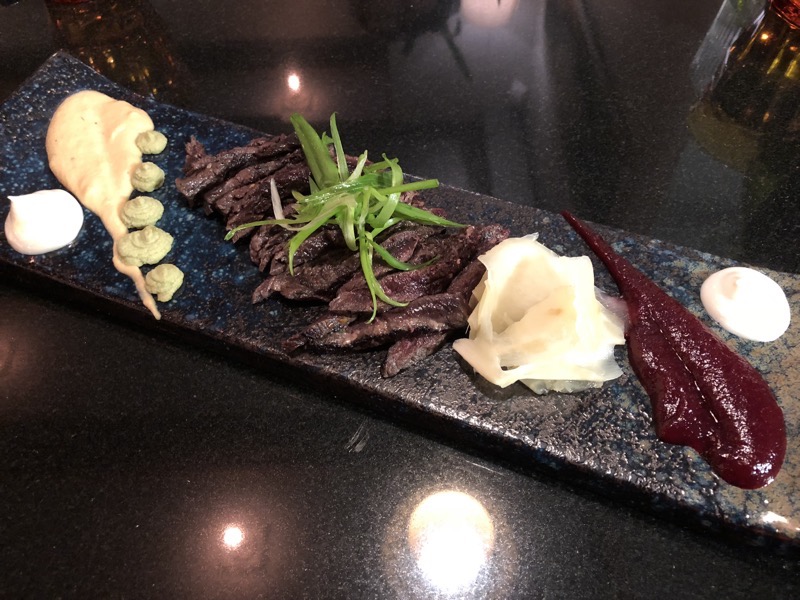
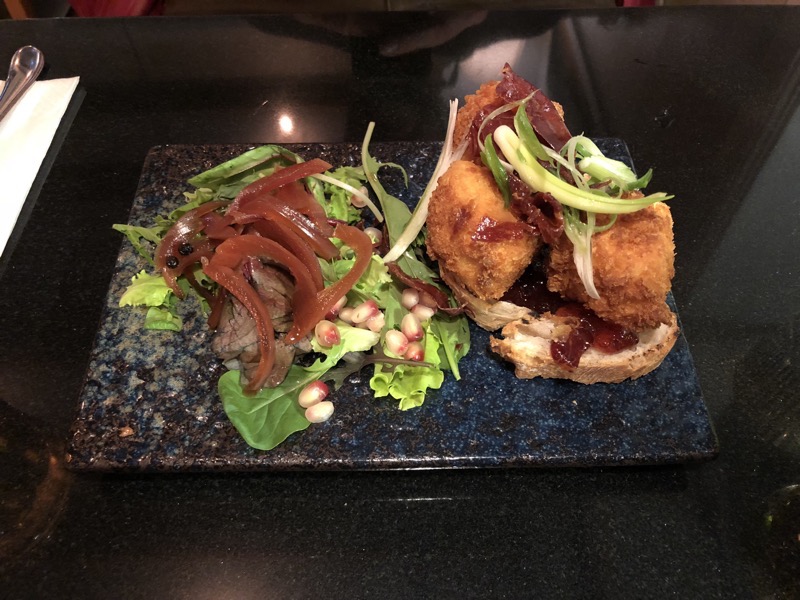
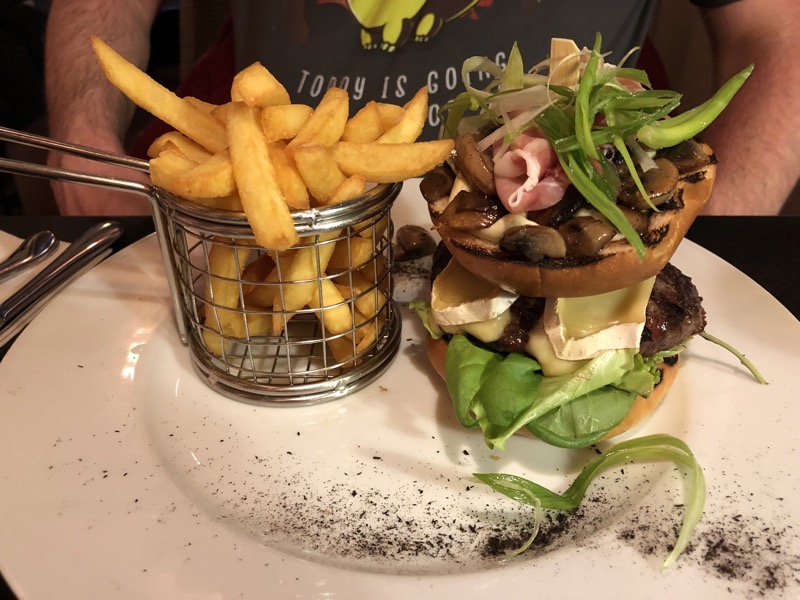
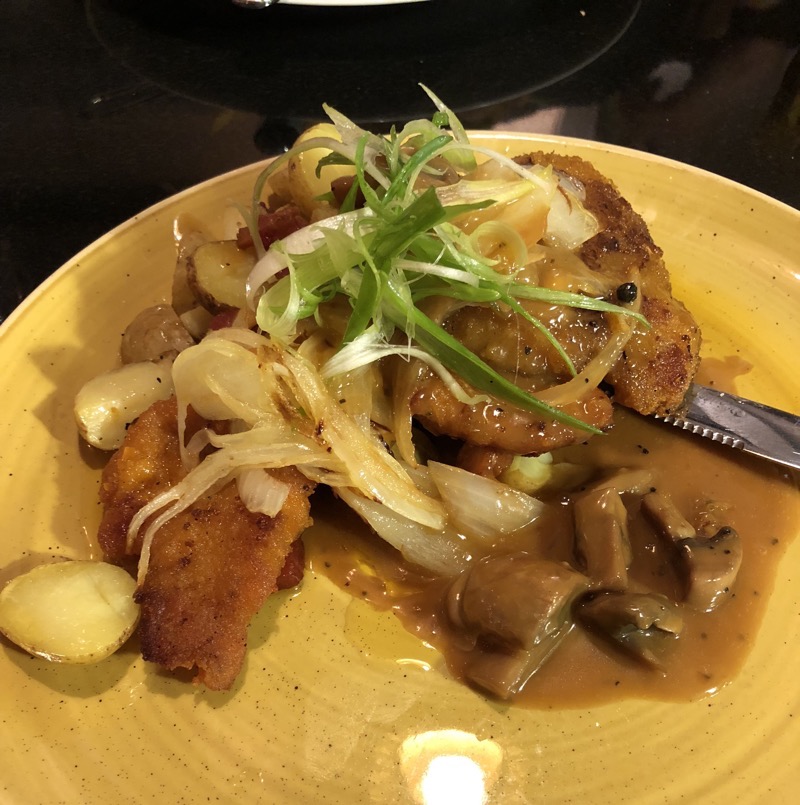 We toasted our last night with some Brennavin and congratulated ourselves on having only had one shit fight in two weeks in close quarters! 😛 It’s bound to happen – travelling with people is one way to really test the friendship/relationship! All your best and all your worst will eventually come out. 🙂
We toasted our last night with some Brennavin and congratulated ourselves on having only had one shit fight in two weeks in close quarters! 😛 It’s bound to happen – travelling with people is one way to really test the friendship/relationship! All your best and all your worst will eventually come out. 🙂 